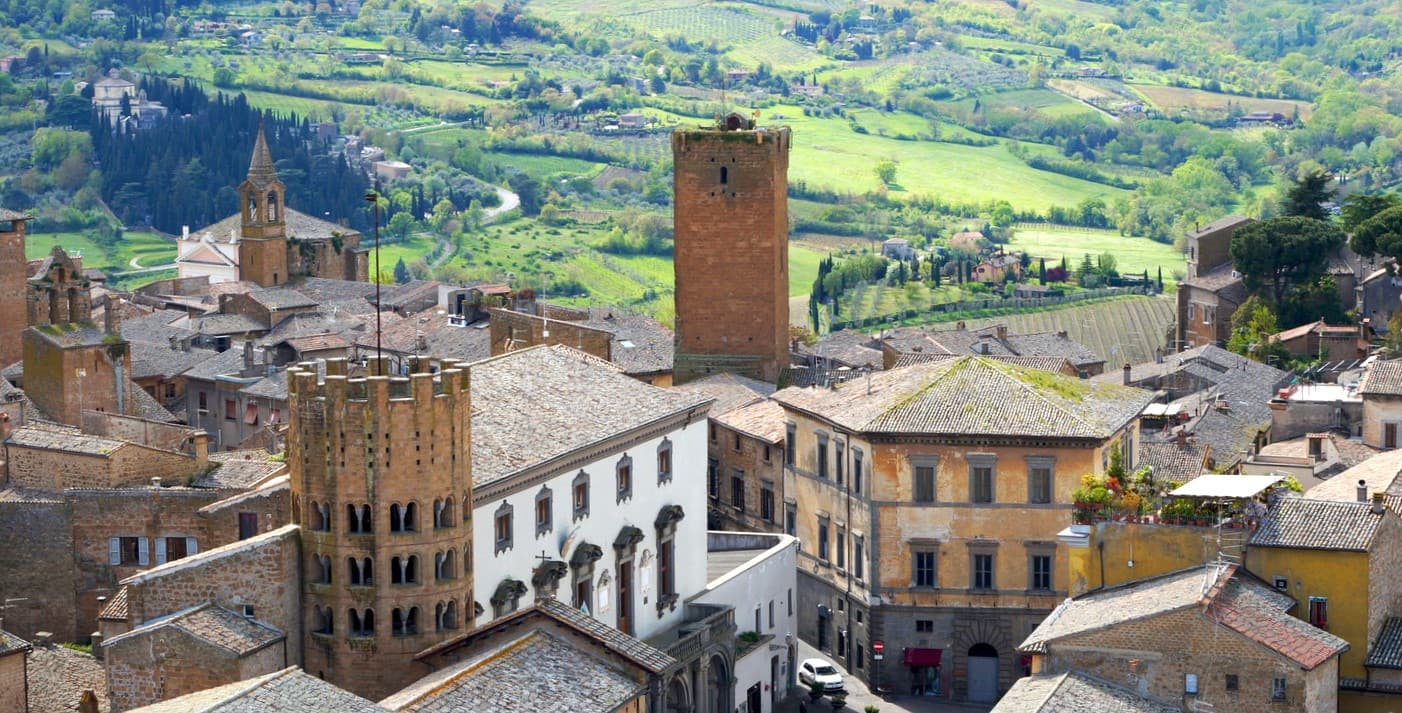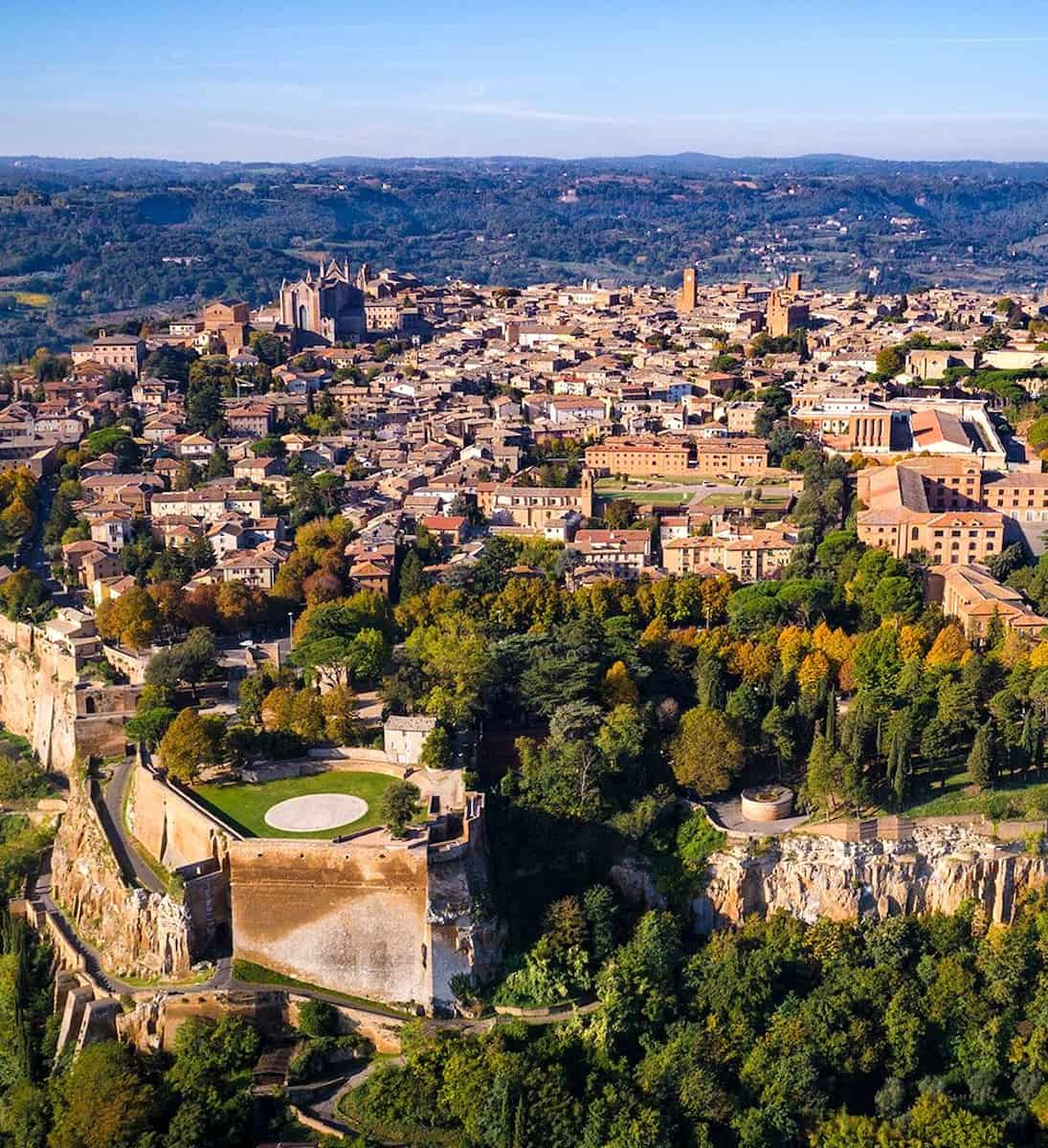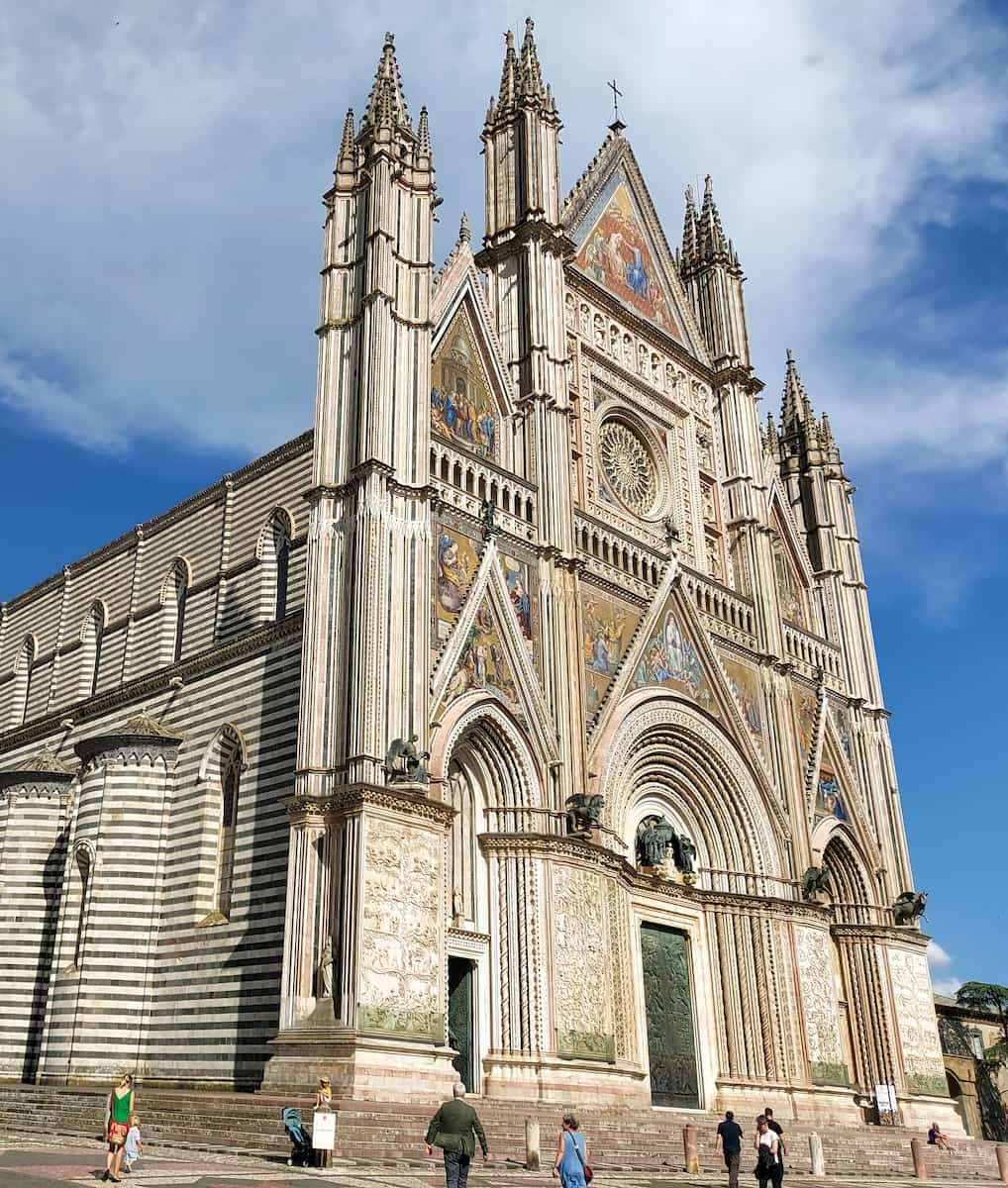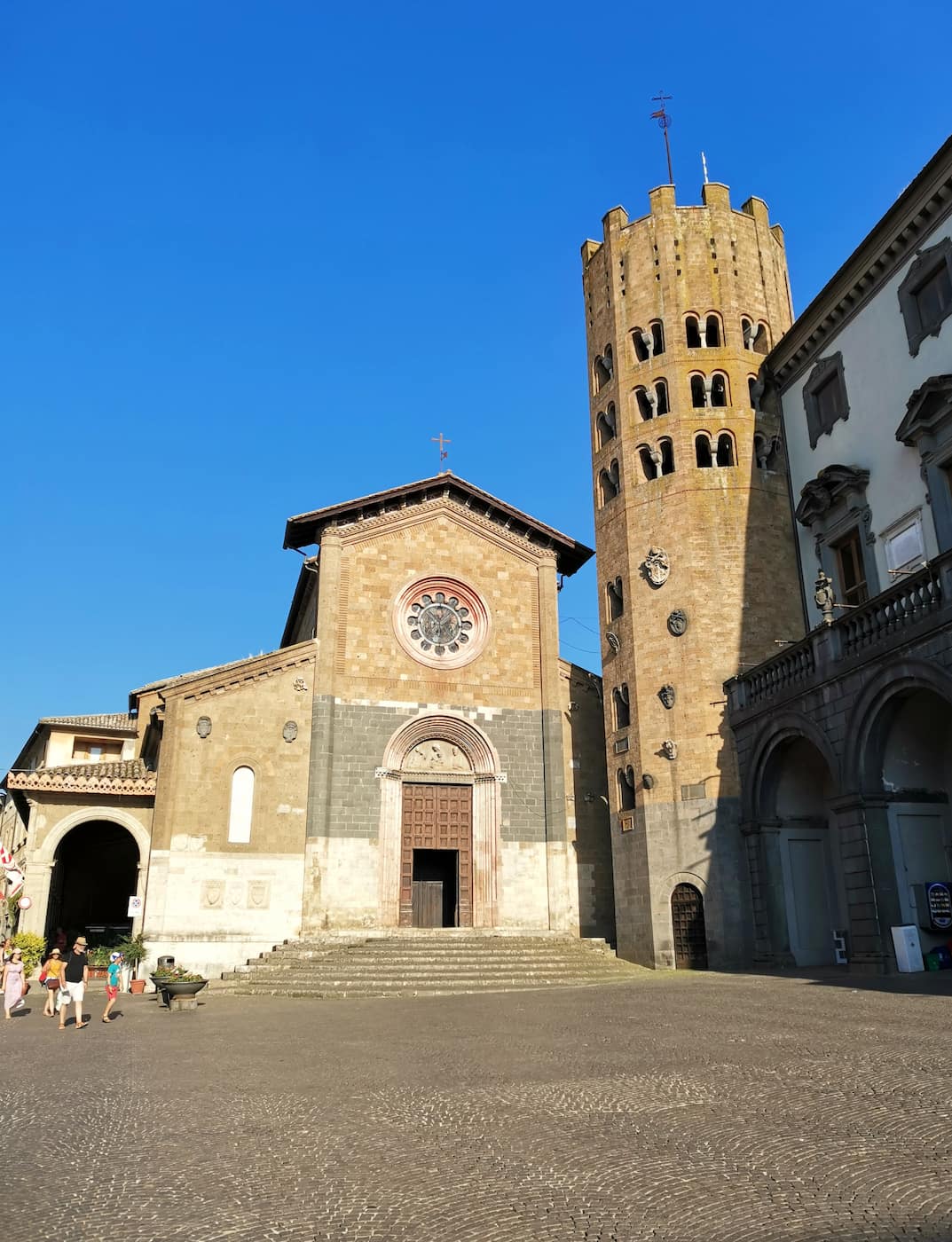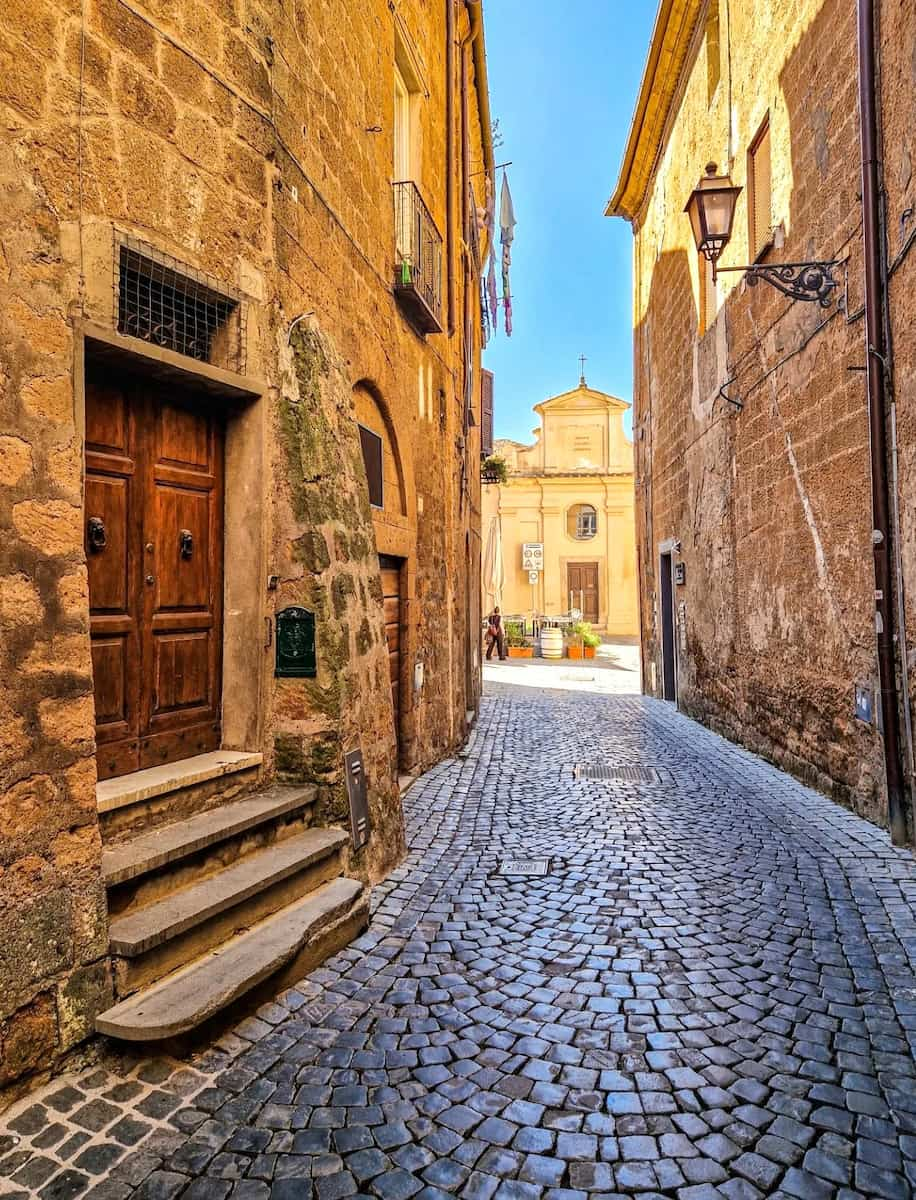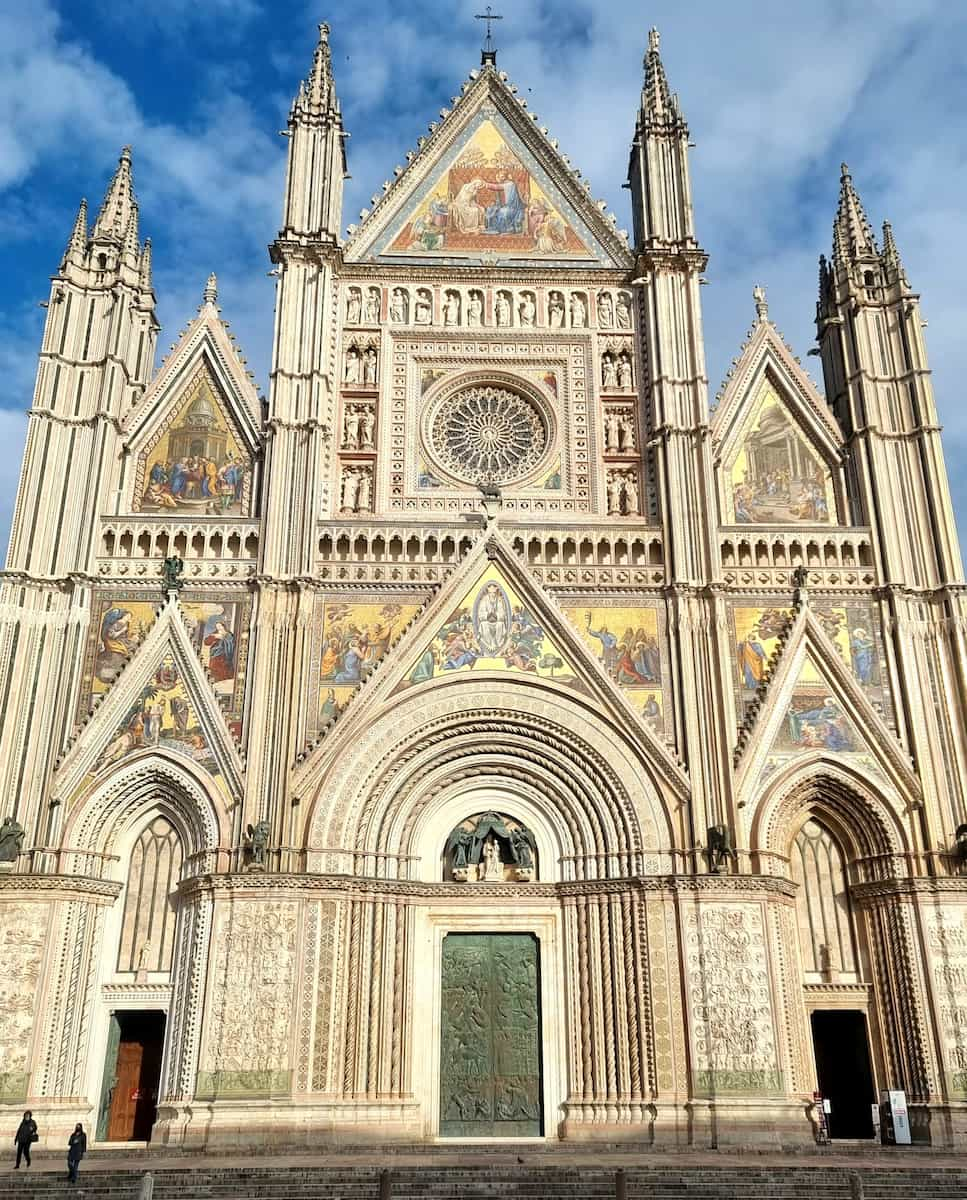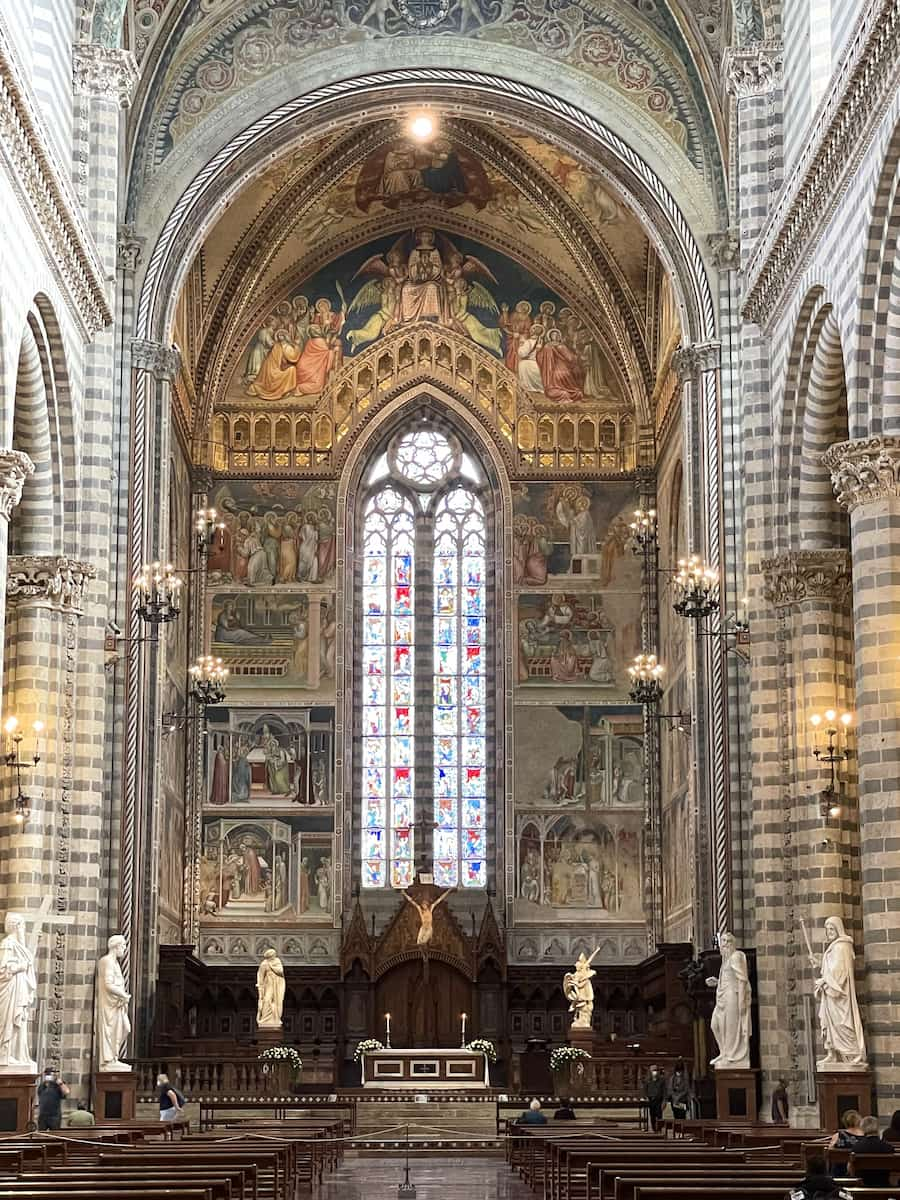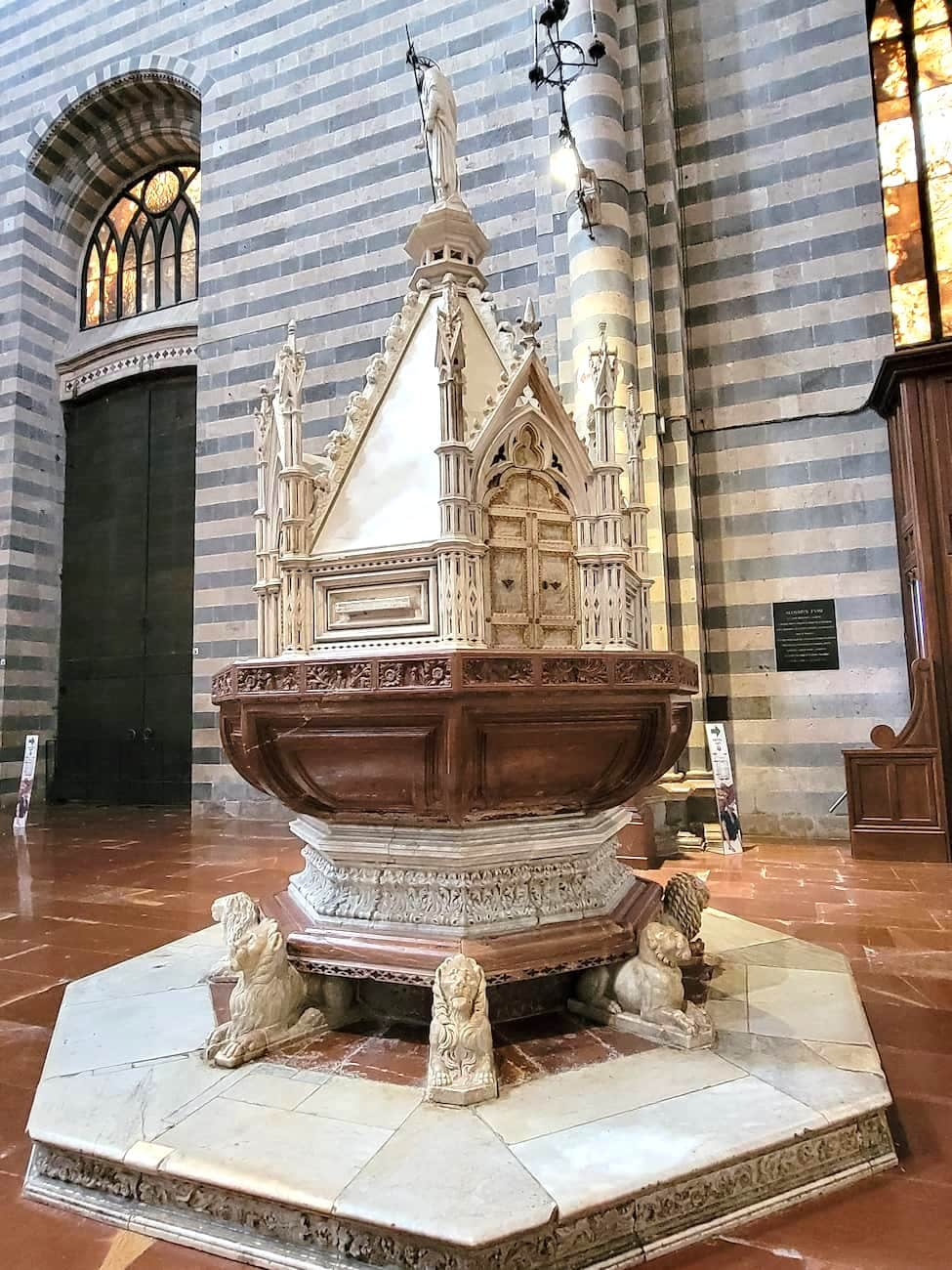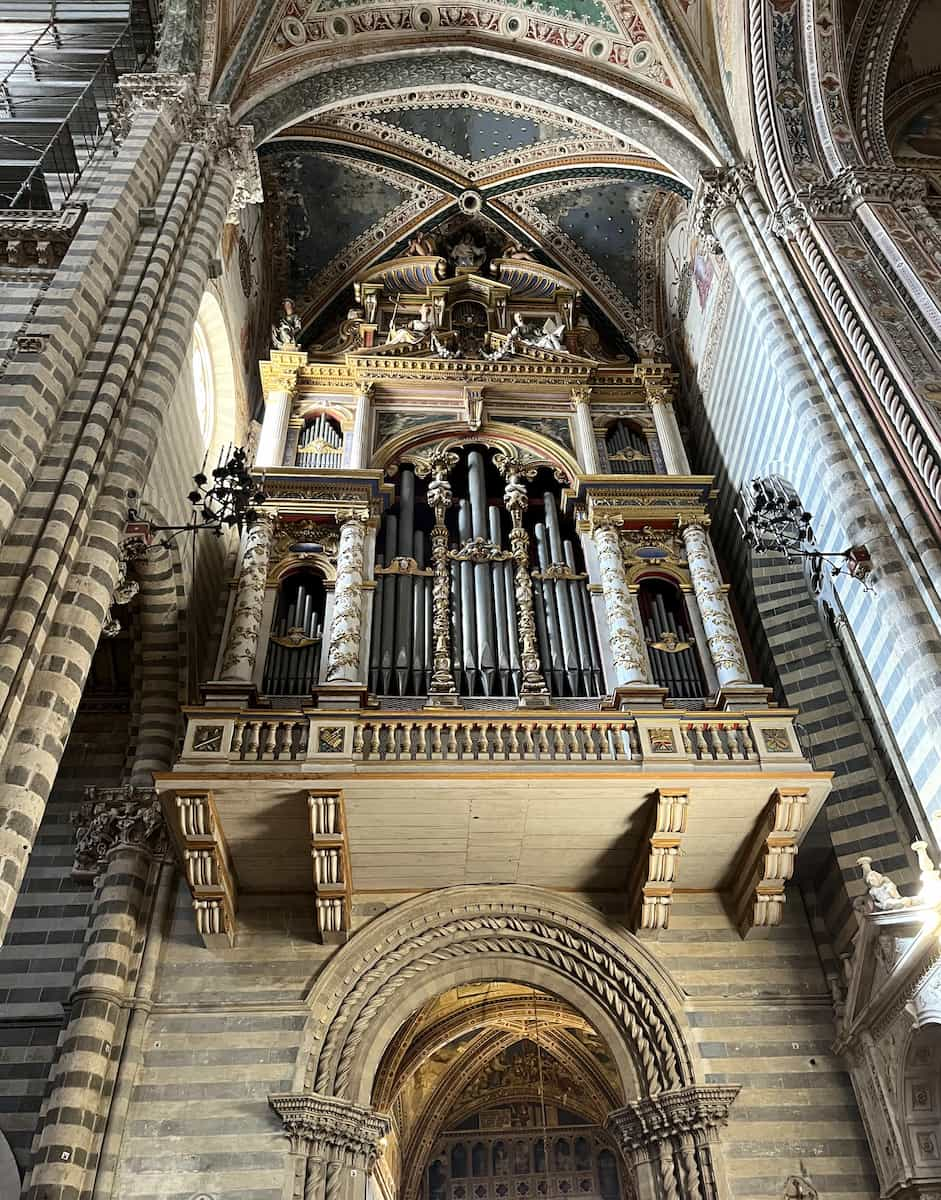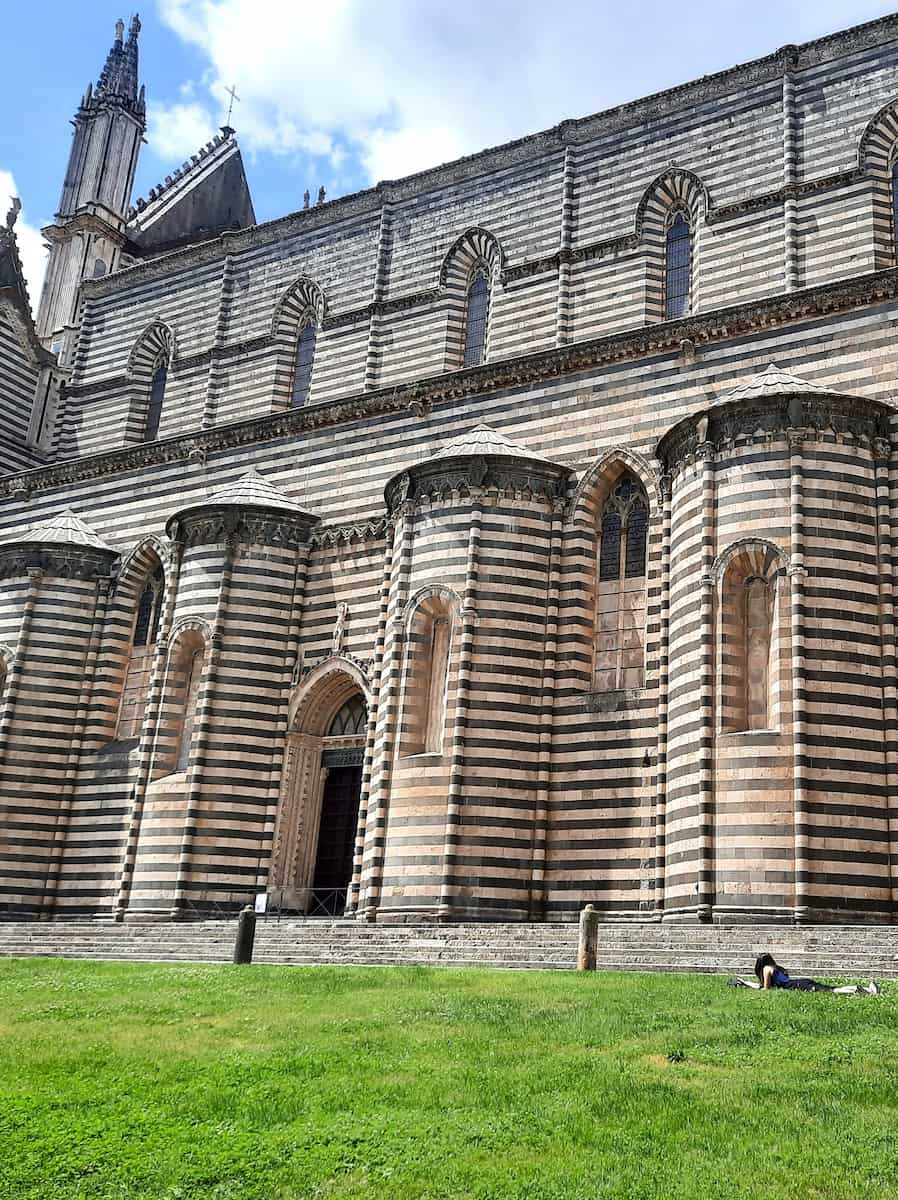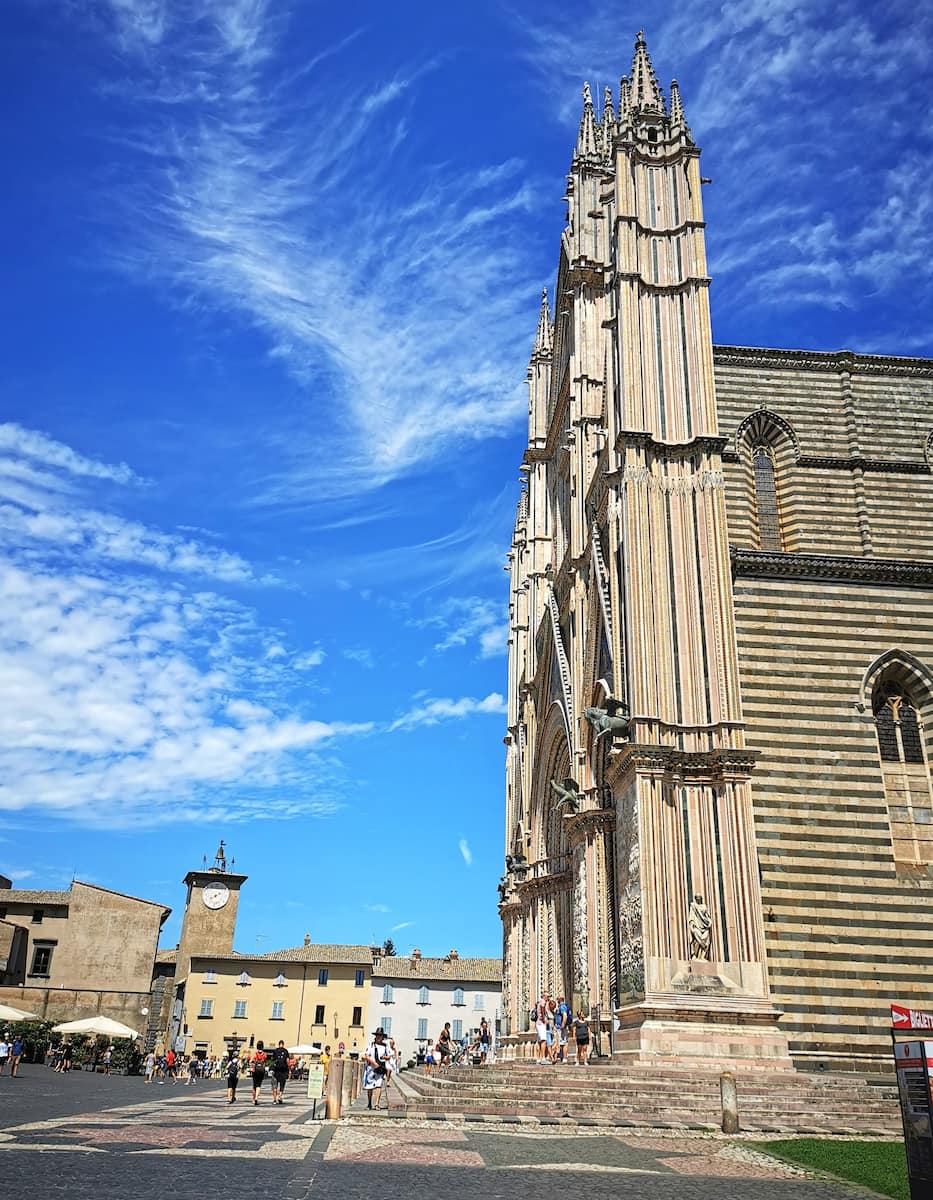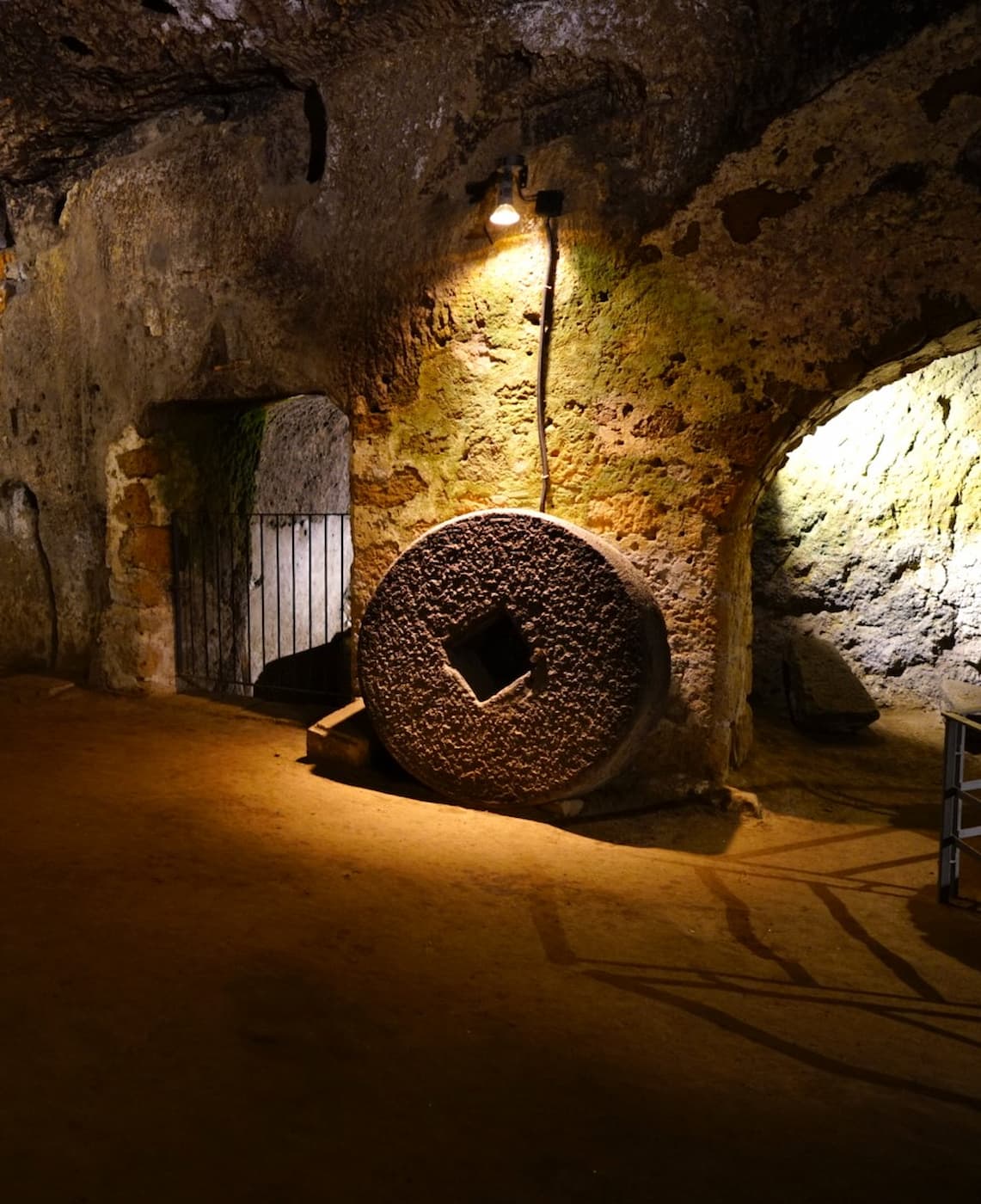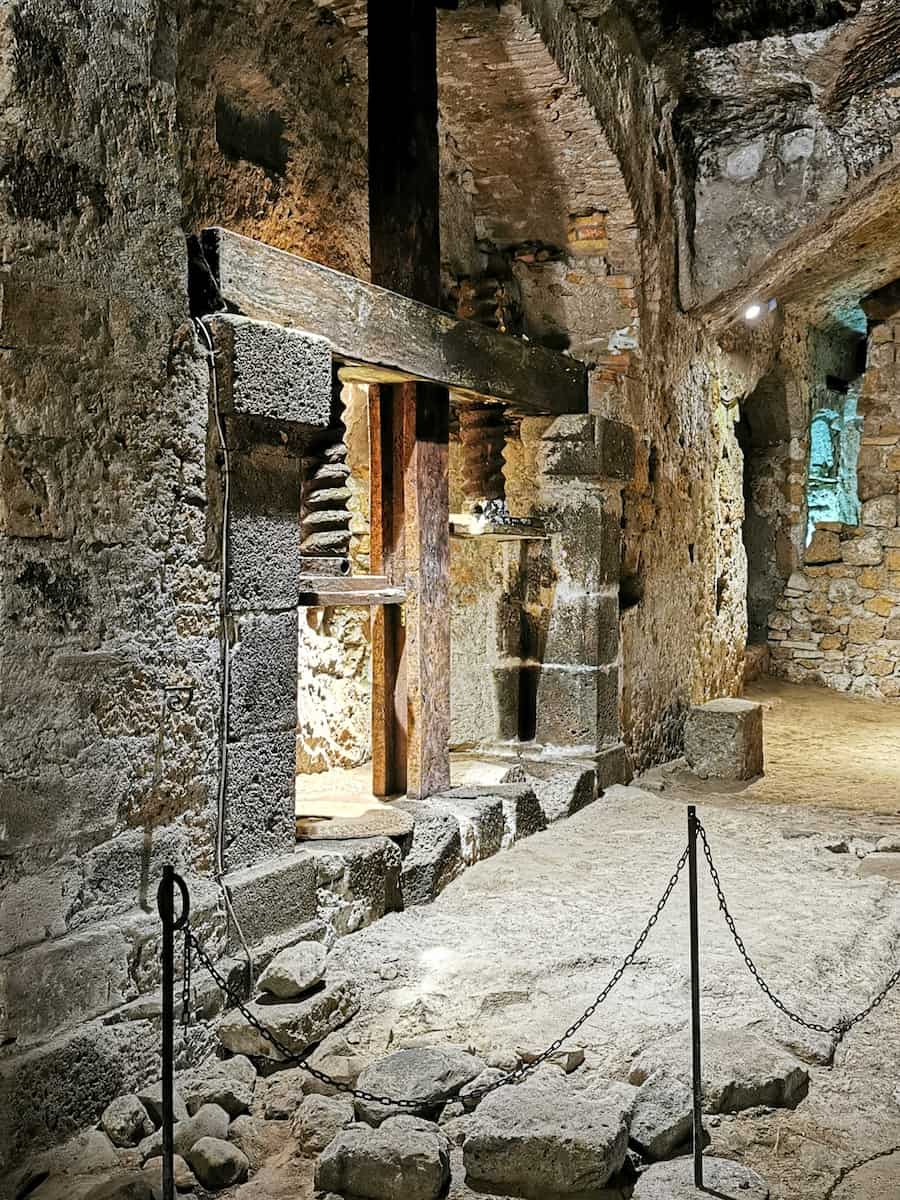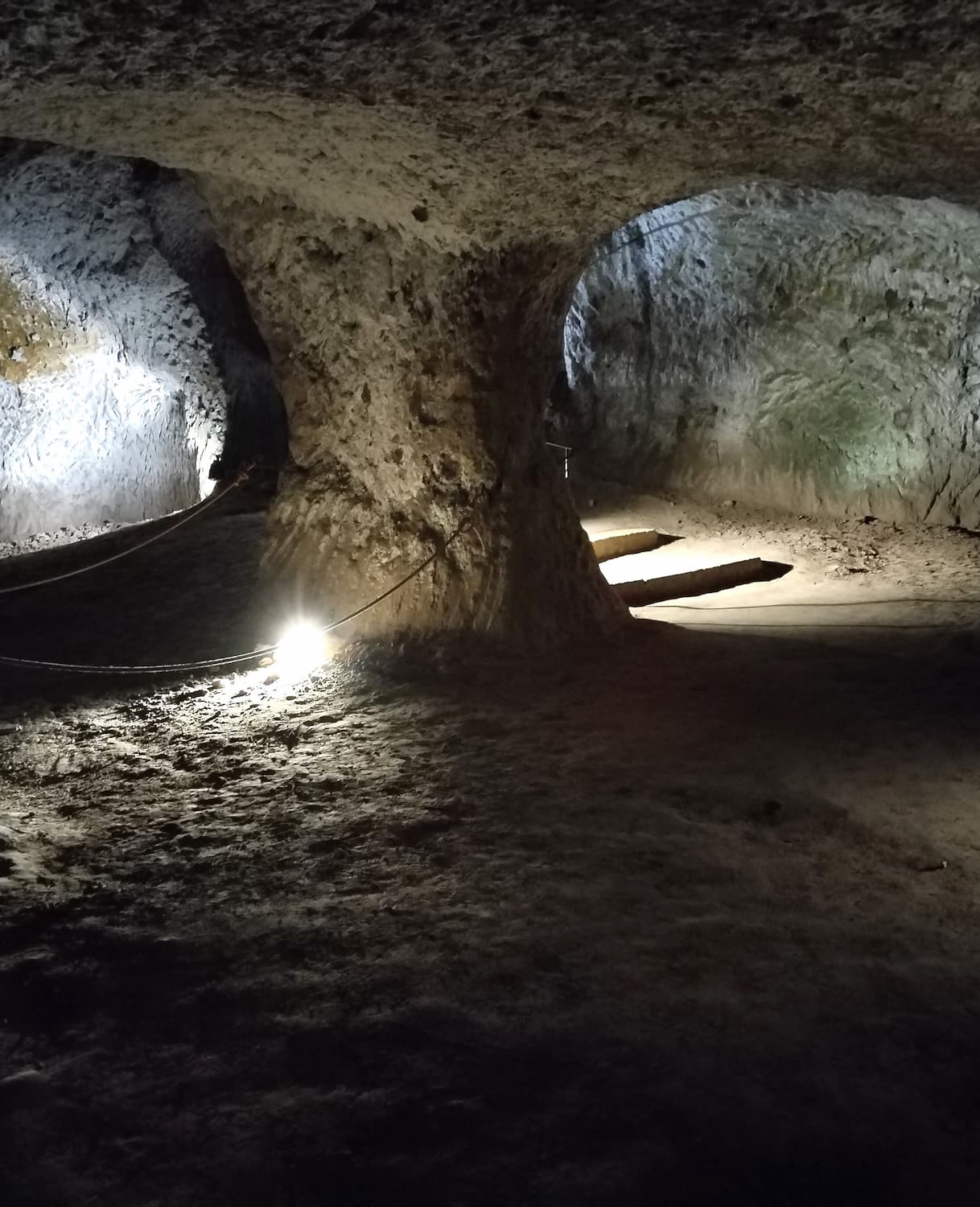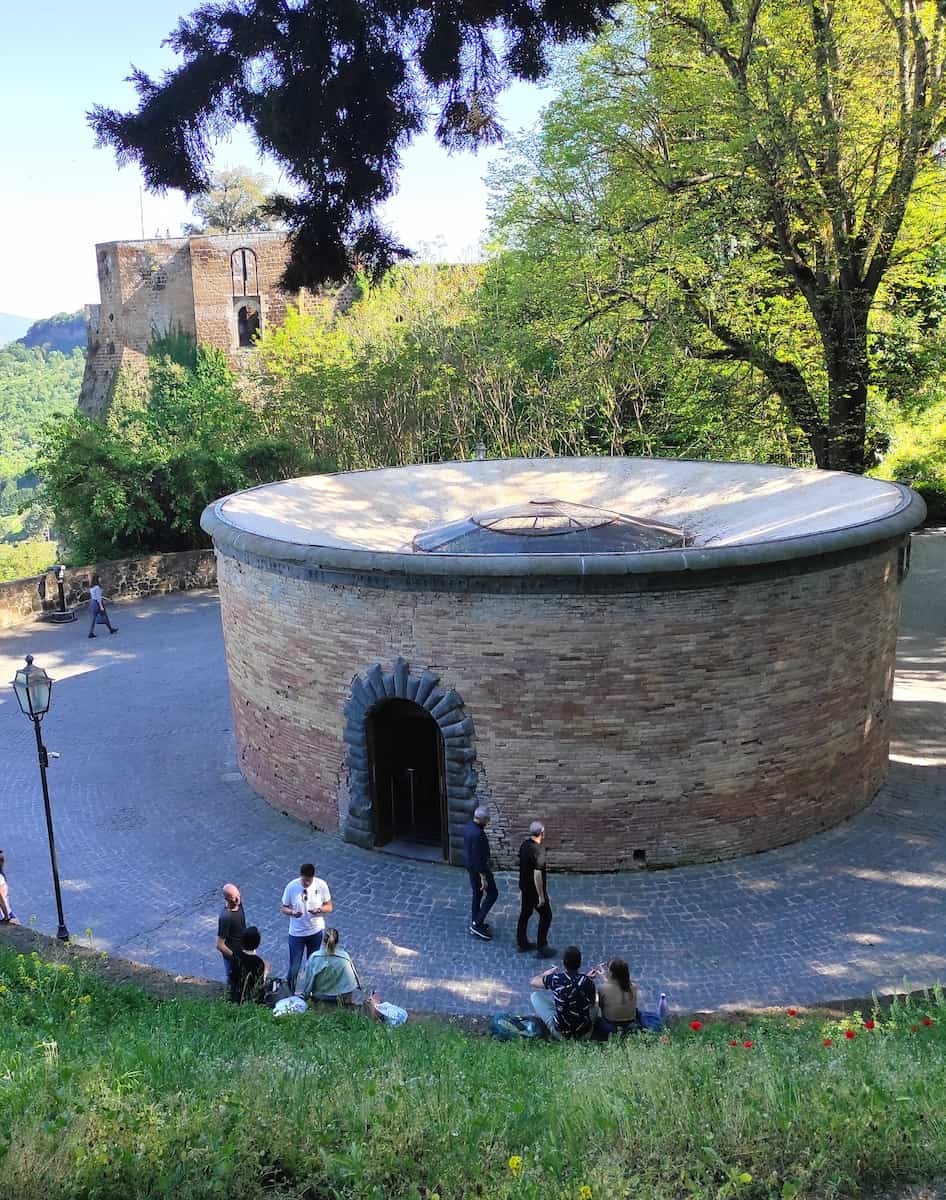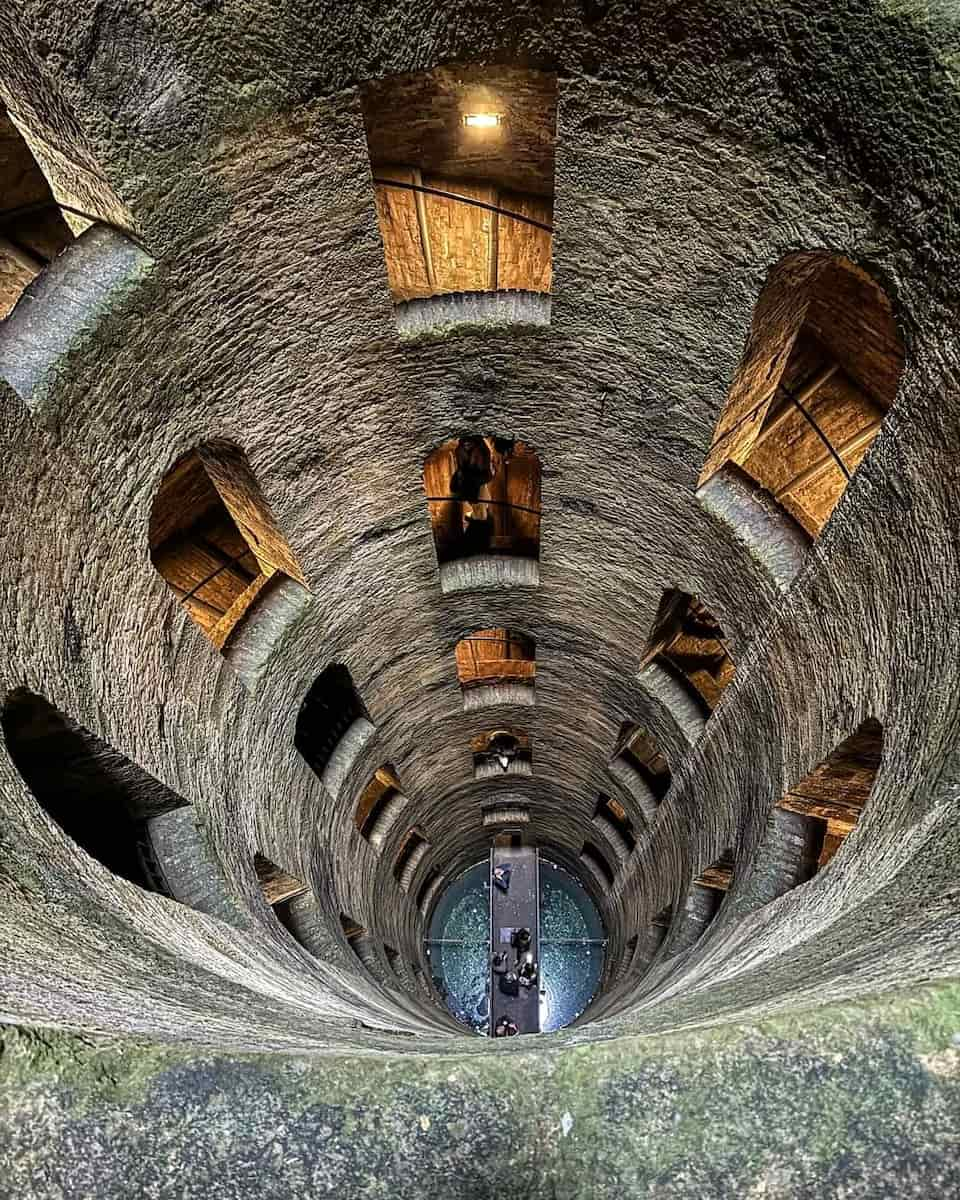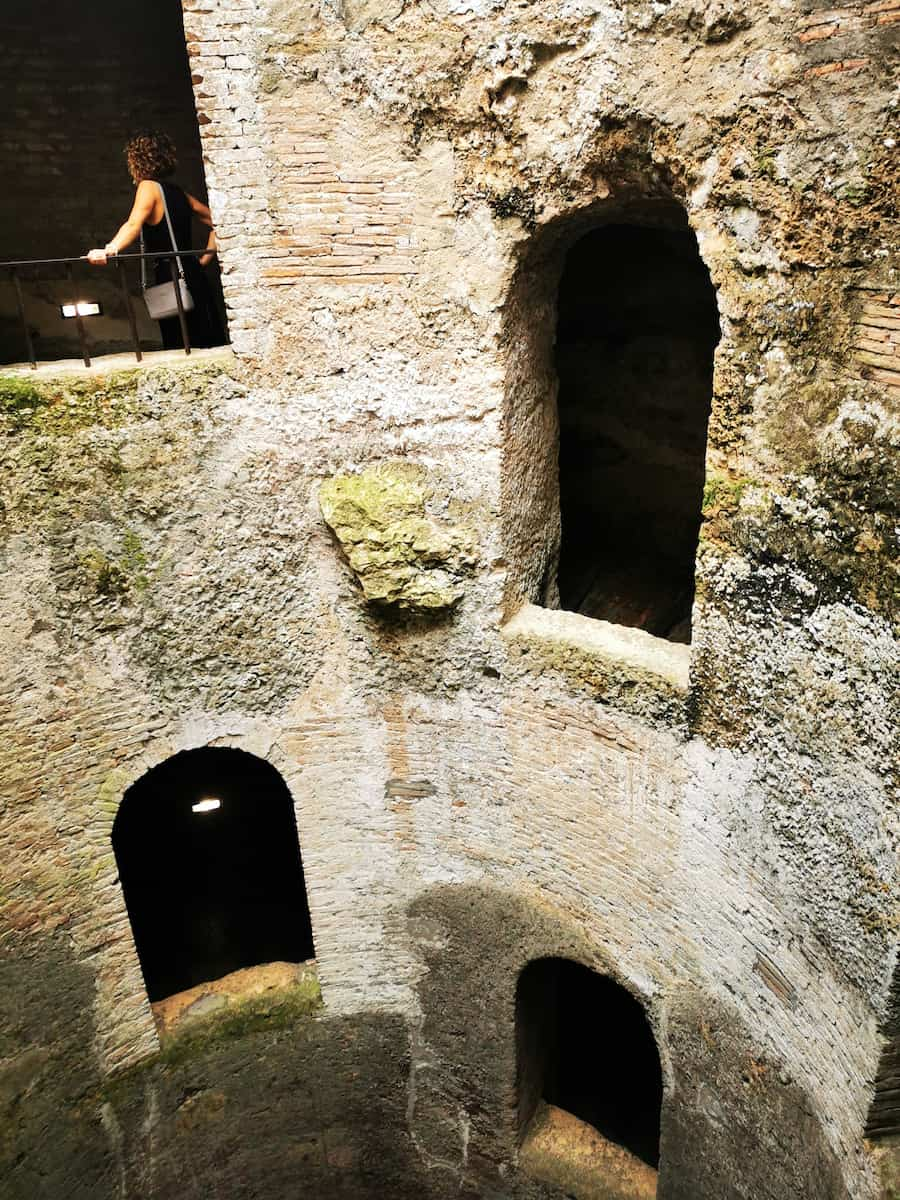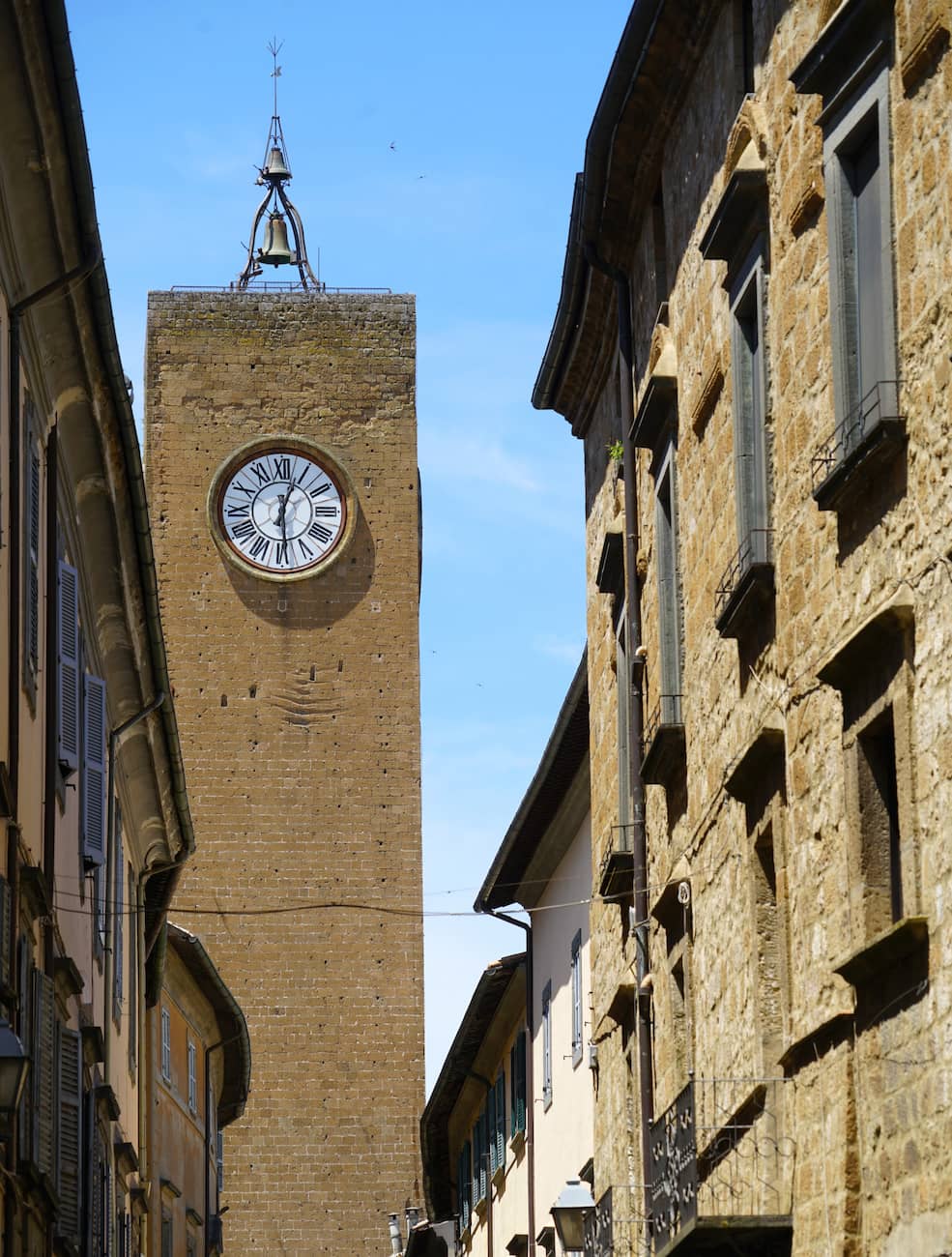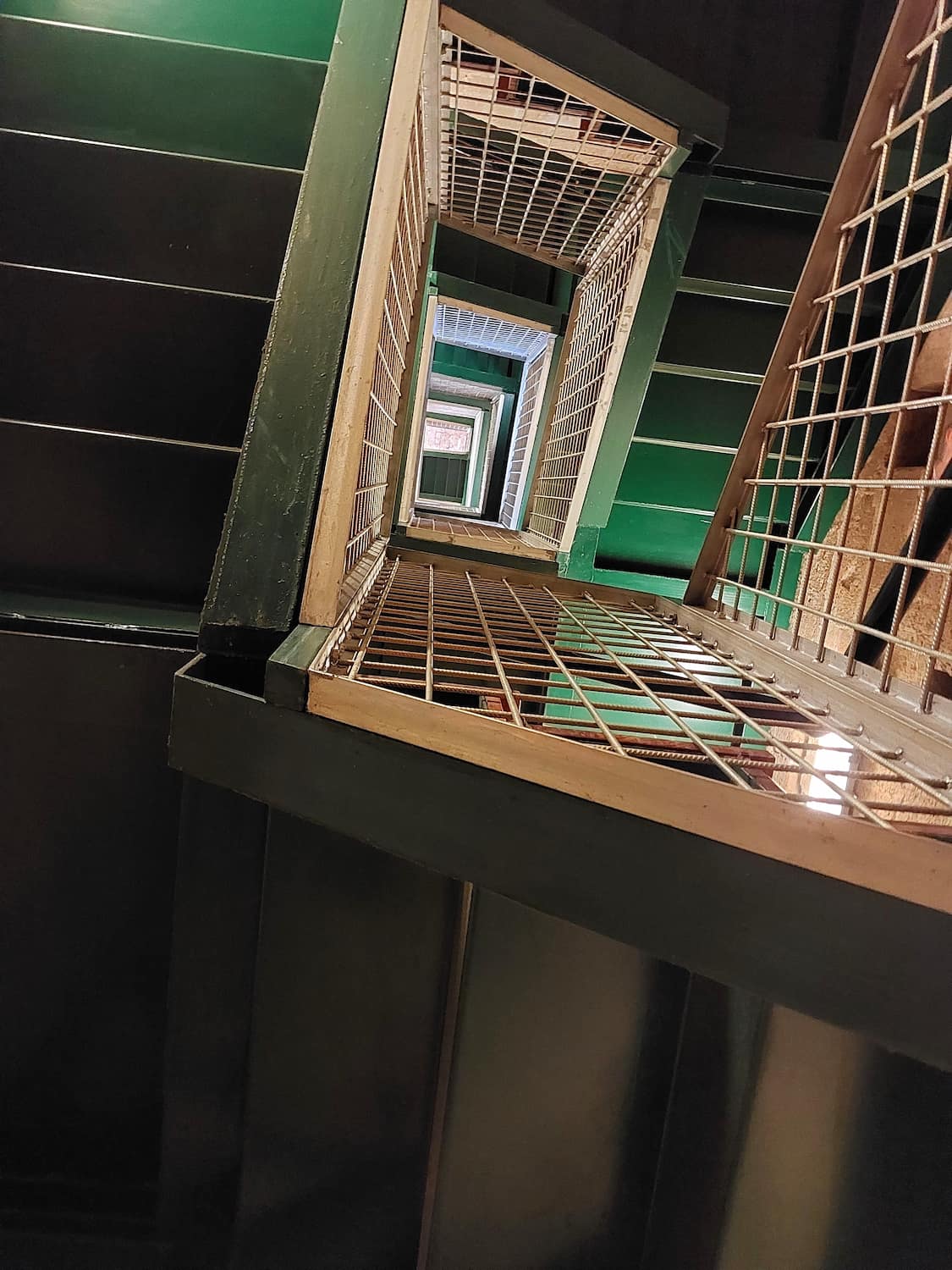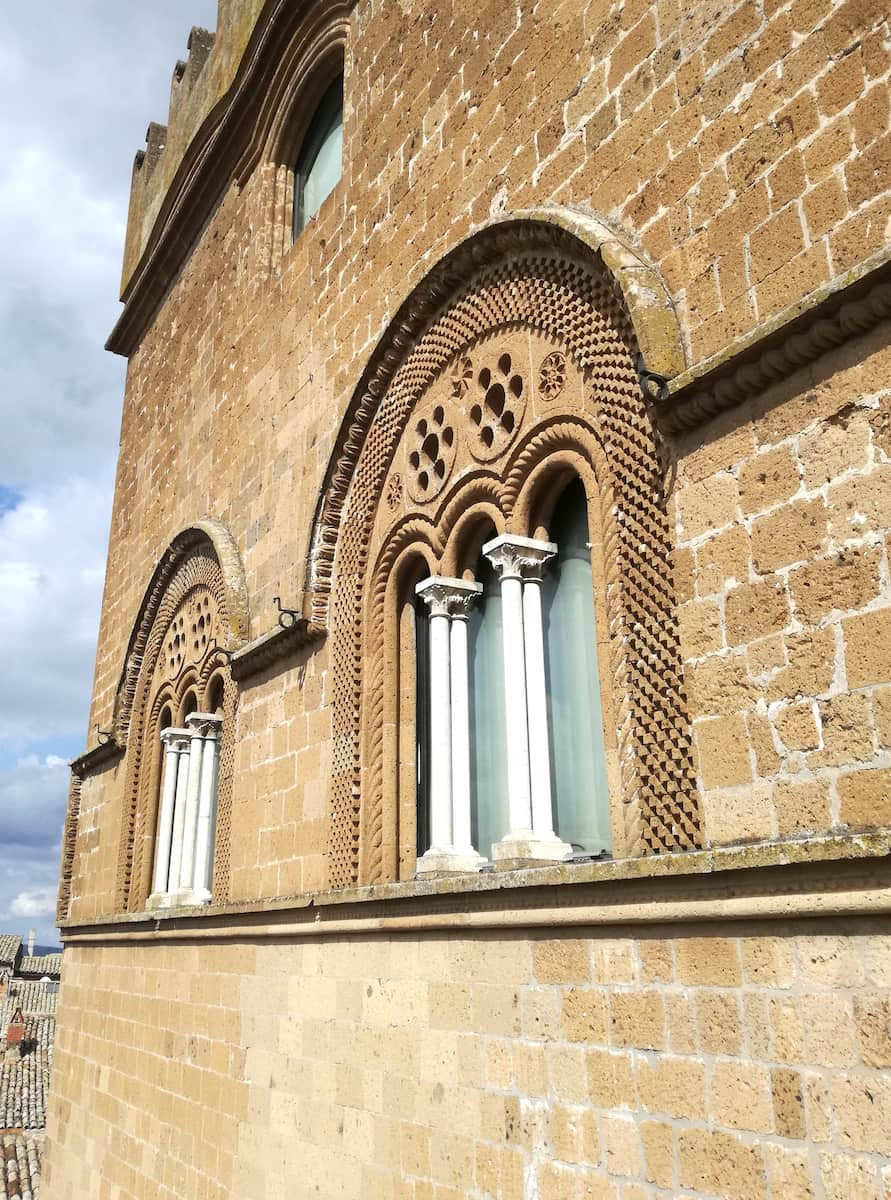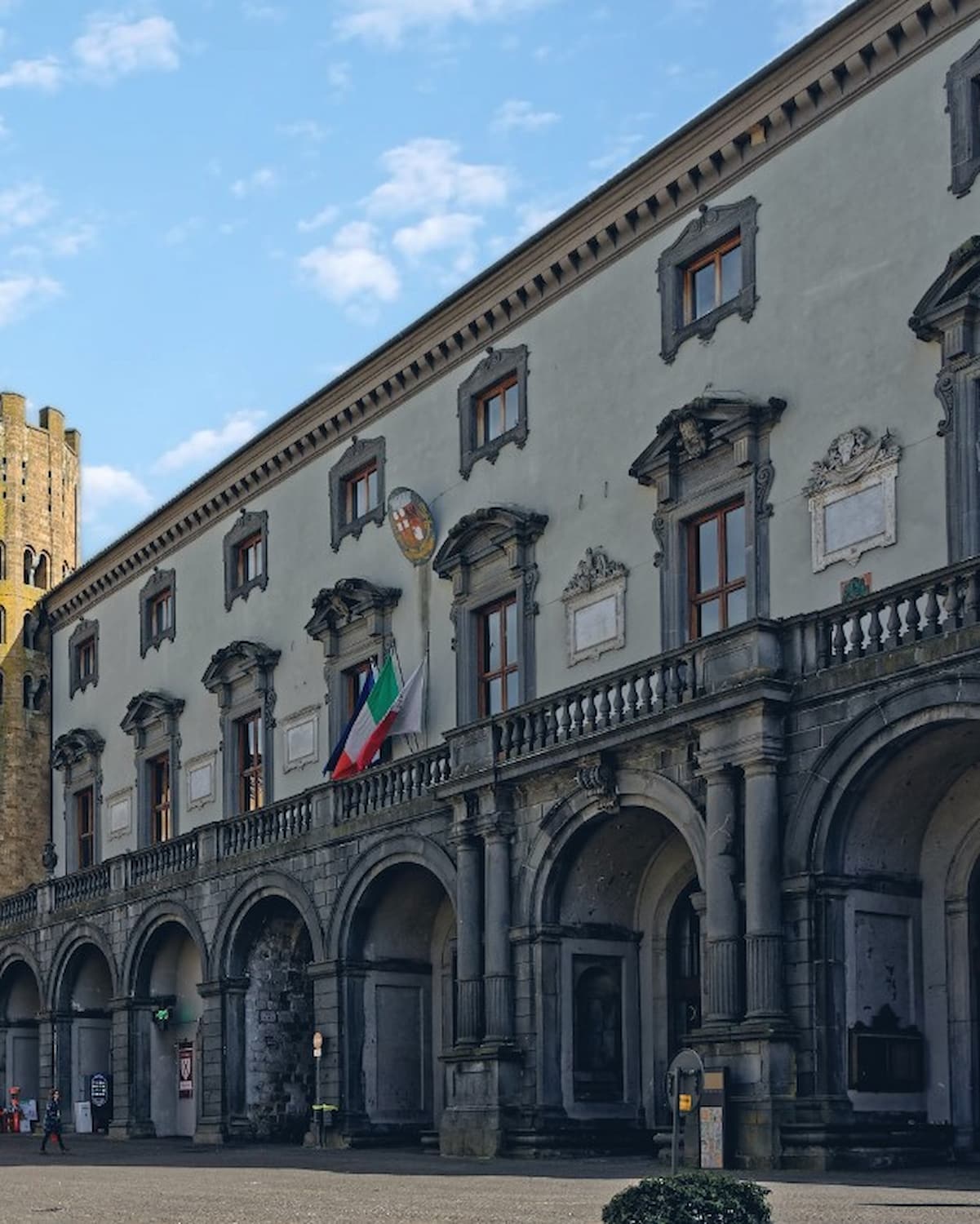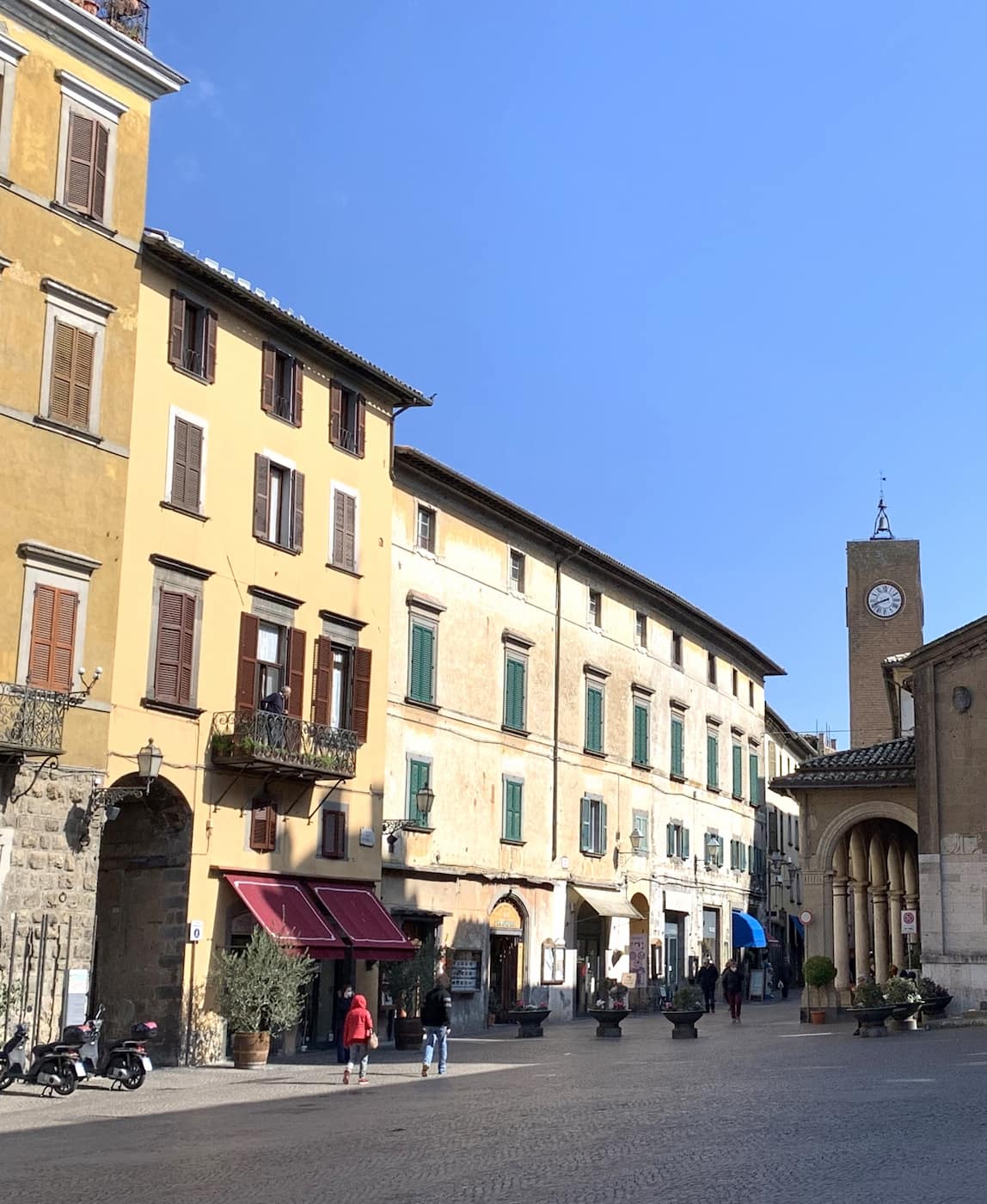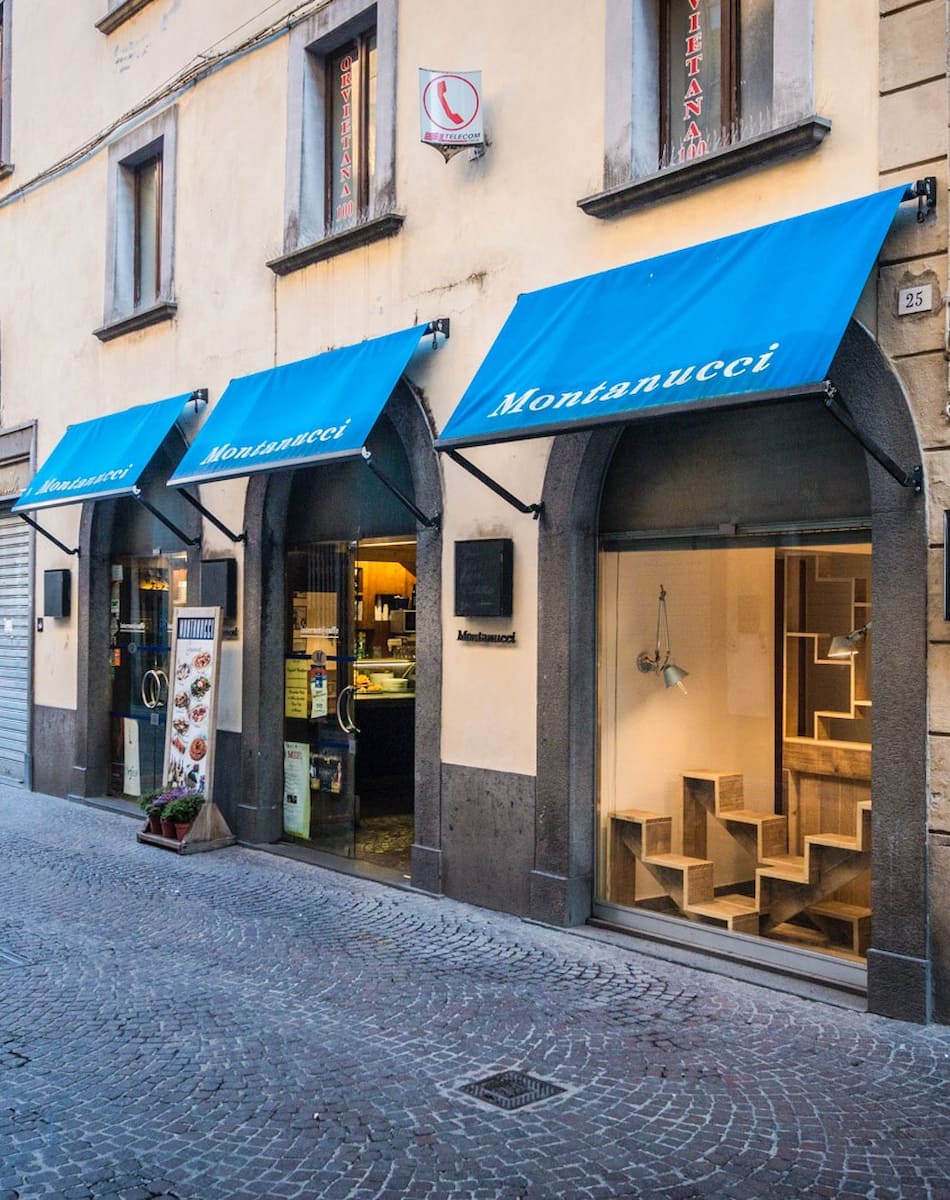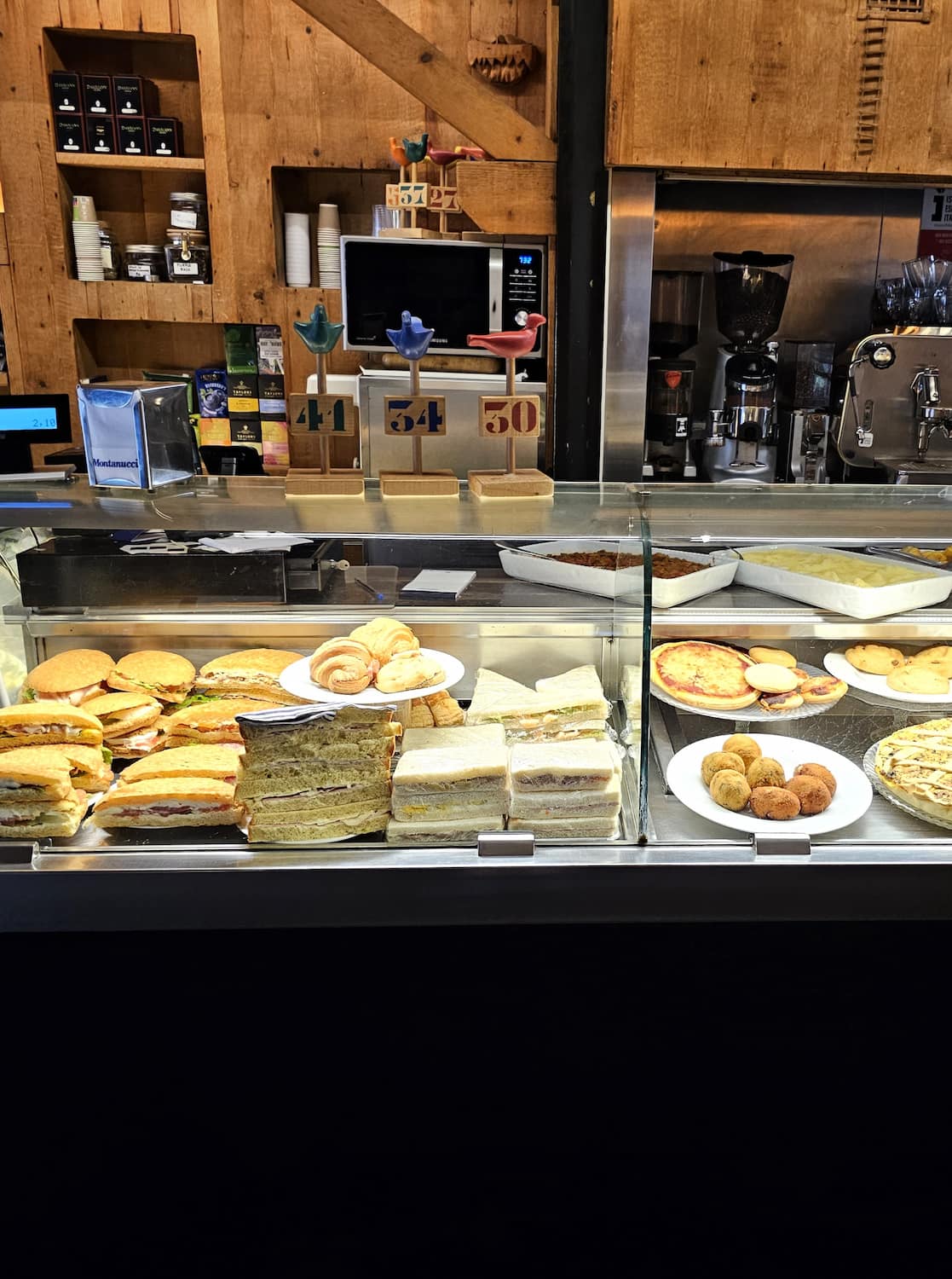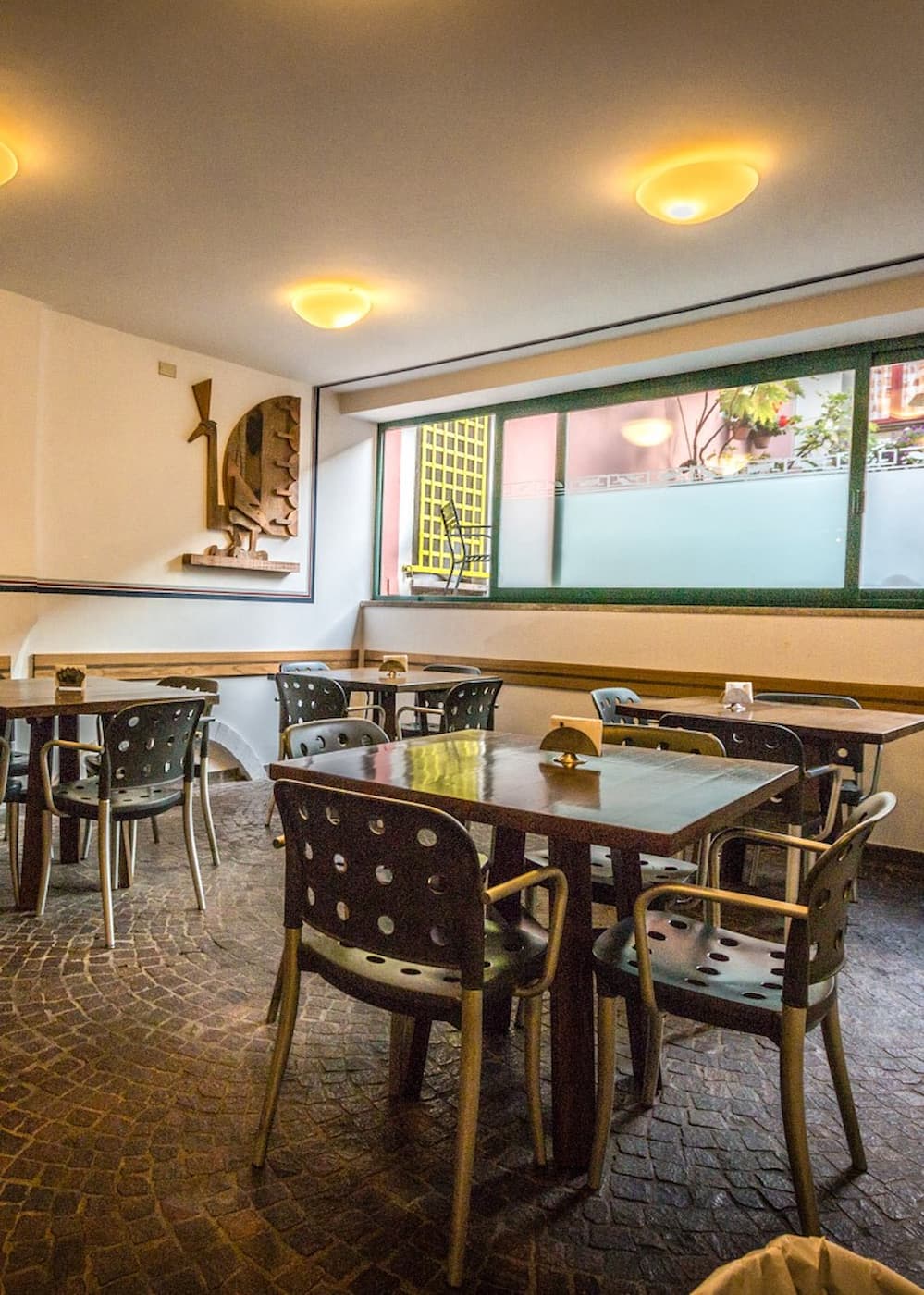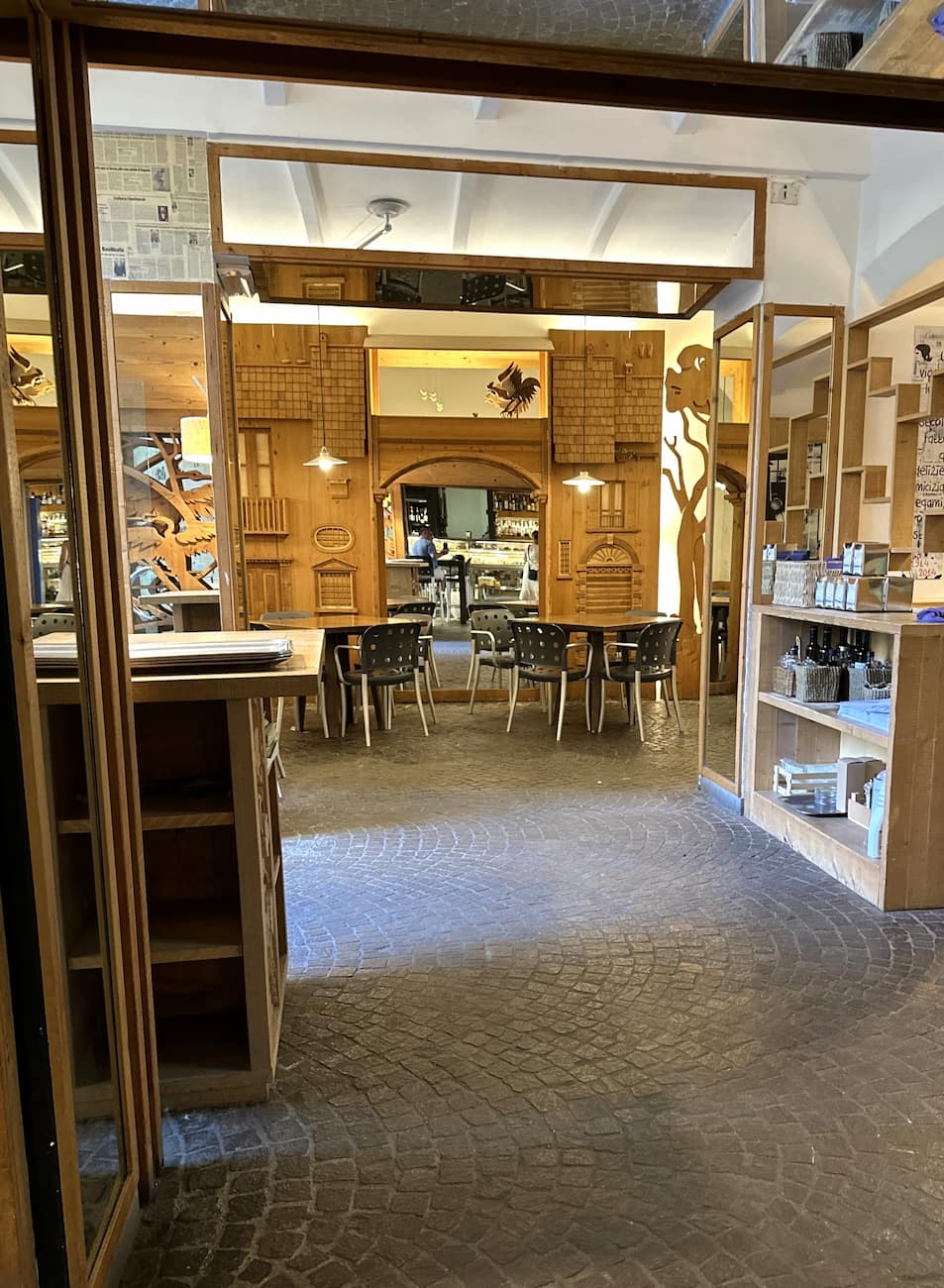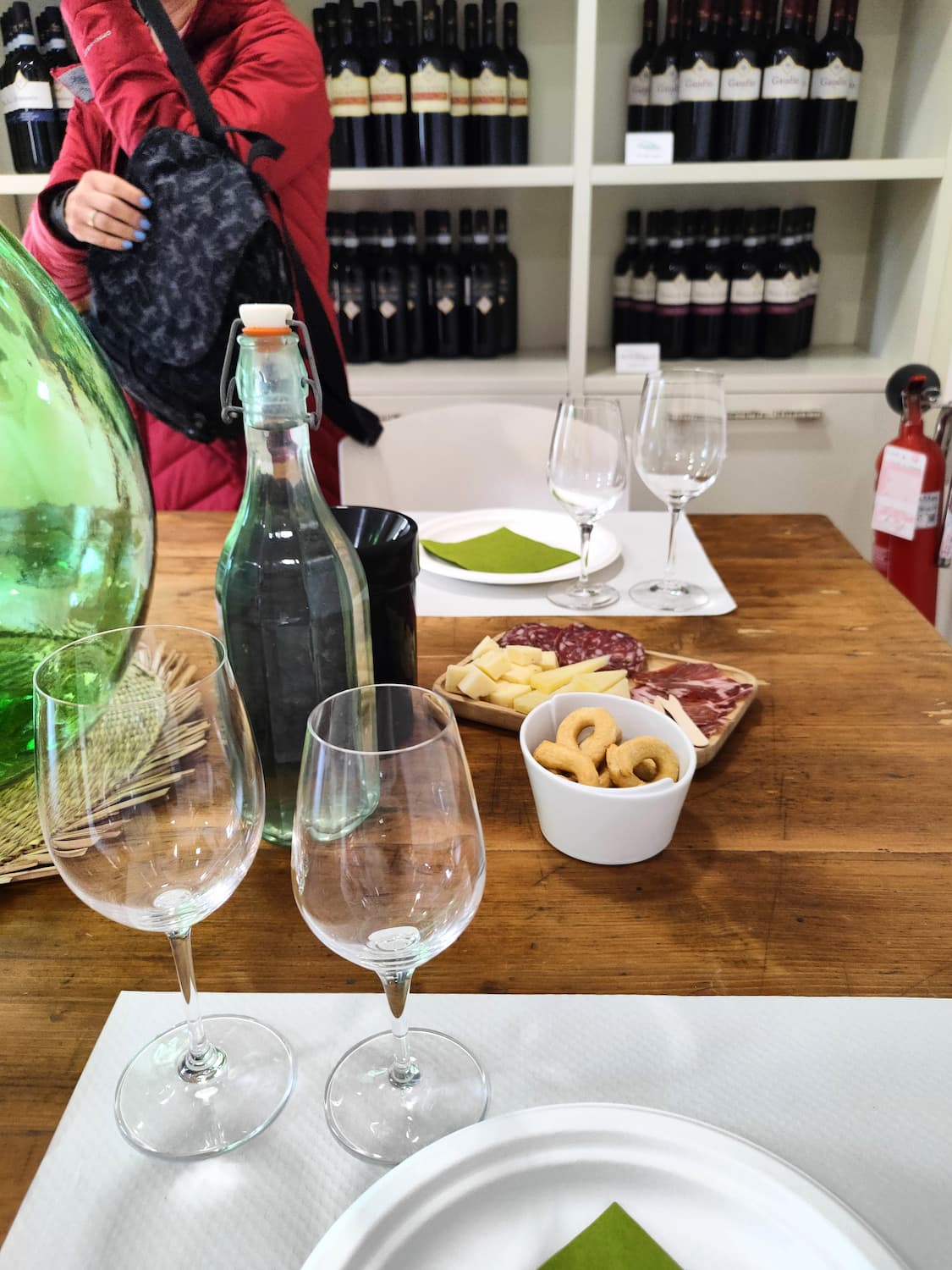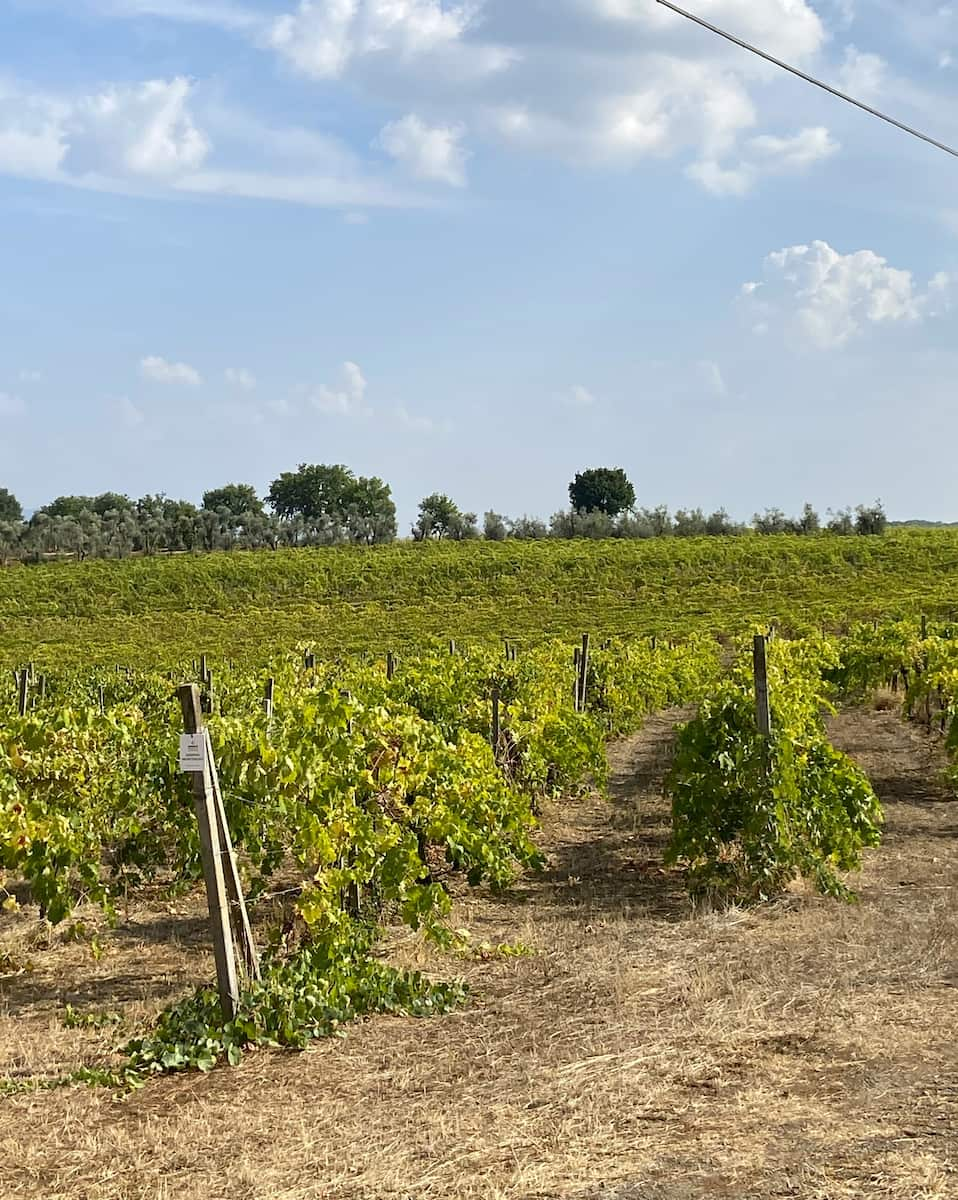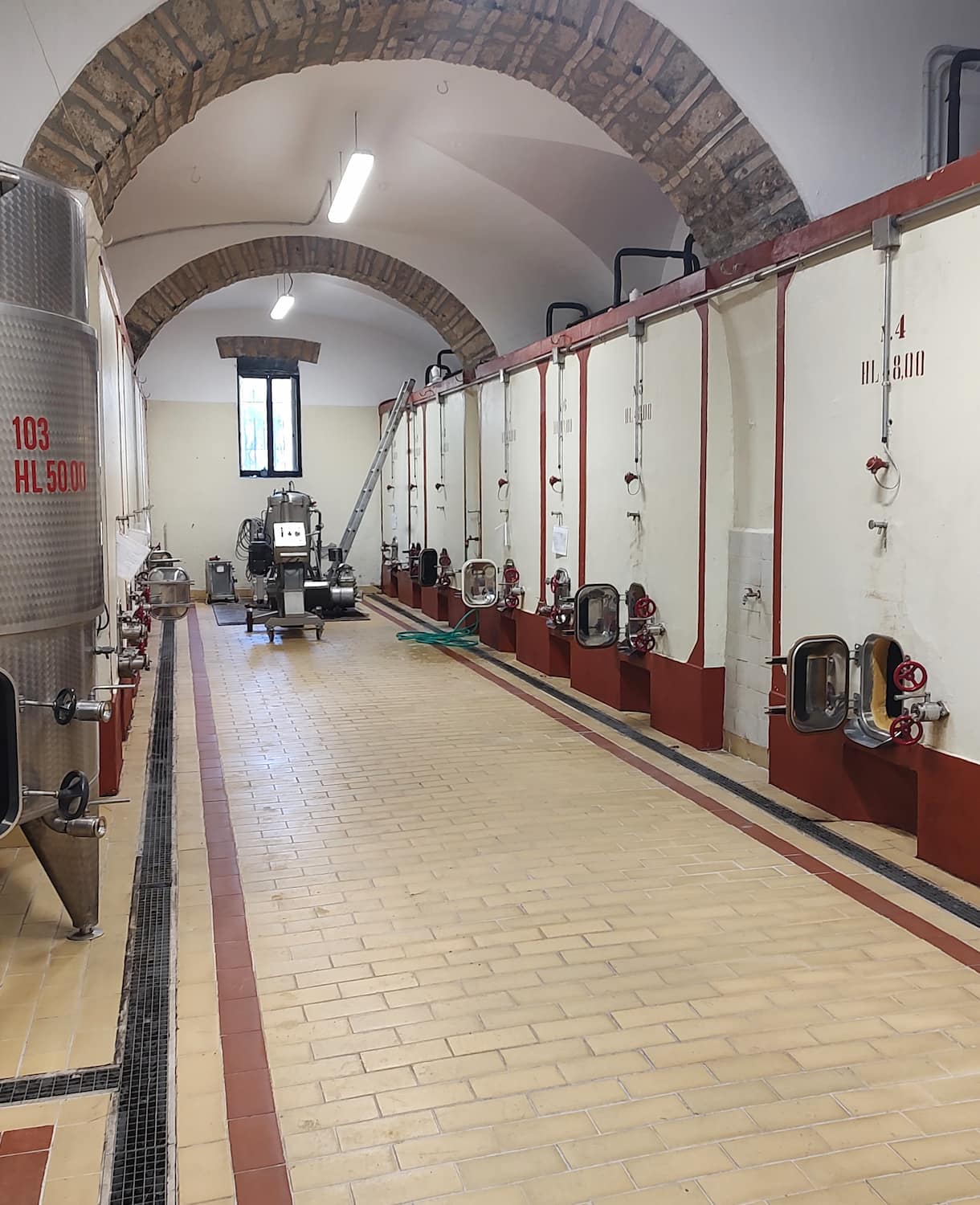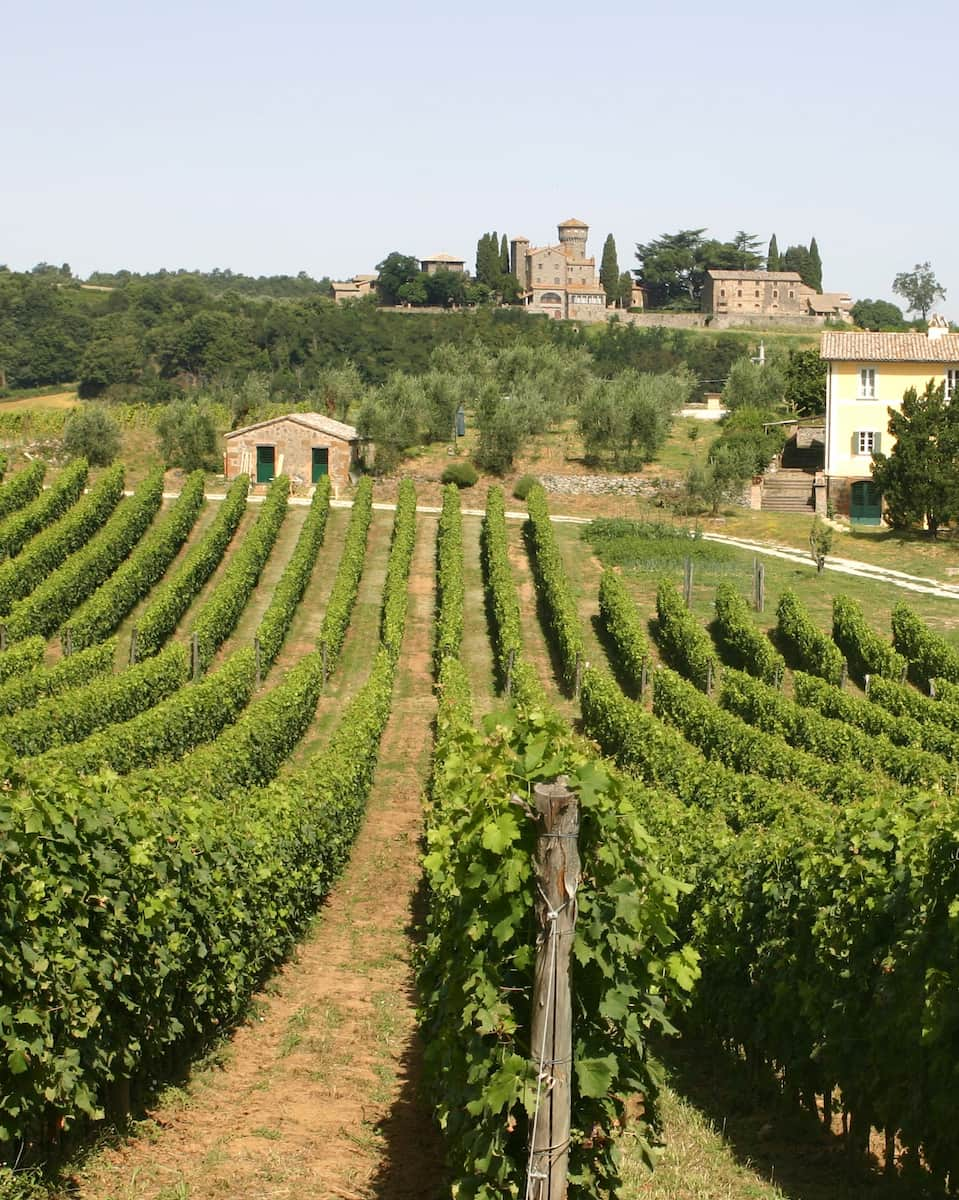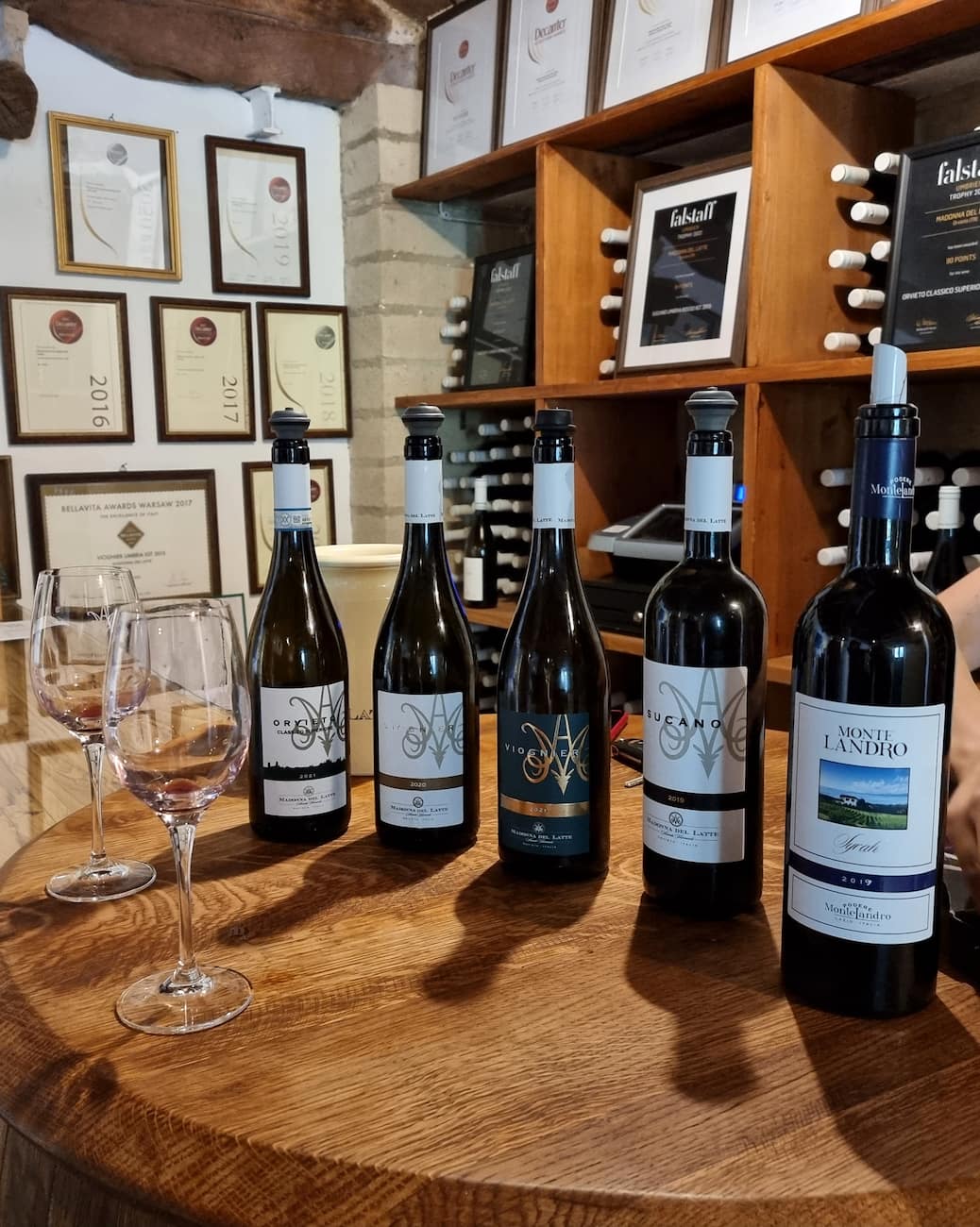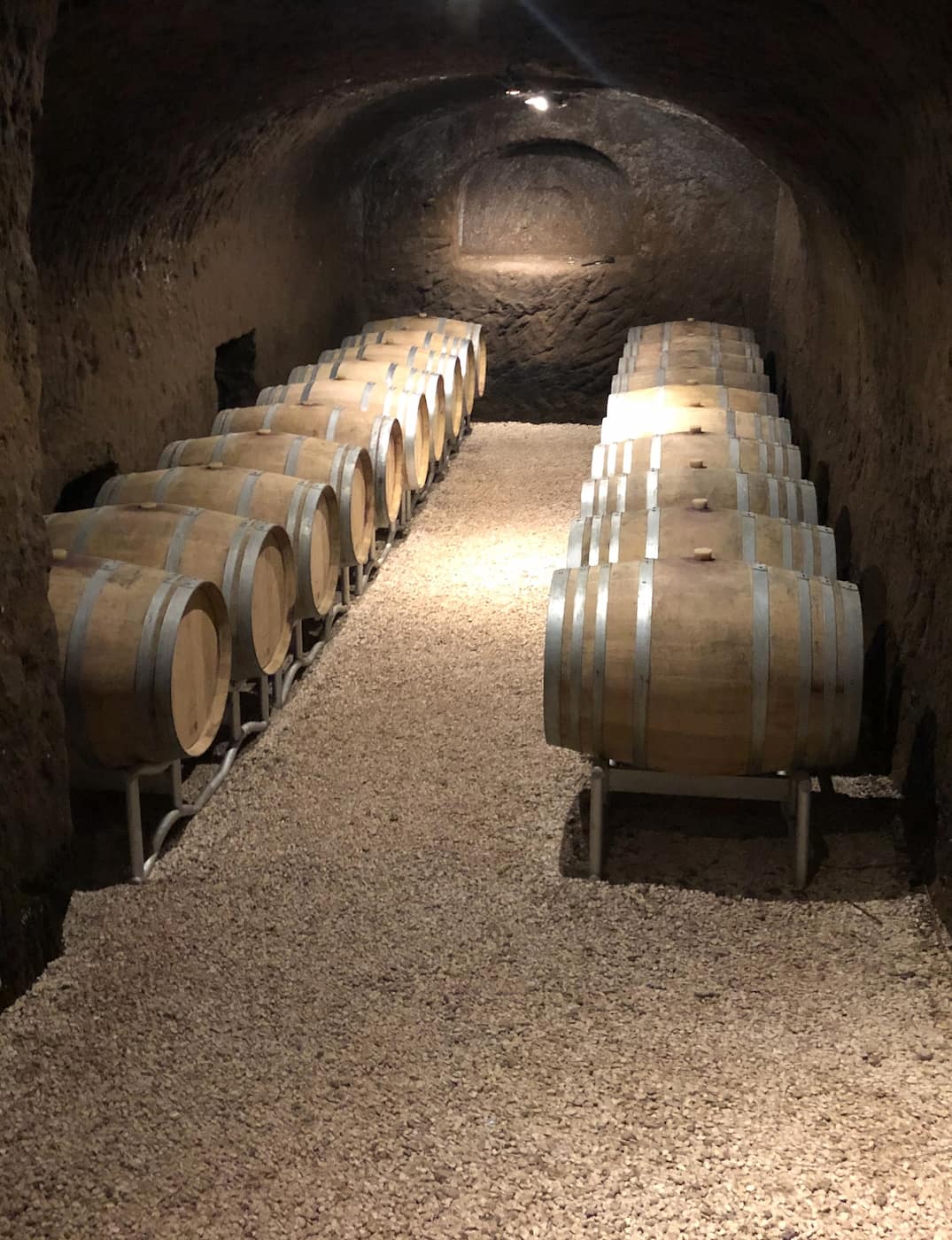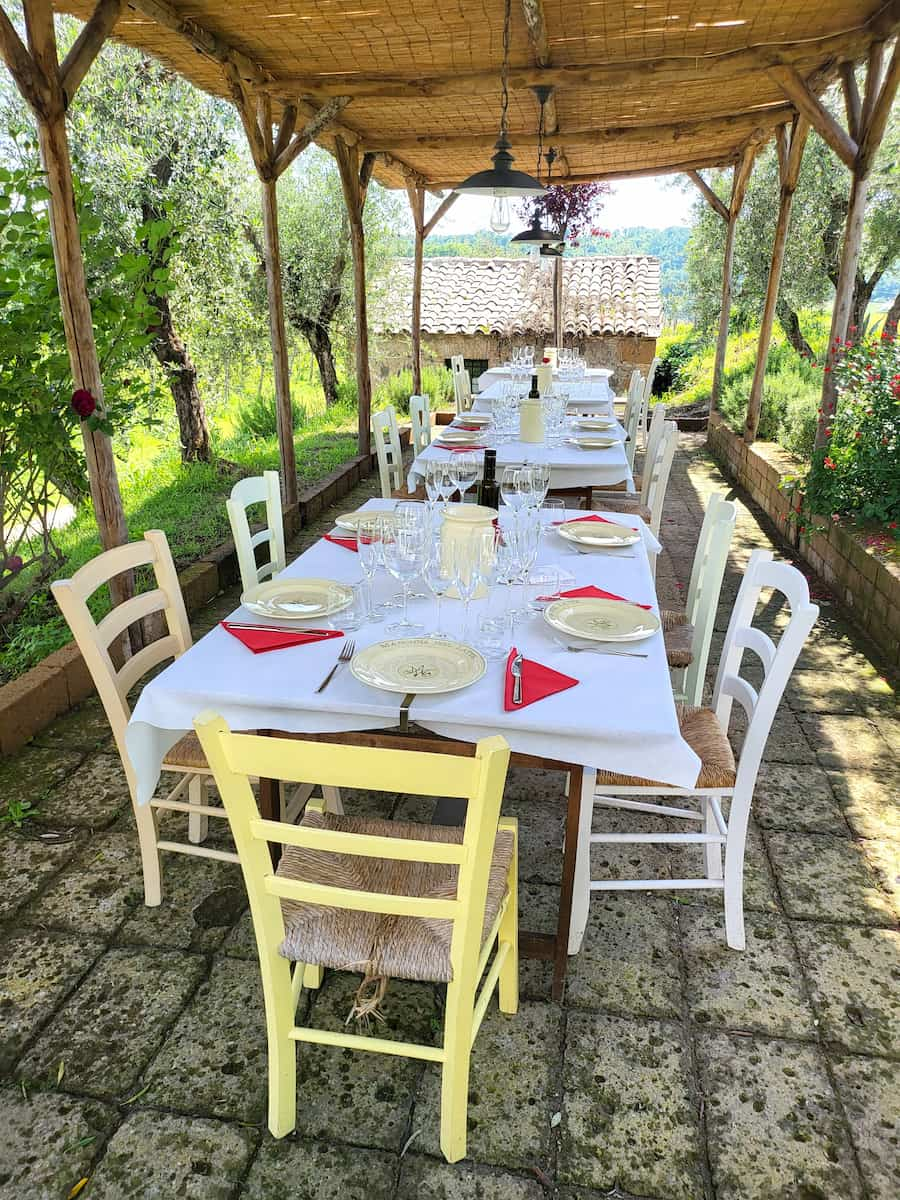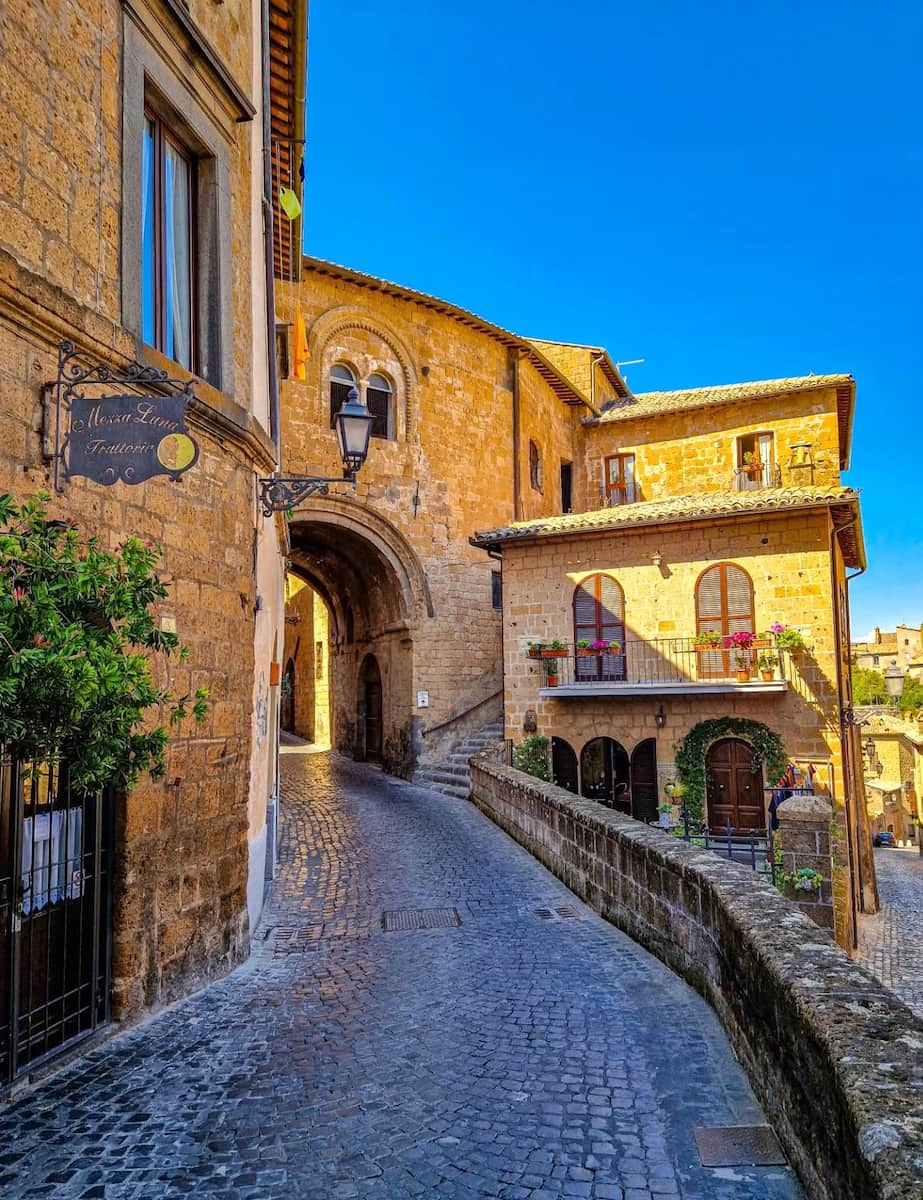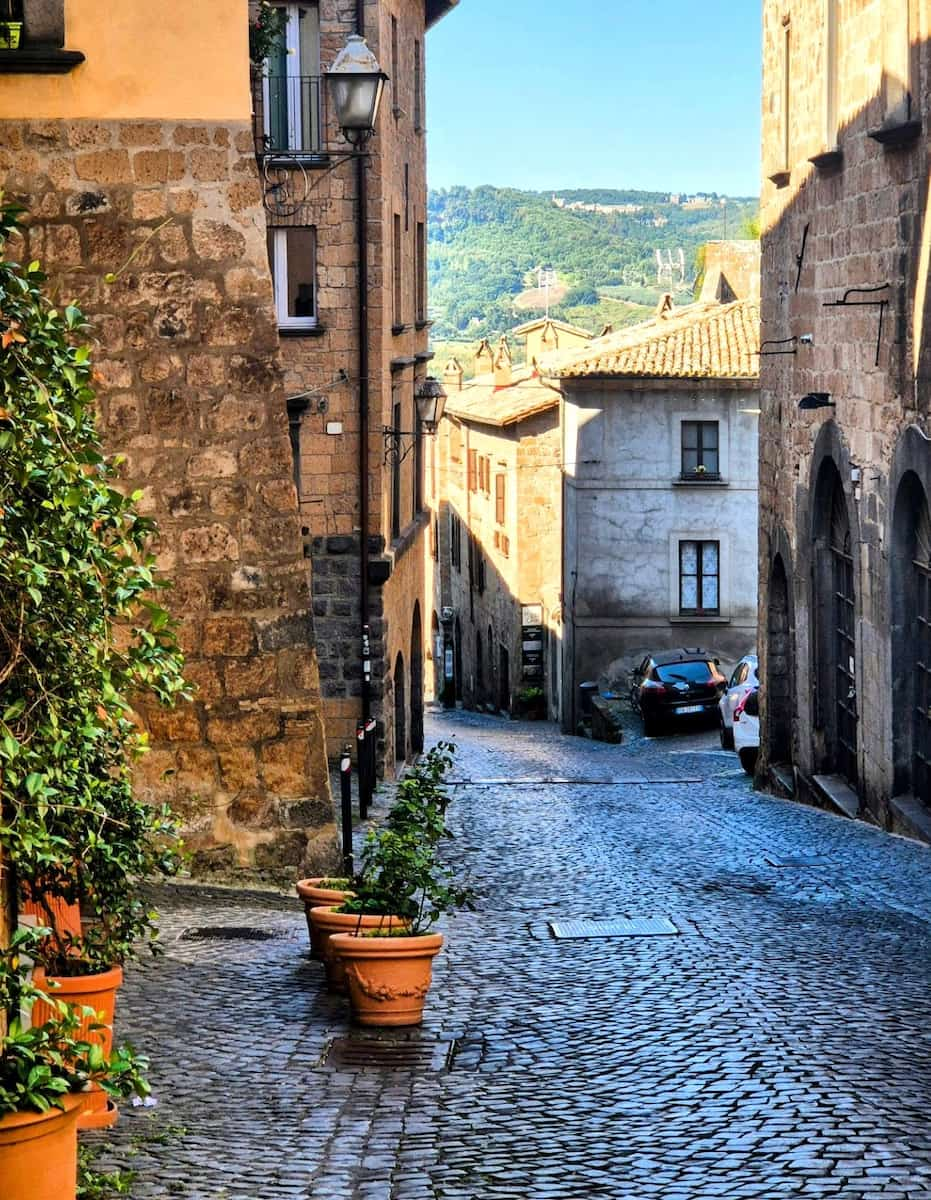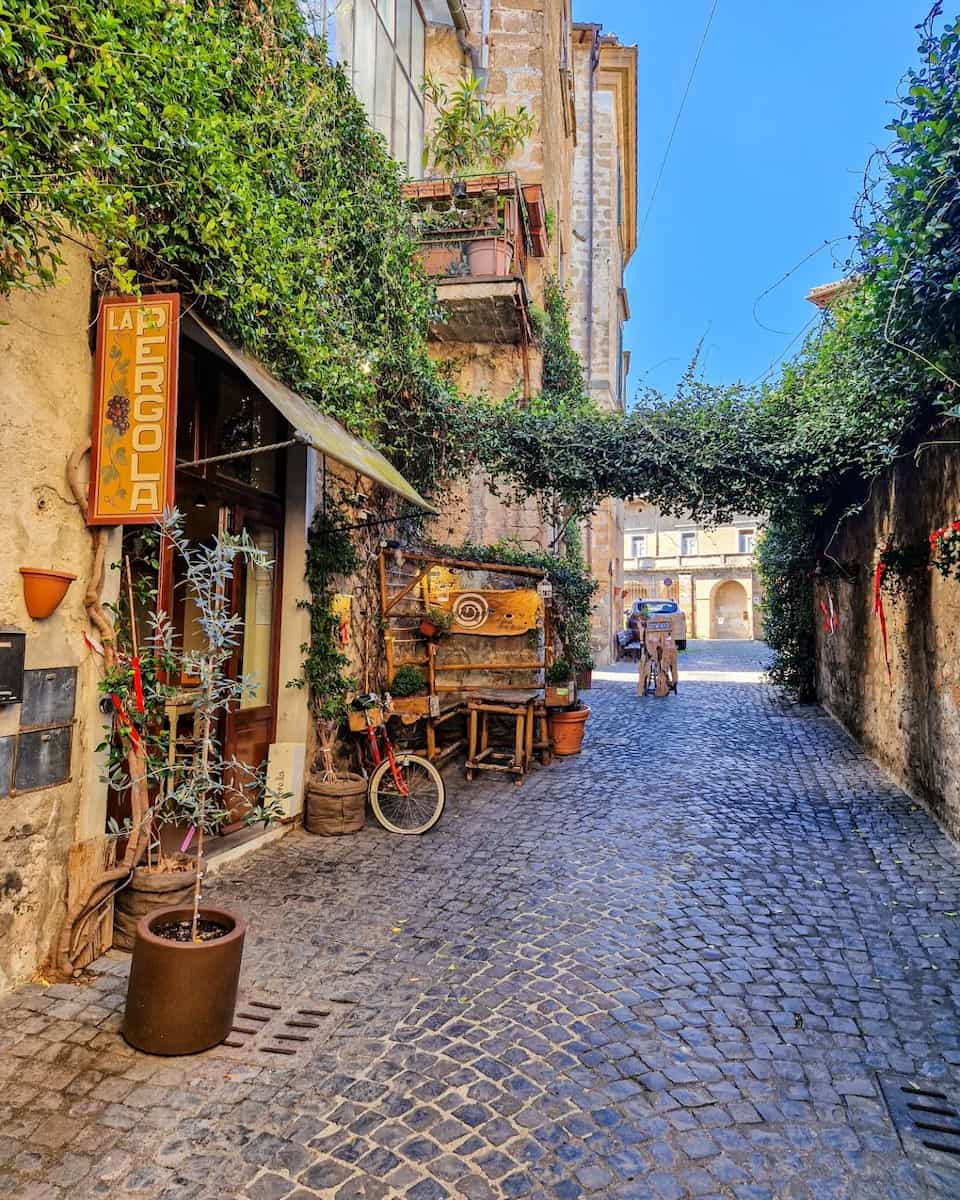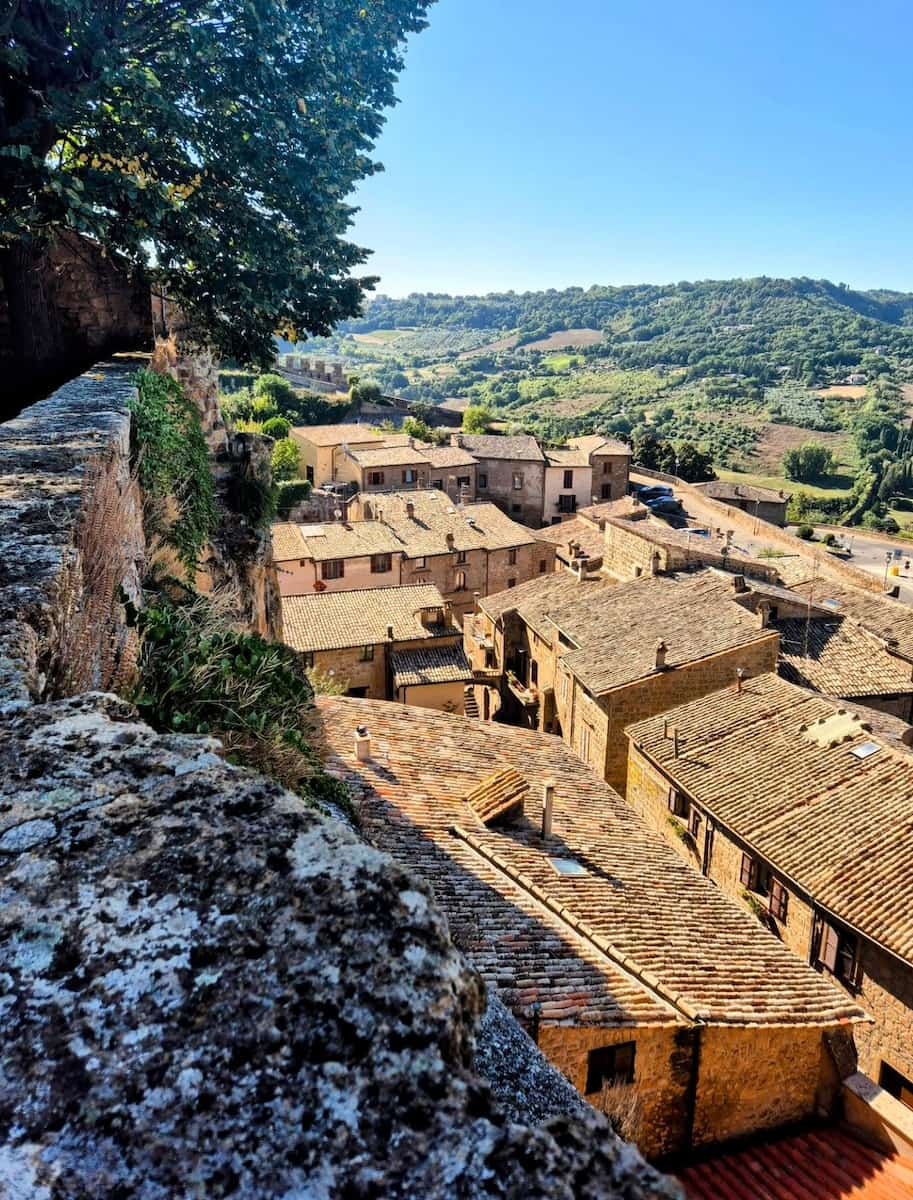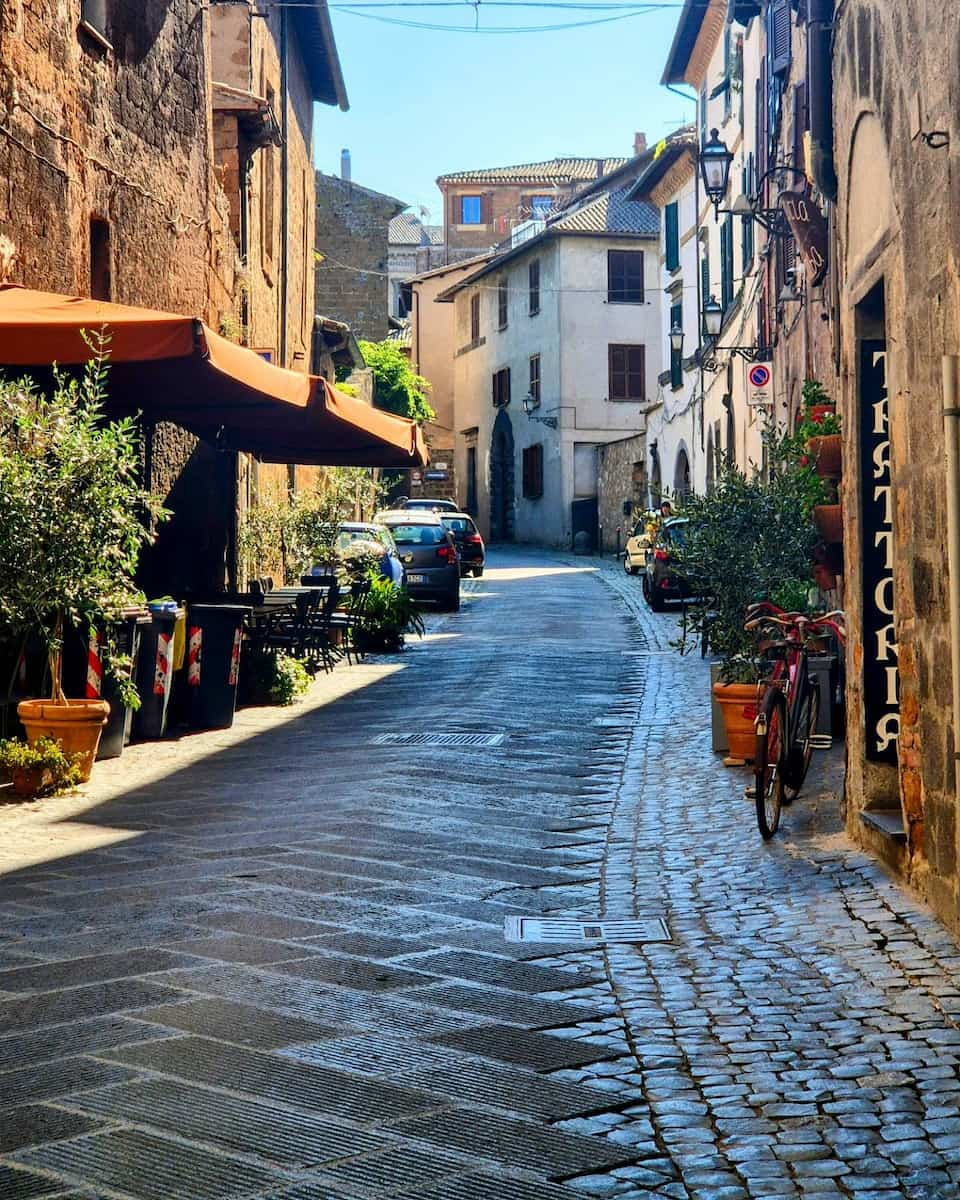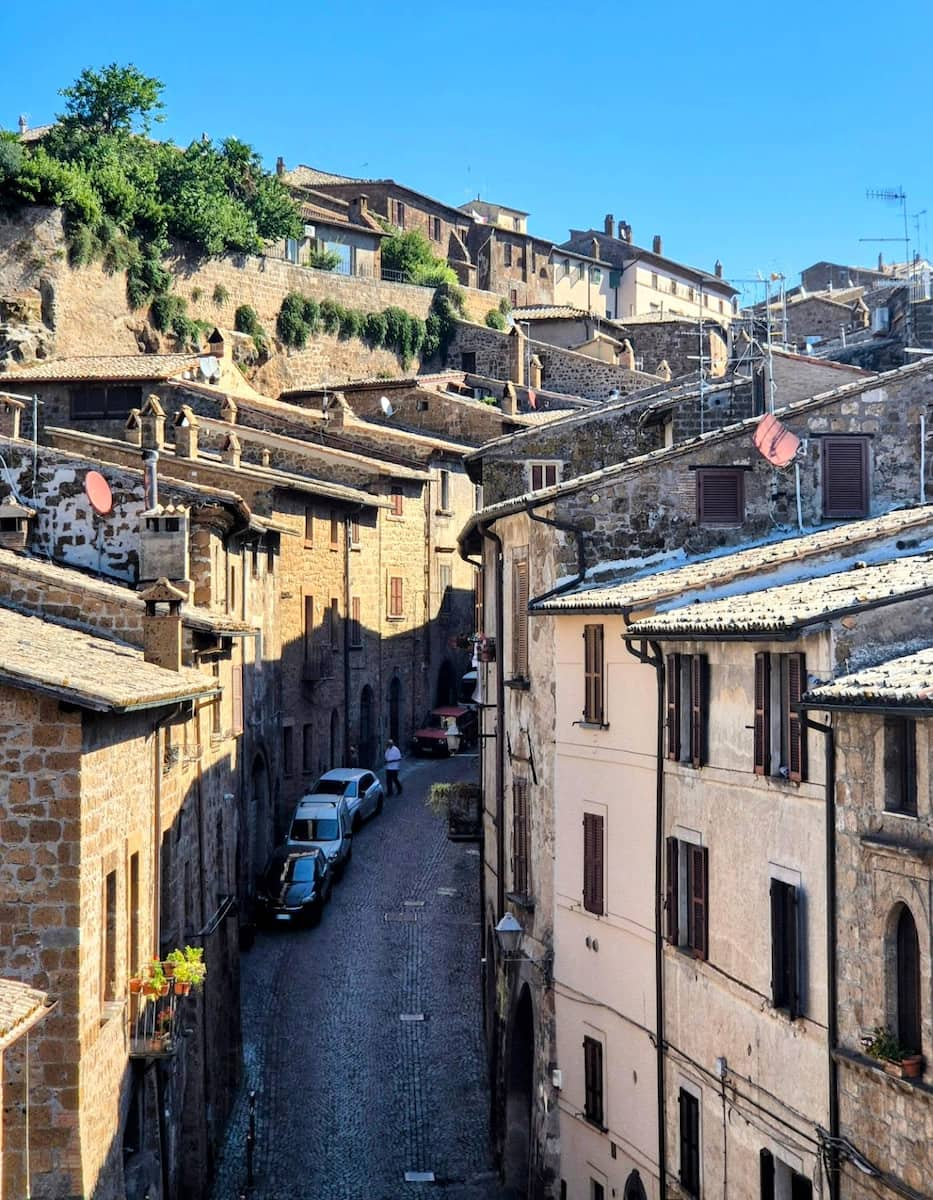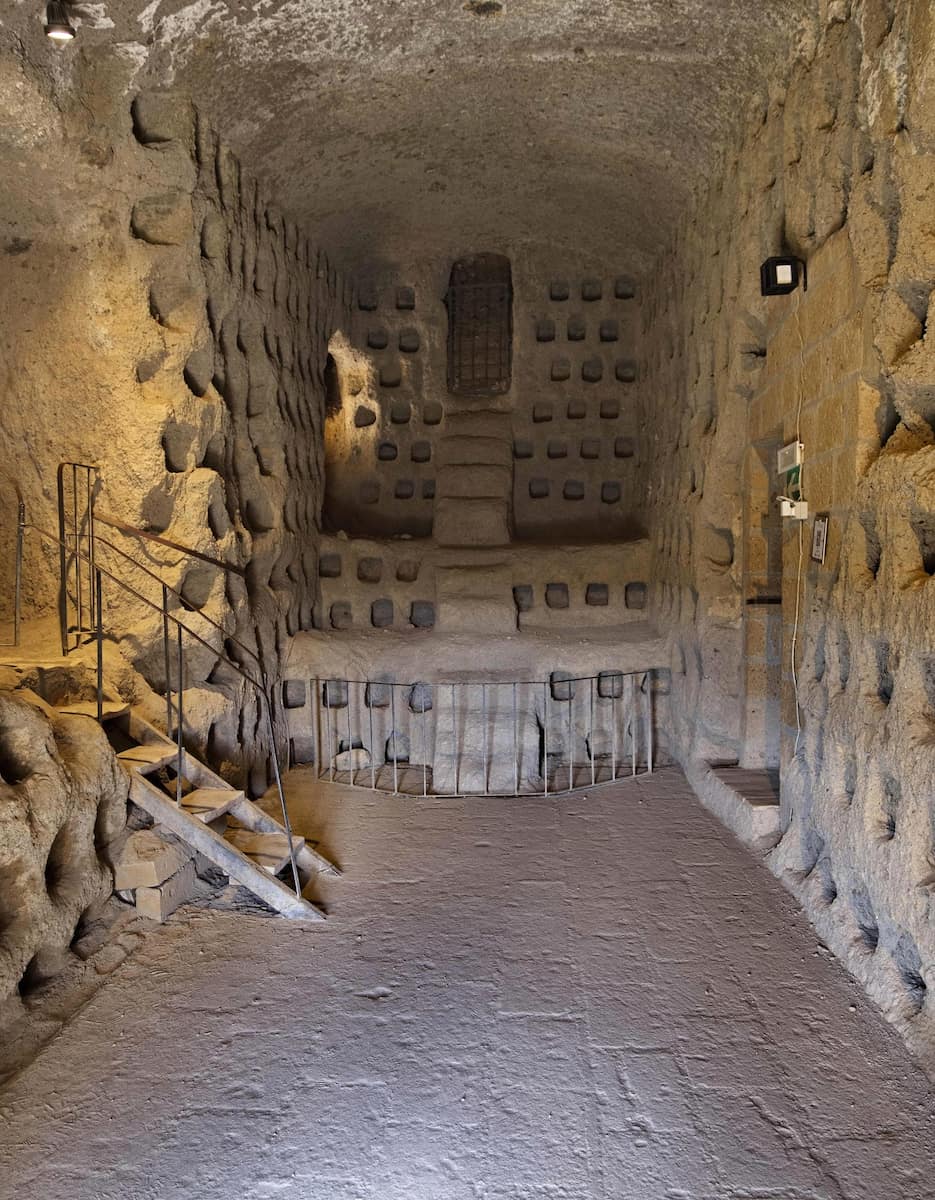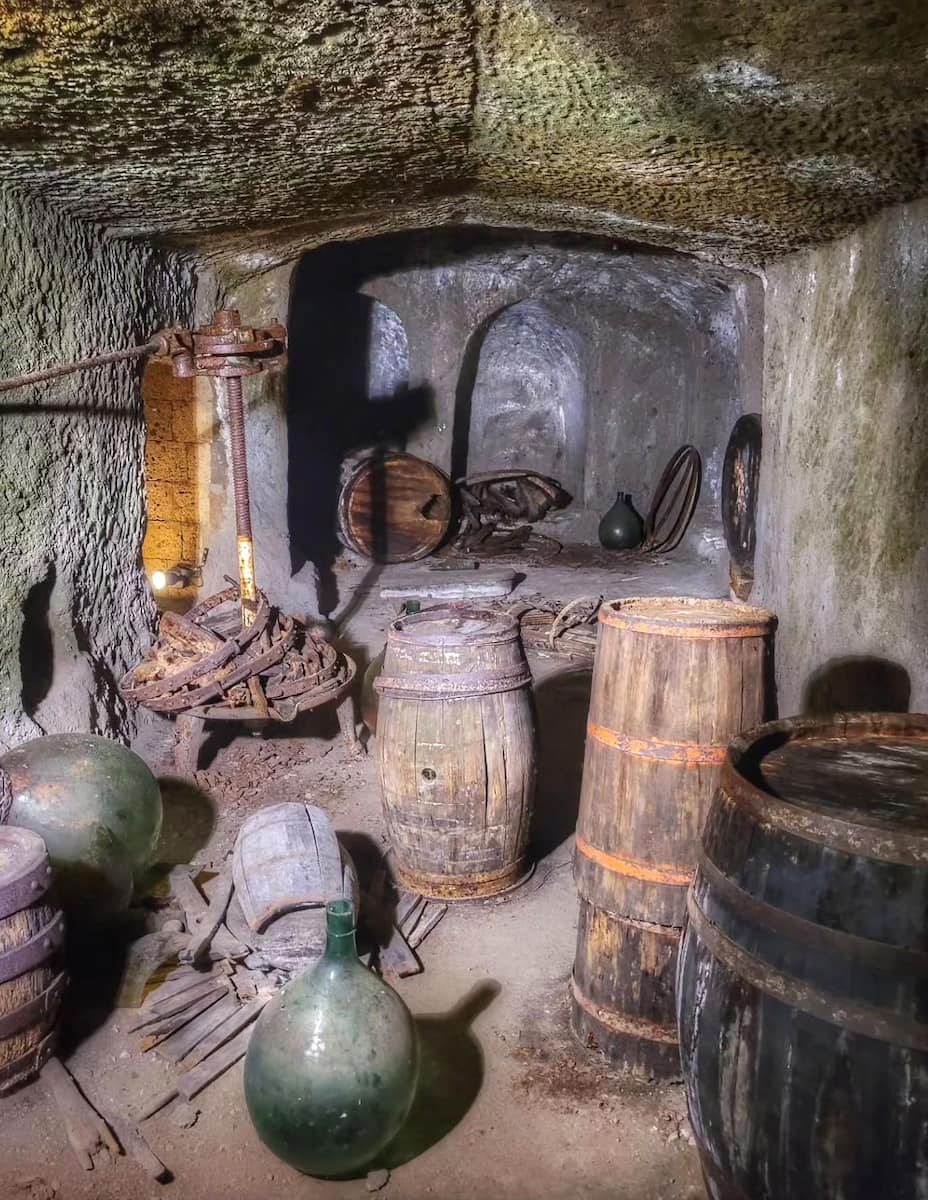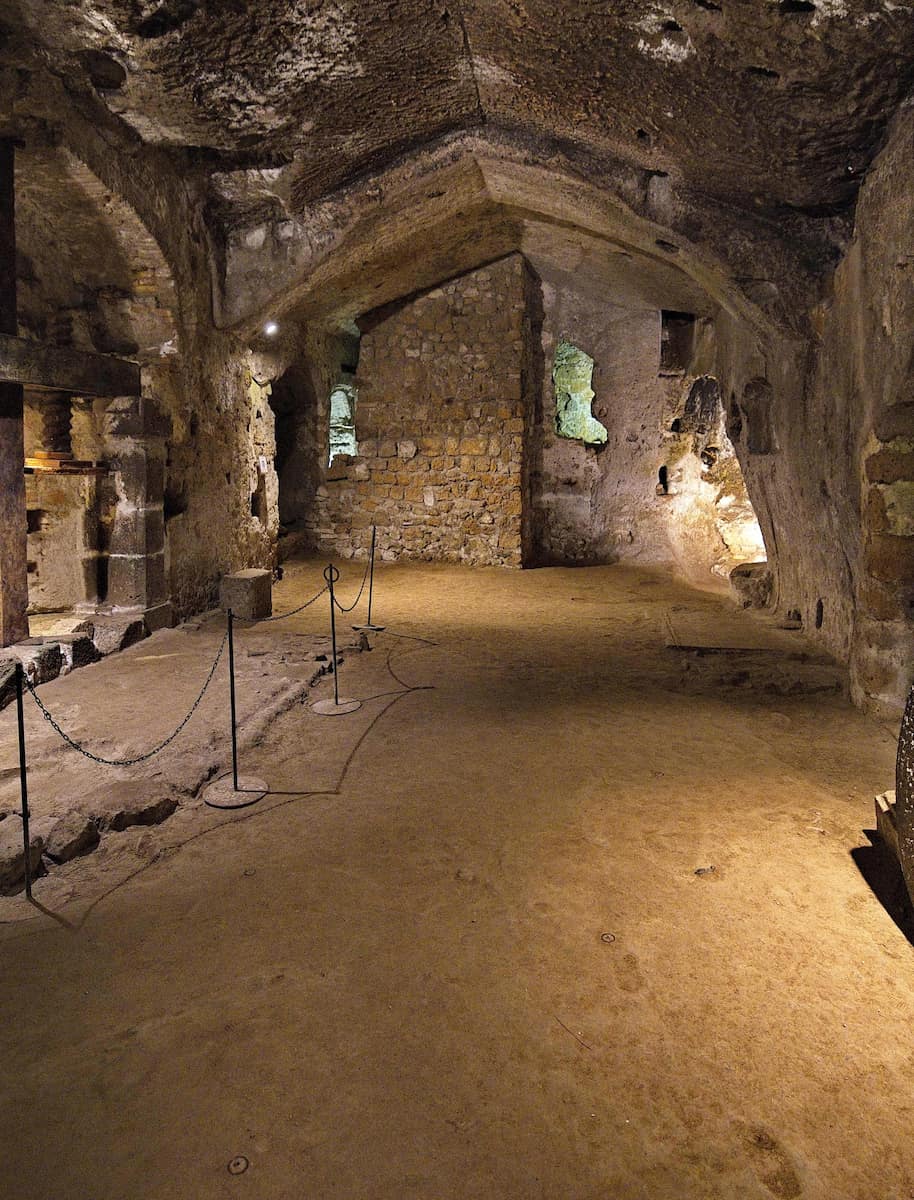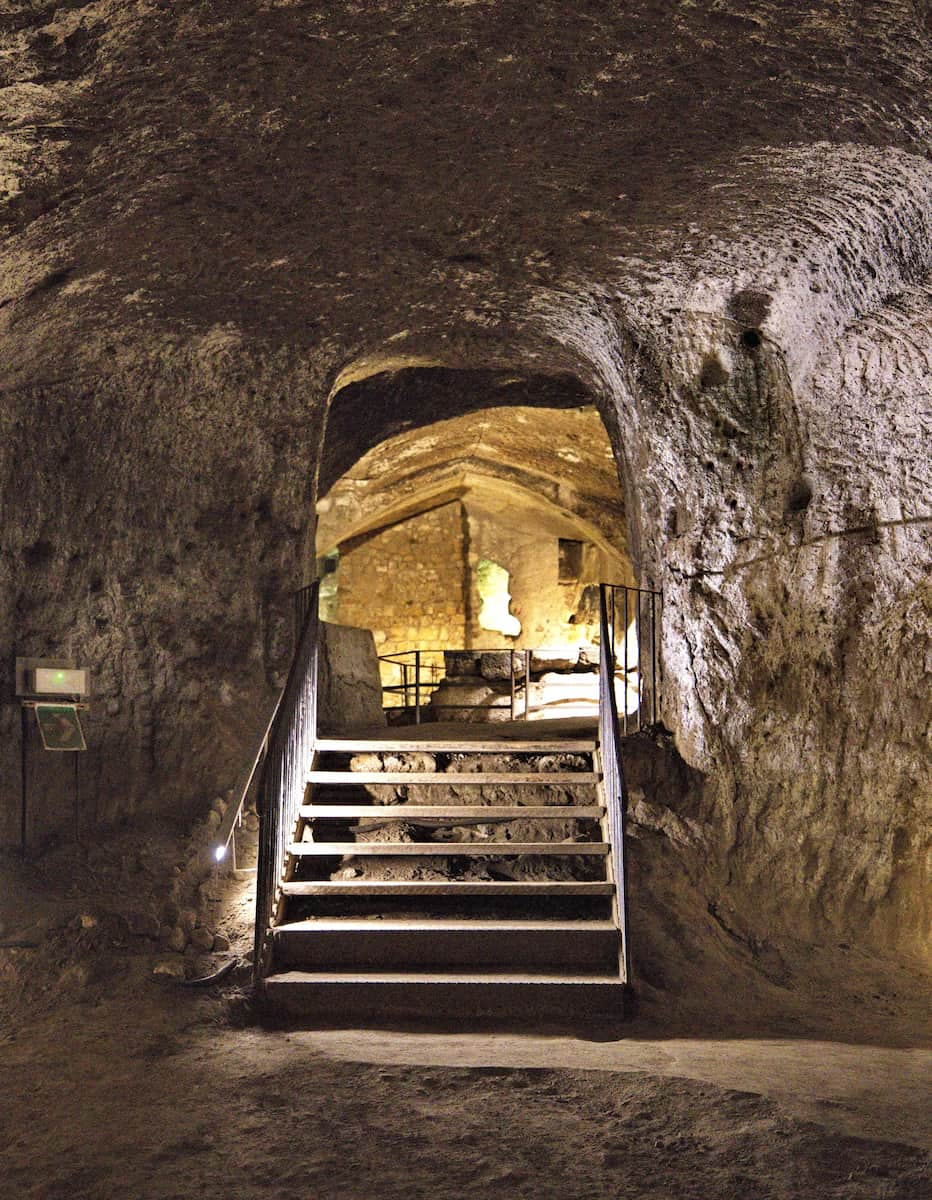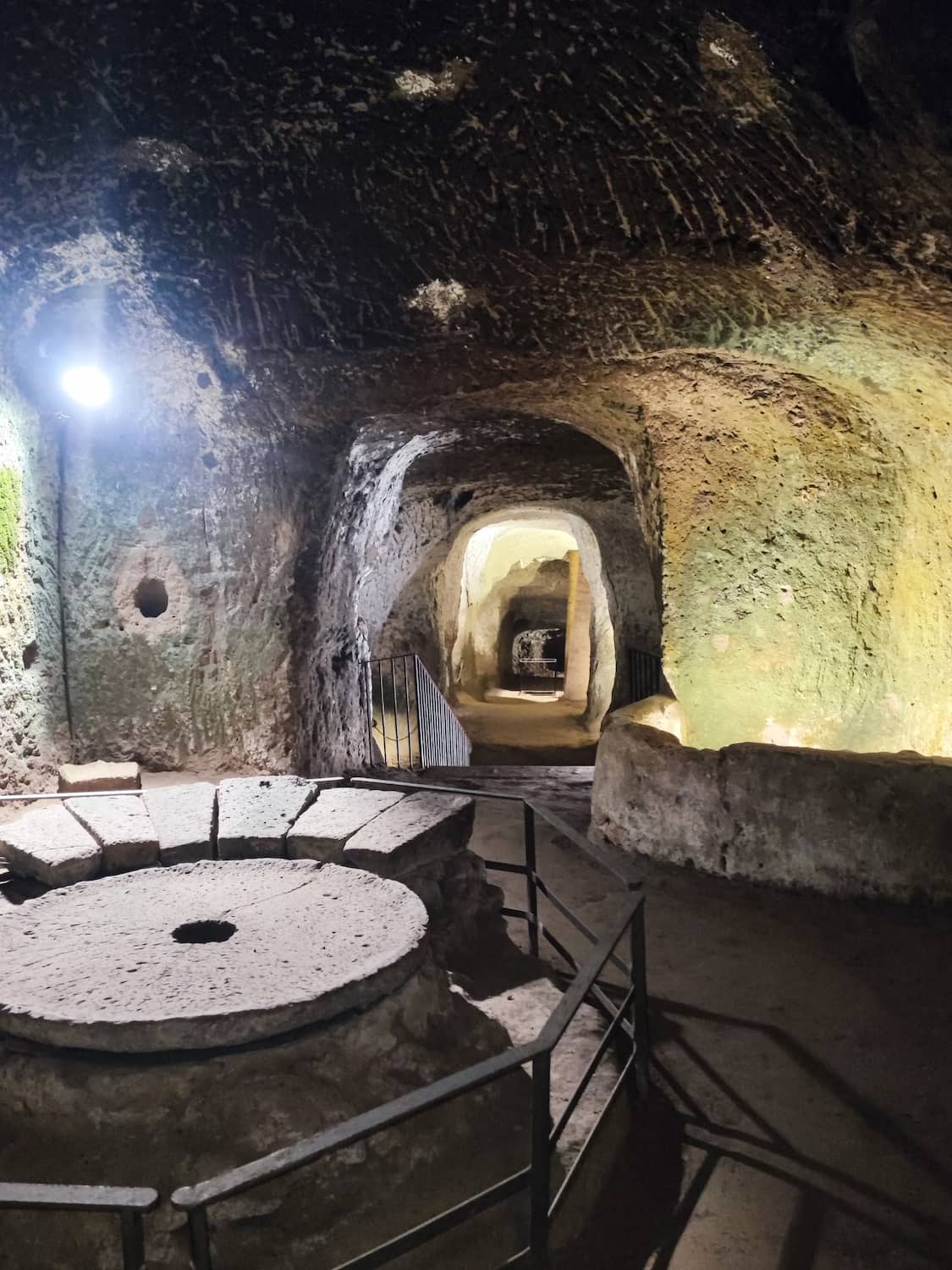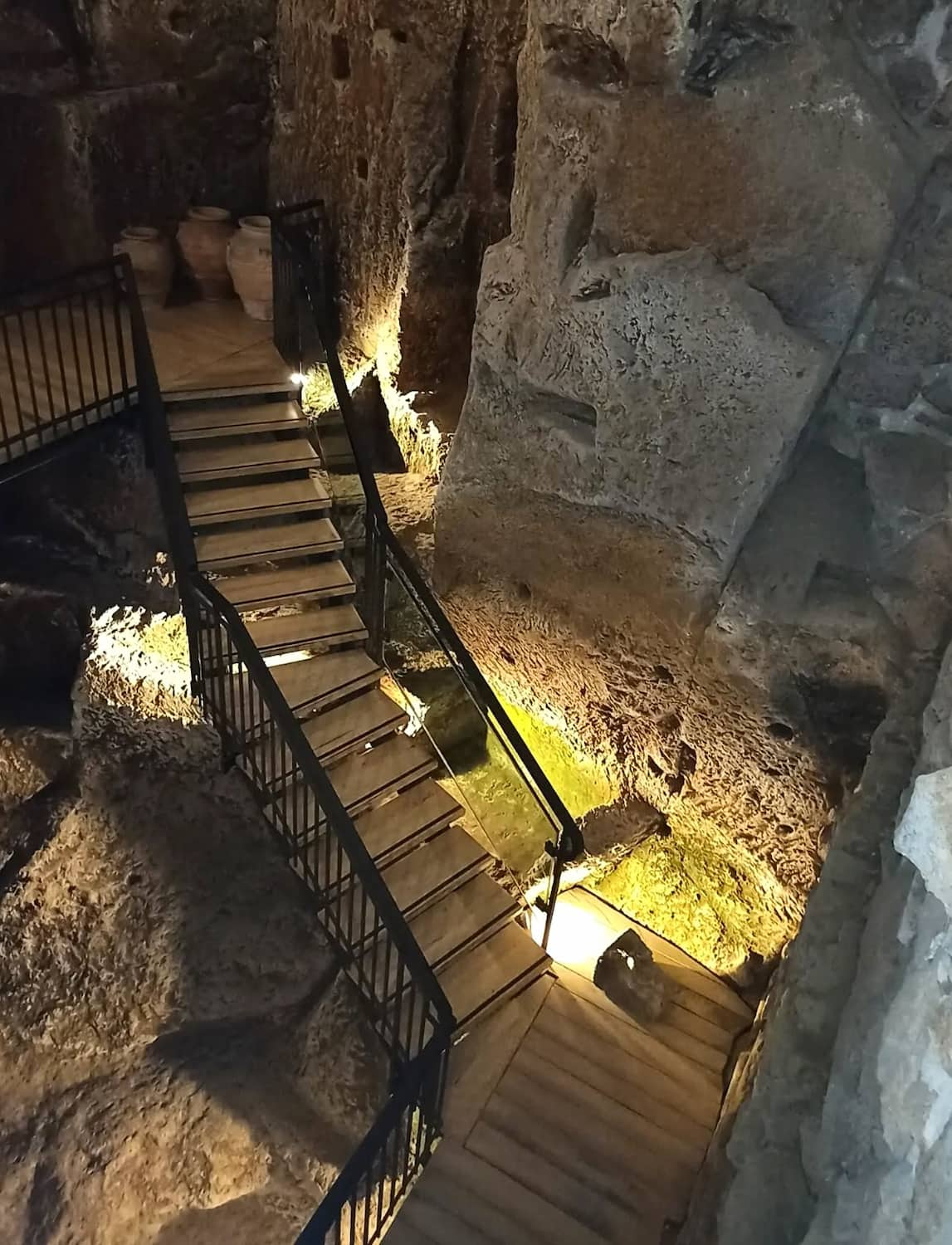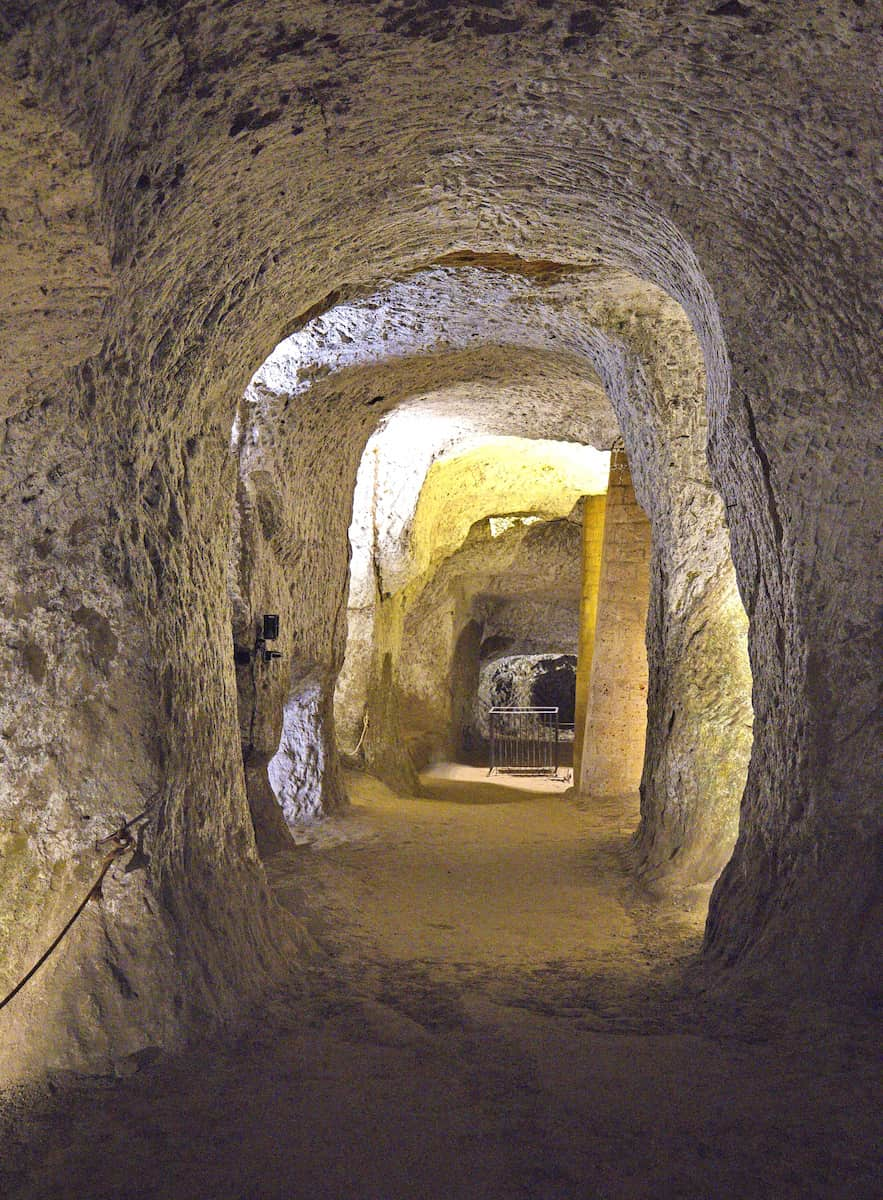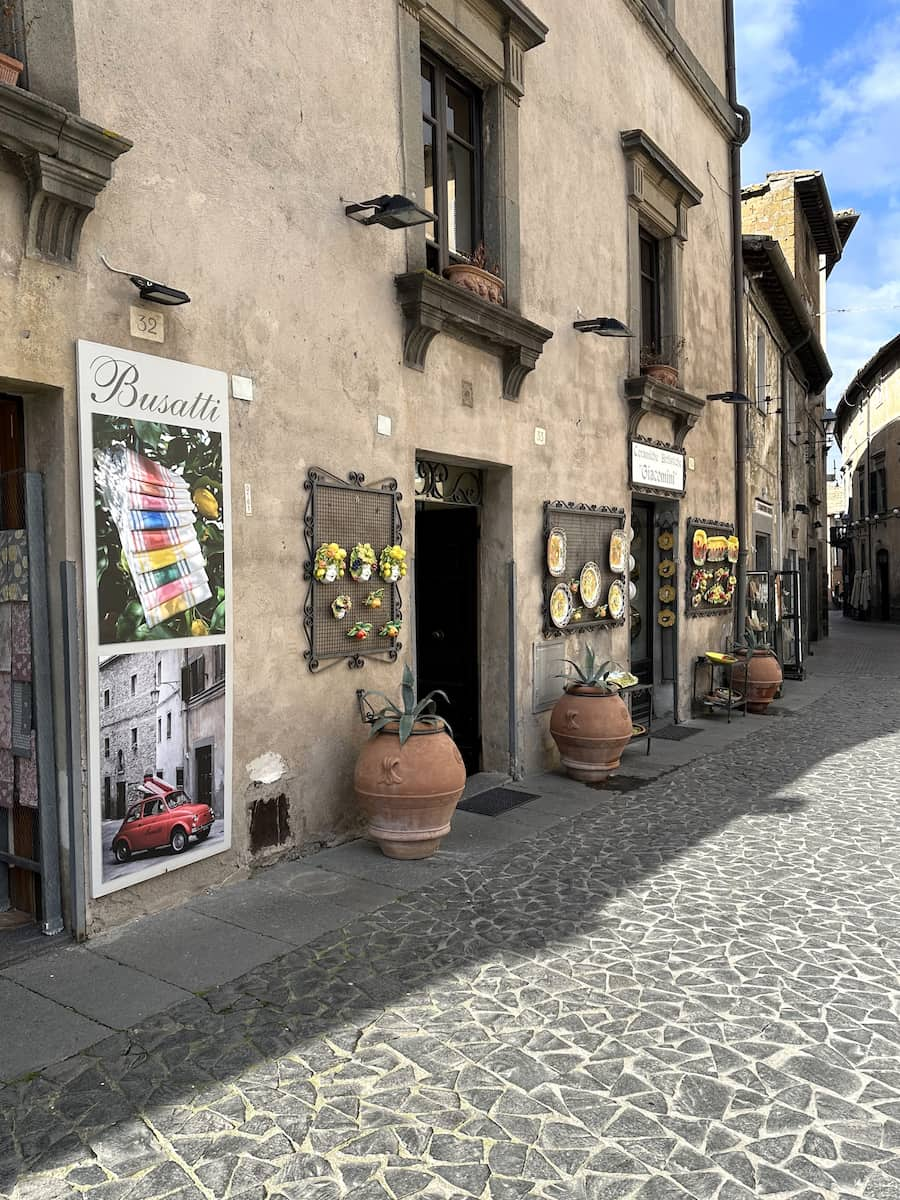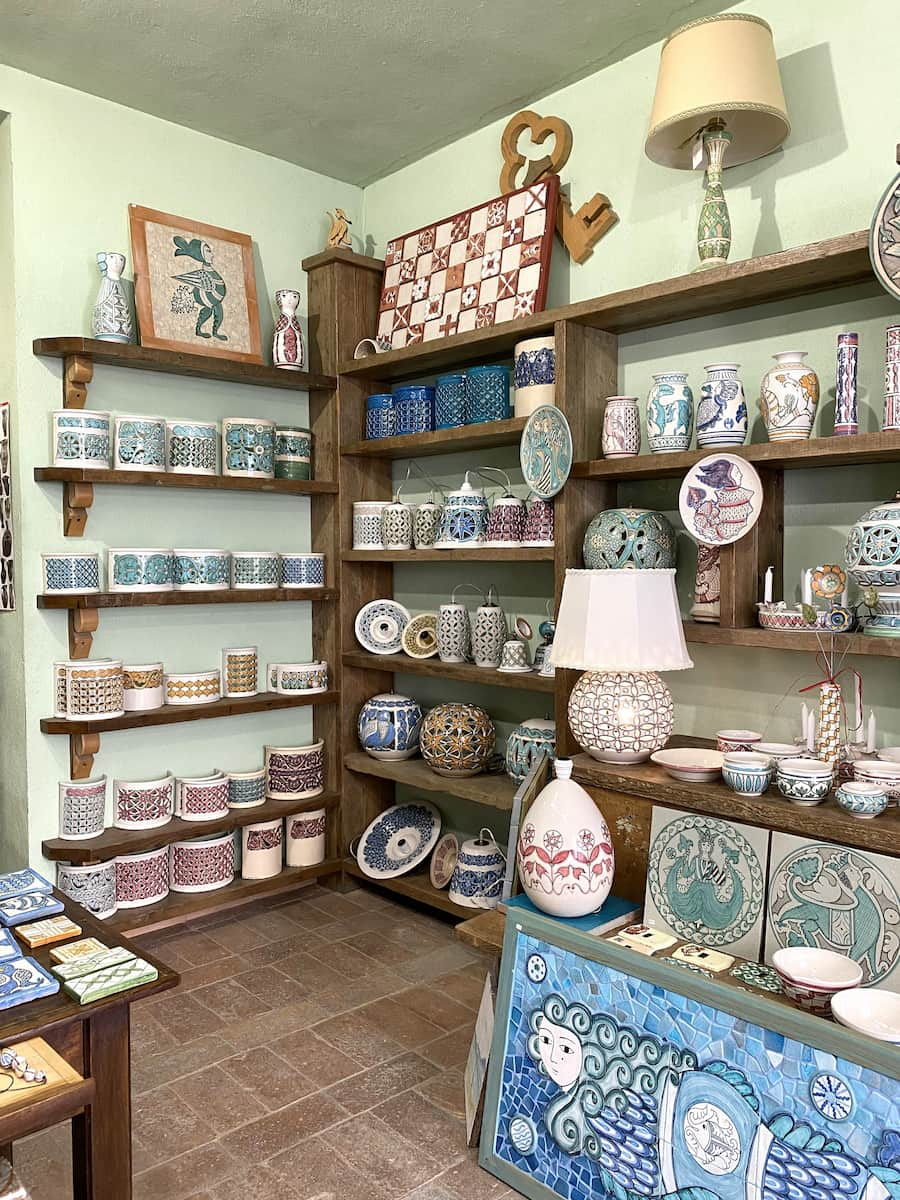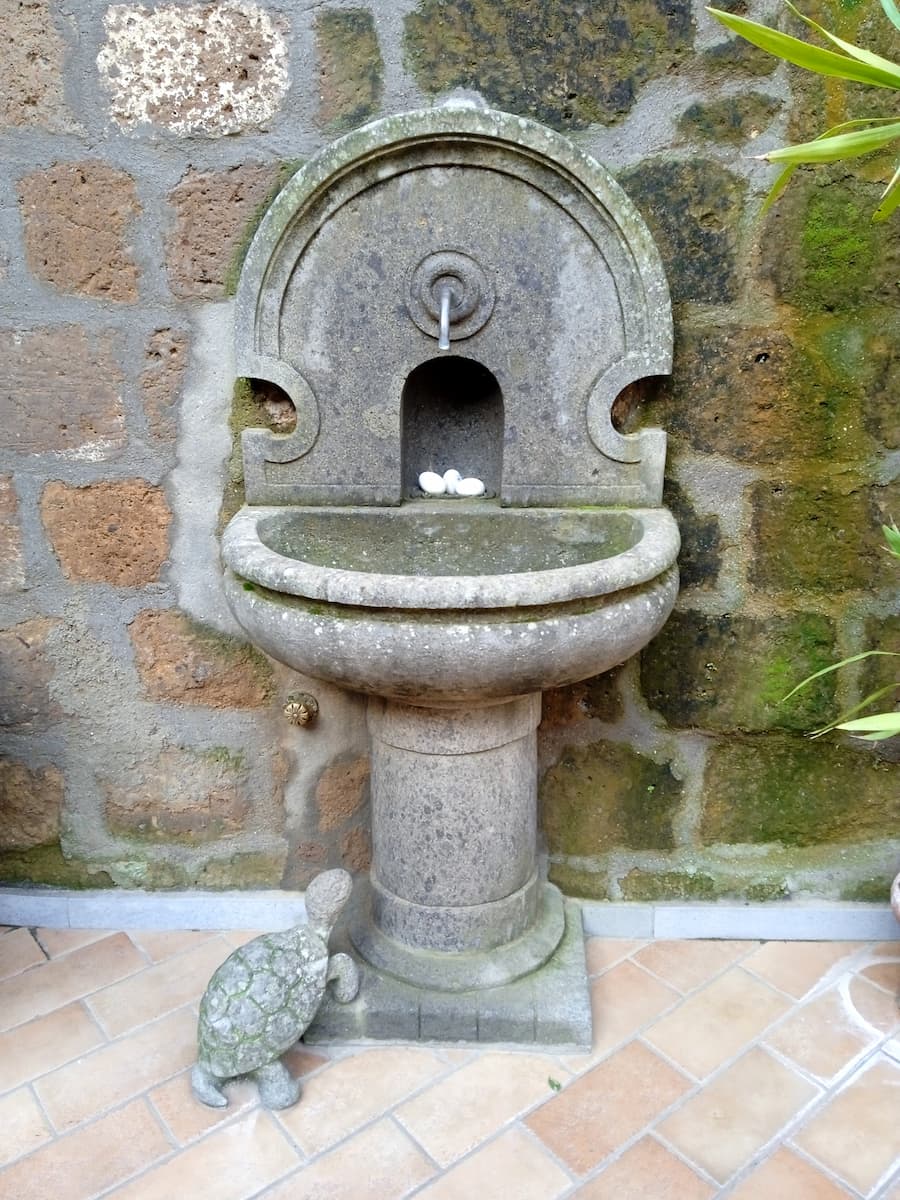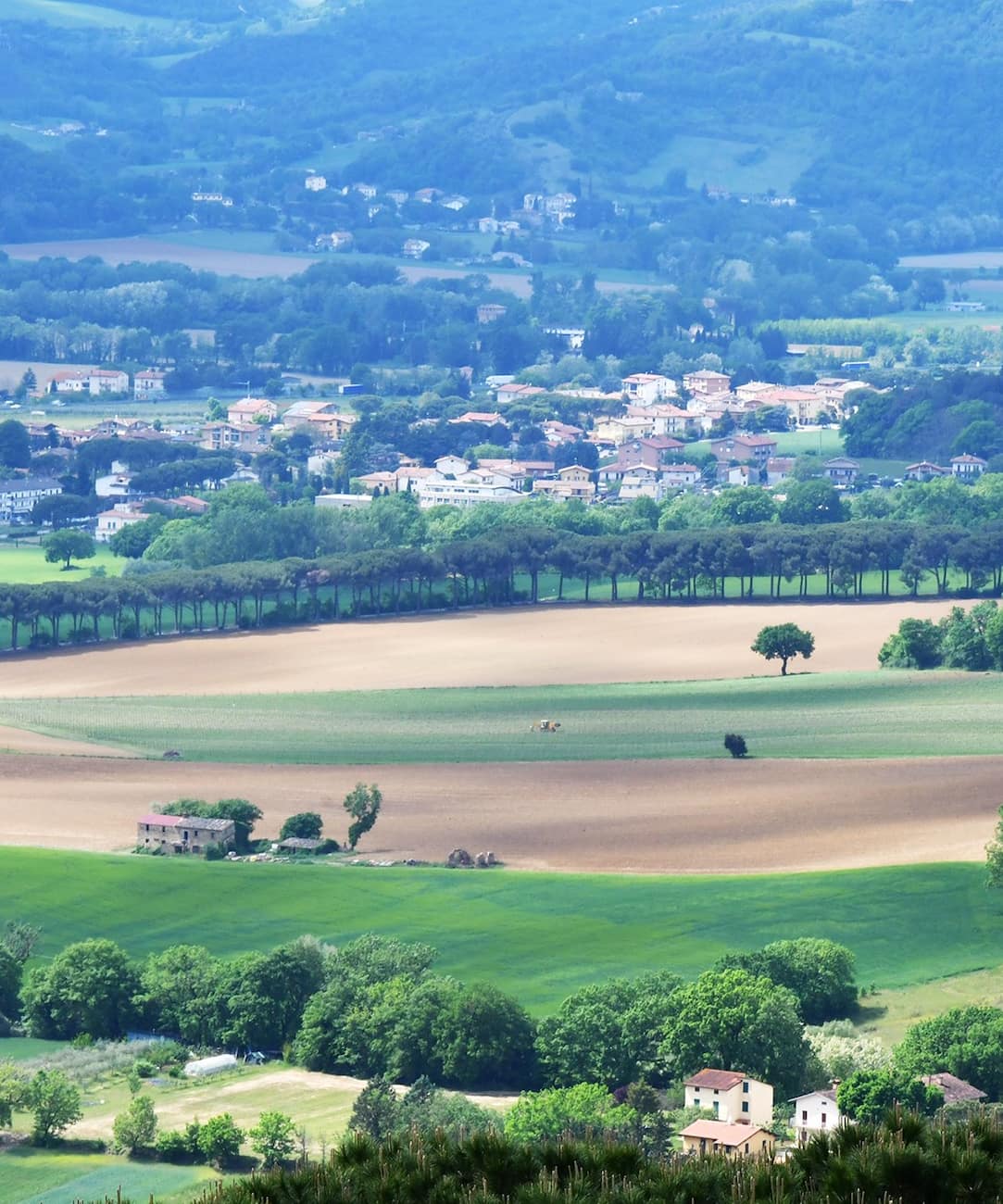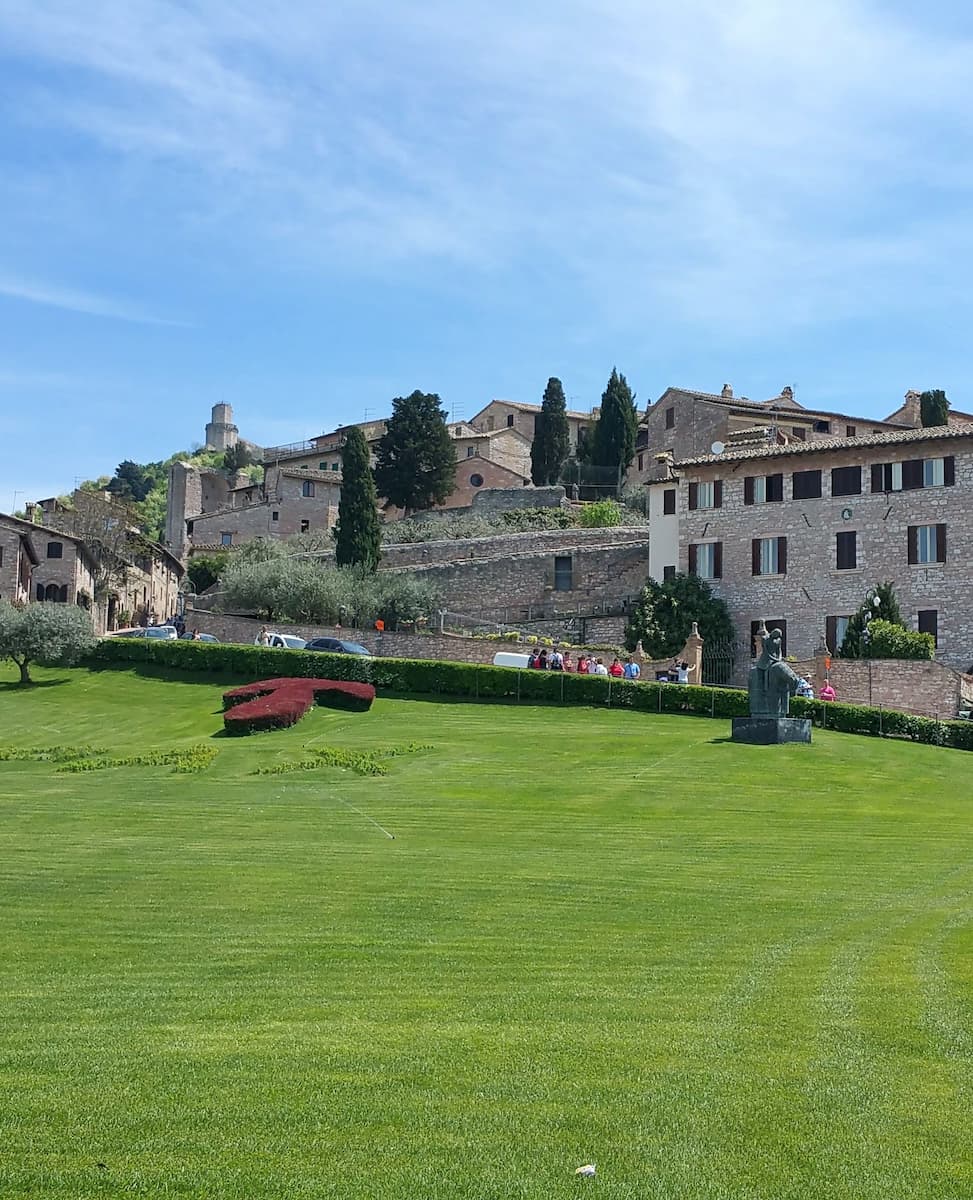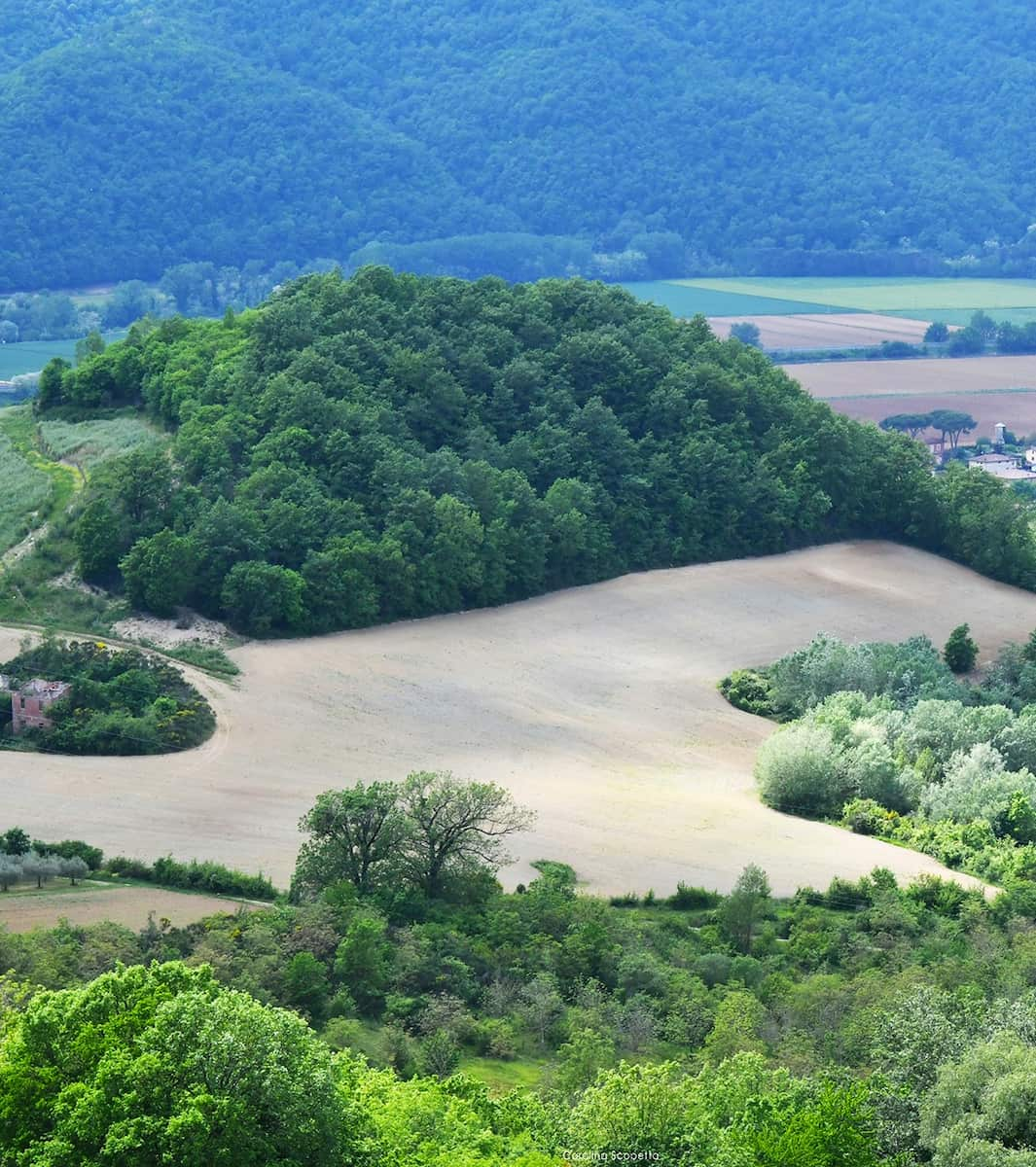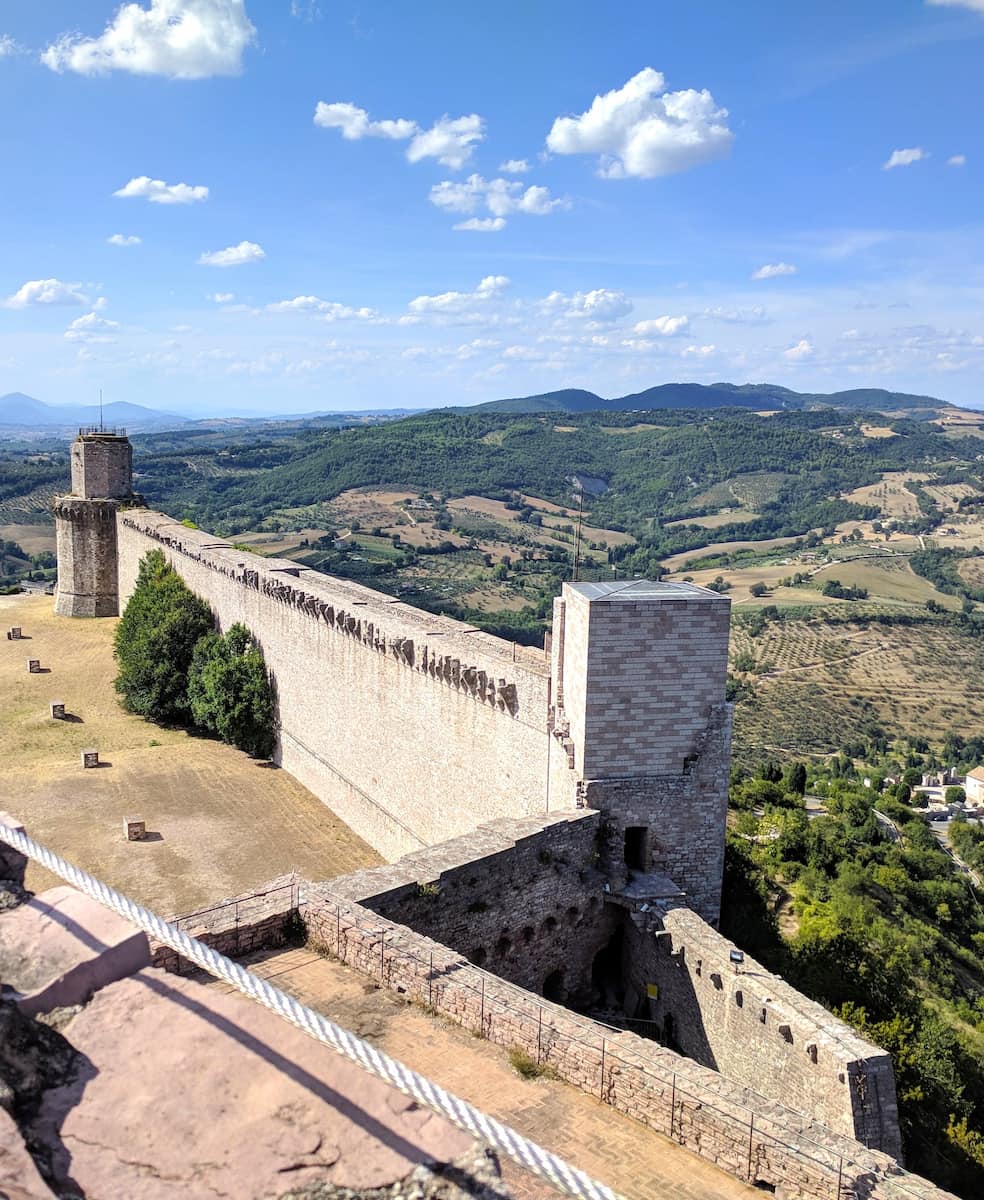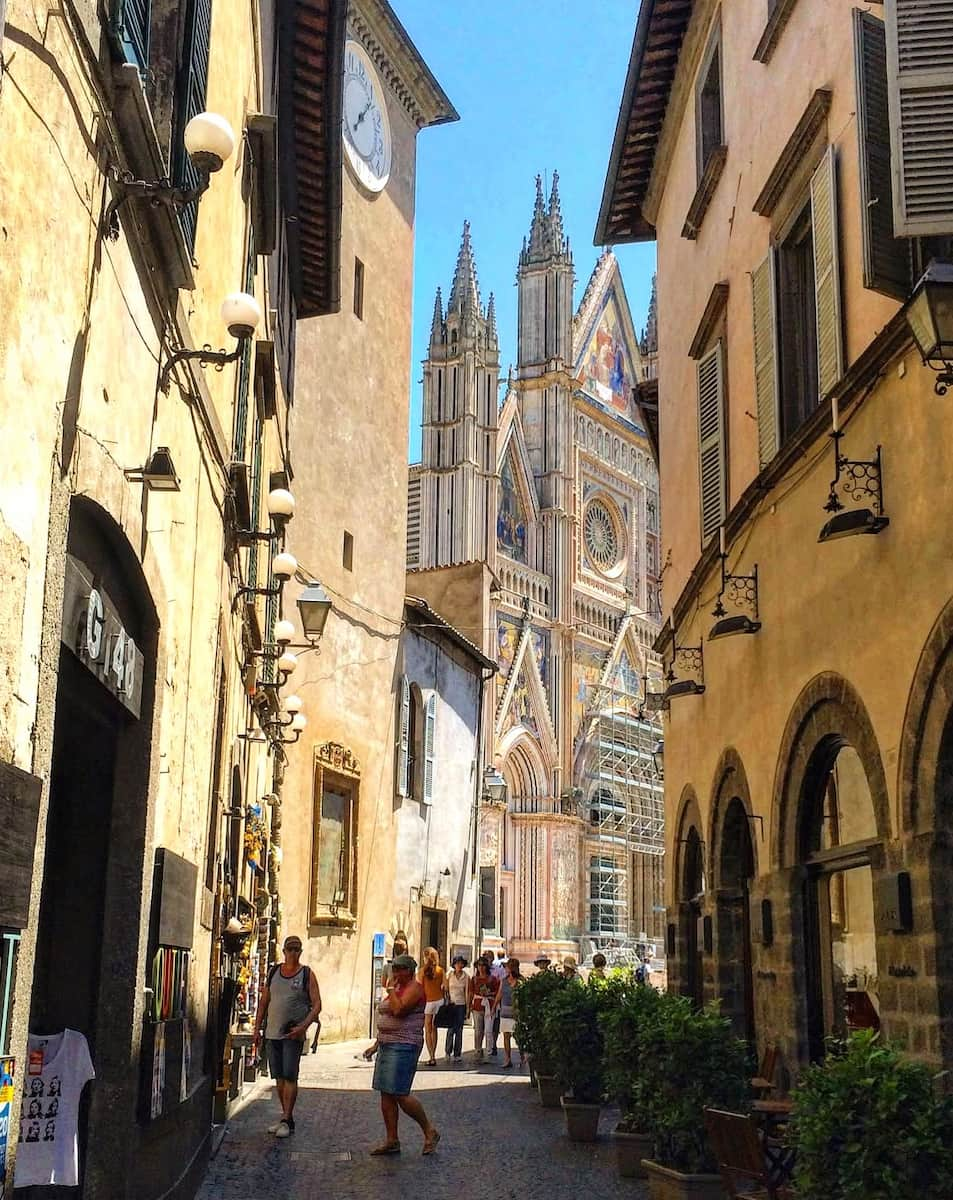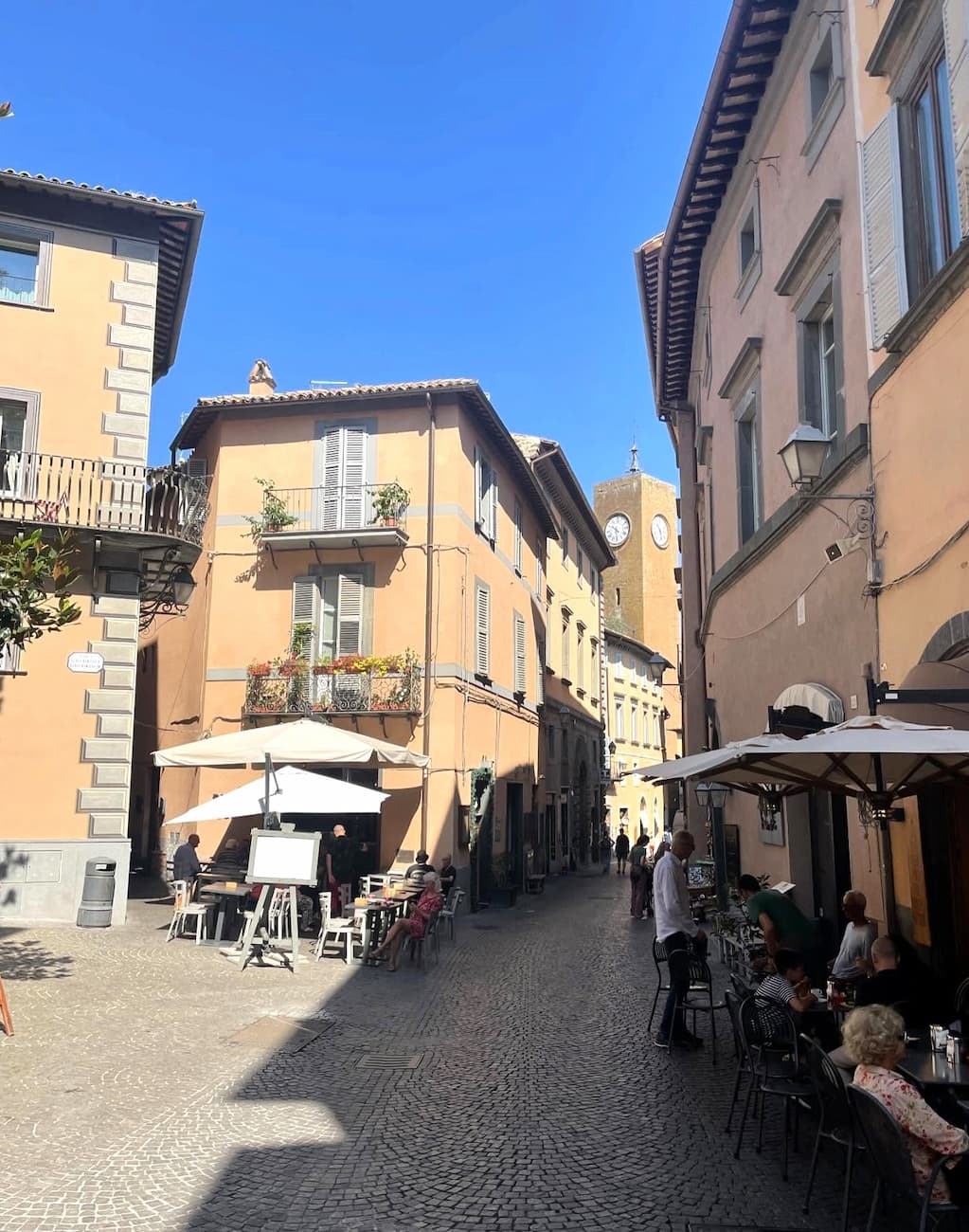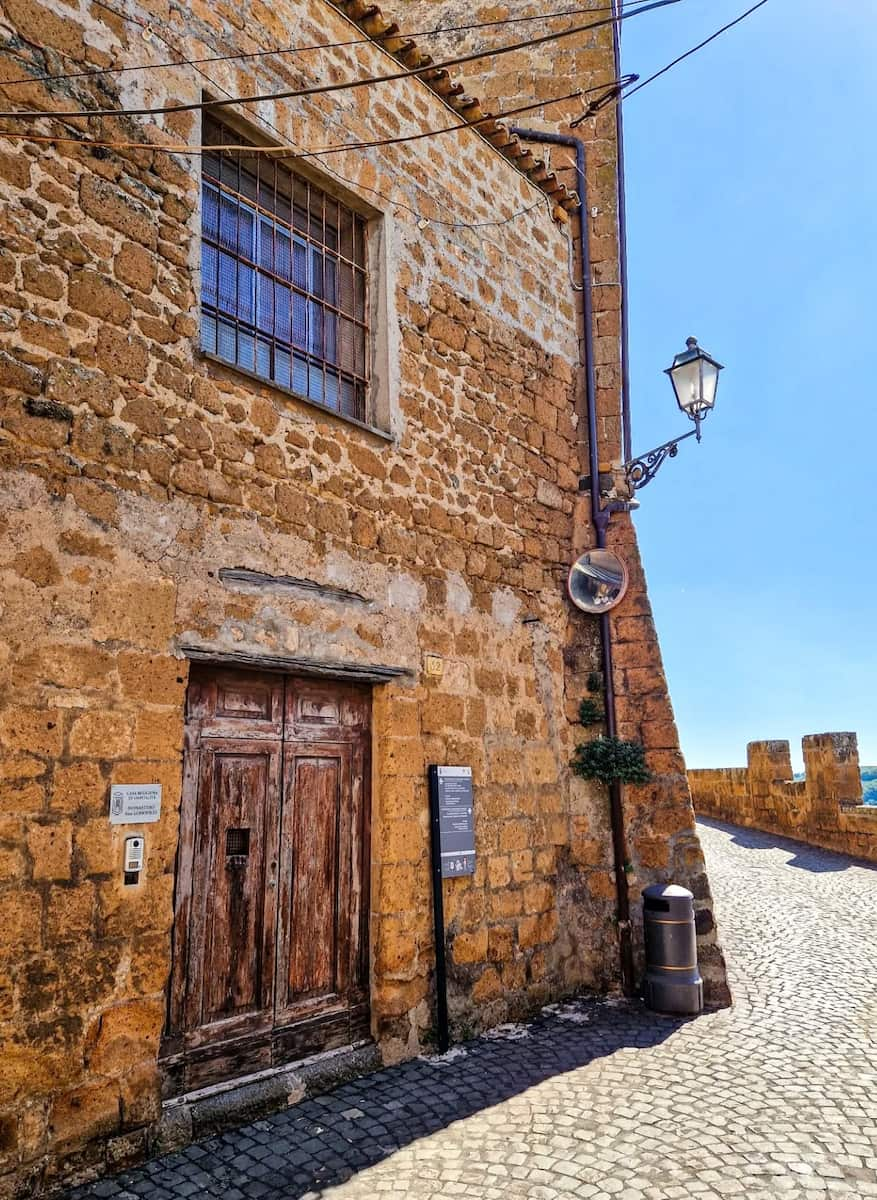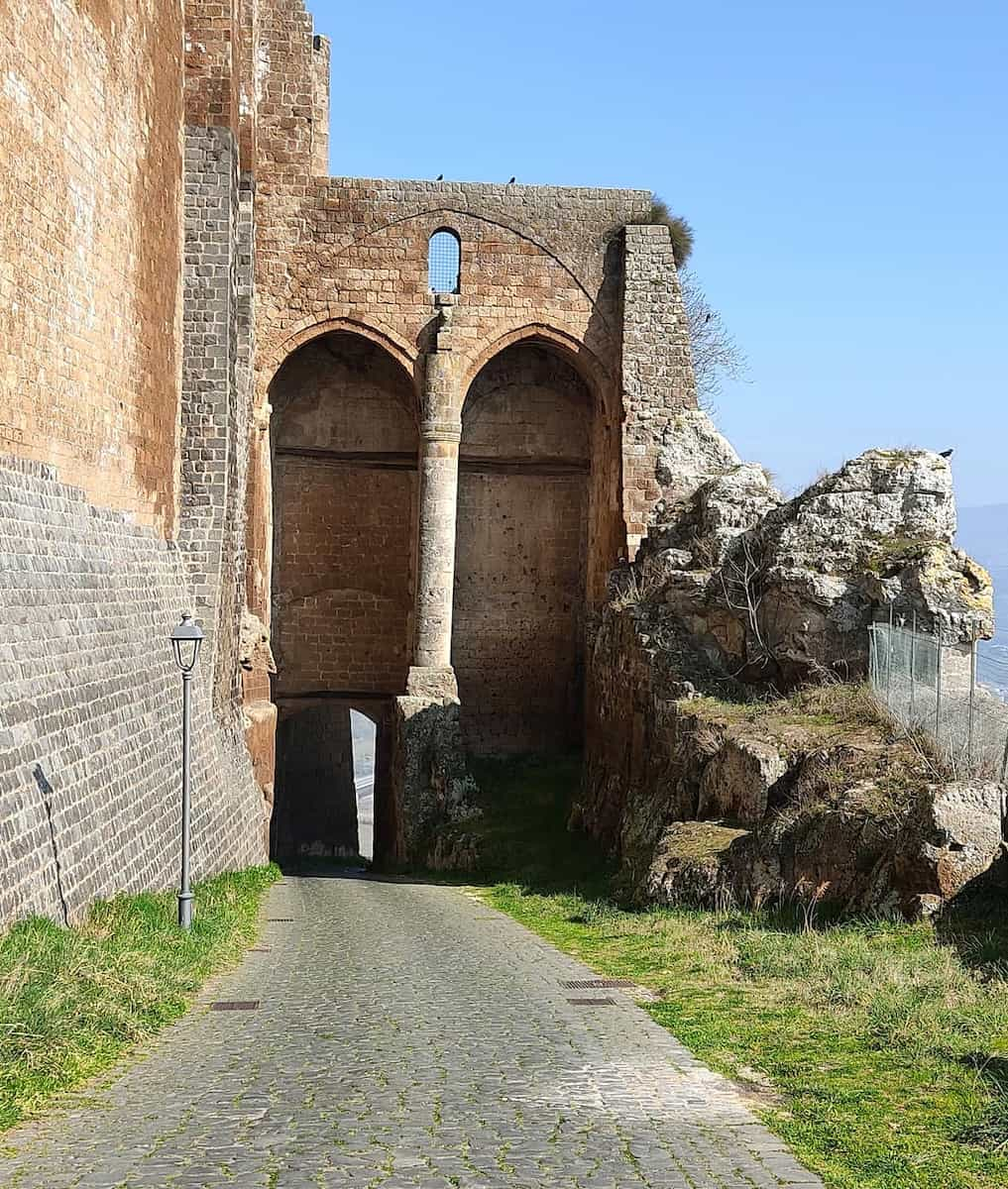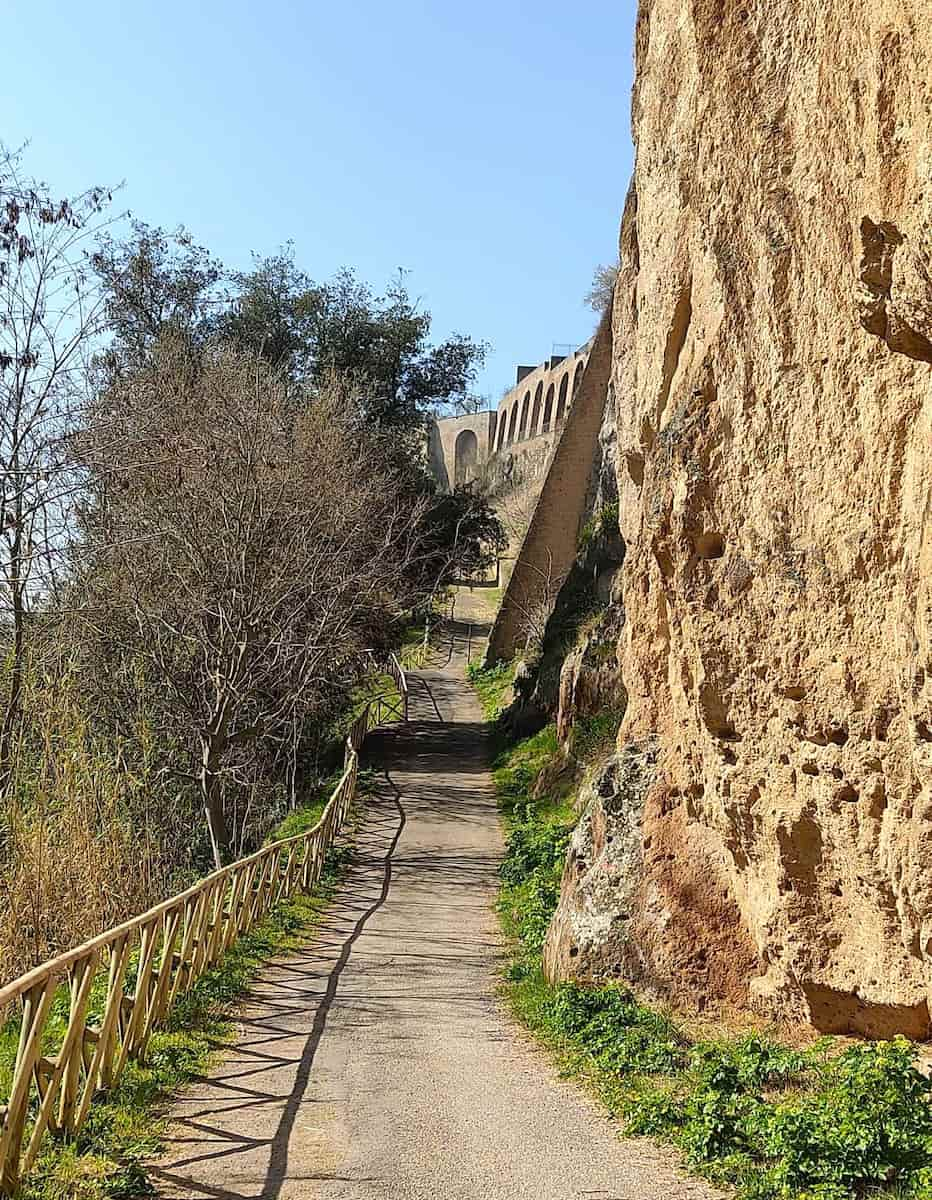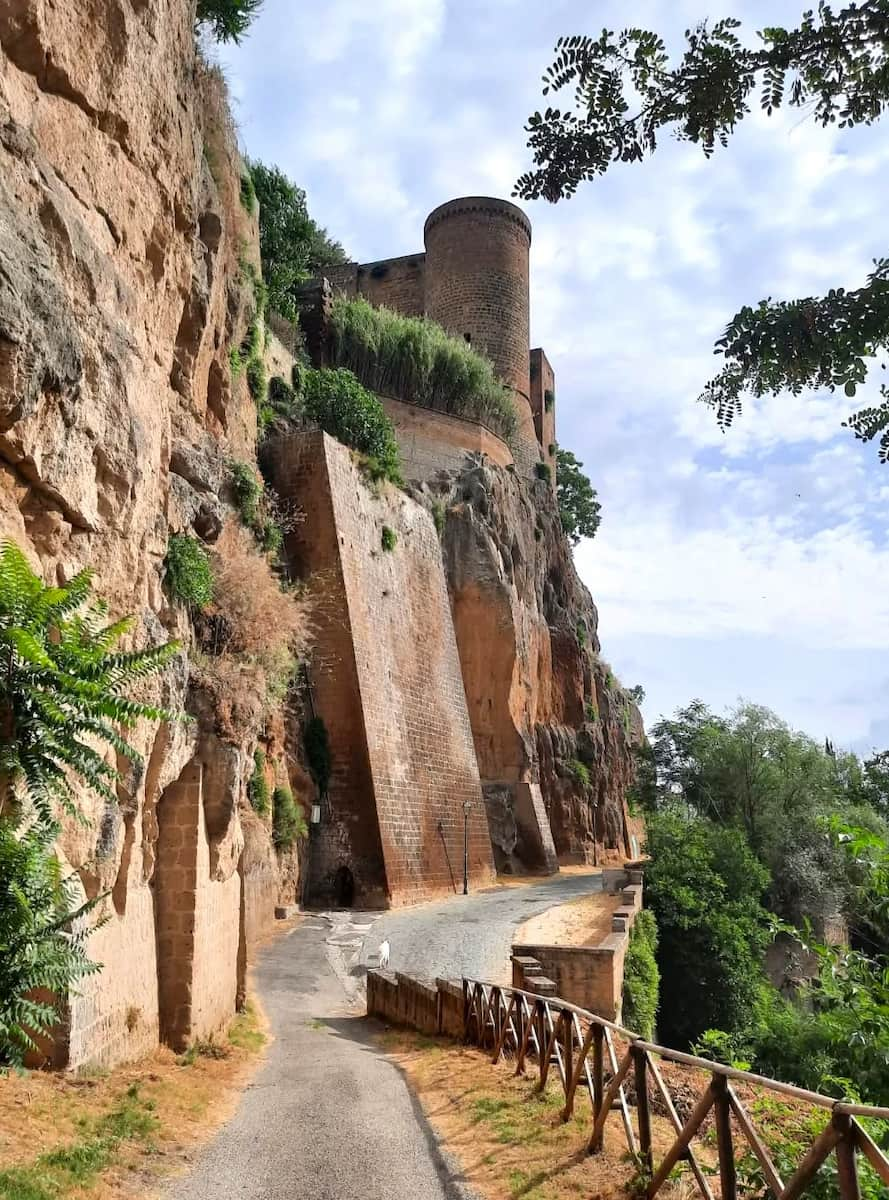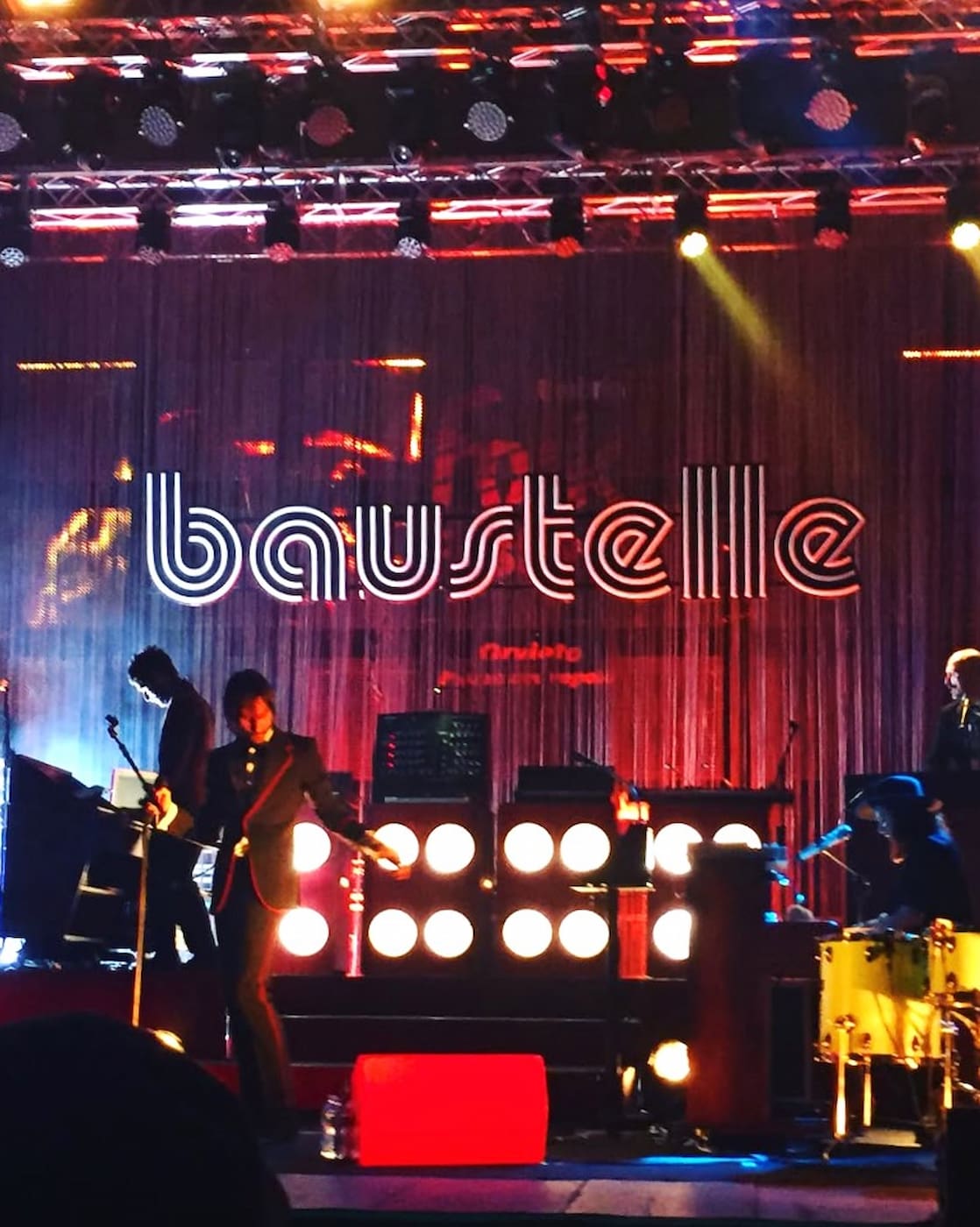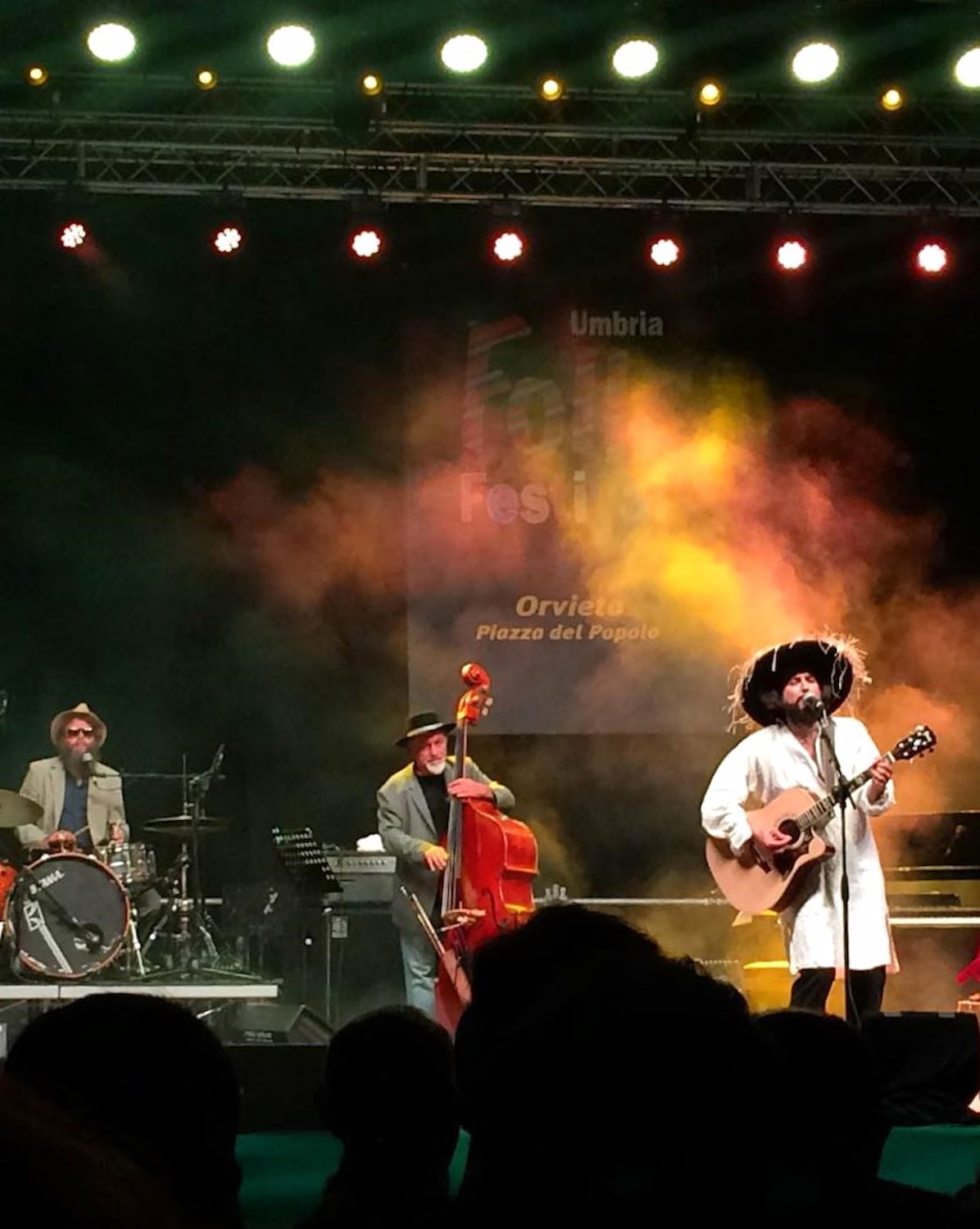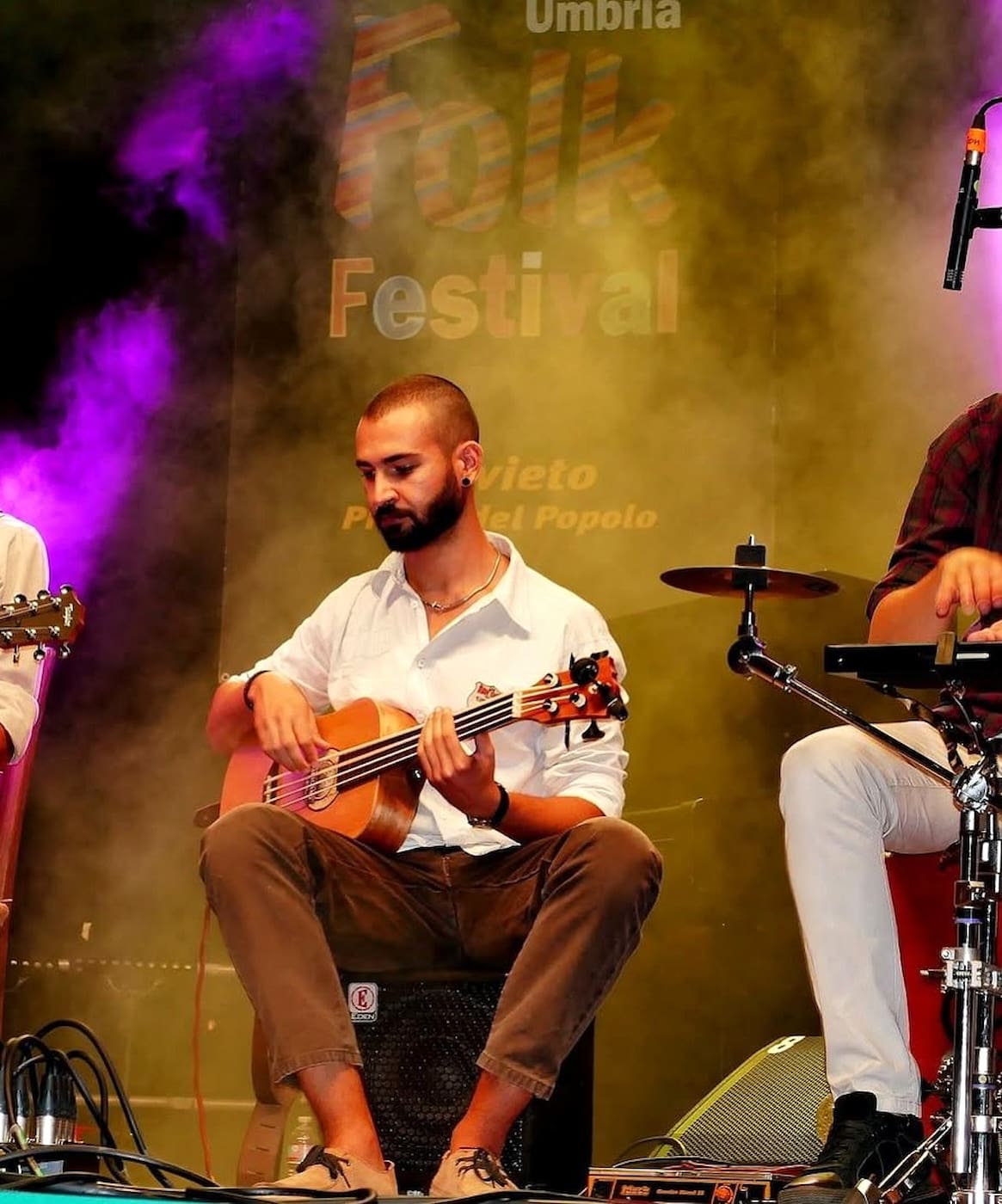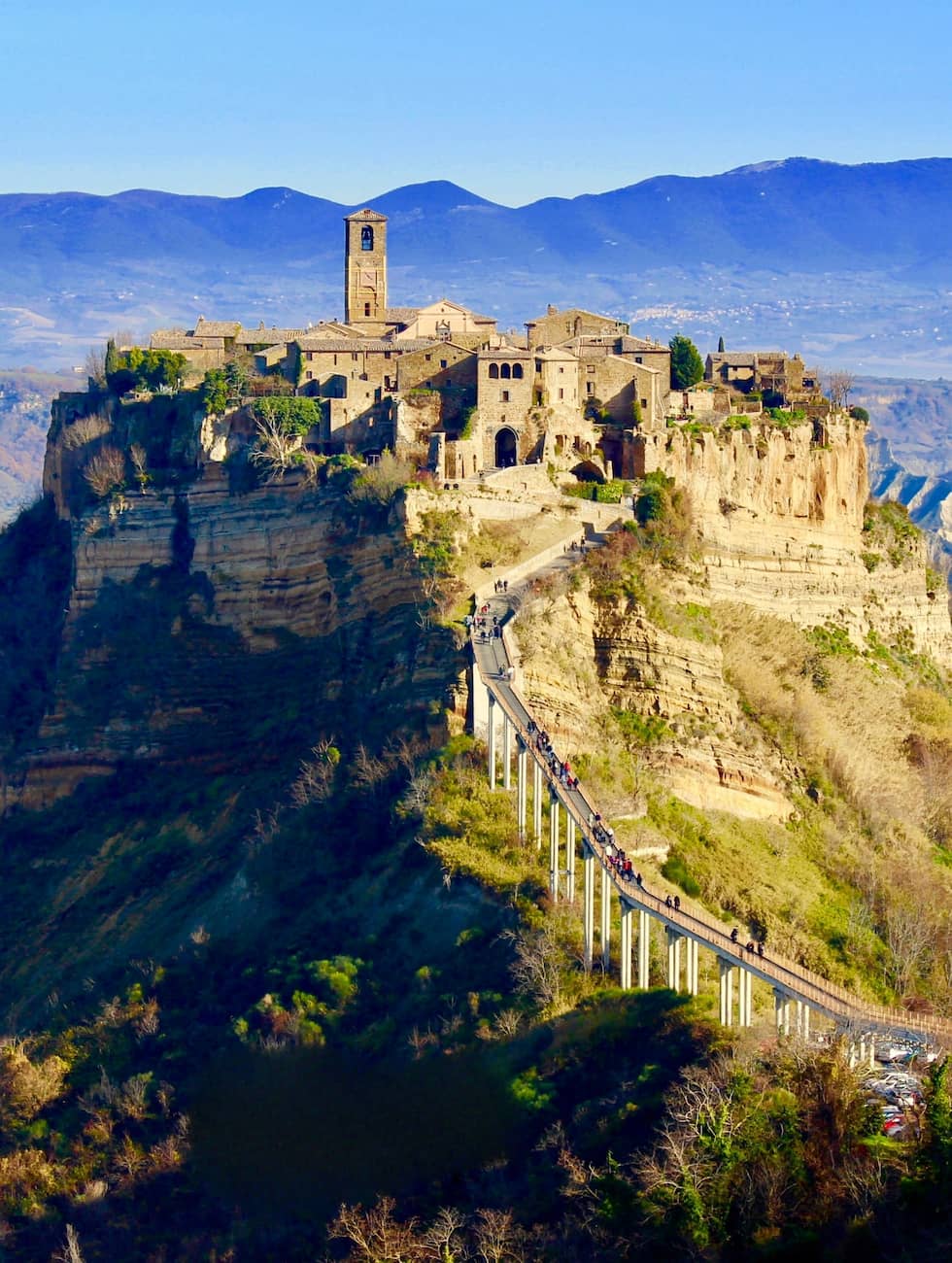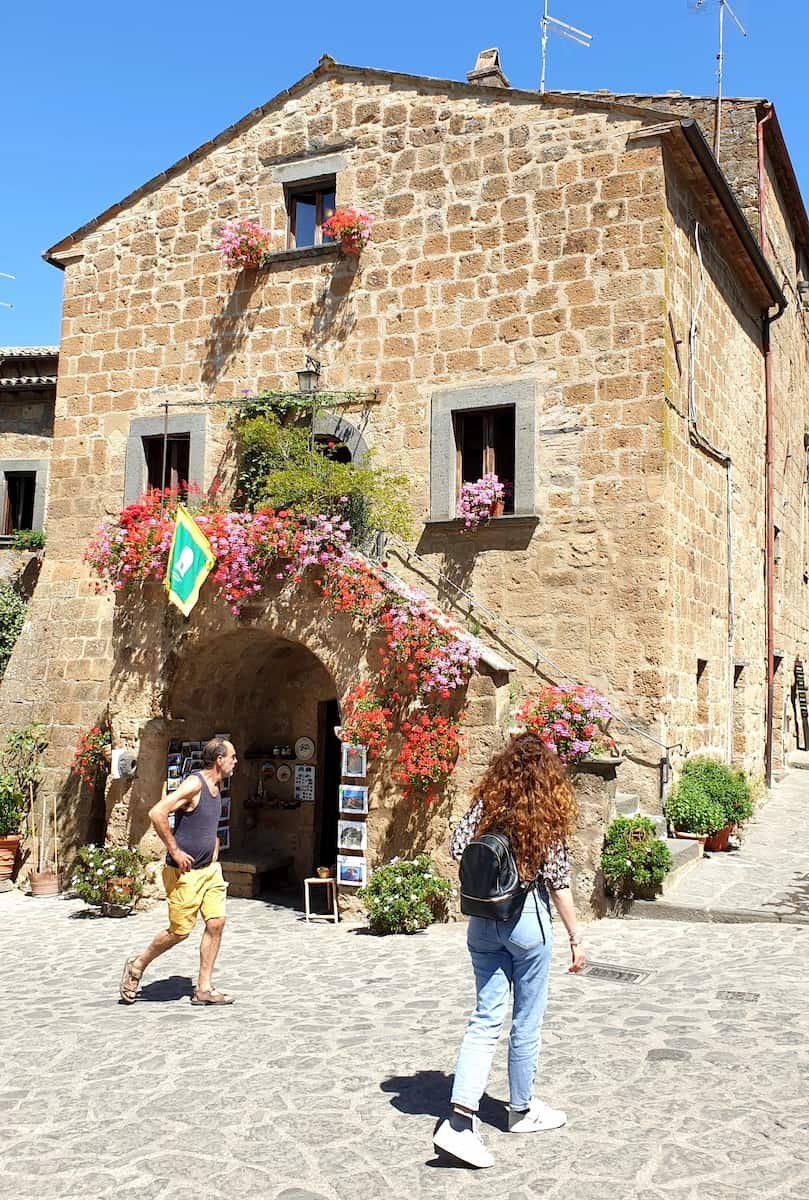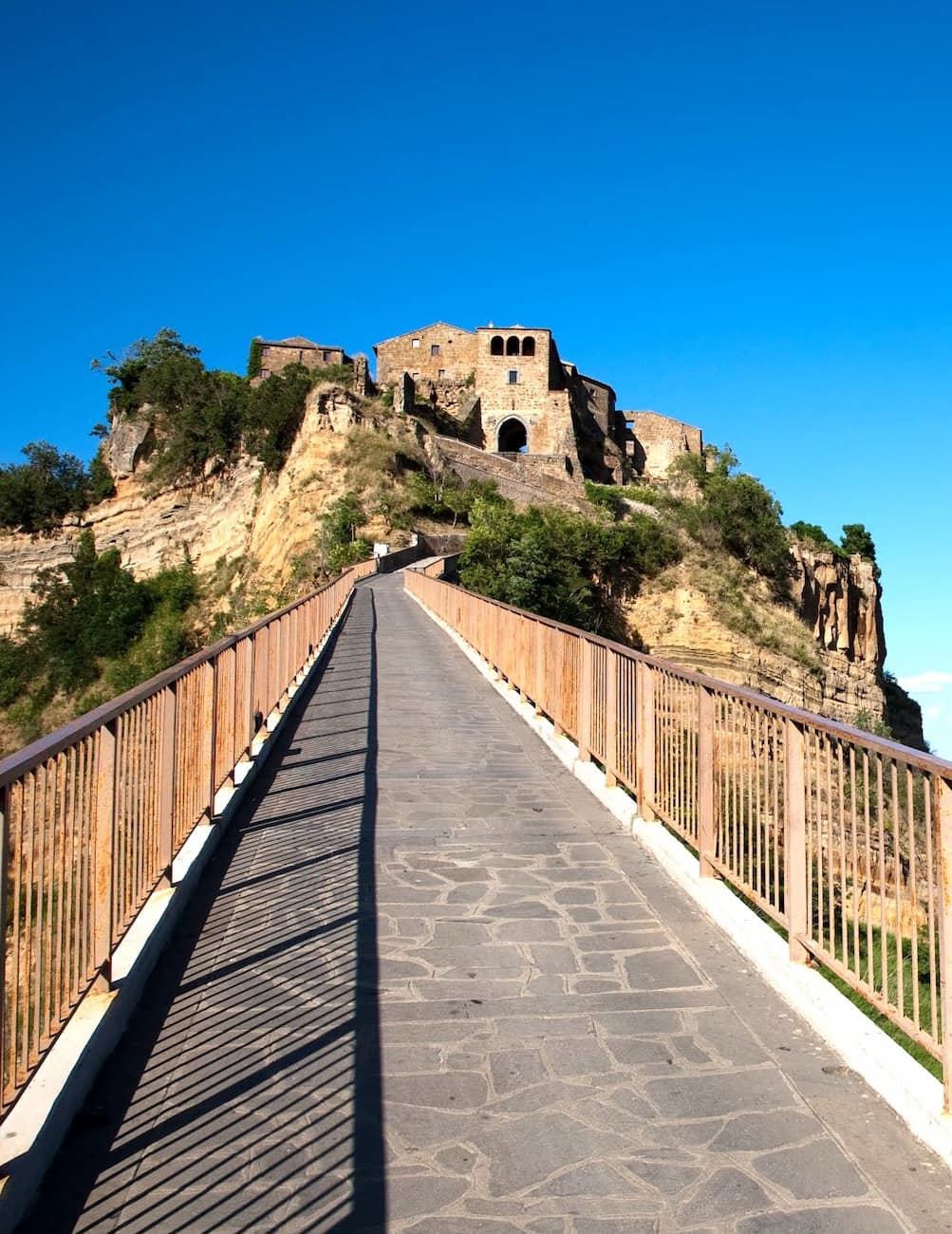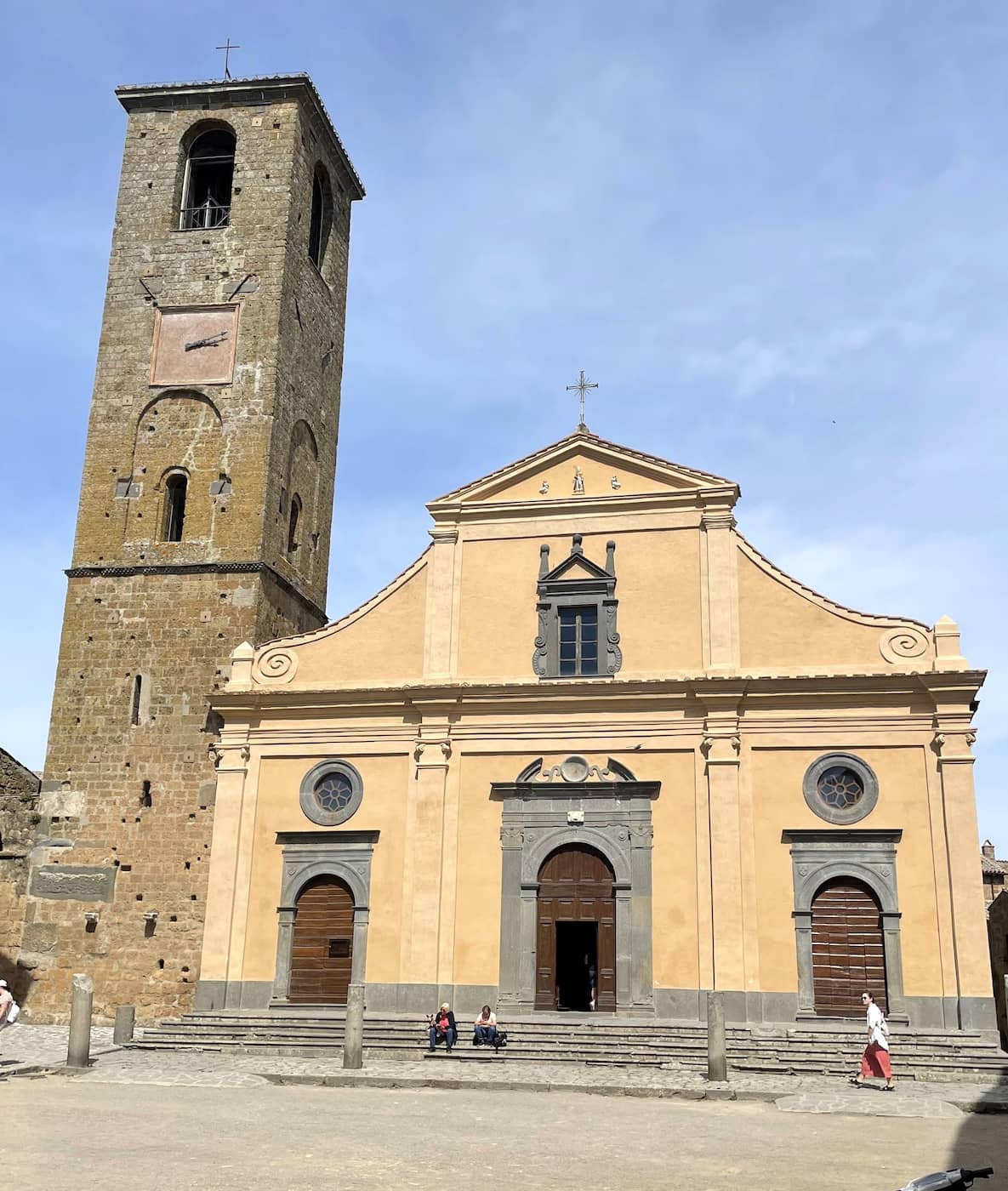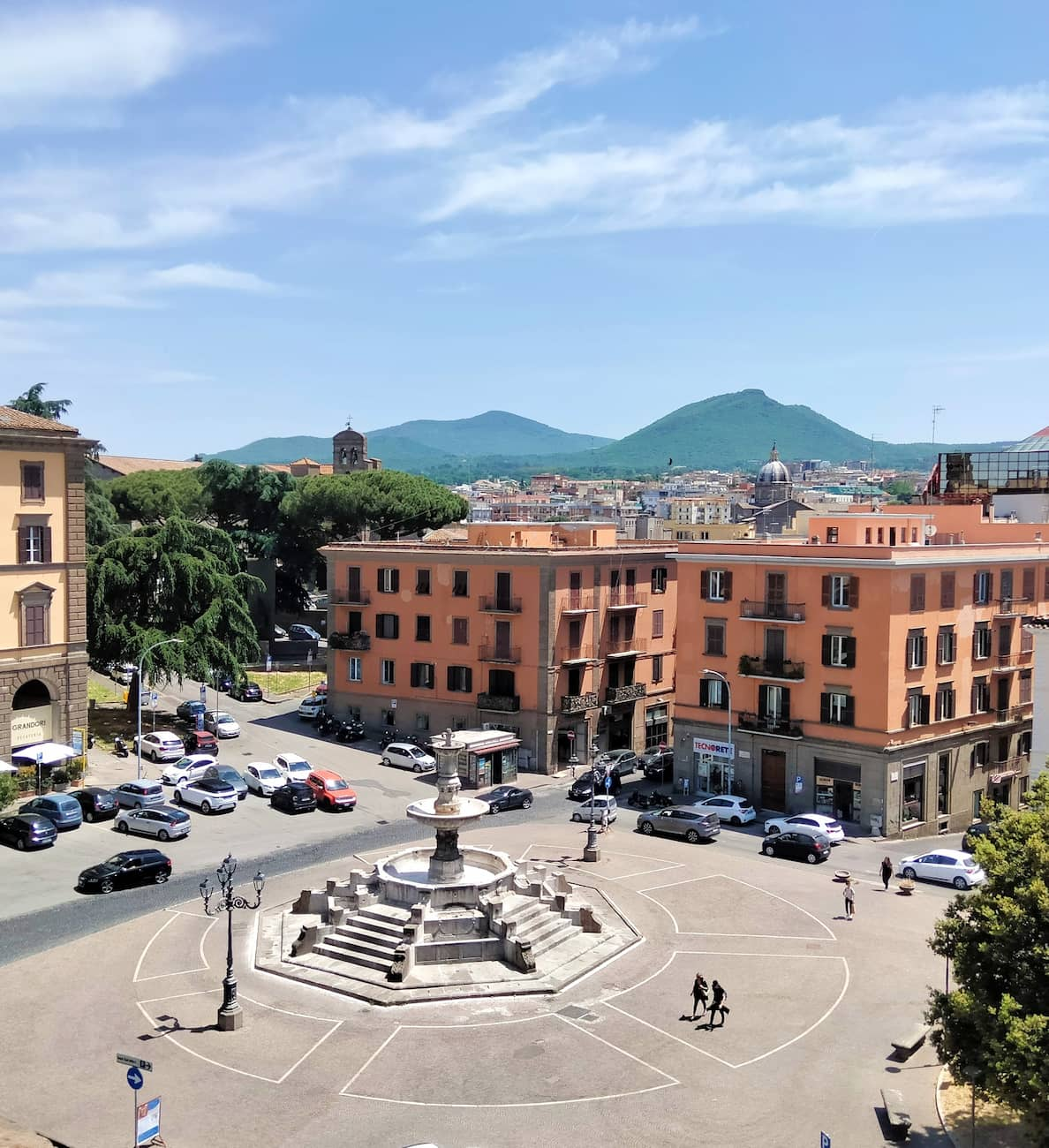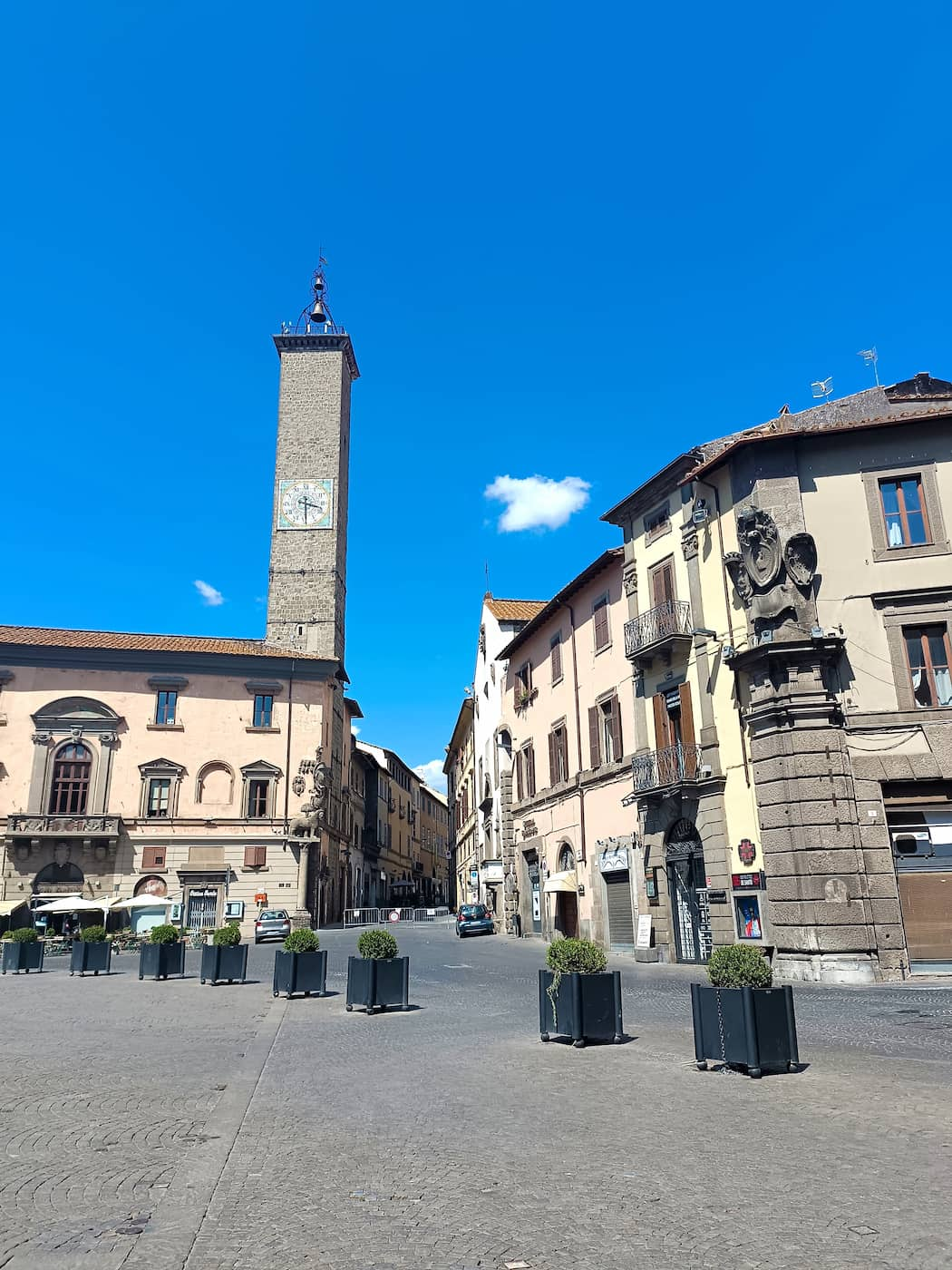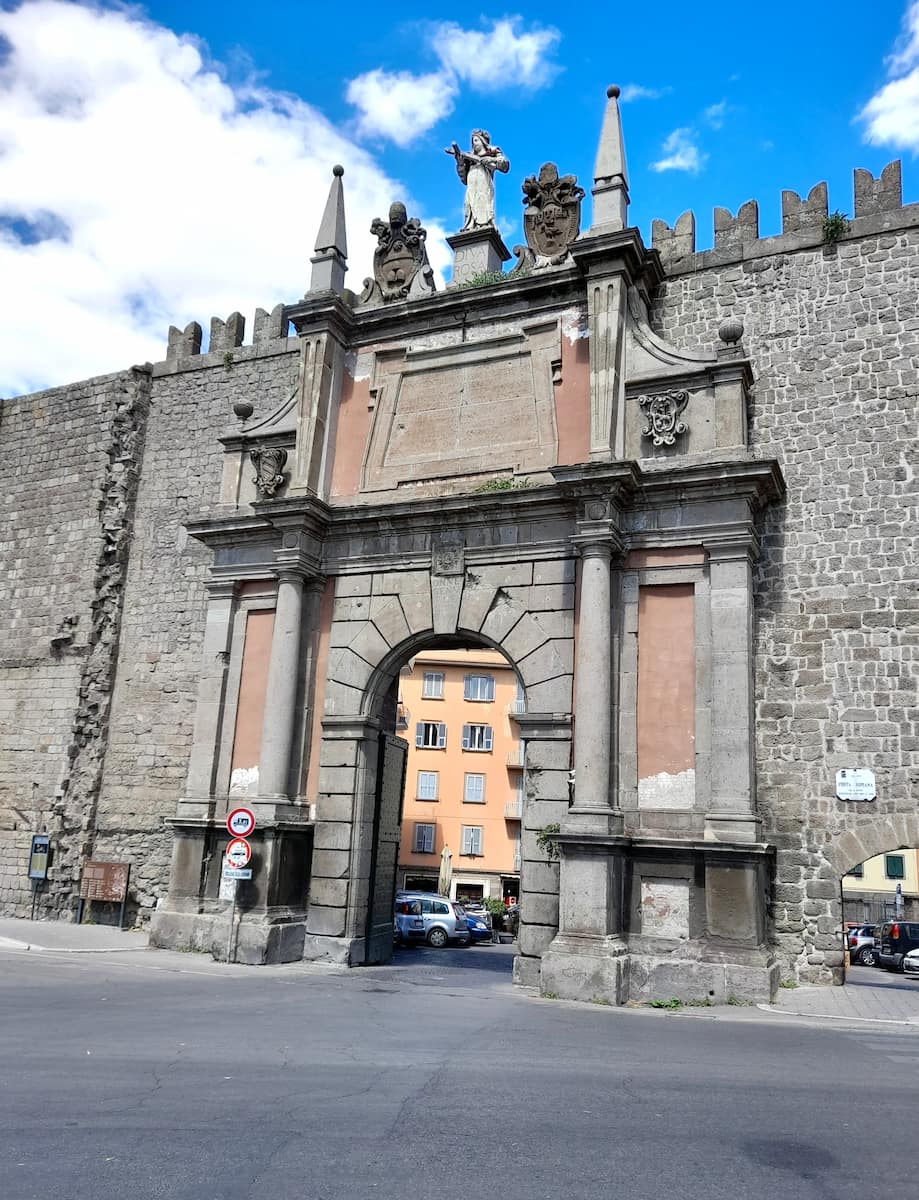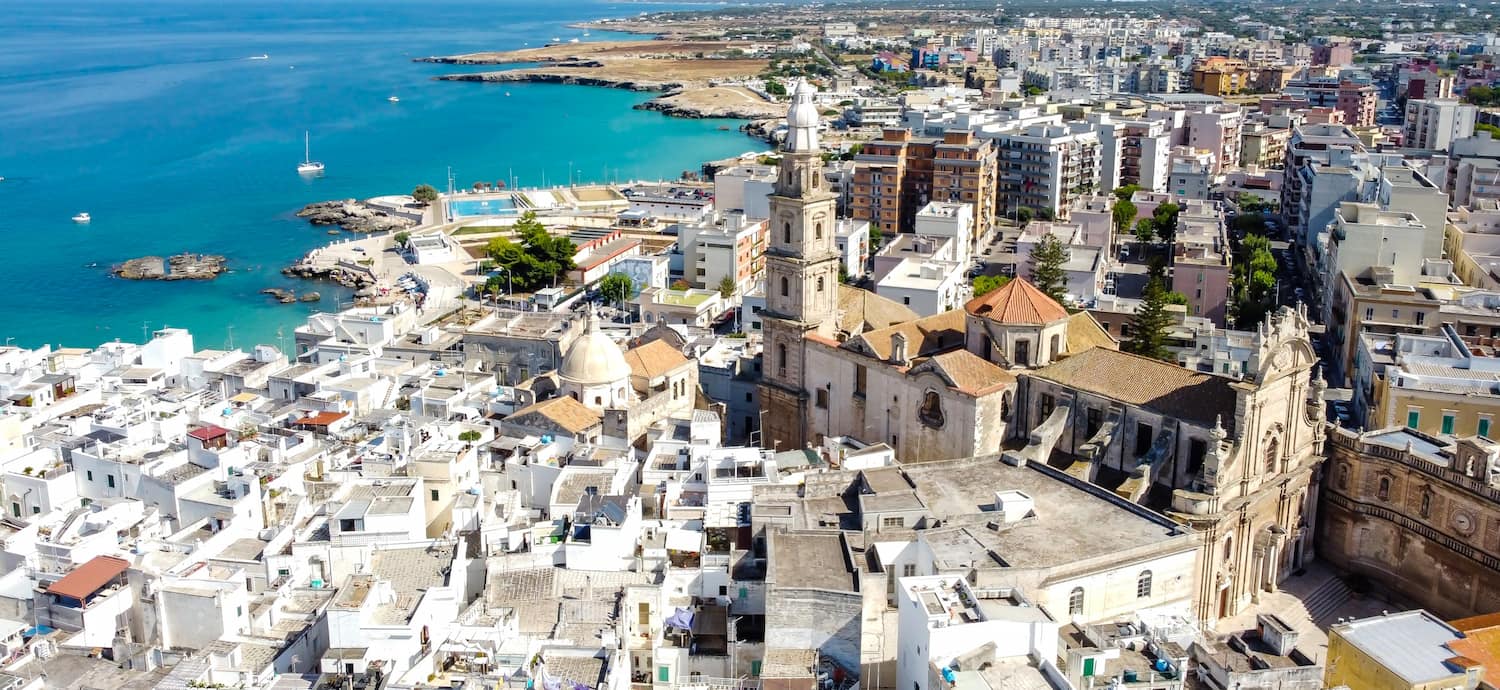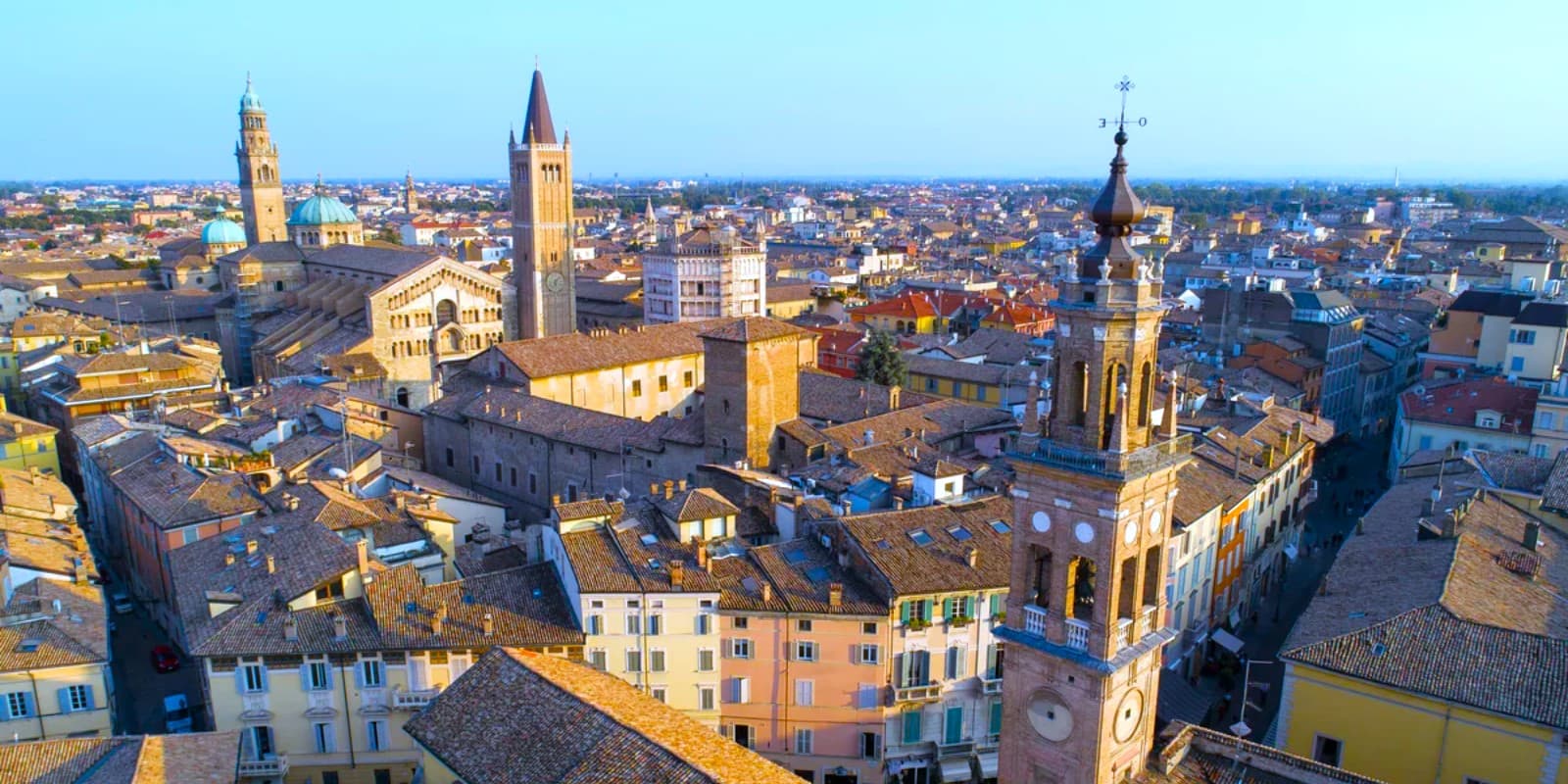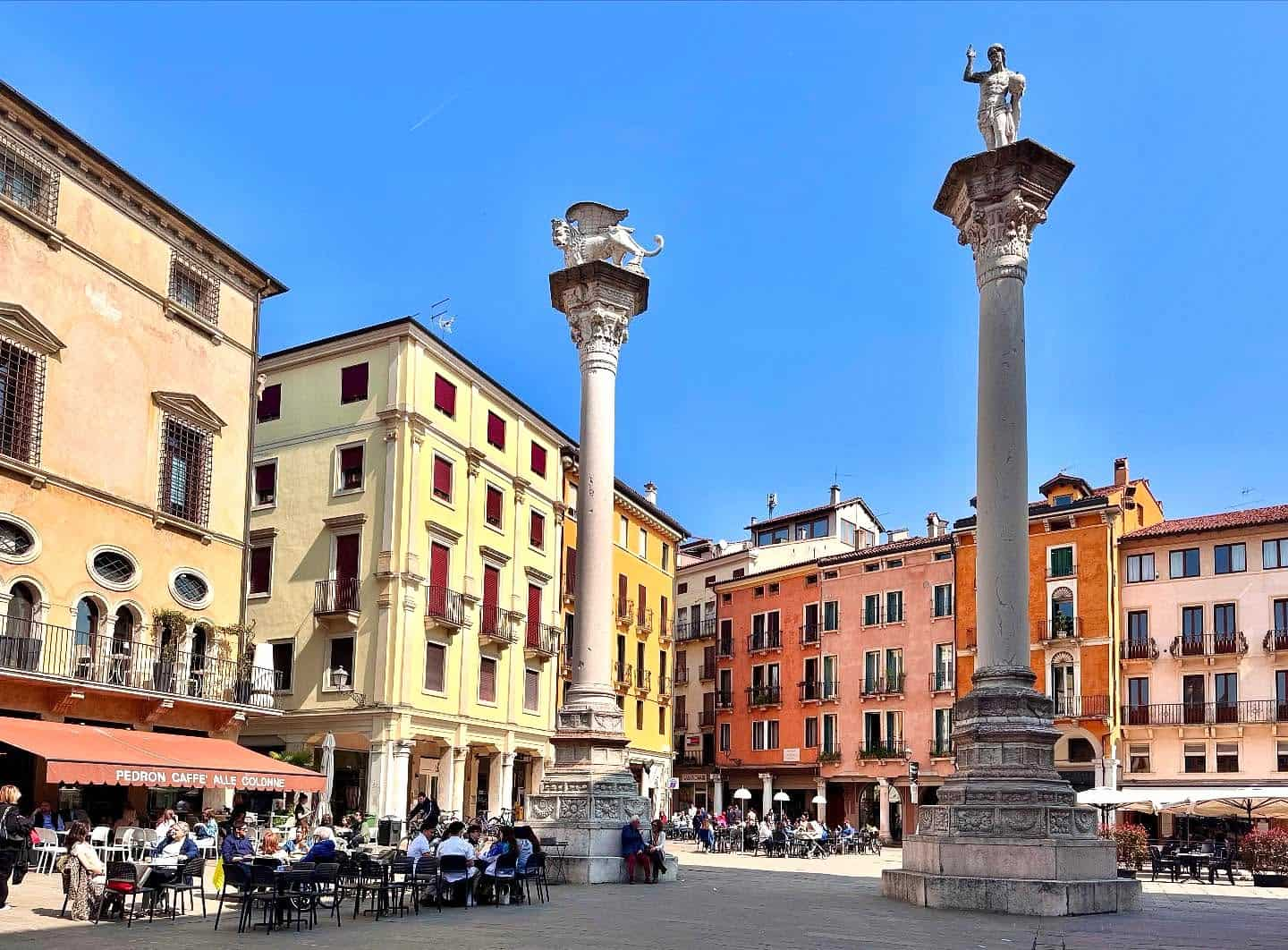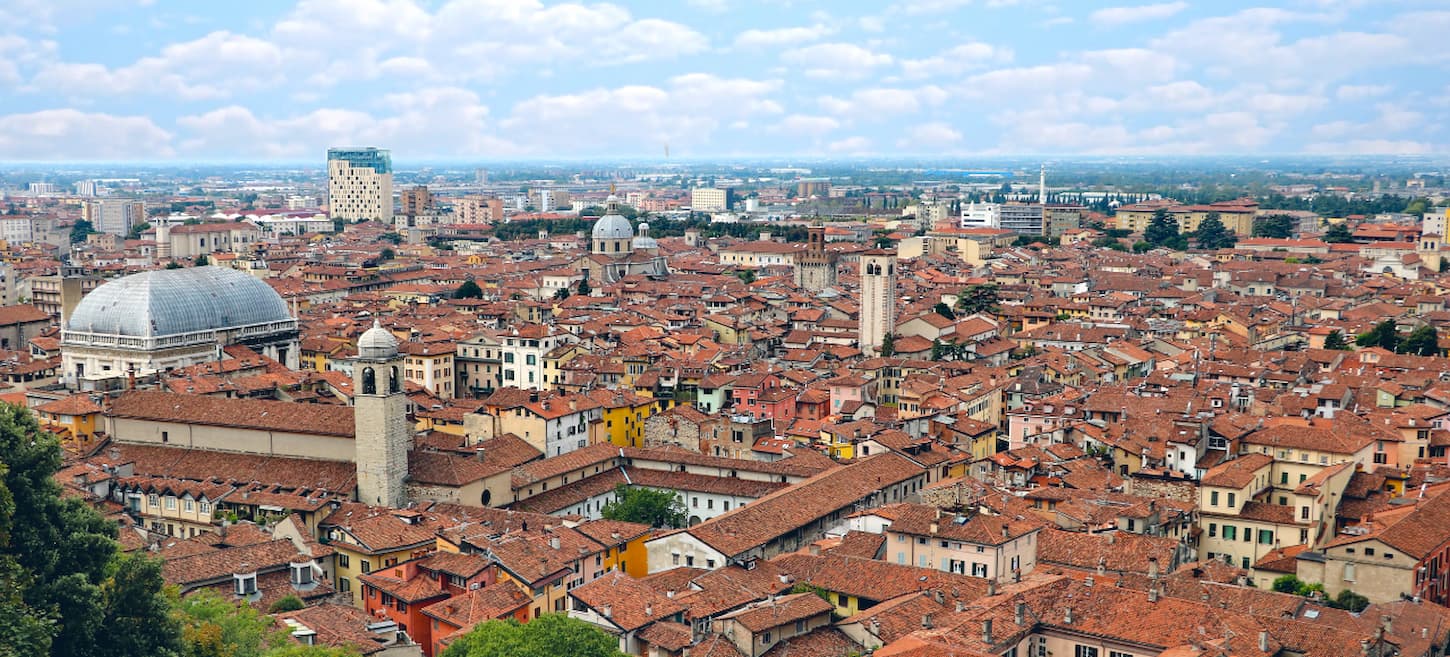Perched dramatically on a volcanic plateau, Orvieto is a mesmerizing Italian gem that seems frozen in time. As I stepped off the funicular and entered this medieval wonderland, I was instantly captivated by golden stone buildings, winding cobblestone streets, and the jaw-dropping cathedral that dominates the skyline.
My recent visit to Orvieto revealed a perfect blend of stunning architecture, fascinating underground worlds, and delicious local cuisine that left me wondering why this town isn’t on everyone’s Italian itinerary. Whether you’re planning a day trip from Rome or looking for a charming base to explore Umbria, I’ve compiled the ultimate list of experiences that make Orvieto truly special. From sipping crisp white wine in centuries-old cellars to discovering Etruscan tunnels beneath your feet, these are the moments that will make your visit unforgettable.
🏠 Where to Stay in Orvieto
- 💎 Luxury Hotel: Hotel Palazzo Piccolomini
- 🏨 4-Star: Grand Hotel Italia
- 🛏️ 3-Star: Hotel Gialletti
- 💸 Cheap: INDUSTRIAL CHIC HOUSE - Private parking
- 🏢 Apartment: Casa Vèra Affittacamere Appartamenti
- 👨👩👧👦 For Families: La Magnolia
- 🏩 For Couples: Altarocca Wine Resort Adults Only
💁 Best Guided Tours
- Orvieto Cathedral and Underground Tour from € 99 (⭐4.9/5)
- Orvieto Walking Tour: Private Guided Tour from € 154 (⭐5.0/5)
- Orvieto: The Duomo on the Cliff Private Tour from € 180 (⭐5.0/5)
- Winery Tour with Wine, Cheese, and Charcuterie Tasting from € 35 (⭐5.0/5)
Best Things To Do in Orvieto
1. Orvieto Cathedral (Duomo di Orvieto)
Masterpiece. Standing in Piazza del Duomo, I was immediately struck by the cathedral’s magnificent façade. The golden mosaics glitter in the sunlight, creating a dazzling display against the intricate Gothic architecture. This 14th-century marvel took nearly three centuries to complete, blending Romanesque and Gothic styles in what’s known as Sienese Gothic.
Façade details. The front of the cathedral features incredible bas-reliefs depicting biblical scenes from both Old and New Testaments. Lorenzo Maitani designed this stunning façade, which is adorned with statues of Evangelists and saints. The rose window at the center draws your eye upward to the soaring spires.
Interior treasures. Inside, the duotone marble creates a striking visual effect that emphasizes the tall pillars and spacious naves. The cathedral houses priceless artworks, including Luca Signorelli’s breathtaking frescoes in the Chapel of San Brizio. These vivid paintings depicting the Last Judgment are considered his greatest work.
Historical significance. The cathedral was built to commemorate the Miracle of Bolsena, where in 1263 a priest witnessed blood appearing on a consecrated Host. Pope Nicholas IV laid the first stone in 1290, beginning a construction project that wouldn’t be completed until 1591.
Practical tips. Entry tickets cost €5 ($5.40), with combined tickets available that include access to other attractions. Opening hours vary by season:
| Season | Hours | Price |
|---|---|---|
| March | 9:30-18:00 | €5 |
| April-September | 9:30-19:00 | €5 |
| October | 9:30-18:00 | €5 |
| November-December | 9:30-17:00 | €5 |
⭐ Best Activities
- Orvieto Cathedral and Underground Tour – Discover Orvieto’s magnificent cathedral with its stunning Gothic façade and explore the fascinating underground tunnels beneath the historic city on this comprehensive guided tour.
2. Orvieto Underground
Hidden world. Beneath Orvieto’s streets lies an astonishing network of tunnels and caves that I found utterly fascinating. This underground labyrinth contains over 1,200 cavities carved into the soft volcanic tuff, creating a subterranean city that spans millennia of history.
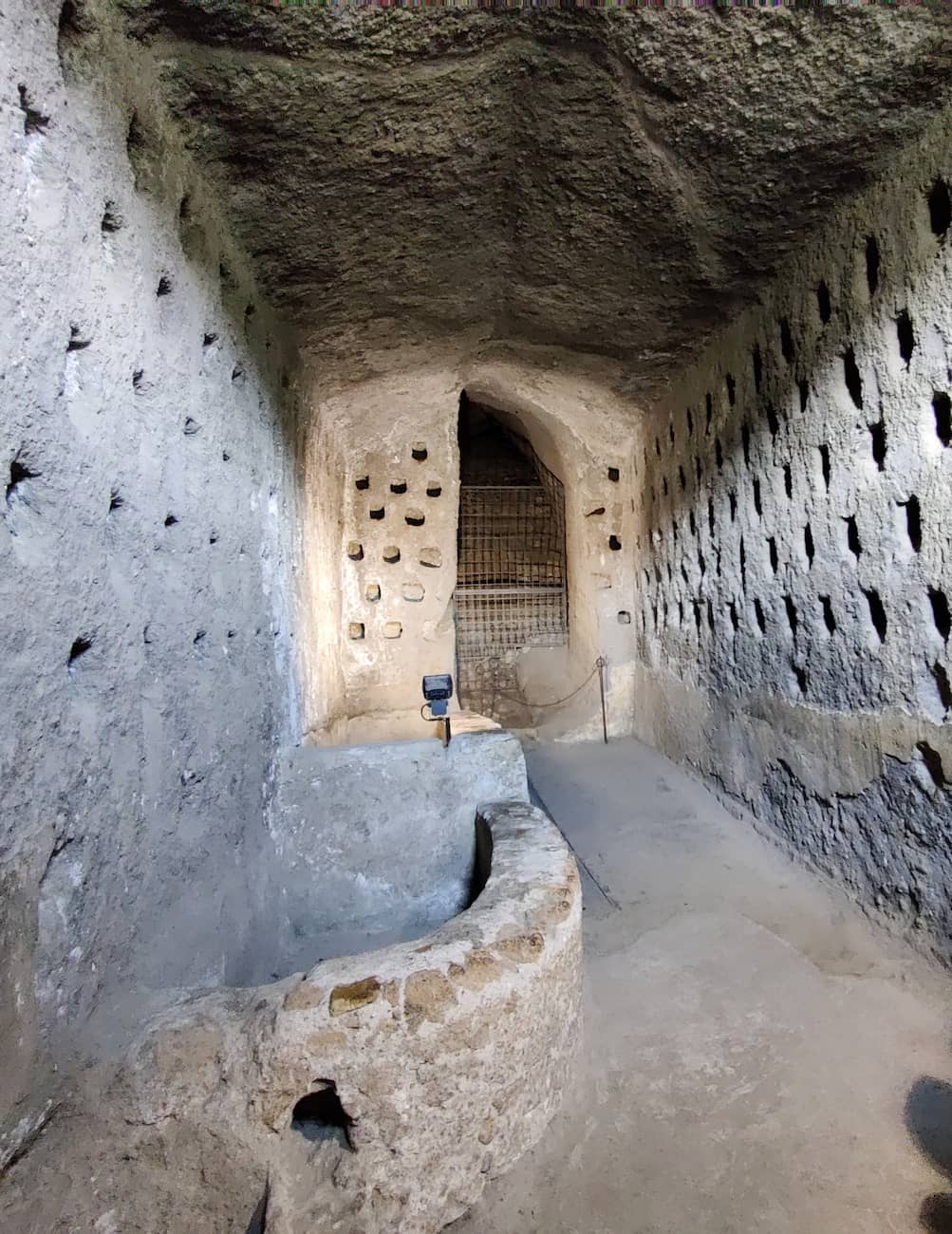
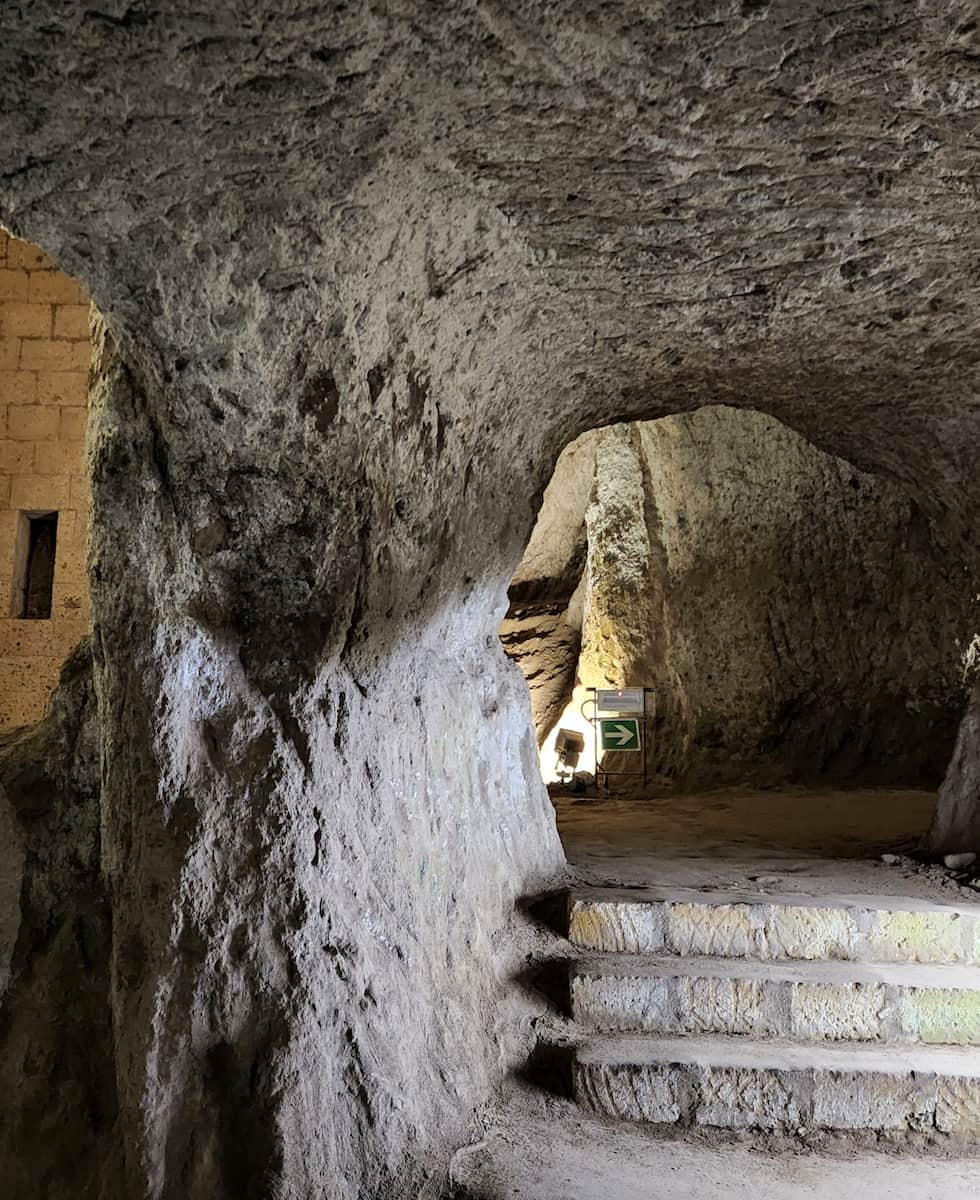
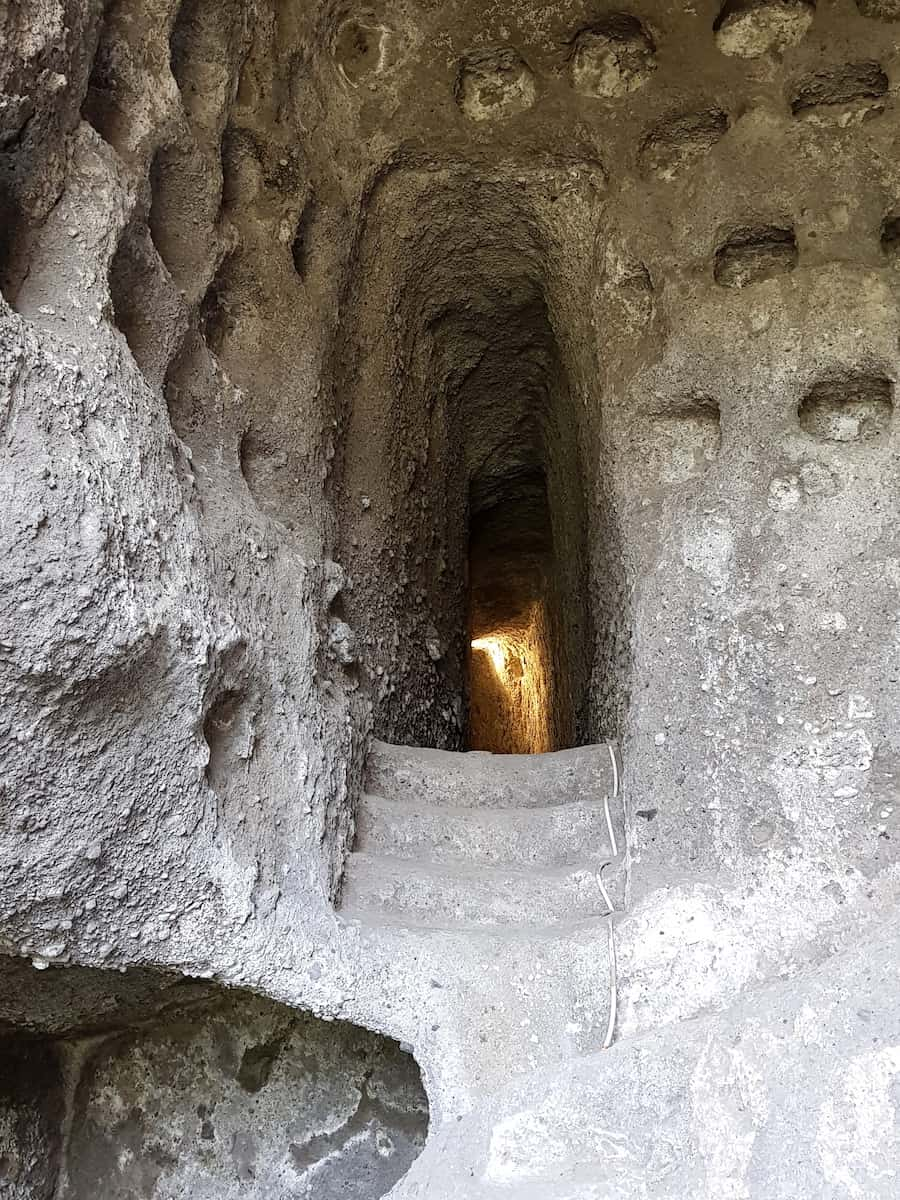
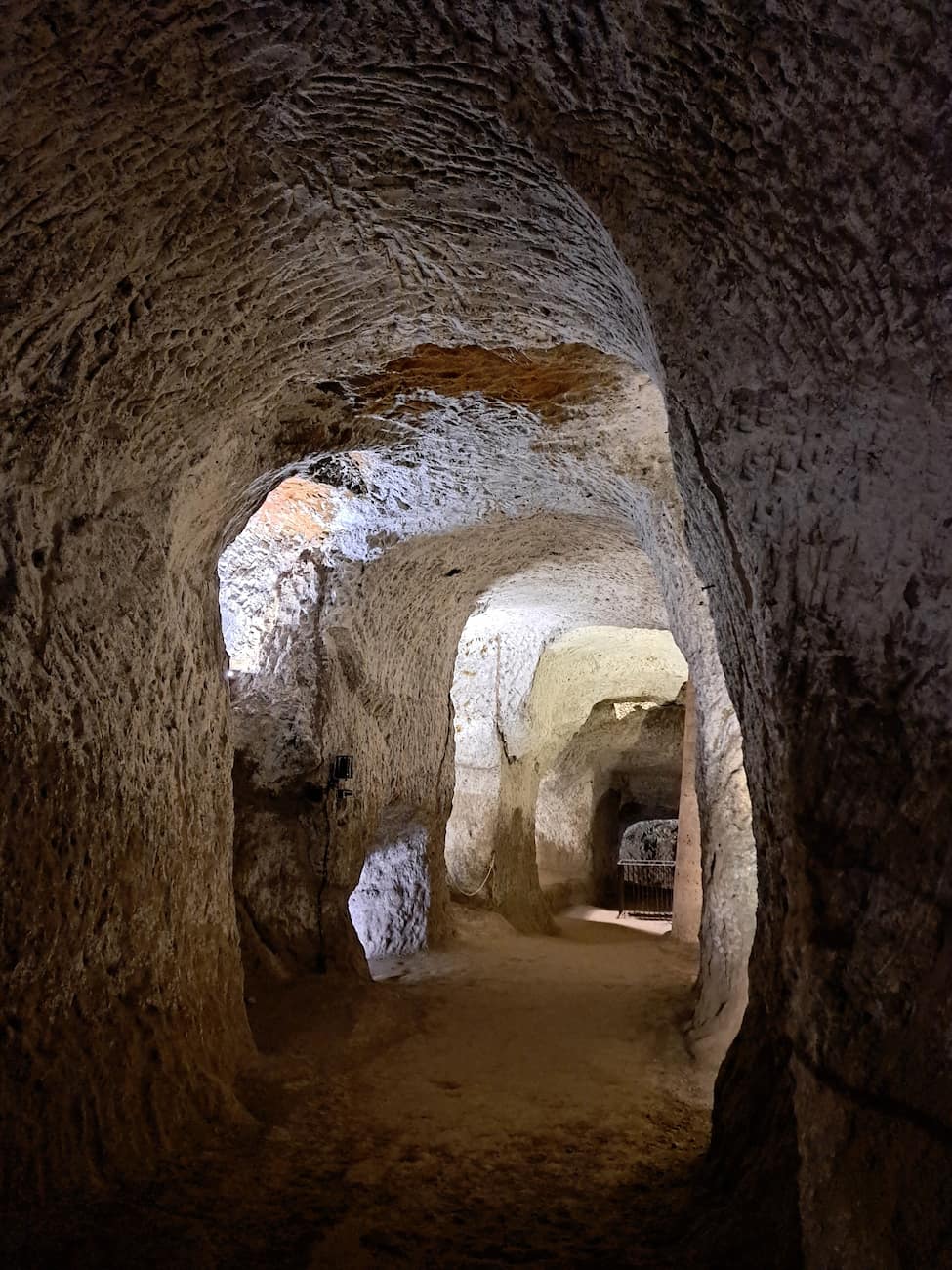
Etruscan origins. The first excavations began when Orvieto was the Etruscan city of Velzna. These ancient people created an impressive system of wells and cisterns that allowed them to withstand a Roman siege for two years. Walking through these tunnels, I felt transported back to this remarkable civilization.
Medieval expansion. The underground network continued to grow throughout the Middle Ages. During my tour, I saw a well-preserved olive oil mill from the 1300s, complete with grindstones (one dated 1697), presses, and storage areas. There’s even a fireplace and mangers for the animals that once powered the mill.
Unique features. The most fascinating sections include the columbarium rooms used for breeding pigeons, Etruscan water tunnels stretching 30 meters, and various cisterns dating from different periods. I was amazed by the vertical ducts with footholds that date back to Etruscan times.
Tour information. Guided tours start from Piazza del Duomo 23 and last about one hour. Tickets cost €8 ($8.70) and are included in the Carta Unica pass. Tours run daily except Mondays.
- Wear comfortable shoes with good grip
- Bring a light jacket as it’s cooler underground
- Photography is permitted but challenging in the low light
⭐ Best Activities
- Aperitif in front of the Duomo and Orvieto Underground Caves tour – On this tour of historic Orvieto, you won’t just see what lies above-ground: instead, follow your guide on a subterranean exploration through Orvieto’s caves, which number in the hundreds and have hosted settlements since Etruscan times. Then, continue onwards to another traditional experience: Sample artisanal cheeses, charcuterie, wines, and pasta, and tour the owner’s private wine cellars after your meal.
3. St. Patrick’s Well (Pozzo di San Patrizio)
Engineering marvel. St. Patrick’s Well left me speechless with its ingenious double-helix design. Built between 1527 and 1537 by Antonio da Sangallo the Younger, this 53-meter-deep well features two separate spiral staircases that never intersect – one for descending and one for ascending.
Historical purpose. Pope Clement VII commissioned the well after fleeing to Orvieto during the Sack of Rome. I learned it was designed to ensure water access during sieges, with 248 steps wide enough for pack animals to carry water containers up and down simultaneously.
Architectural brilliance. Looking down from the top, the perfect symmetry of the spiraling staircases creates a dizzying optical effect. The 72 windows cut into the central column provide natural light all the way to the bottom, where a stone bridge crosses the water basin.
Visitor information. Entry costs €5 ($5.40) and is included in the Carta Unica Orvieto pass. The well is open daily from 10:00-19:00 in summer and 10:00-17:00 in winter.
⭐ Best Activities
- Orvieto Walking Tour Private Guided Tour – Experience the highlights of Orvieto on this private walking tour starting from the funicular station, where your expert guide will reveal the city’s rich history and architectural treasures.
4. Torre del Moro
Panoramic views. Climbing the 47-meter-tall Torre del Moro rewarded me with breathtaking 360-degree views of Orvieto and the surrounding Umbrian countryside. On clear days, you can see all the way to Monte Amiata in Tuscany.
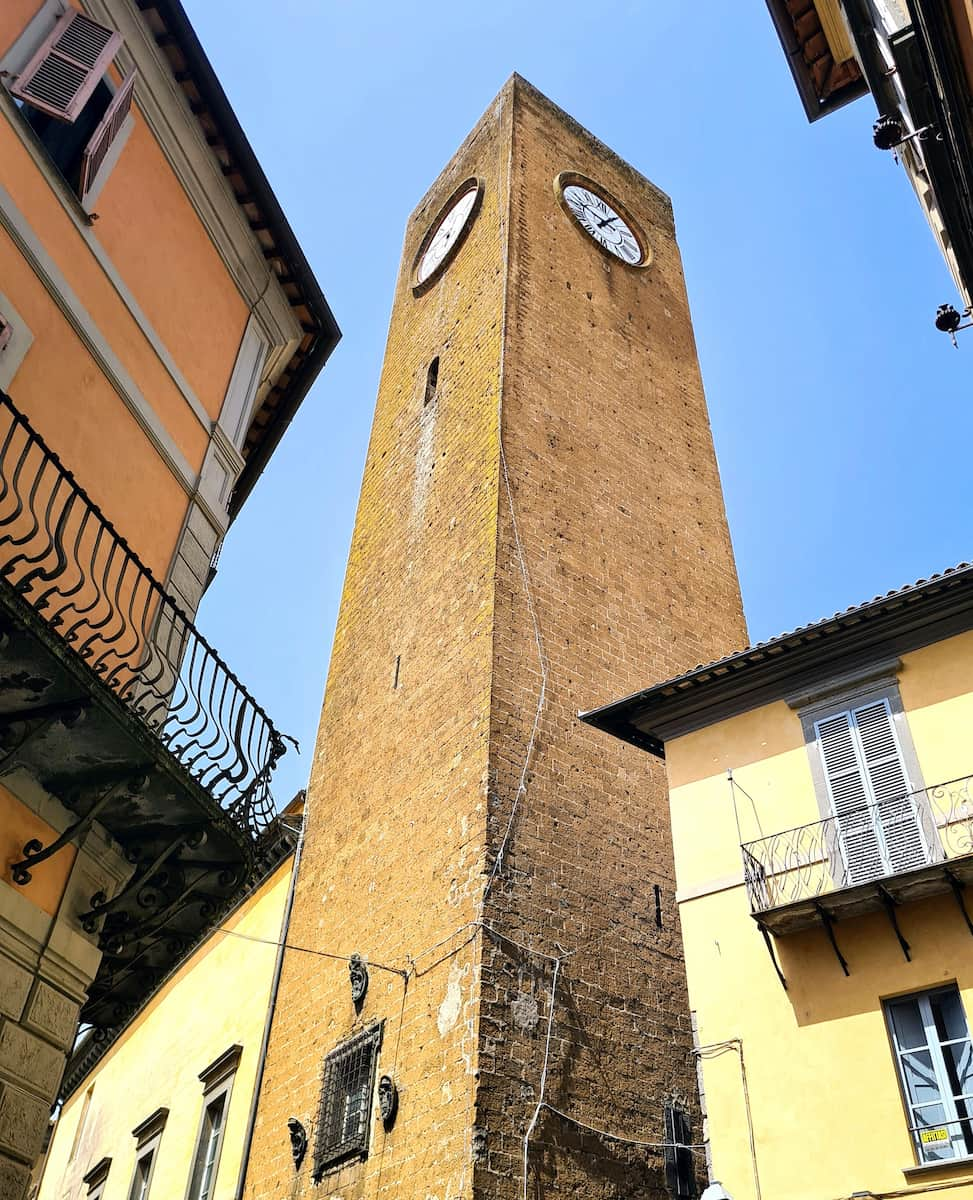
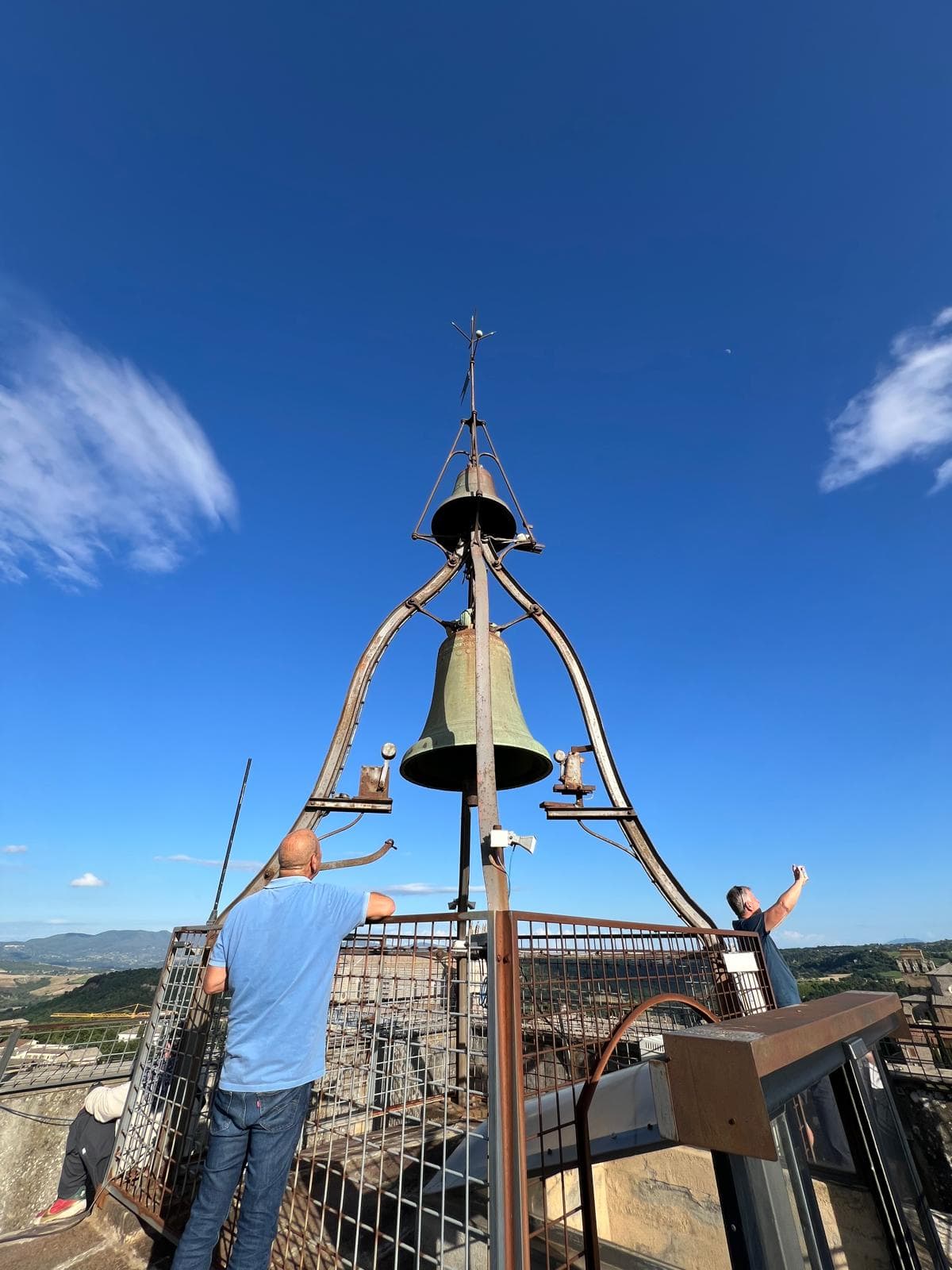
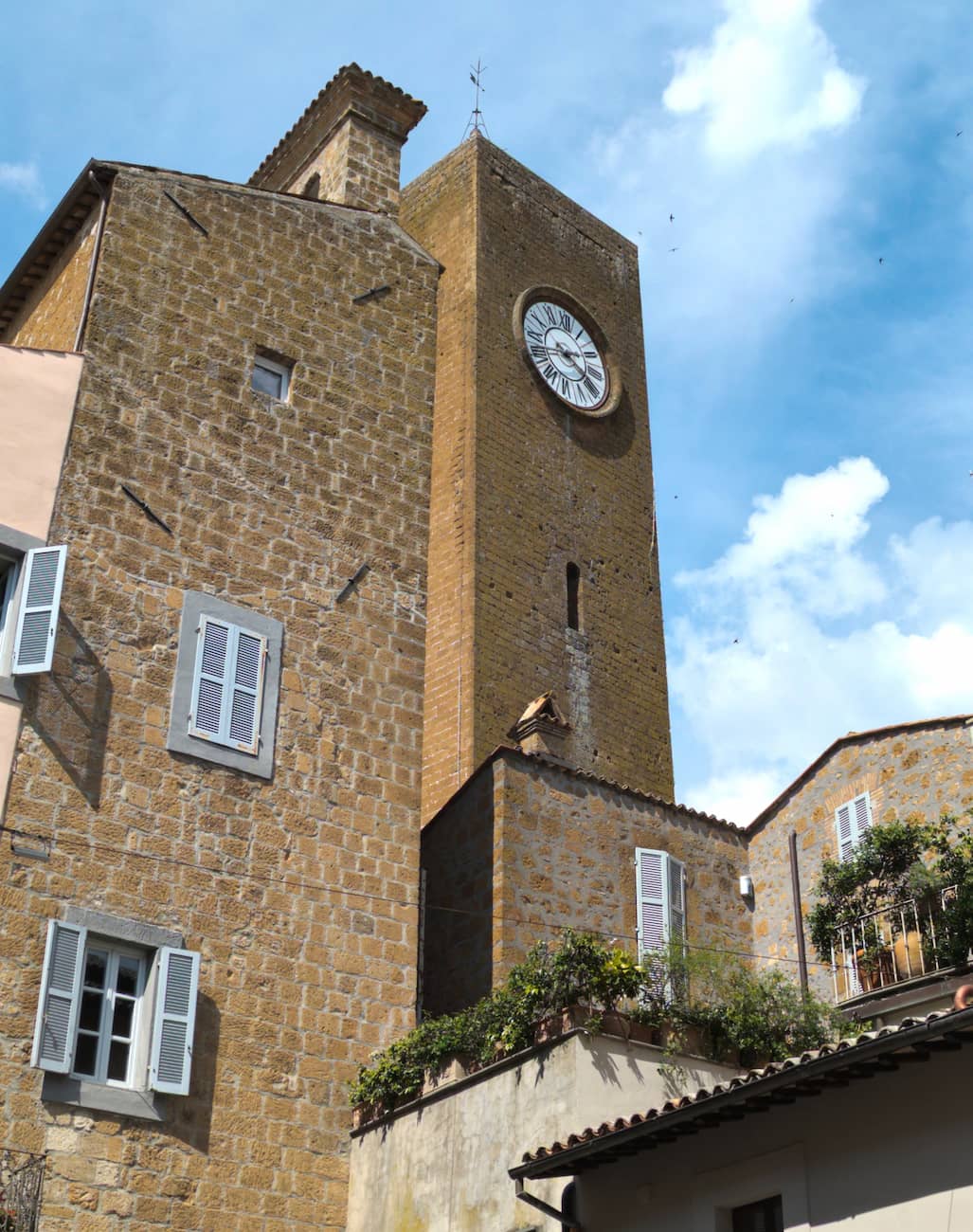
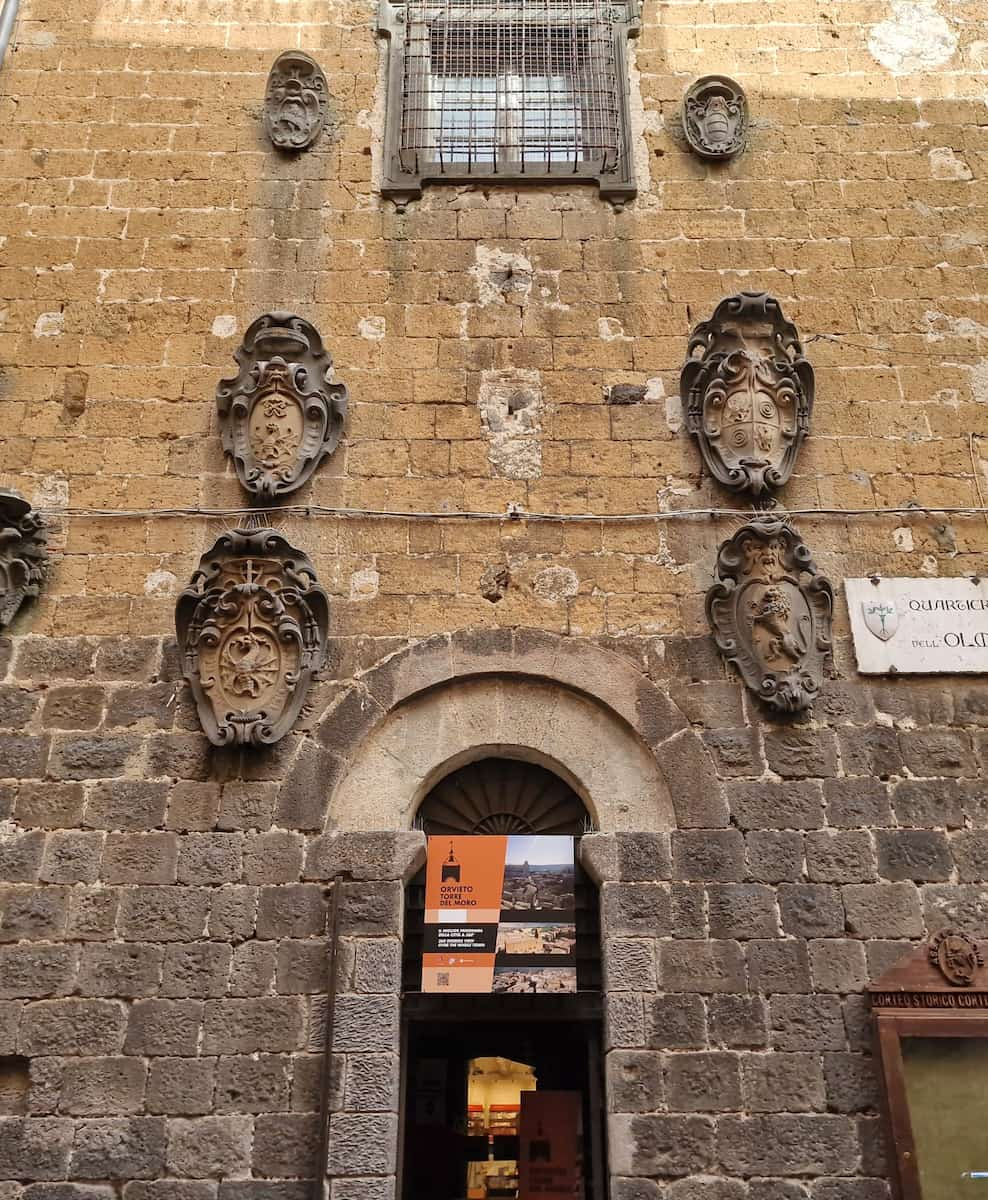
Historical significance. Built in the 13th century, this clock tower once served as a lookout post for the city. Its name comes from a local noble family, not from any Moorish connection as I initially thought. The tower stands at the intersection of Corso Cavour and Via del Duomo.
Clock mechanism. The tower’s mechanical clock dates from 1876 and still functions perfectly. I was lucky enough to be at the top when it struck the hour – the vibration and sound were surprisingly powerful!
Climbing experience. The 236-step climb is challenging but manageable with several landings to catch your breath. About halfway up, you’ll find a small exhibition about the tower’s history and the clock’s mechanism.
Practical details. Entry costs €3 ($3.25) or is included in the Carta Unica pass. Opening hours are 10:30-19:30 in summer and 10:30-16:30 in winter. My tip: time your visit for late afternoon when the golden light bathes the terracotta rooftops.
5. Palazzo del Capitano del Popolo
Medieval power center. This imposing palace was once the seat of the Captain of the People, a powerful political figure in medieval Orvieto. Built in the late 13th century, its grand façade with mullioned windows reflects the wealth and importance of the commune.
Architectural features. I was impressed by the palace’s distinctive travertine and basalt striped exterior, creating a striking black and white pattern typical of central Italian architecture. The large arched entrance leads to an inner courtyard with elegant proportions.
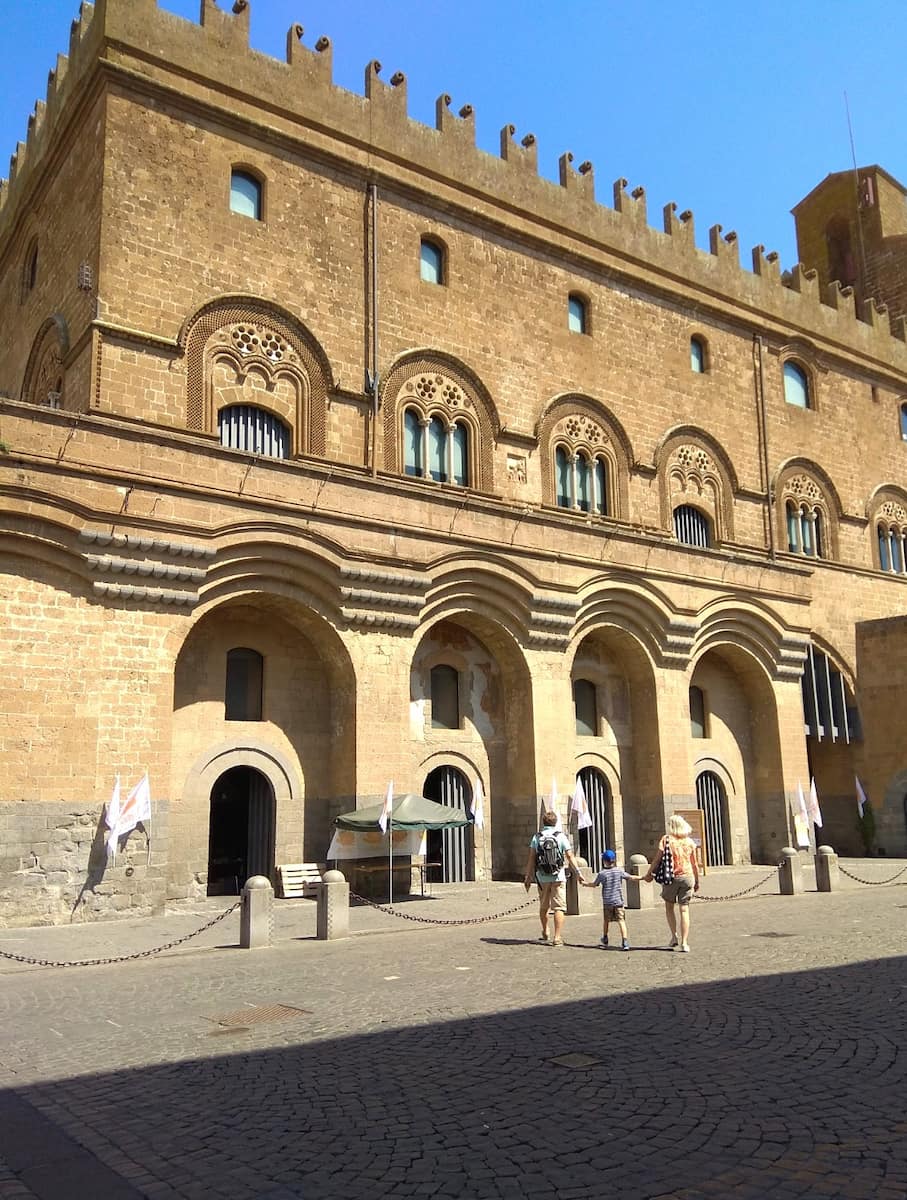
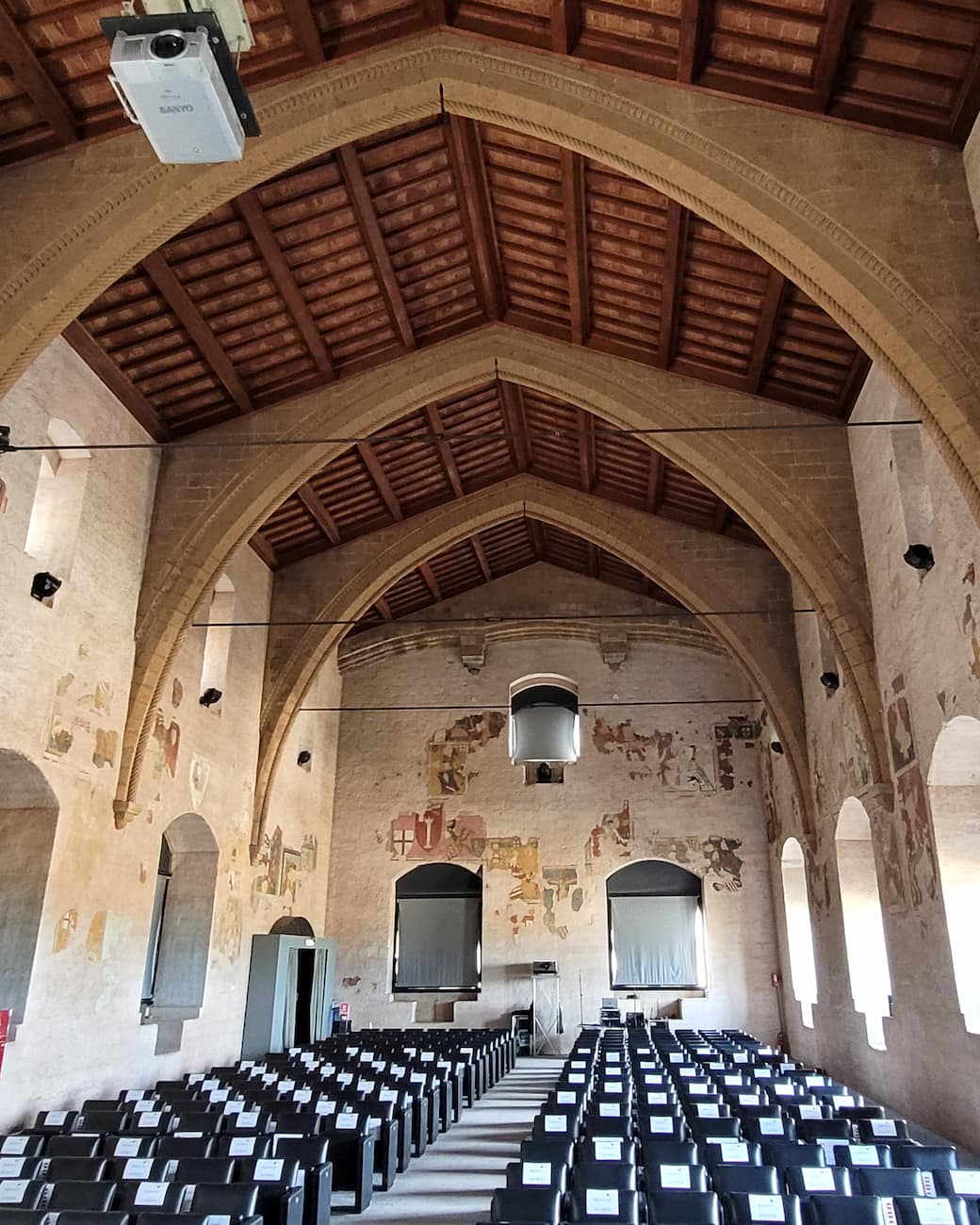
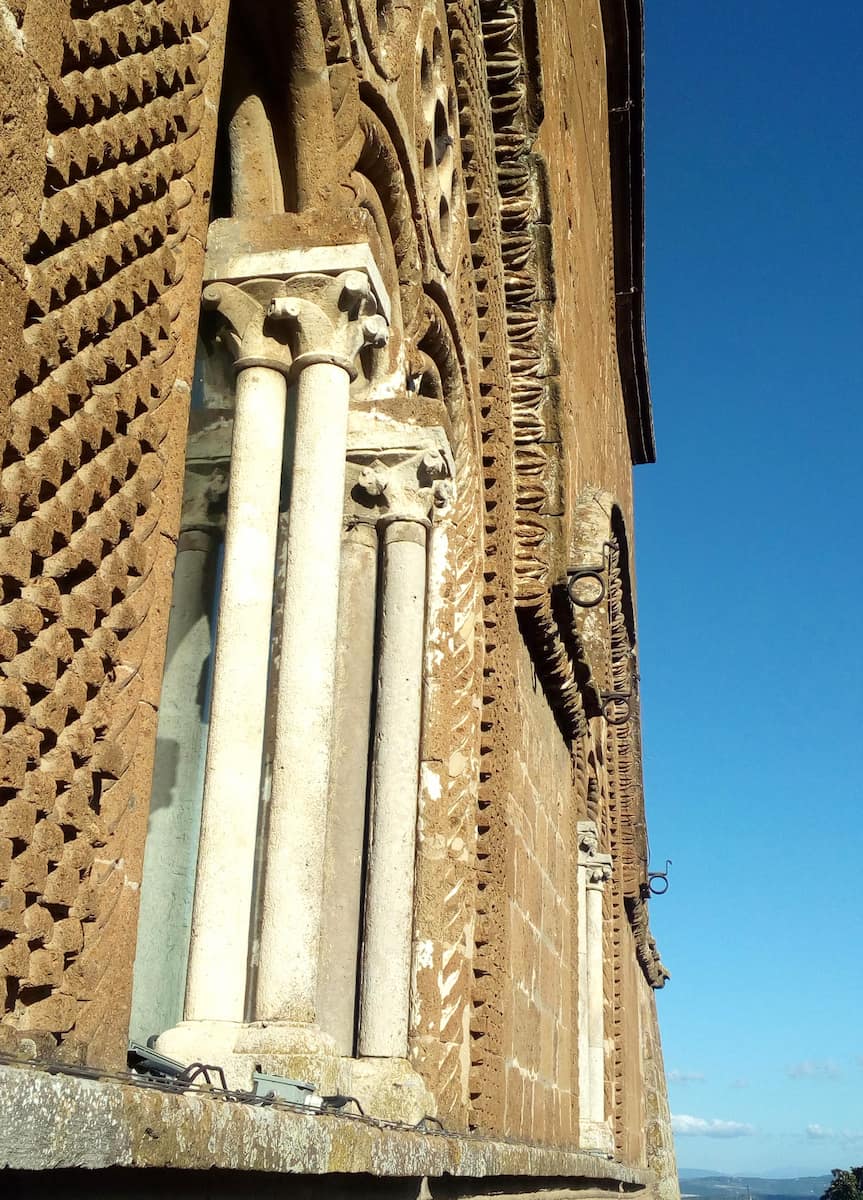
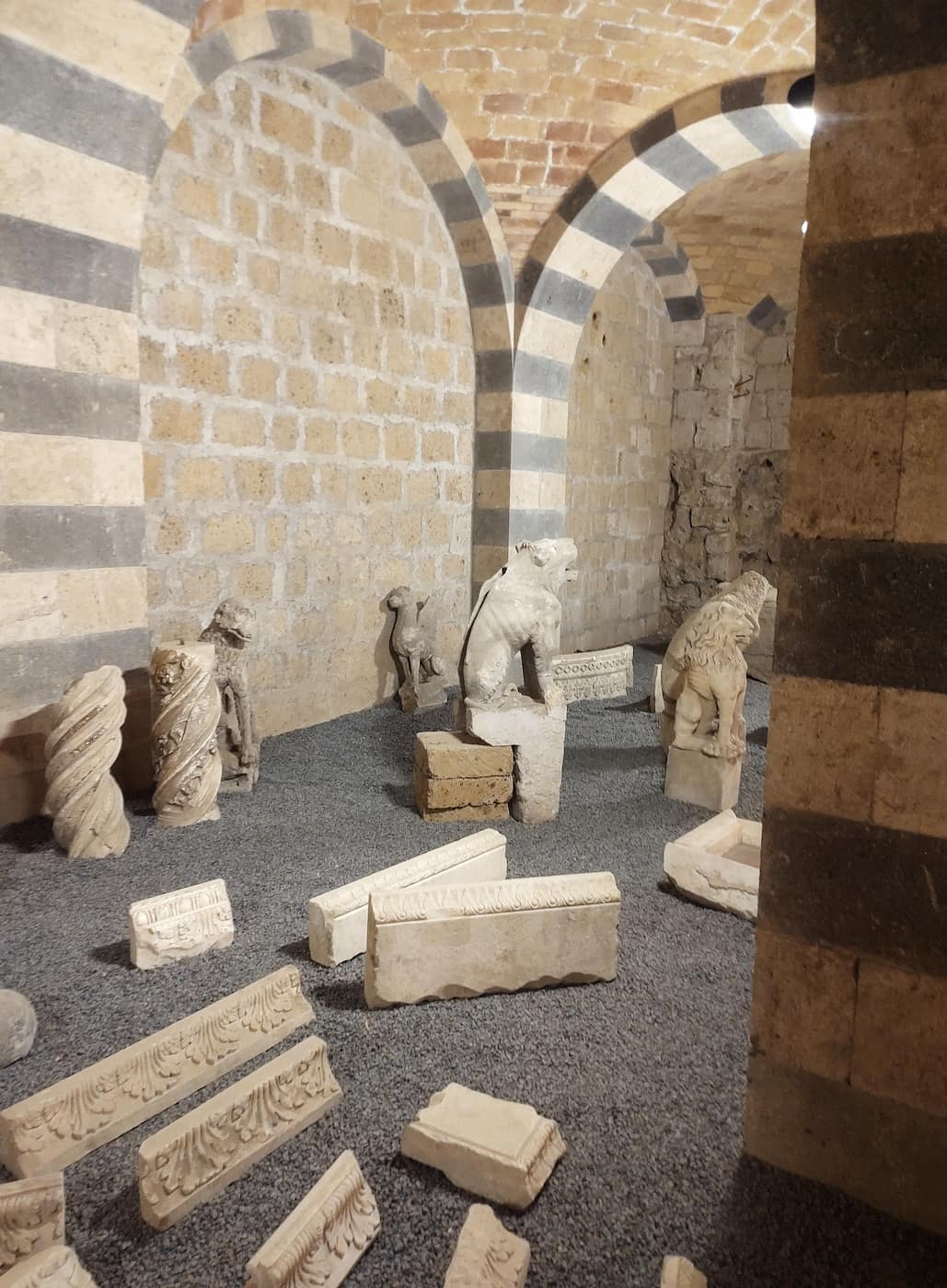
Modern function. Today, the palace serves as a conference center and exhibition space. During my visit, it hosted a fascinating exhibition of contemporary Umbrian artists. The grand hall on the upper floor, with its high ceilings and excellent acoustics, is used for concerts.
Historical context. The palace witnessed significant events in Orvieto’s history, including the visit of Pope Boniface VIII in 1297. It stands as a testament to the city’s importance during the Middle Ages when it was a powerful independent commune.
Visitor information. Entry to the courtyard is free, while special exhibitions may charge admission (typically €5-8). The palace is open Tuesday-Sunday, 10:00-18:00, but hours may vary depending on events.
⭐ Best Activities
- Orvieto: the Duomo on the cliff Private Tour – Enjoy a private tour of Orvieto’s iconic cathedral perched dramatically on the cliff, learning about its remarkable architecture and artistic masterpieces from your knowledgeable guide.
6. Piazza della Repubblica
City heart. Piazza della Repubblica pulses with local life as Orvieto’s main square. I spent a delightful afternoon here watching the rhythm of daily life unfold – elderly locals chatting on benches, children playing, and tourists mingling with residents.
Café culture. The square is lined with charming cafés where I enjoyed an excellent espresso for just €1.20 ($1.30). Caffè Montanucci has been serving locals since 1879 and offers the best people-watching spot in town. Their pastries, especially the biscotti di mandorla, are heavenly.
Architectural highlights. The square is framed by elegant buildings including the 12th-century Palazzo Comunale with its clock tower and the Church of Sant’Andrea with its distinctive 12-sided tower. The medieval well at the center dates back to the 13th century.
Market traditions. On Thursday and Saturday mornings, the square hosts a lively market selling local produce, cheeses, and artisanal products. I picked up some pecorino cheese aged in walnut leaves for €15 ($16.25) per kilo – a local specialty worth trying.
Evening atmosphere. As night falls, the square transforms with warm lighting illuminating the historic buildings. Many locals participate in the traditional passeggiata (evening stroll), creating a vibrant yet relaxed atmosphere perfect for pre-dinner drinks.
7. Church of Sant’Andrea
Ancient origins. The Church of Sant’Andrea stands on the site of an Etruscan temple, with parts of its structure dating back to the 6th century. Its distinctive dodecagonal (12-sided) bell tower is one of Orvieto’s most recognizable landmarks after the Duomo.
Architectural blend. What fascinated me most was the church’s mixture of styles – a Romanesque layout with Gothic elements and Renaissance additions. The façade features a beautiful rose window and an ornate marble portal from the 14th century.
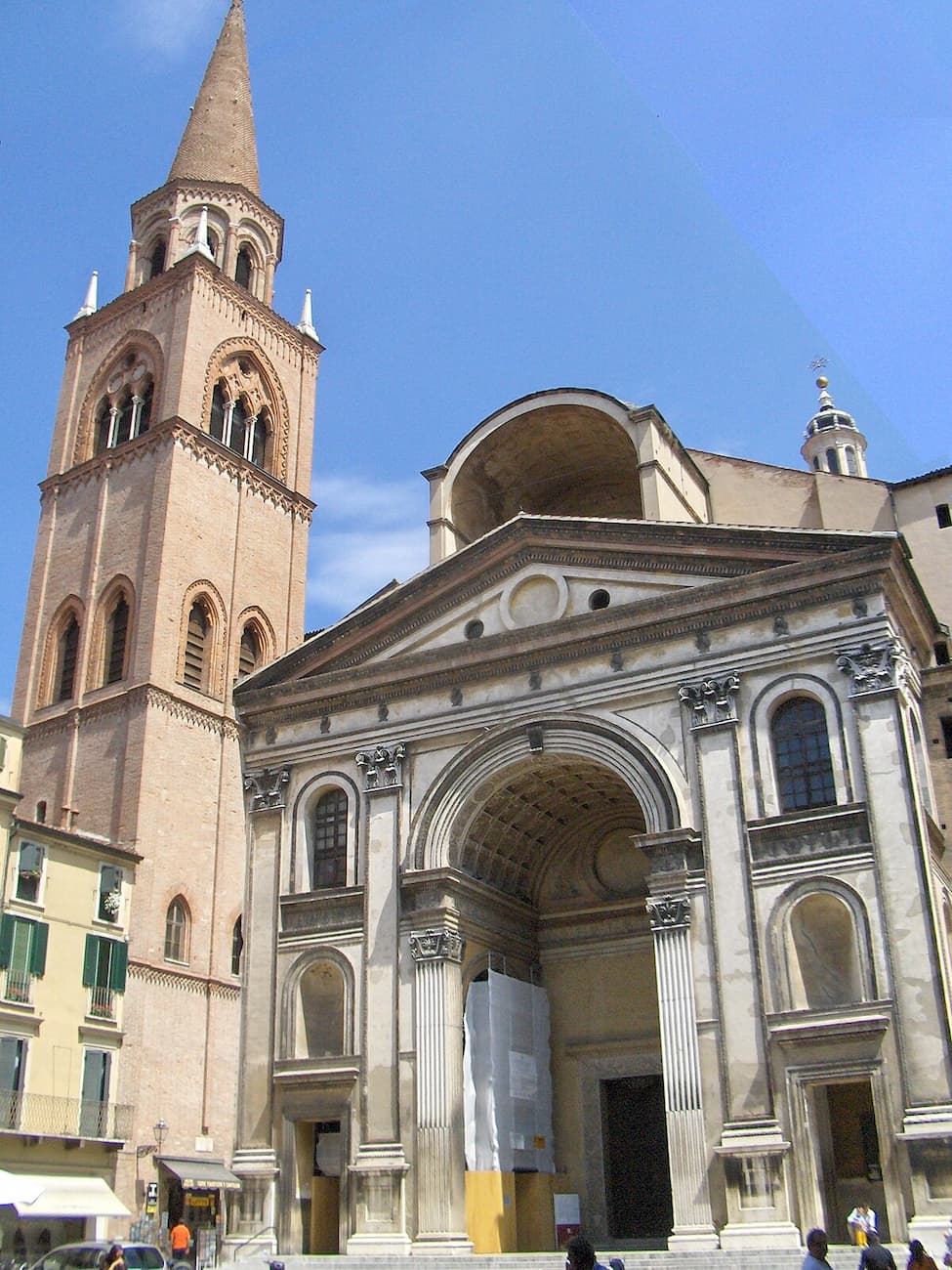
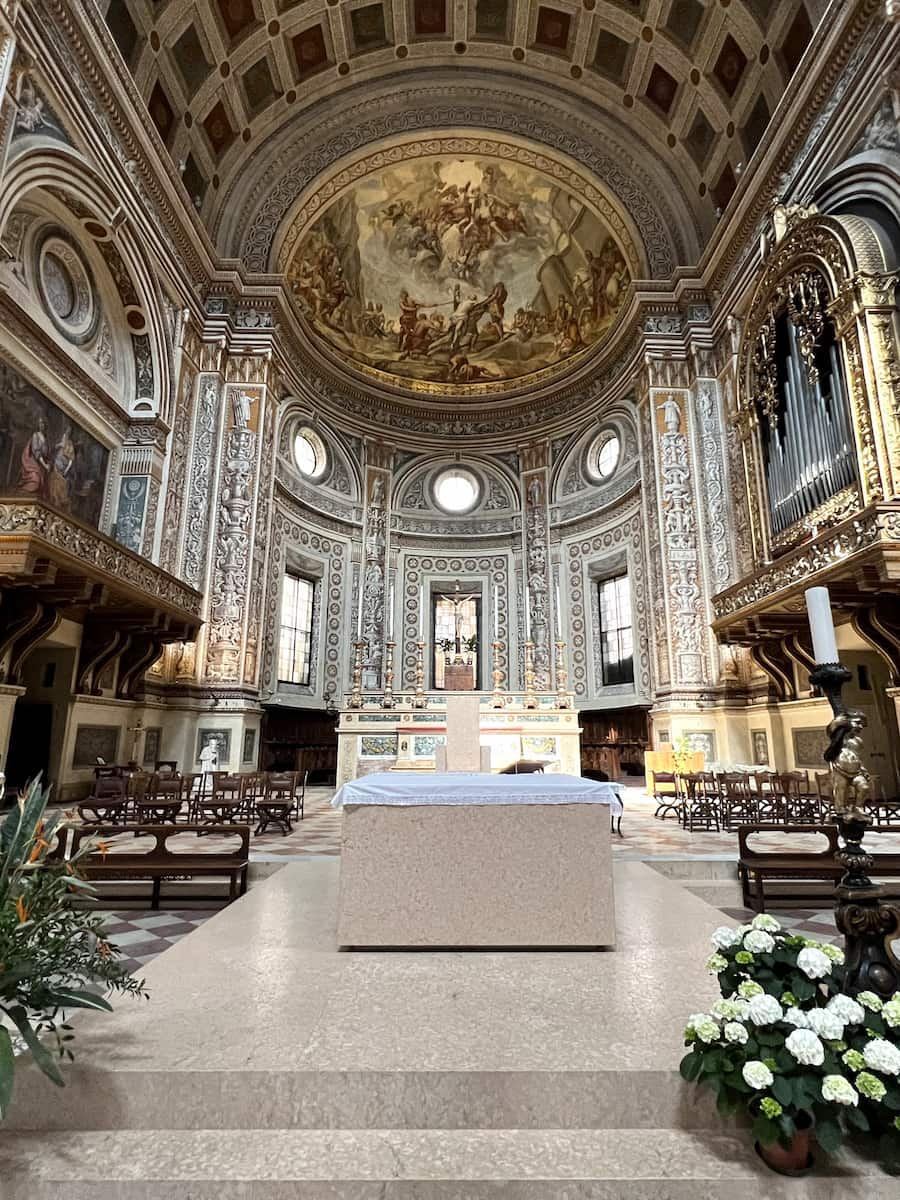
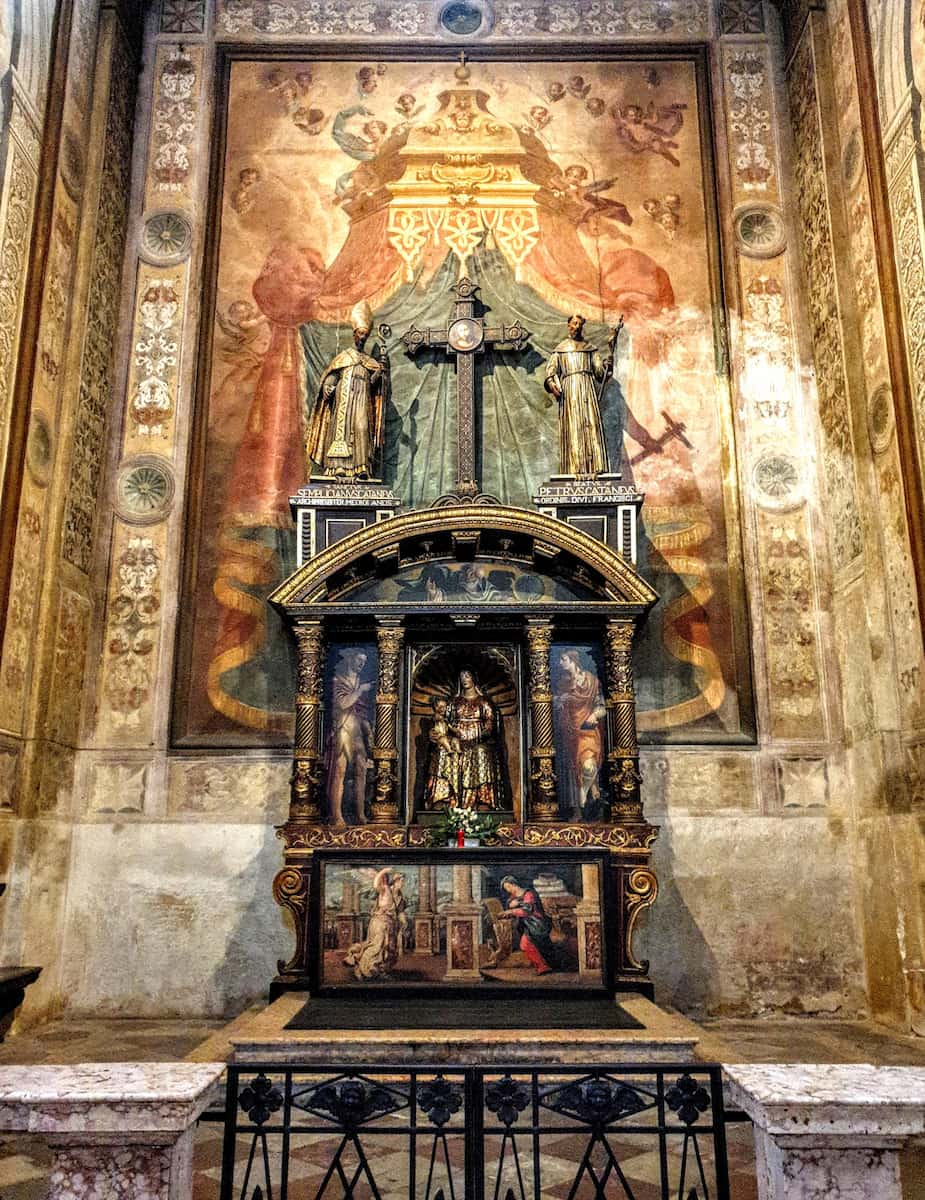
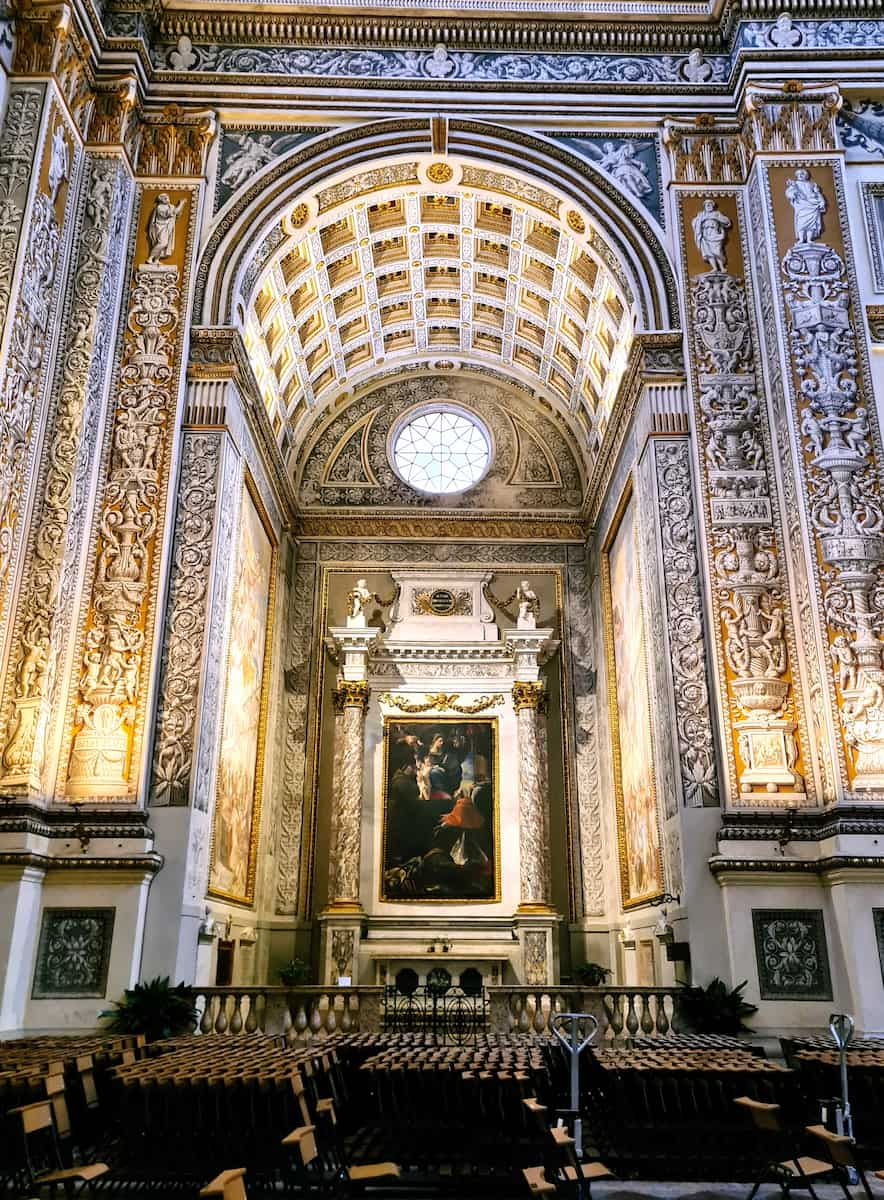
Interior treasures. Inside, I discovered several noteworthy artworks, including a 14th-century wooden crucifix and frescoes by local artists. The baptismal font dates from 1516 and shows exquisite Renaissance craftsmanship in its marble reliefs.
Historical significance. The church played an important role in Orvieto’s religious life for centuries. Documents show it was already a parish church by the 10th century. During restoration work in the 1920s, Etruscan artifacts were discovered beneath the floor.
Visitor details. Entry is free, though donations are appreciated. The church is open daily 8:00-12:00 and 15:00-18:00, except during services. Photography is permitted without flash. Look for the small plaque marking the medieval street level – much lower than today’s.
8. Wine Tasting
Orvieto Classico. My first sip of Orvieto Classico DOC wine was a revelation – crisp, dry, with subtle almond notes and a clean mineral finish. This white wine has been produced in the region since Etruscan times and remains Umbria’s most famous wine export.
Local wineries. I visited Decugnano dei Barbi, a family-run winery just outside town. Their vineyard tour (€15/$16.25 including tasting) explained how the volcanic soil gives Orvieto wines their distinctive character. The winery’s underground caves, carved into tufa rock, maintain perfect aging conditions.
Tasting options. In town, Enoteca al Duomo offers excellent tasting flights:
| Tasting | Wines | Price |
|---|---|---|
| Classic | 3 local whites | €12 |
| Premium | 2 whites, 2 reds | €18 |
| Vertical | 4 vintages of Classico | €25 |
Wine varieties. Beyond the famous Classico, I discovered other local specialties:
- Orvieto Abboccato – slightly sweet version
- Rosso Orvietano – red blend featuring Sangiovese
- Muffa Nobile – dessert wine from noble rot grapes
Pairing suggestions. The sommelier recommended pairing Orvieto Classico with local umbrichelli pasta with truffles or fresh lake fish. The more robust Rosso Orvietano complements Umbrian wild boar dishes perfectly.
⭐ Best Tours
- Winery Tour with Wine, Cheese and Charcuterie Tasting – Visit a local winery near Orvieto for a delightful tasting experience featuring regional wines perfectly paired with artisanal cheeses and charcuterie selections.
- Winery Tour and Wine Tasting – Discover the winemaking traditions of the Orvieto region on this guided winery tour, where you’ll learn about production methods and sample distinctive local wines.
9. Medieval Quarter
Time travel. Wandering through Orvieto’s medieval quarter felt like stepping back centuries. The narrow cobblestone lanes wind between buildings of golden tufa stone, creating a labyrinth that reveals hidden courtyards, tiny shops, and unexpected views at every turn.
Authentic atmosphere. Unlike many Italian towns, Orvieto’s medieval center remains genuinely lived-in. I watched residents hang laundry from windows adorned with flower boxes, while cats lounged in sunny doorways. The quarter feels authentic rather than preserved for tourists.
Artisan workshops. The quarter houses many traditional craftspeople. I visited Michelangeli’s ceramic studio where artisans hand-paint majolica using techniques passed down for generations. Their distinctive green and blue patterns are inspired by medieval designs found in the Duomo.
Architectural details. Look for the small details that tell stories – stone arches connecting buildings, ancient doorways with worn steps, and medieval family crests carved above entrances. Many buildings feature external staircases called profferli, typical of medieval Umbrian architecture.
Exploration tips. The best approach is to wander without a specific destination. The quarter is compact enough that you can’t get truly lost. My favorite discovery was Via della Cava, a street that follows the ancient city walls with spectacular valley views.
10. Pozzo della Cava
Hidden gem. Pozzo della Cava (Well of the Quarry) offers a fascinating glimpse into Orvieto’s multi-layered history. This privately owned archaeological site centers around an Etruscan well dating back to the 5th century BCE, rediscovered in 1984 beneath a restaurant.
Historical layers. The site reveals nine distinct historical periods, from Etruscan foundations through medieval ceramics workshops to Renaissance modifications. I was amazed to see how each civilization built directly on top of previous structures.
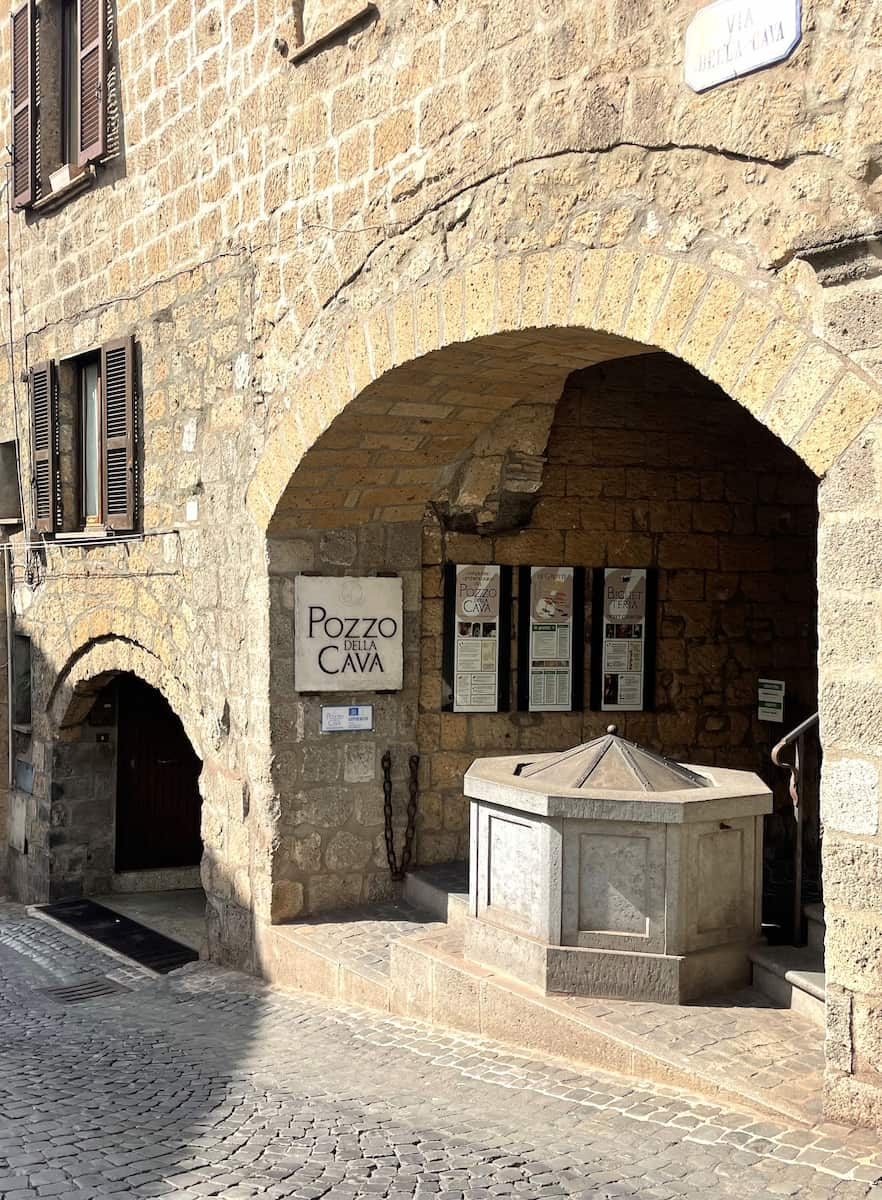
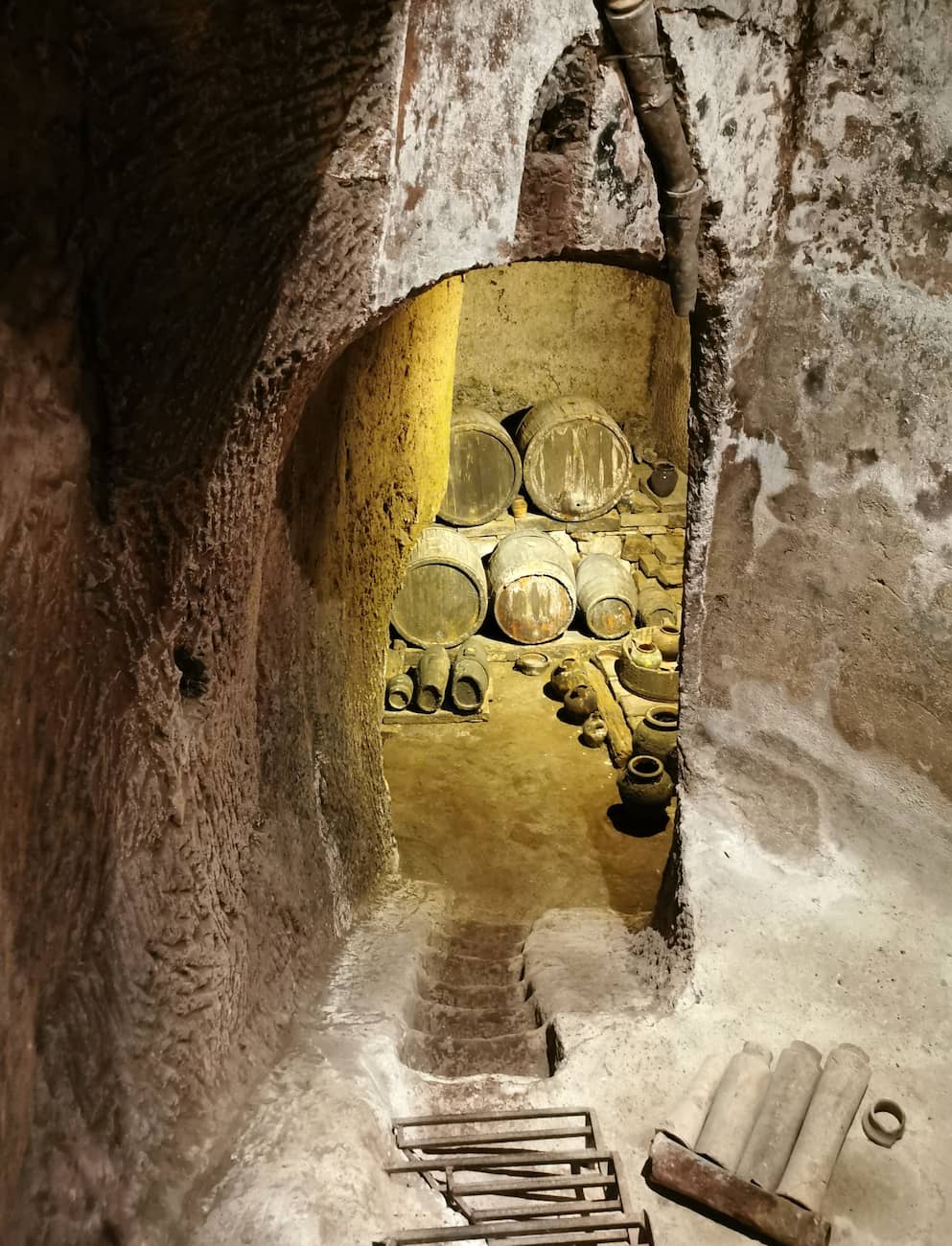
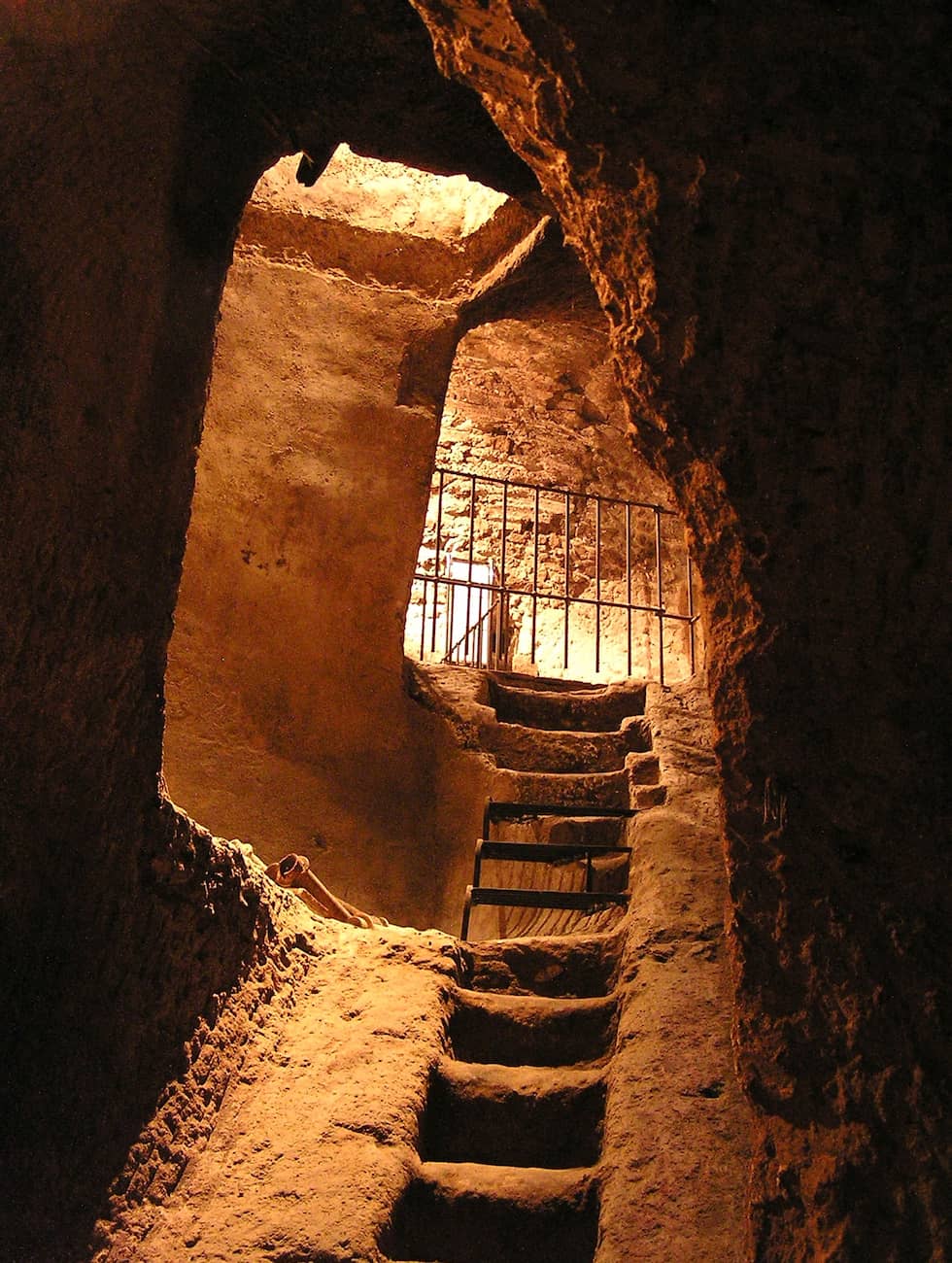
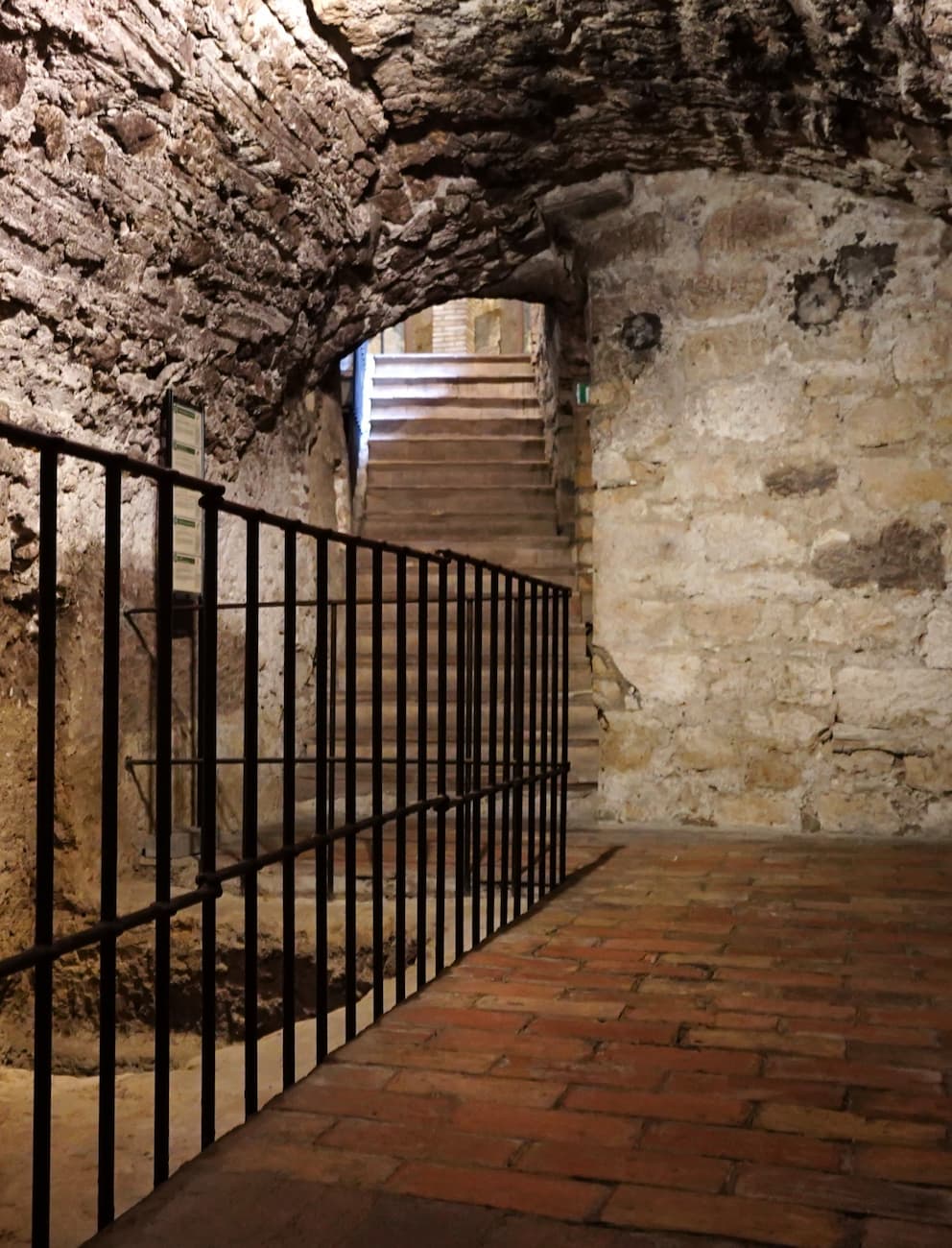
Unique features. Beyond the 36-meter-deep well, I explored Etruscan caves, medieval pottery kilns still containing ceramic fragments, and a Renaissance-era ceramic dump where thousands of discarded pieces create a historical record of changing styles and techniques.
Family story. The Sciorra family discovered the well while renovating their restaurant and have dedicated themselves to preserving and sharing this archaeological treasure. Their passion is evident in the detailed explanations they provide to visitors.
Visitor experience. Entry costs €4 ($4.35) and includes a self-guided tour with information sheets in multiple languages. The site is open daily 9:00-20:00. After exploring, I enjoyed lunch at the family’s restaurant upstairs, where traditional dishes are served on replicas of medieval ceramics found below.
⭐ Best Activities
- Tickets for Cave System Pozzo della Cava – Explore the ancient underground cave system of Pozzo della Cava, featuring Etruscan and medieval remains, including a remarkable well dating back centuries.
Things to Do in Orvieto with Kids
1. Underground Tours
Adventure below. Taking my kids on Orvieto’s underground tour was the highlight of our family trip. The network of caves and tunnels immediately transformed them into excited explorers, flashlights in hand, as they discovered a hidden world beneath the city streets.
Child-friendly guides. The official tours are wonderfully adapted for children. Our guide Marco told fascinating stories about the Etruscans and medieval residents who created this underground labyrinth, keeping the kids engaged with questions and simple explanations about daily life in ancient times.
Educational fun. My children were amazed to learn how people collected rainwater in cisterns, bred pigeons for food in specially carved niches, and used underground mills to produce olive oil. The hands-on elements, like touching the ancient tools and seeing the animal troughs, made history tangible for them.
Safety considerations. The main underground tour routes are completely safe for children, with good lighting and secure pathways. The temperature stays around 15°C (59°F) year-round, so I recommend bringing a light jacket even in summer. Some narrower passages might be challenging for very young children.
Practical details. Family tickets cost €20 ($21.70) for 2 adults and 2 children. Tours run hourly from 10:00-17:00 and last approximately 45 minutes. Booking ahead is recommended during peak season (June-September) at the tourist office in Piazza Duomo.
⭐ Best Activities
- Orvieto's Underground Tour with Wine Tasting & Light Lunch – Combine history and gastronomy on this tour of Orvieto’s underground tunnels, followed by a wine tasting and light lunch featuring local specialties.
2. Funicular Cable Car
Exciting transport. The funicular connecting Orvieto’s train station with the historic center was an unexpected thrill for my kids. The short but steep ride up the cliff face offers spectacular views and a sense of adventure that had them begging to ride it again and again.
Historical experience. Built in 1888 and renovated in 1990, this cable railway preserves its vintage charm while meeting modern safety standards. My children were fascinated by the mechanical workings visible at the stations and loved watching the two cars pass each other midway.
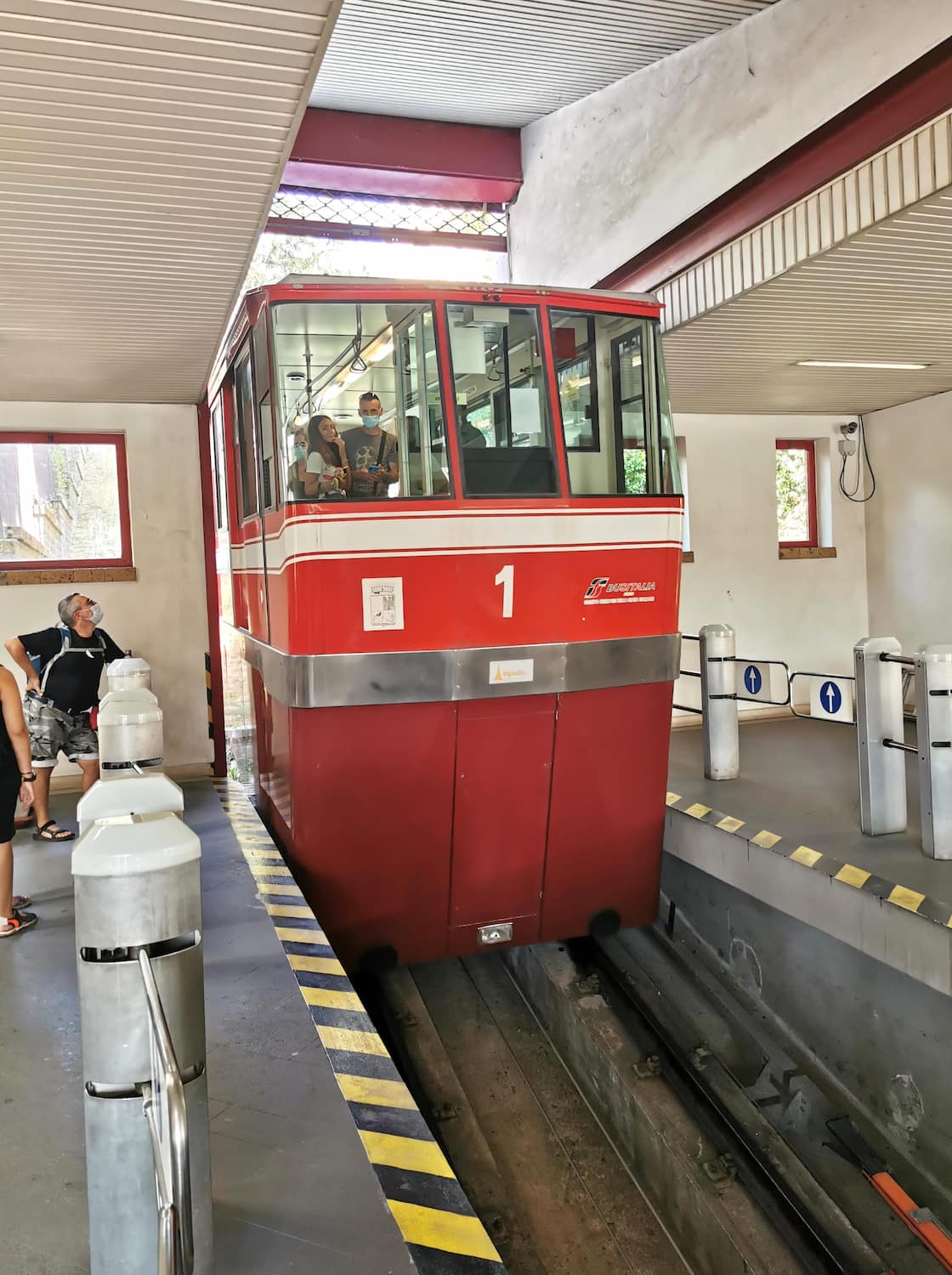
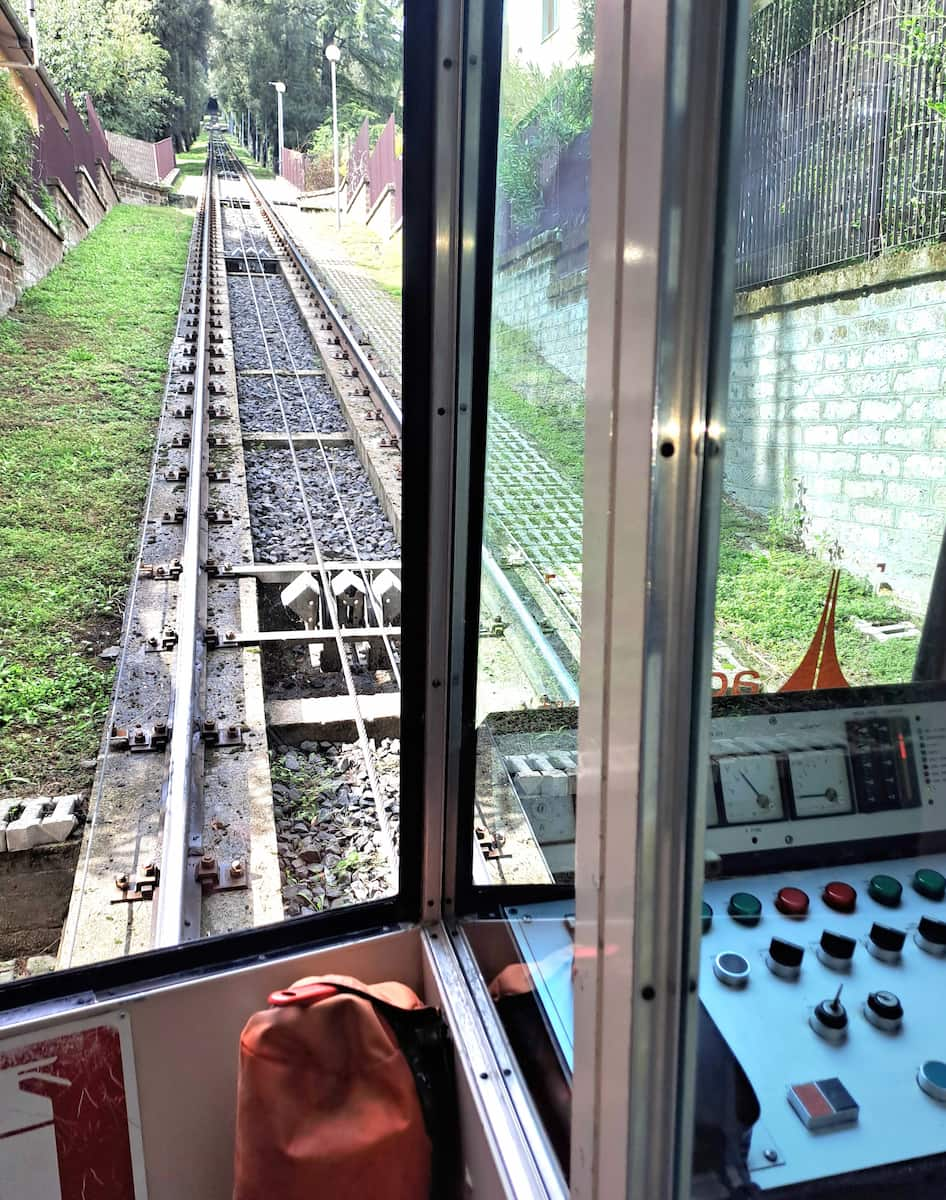
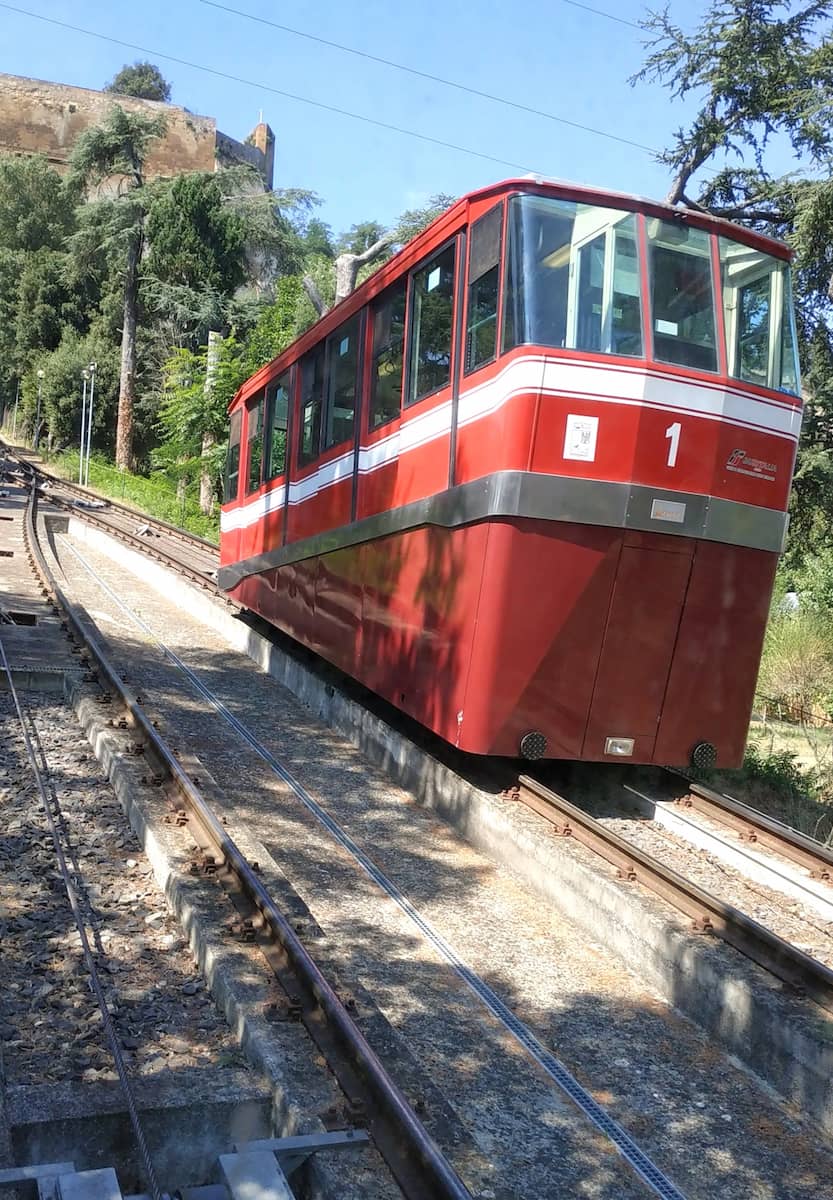
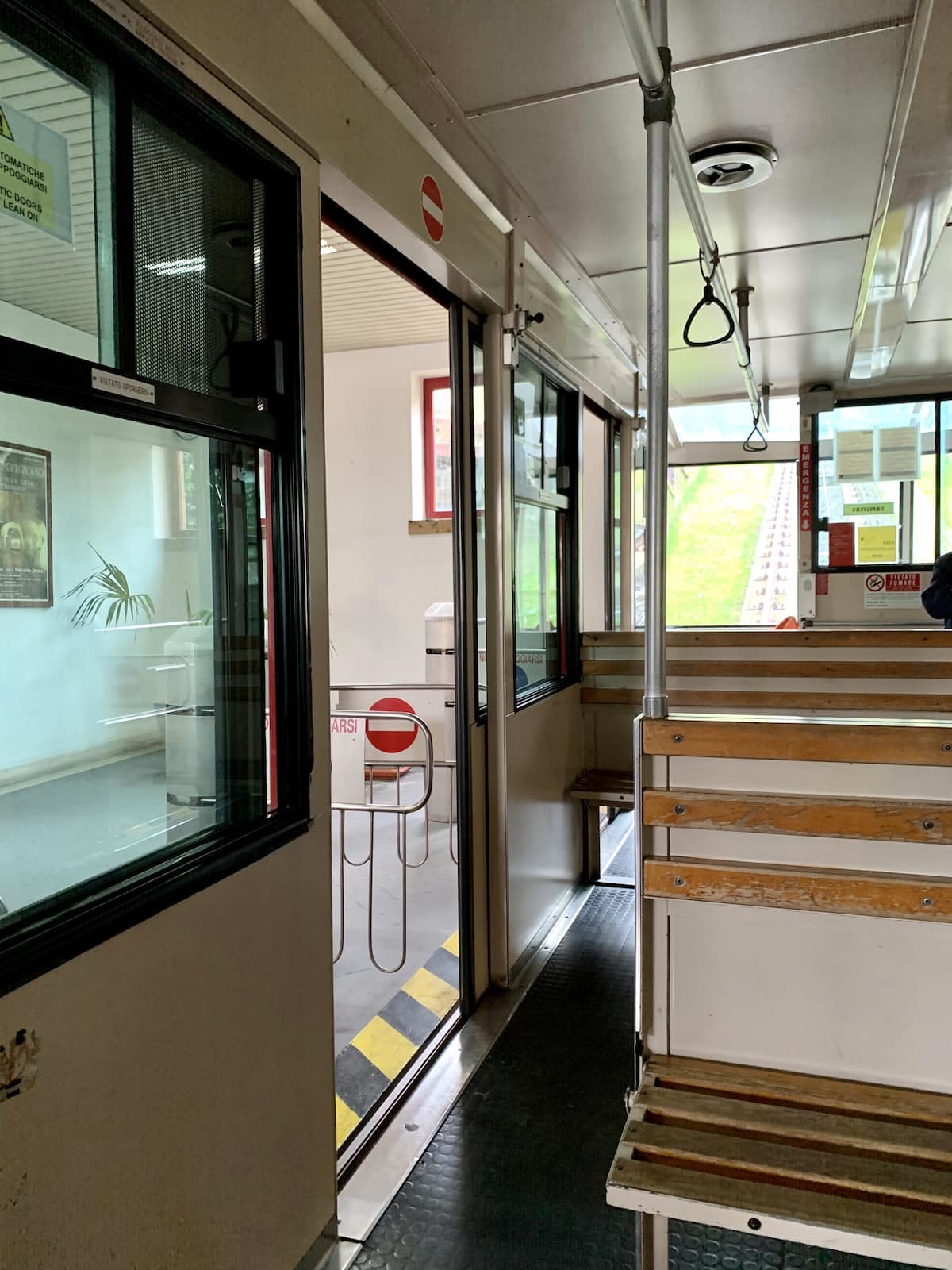
Practical convenience. Beyond the fun factor, the funicular solved the practical challenge of reaching the hilltop city with tired young legs. In just 2 minutes, we ascended 157 meters without complaints about walking uphill – a parenting win!
Combined transport. Our family ticket included funicular rides and unlimited bus use around Orvieto for the day. This made exploring with kids much easier, especially when little legs got tired in the afternoon.
Ticket information. A family day pass costs €10 ($10.85) for 2 adults and up to 3 children. Single rides are €1.30 ($1.40) per person. The funicular runs every 10 minutes from 7:15-20:30 (extended to 01:30 on weekends). The station at the bottom has clean restrooms – always good to know when traveling with kids!
3. Giardini Comunali Playground
Green escape. After a morning of sightseeing, Orvieto’s Communal Gardens provided the perfect place for my kids to burn off energy. Located near Piazza Cahen, these manicured gardens offer shady respite from summer heat and spectacular views over the Umbrian countryside.
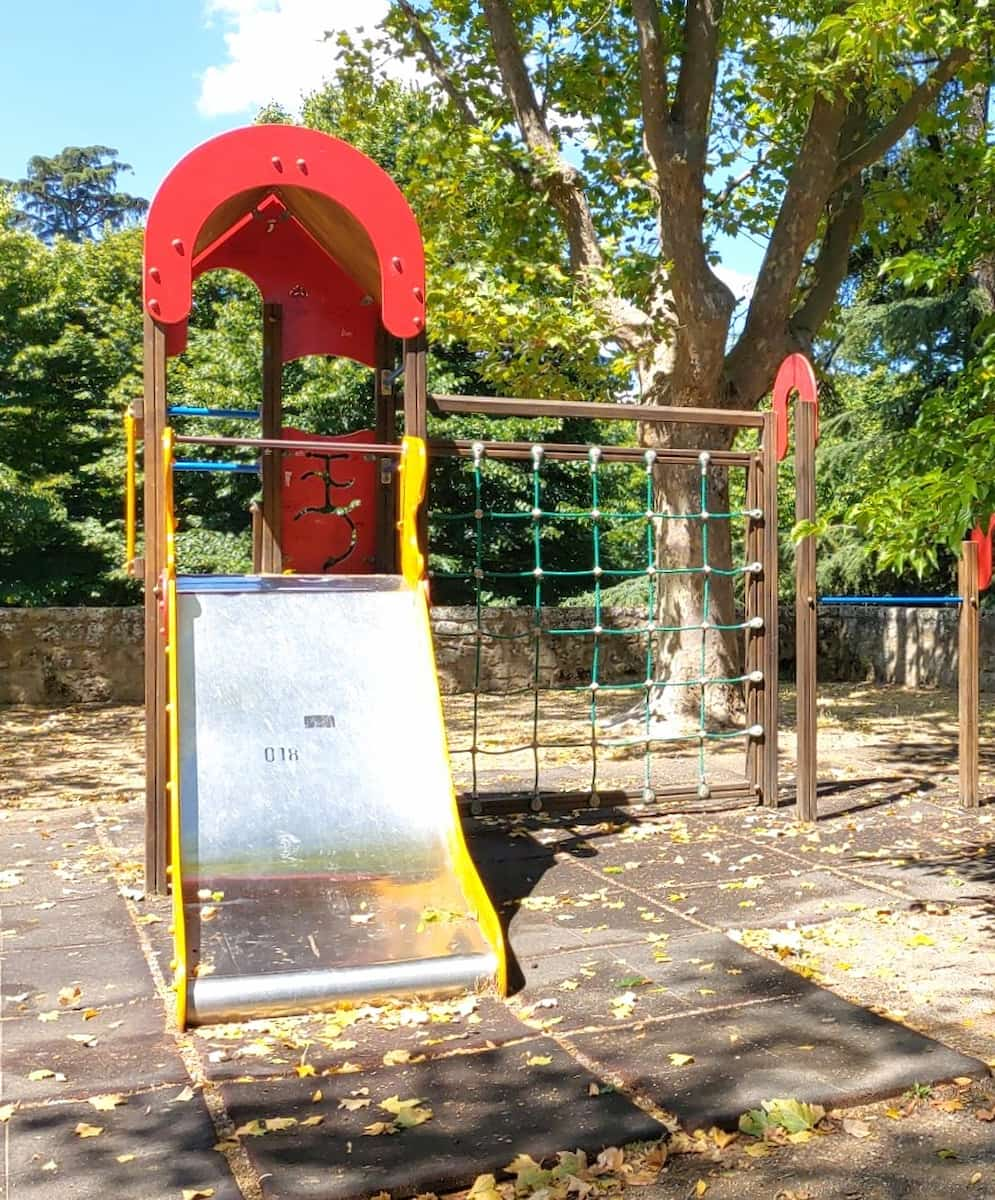
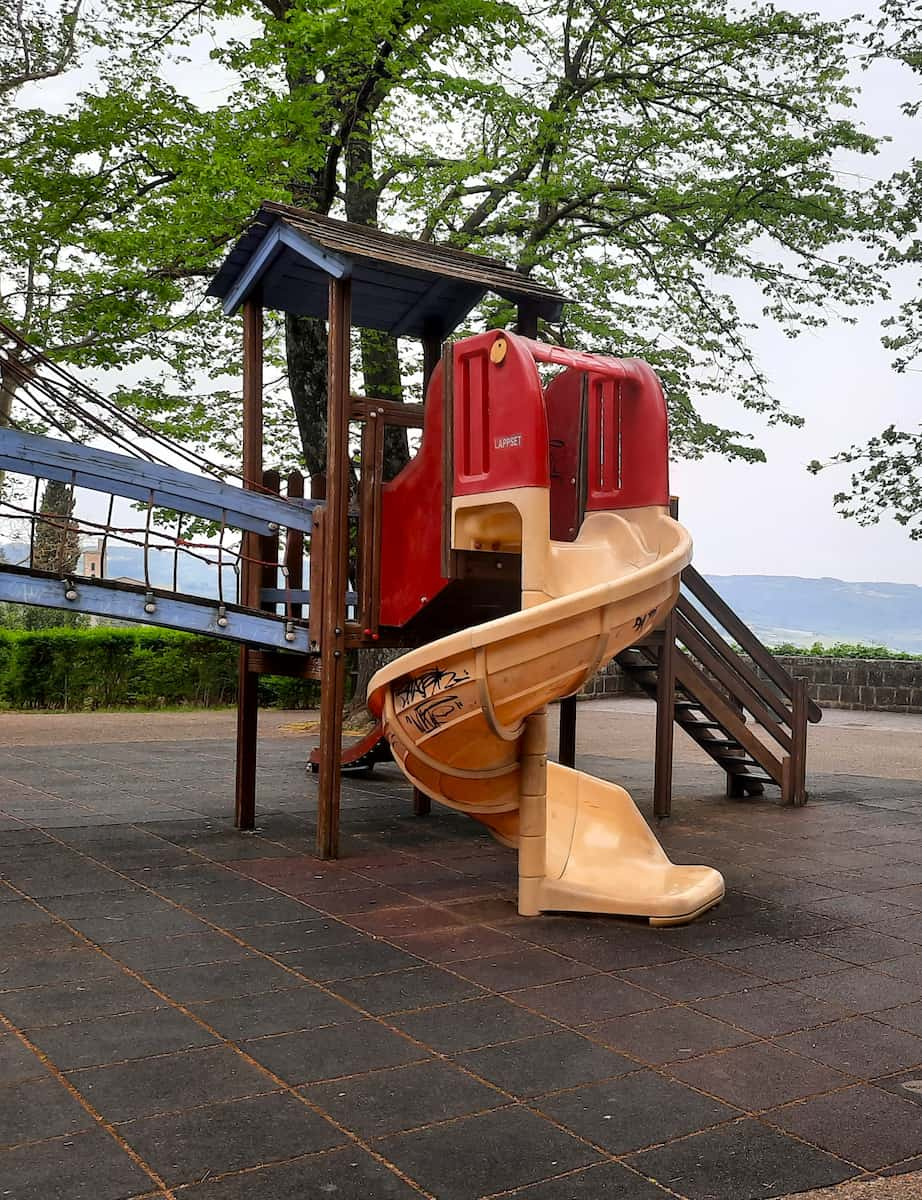
Playground facilities. The modern playground includes swings, slides, climbing structures, and a small zip line that my 8-year-old couldn’t get enough of. The equipment is well-maintained and suitable for children aged 3-12, with separate areas for different age groups.
Picnic perfect. We packed a simple lunch from the local alimentari (grocery store) and enjoyed it at one of the garden’s picnic tables. A gelato vendor often parks near the entrance in summer, offering a perfect treat after play (cones start at €2/$2.17).
Practical information. The gardens and playground are free to access and open daily from 8:00 until sunset. Clean public restrooms are available near the entrance. The gardens are wheelchair and stroller accessible via paved paths.
4. Torre del Moro
Tower challenge. Climbing the Torre del Moro became an exciting challenge for my kids, who counted every one of the 236 steps to the top. The tower’s height (47 meters) made the climb feel like a real adventure, with regular landings providing rest stops where we played “I spy” through the windows.
Reward at the top. The panoramic views from the summit thrilled even my usually hard-to-impress teenager. Spotting landmarks we’d already visited and tracing our route through the city on the helpful orientation panels became a fun game that reinforced what we’d learned about Orvieto.
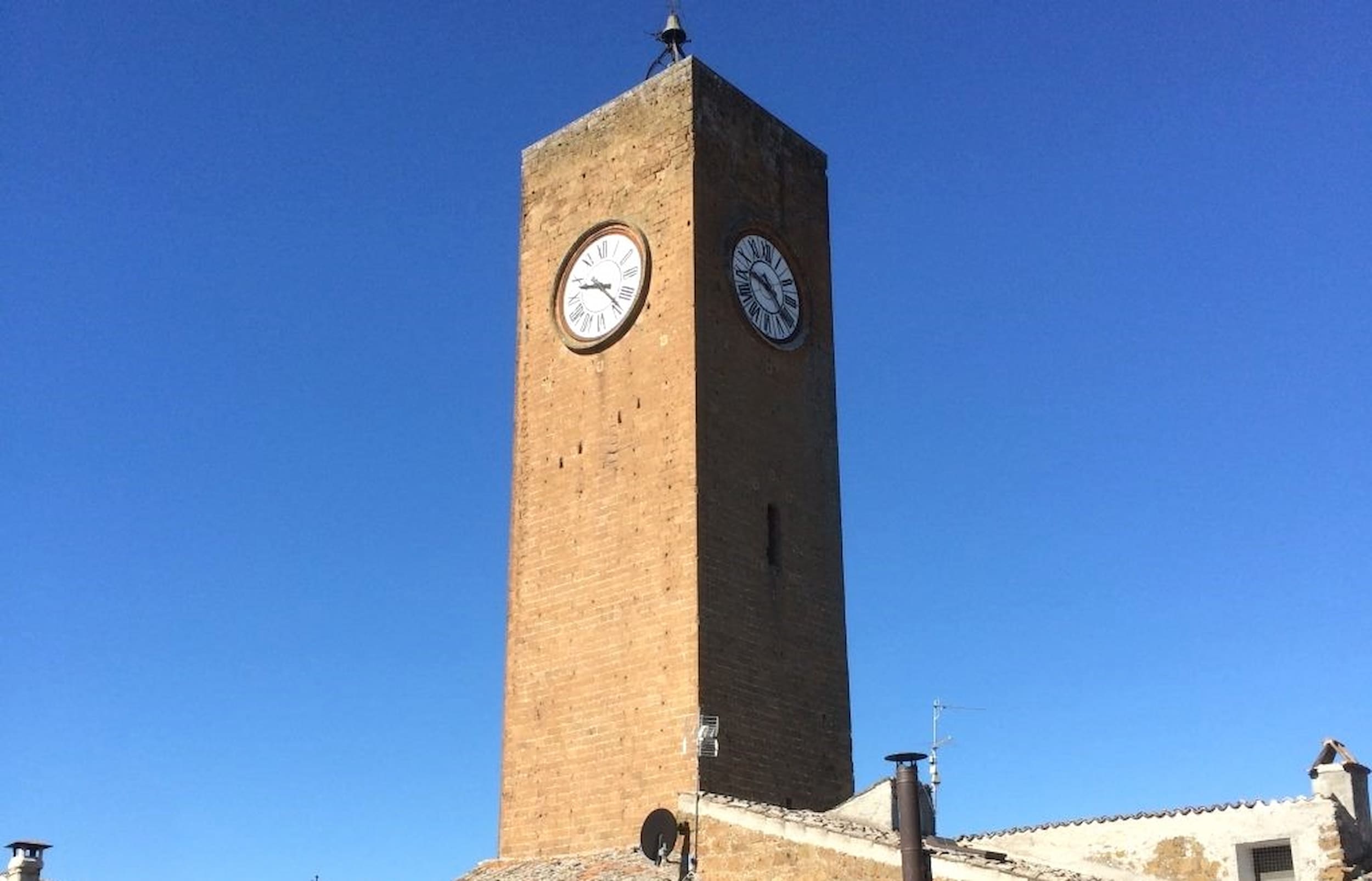
Family challenge. We turned the climb into a friendly competition, with small prizes (gelato!) for guessing how long it would take us to reach the top. This transformed a potentially tiring climb into an engaging family activity that everyone enjoyed.
Visitor tips. Family tickets cost €8 ($8.70) for 2 adults and 2 children. Opening hours are 10:30-19:30 in summer and 10:30-16:30 in winter. I recommend visiting mid-morning when crowds are smaller and temperatures cooler. Bring water bottles – the climb can be thirsty work!
5. Orvieto City Game
Interactive exploration. The Orvieto City Game transformed our sightseeing into an exciting treasure hunt. Available as a smartphone app (€9.99/$10.85) or paper version from the tourist office (€7/$7.60), it led us through the city solving clues and completing challenges at key landmarks.
Educational fun. My children learned about Orvieto’s history and culture without realizing they were being educated. The game cleverly incorporates information about the Etruscans, medieval guilds, and local traditions through puzzles and riddles appropriate for ages 6-14.
Family teamwork. The challenges required our whole family to work together – my daughter’s sharp eyes spotted architectural details, while my son’s logic helped solve the mathematical puzzles. This collaborative aspect made it one of our most memorable family activities.
Hidden discoveries. The game led us to places we might otherwise have missed, including a tiny workshop where an artisan demonstrated traditional ceramic techniques and a hidden courtyard with a Renaissance fountain. These off-the-beaten-path discoveries felt special.
Practical details. The complete game takes about 3 hours, but can be paused and resumed at any point. We spread it across two days, which worked perfectly with our relaxed pace. The paper version includes a small prize that can be collected at the tourist office upon completion.
Free Things to Do in Orvieto
1. Umbrian Hills Views
Panoramic splendor. Standing at Orvieto’s edge, I was mesmerized by the sweeping views of the Umbrian countryside. The city’s position atop a volcanic butte provides natural viewpoints where the landscape unfolds like a Renaissance painting.
Best viewpoints. The most spectacular vistas are found along the western edge near Porta Romana and the southern overlook by the Fortezza Albornoz. Each offers a different perspective of the patchwork fields, olive groves, and distant hills that define Umbria’s landscape.
Photography paradise. The changing light throughout the day transforms these views dramatically. I found early morning offered crisp clarity while late afternoon bathed everything in a warm glow that highlighted the terracotta and stone of distant farmhouses.
Local experience. At sunset, I noticed many locals gathering at these viewpoints. Families spread simple picnics, elderly couples sat on benches, and young people perched on the ancient walls. Joining them offered a genuine slice of Orvieto life.
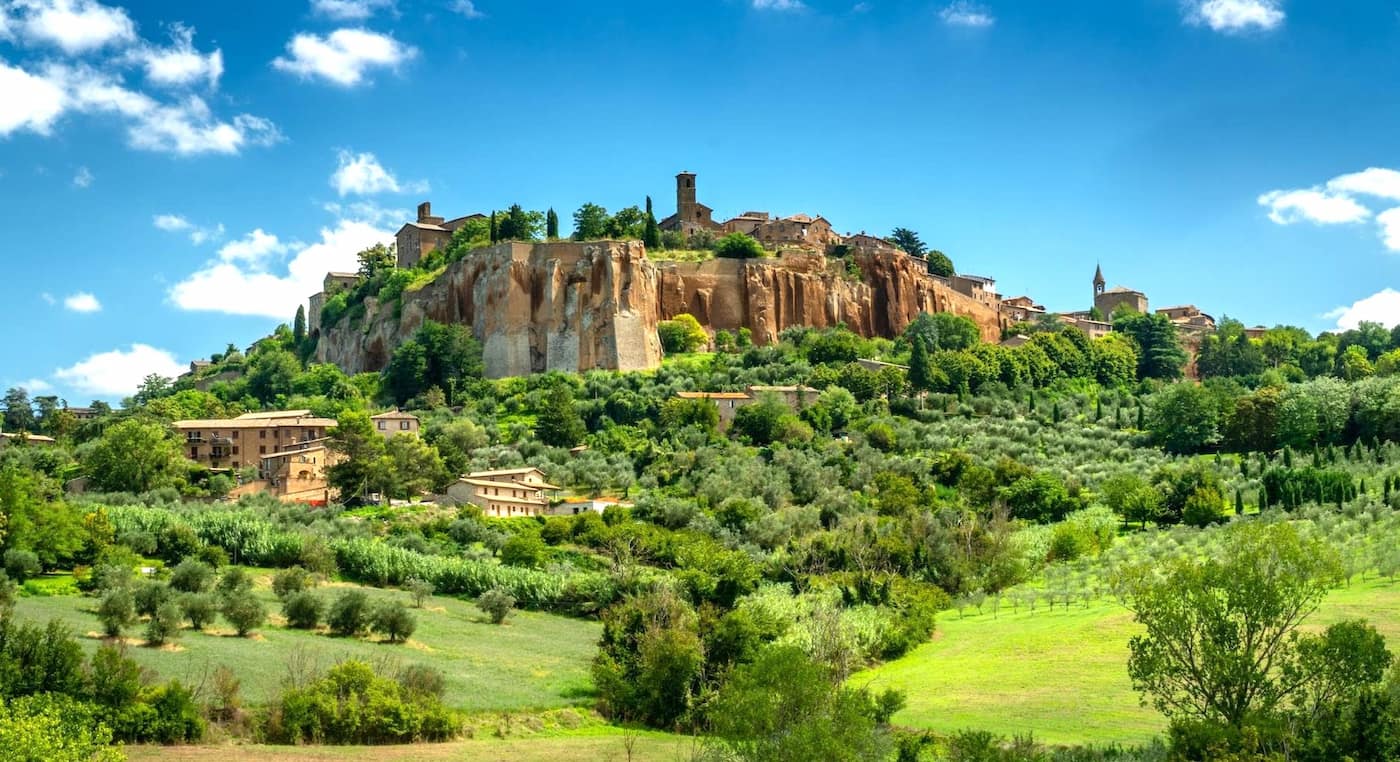
Viewing spots:
- Piazza Cahen overlook
- Fortezza Albornoz park
- Via Ripa Serancia walkway
- Belvedere near San Giovenale
- Eastern viewpoint near the funicular station
2. Giardini Comunali
Urban oasis. The Communal Gardens provided a refreshing escape from Orvieto’s stone streets. Located near Piazza Cahen, these manicured green spaces offer peaceful pathways lined with cypress trees and seasonal blooms.
Historical significance. Created in the late 19th century, these gardens were part of Orvieto’s modernization efforts. The design incorporates elements of both Italian formal gardens and English landscape style, creating varied spaces for relaxation and recreation.
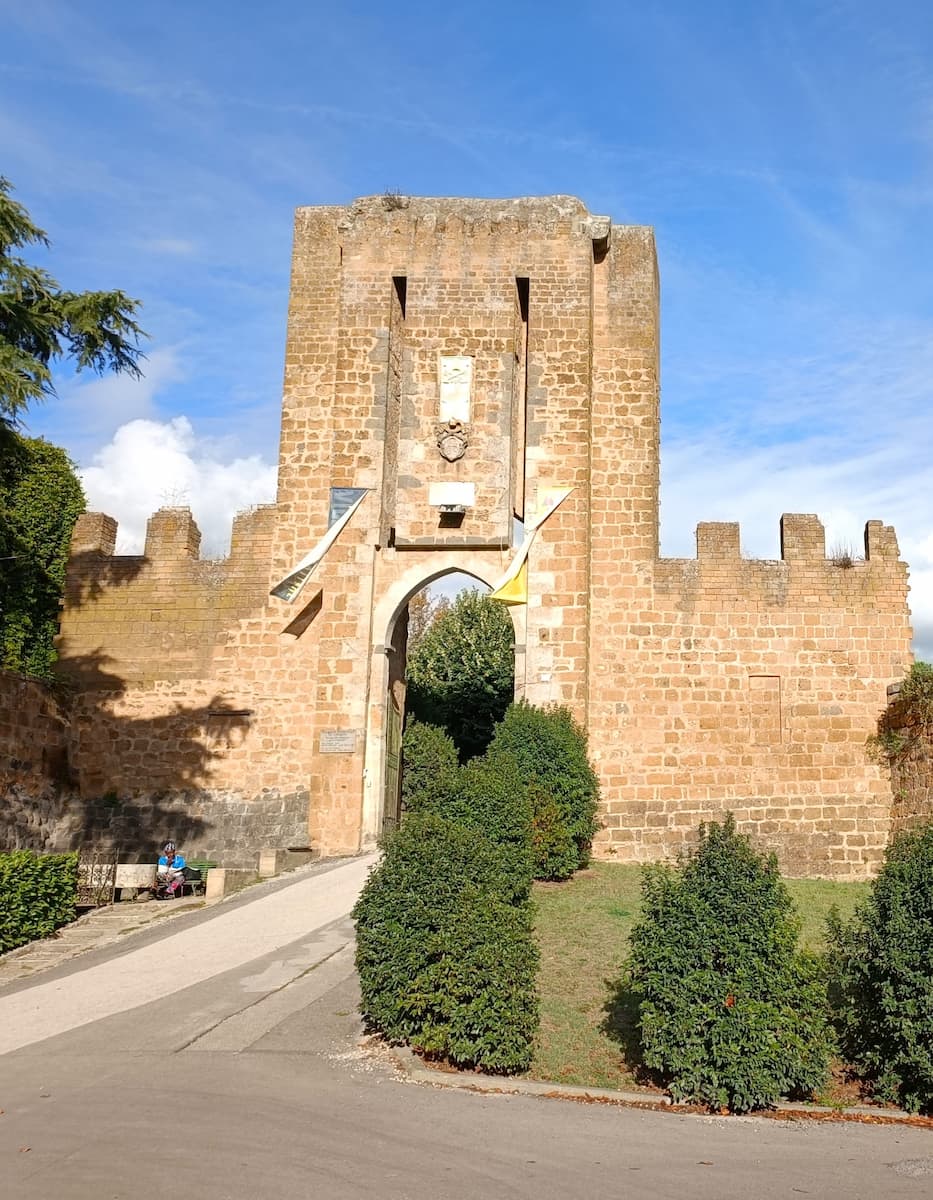
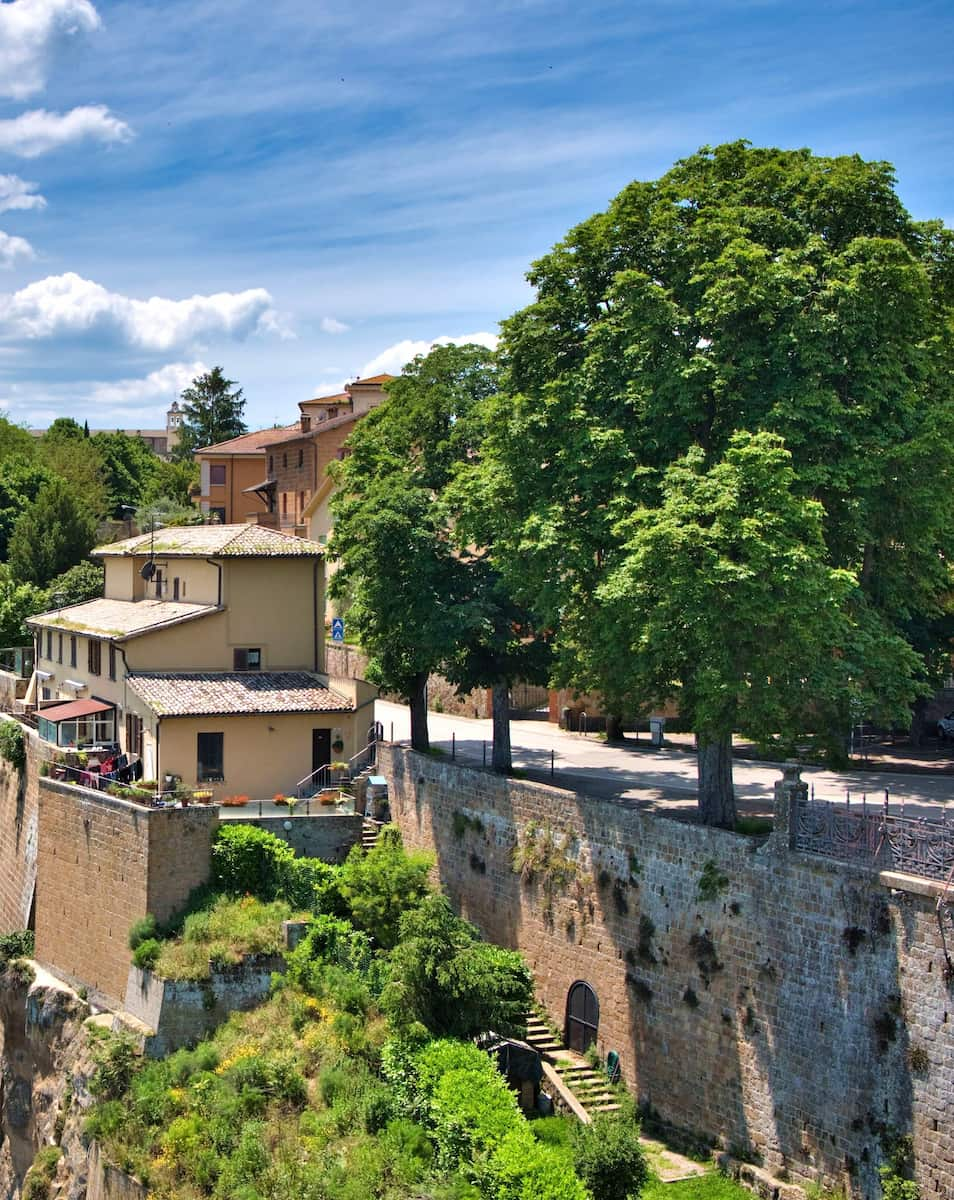
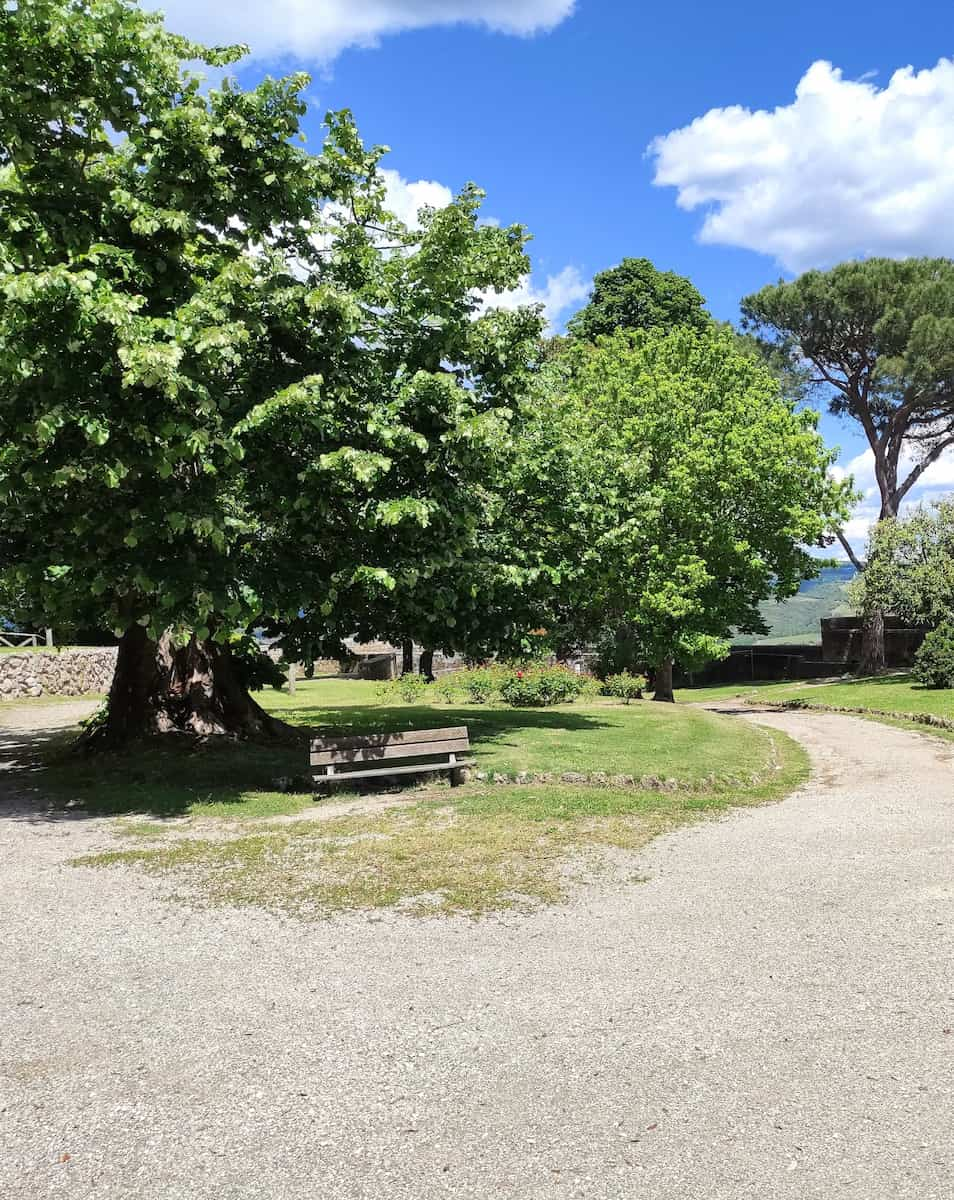
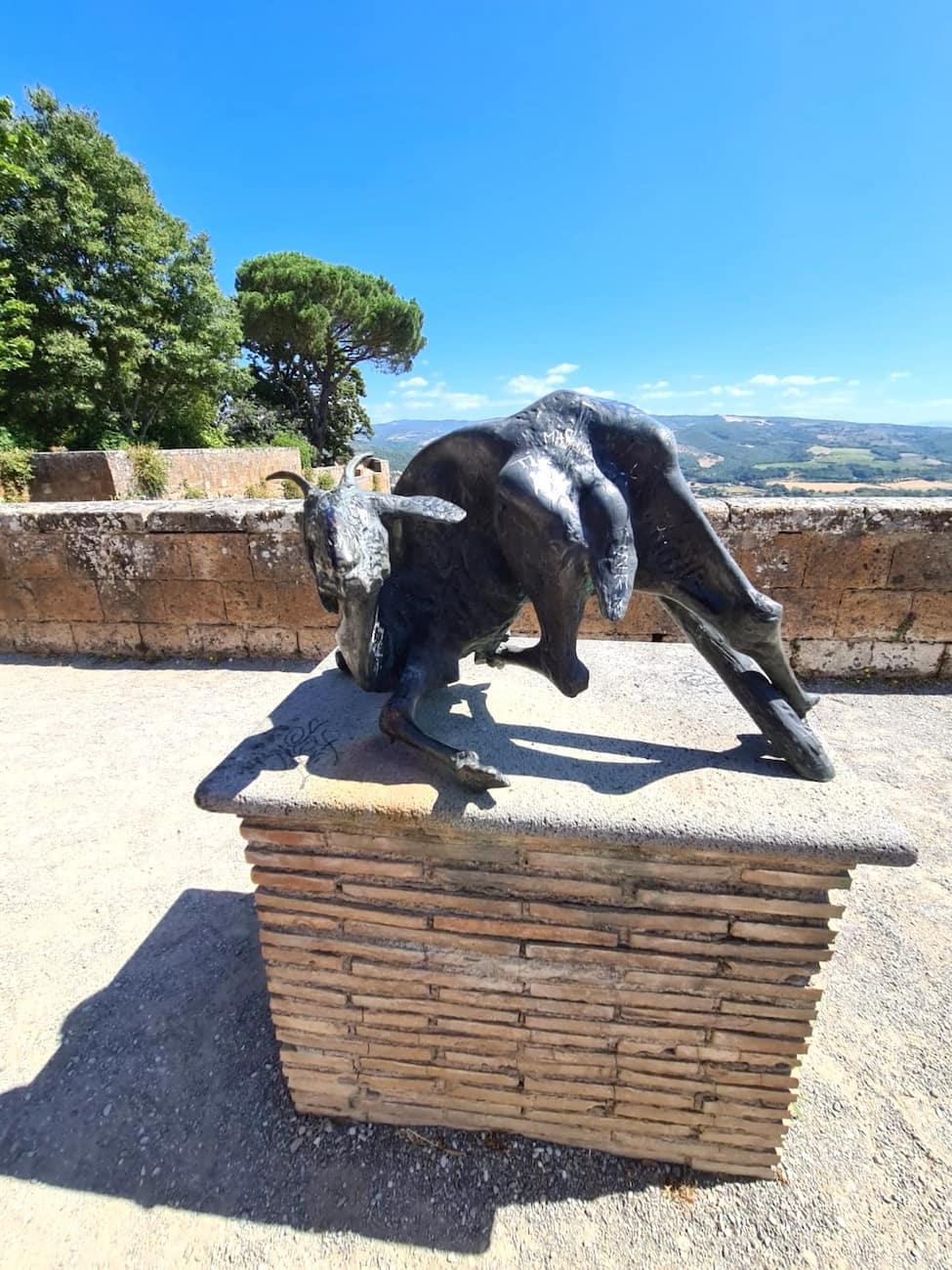
Natural beauty. I spent a delightful hour wandering among Mediterranean plants, ancient olive trees, and fragrant herb sections. The gardens are particularly beautiful in spring when wisteria drapes the pergolas and roses begin their seasonal display.
Relaxation spots. Several secluded benches tucked among the greenery provide perfect reading spots. I brought a book and enjoyed the tranquility, occasionally looking up to appreciate the views through carefully framed garden vistas.
Practical information. The gardens are open daily from 8:00 until sunset, with entrances from both Piazza Cahen and Via Postierla. Water fountains provide refreshment, and clean public restrooms are available near the main entrance.
3. Medieval Quarter
Authentic wandering. Exploring Orvieto’s medieval quarter costs nothing yet delivers rich rewards. I lost myself in the labyrinth of narrow lanes where golden tufa buildings rise three or four stories high, creating intimate passageways that open suddenly into charming piazzas.
Architectural details. The quarter reveals centuries of history through its architecture. I spotted Gothic arches, Renaissance doorways, and medieval family crests carved in stone. Many buildings feature external staircases called profferli that are typical of medieval Umbrian towns.
Artisan windows. Window shopping along Via del Duomo and the smaller side streets provides a free glimpse into Orvieto’s artisanal traditions. Ceramics, woodwork, and textiles are displayed in shops where you can often see craftspeople at work without obligation to purchase.
Exploration highlights:
- Via della Cava’s ancient doorways
- Piazza del Popolo’s medieval well
- San Giovenale district’s untouched character
- Via Malabranca’s Gothic windows
- Courtyard of Palazzo Clementini (accessible through the open archway)
4. City Walls
Ancient fortifications. Orvieto’s defensive walls have protected the city since Etruscan times, with medieval additions creating the impressive circuit visible today. Walking along these walls offers both historical insights and spectacular views completely free of charge.
Historical layers. As I traced the perimeter, I noticed distinct construction styles representing different eras. The oldest sections feature massive Etruscan stone blocks, while medieval additions show more refined masonry techniques. Information panels along the route explain these differences.
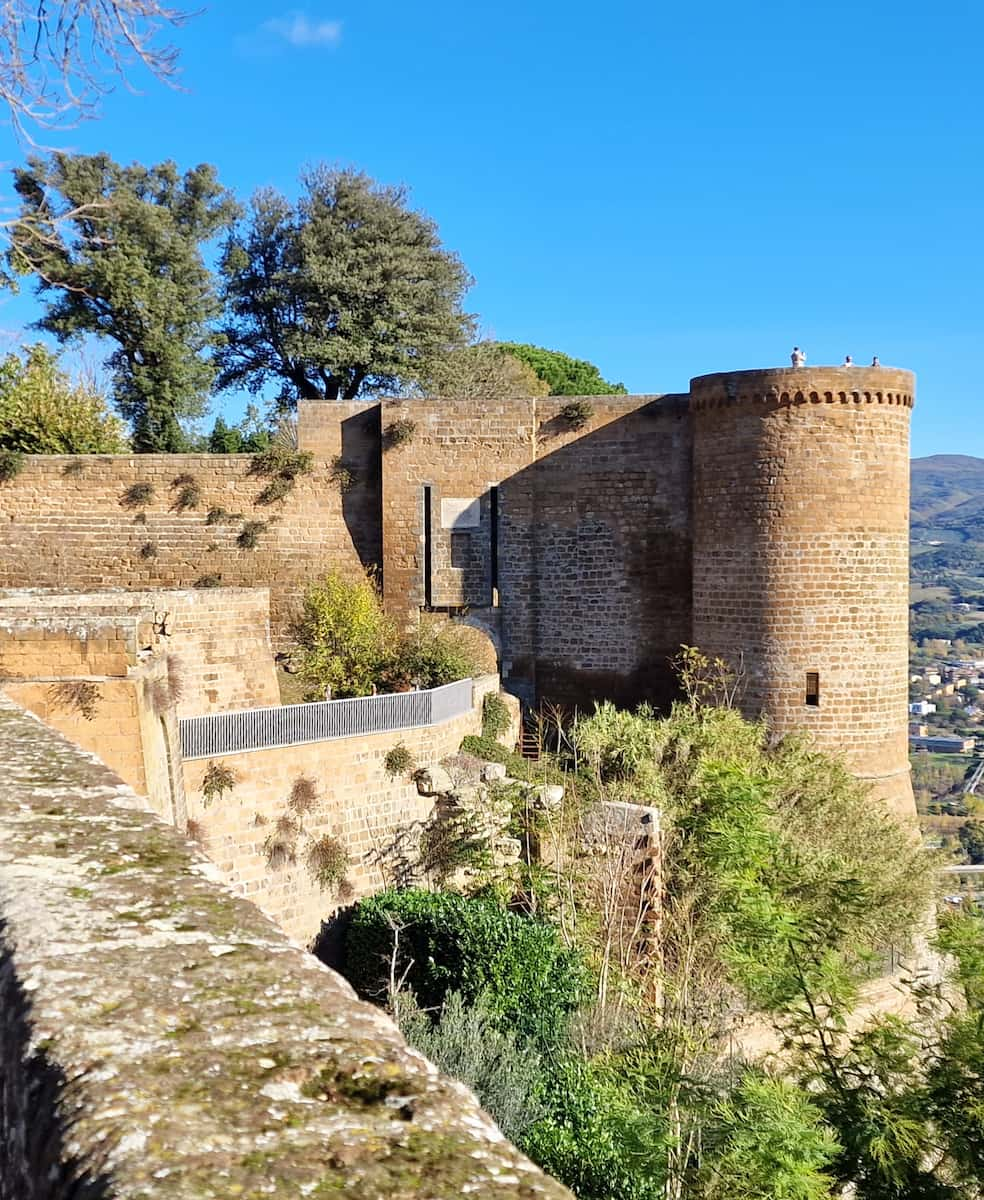
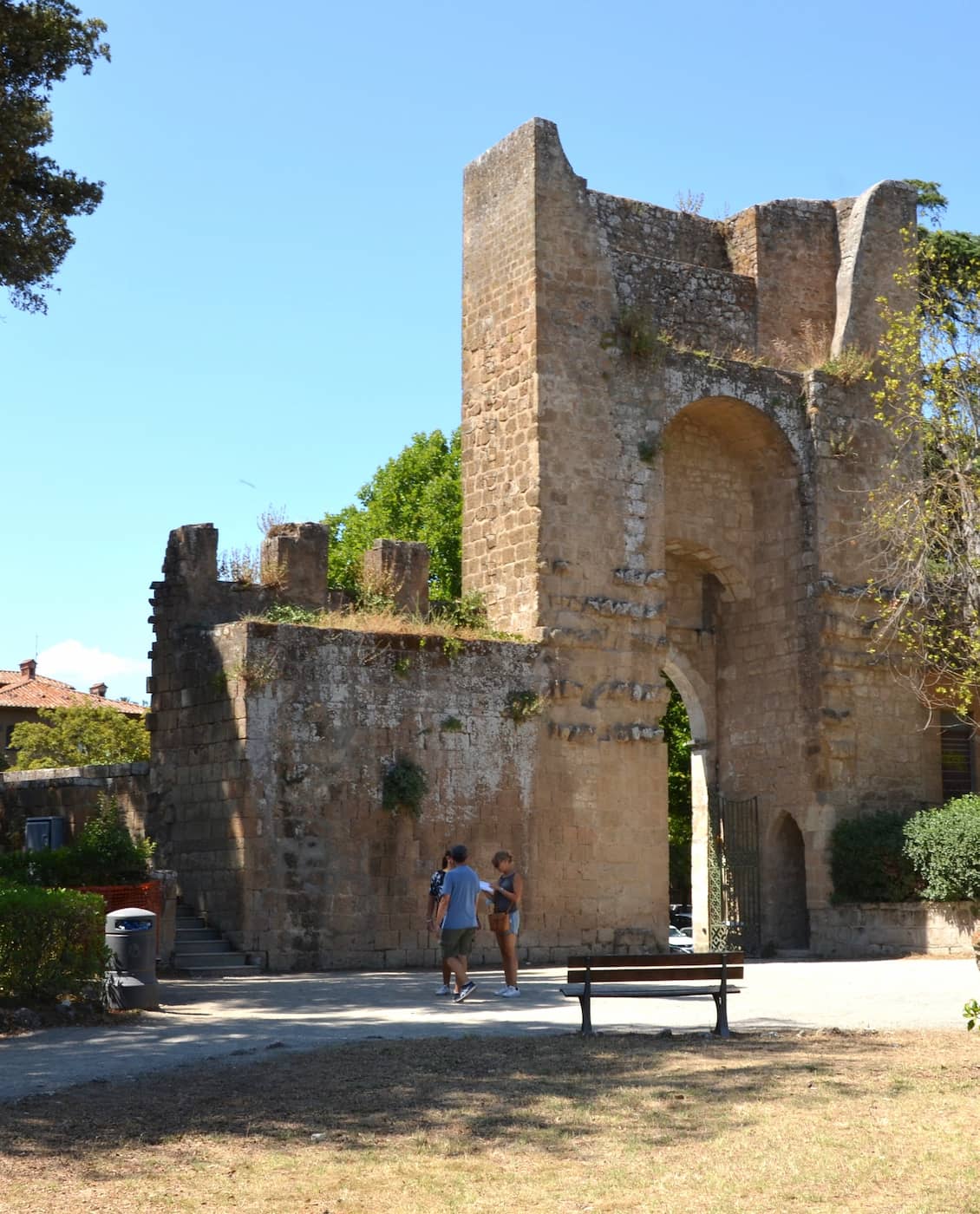
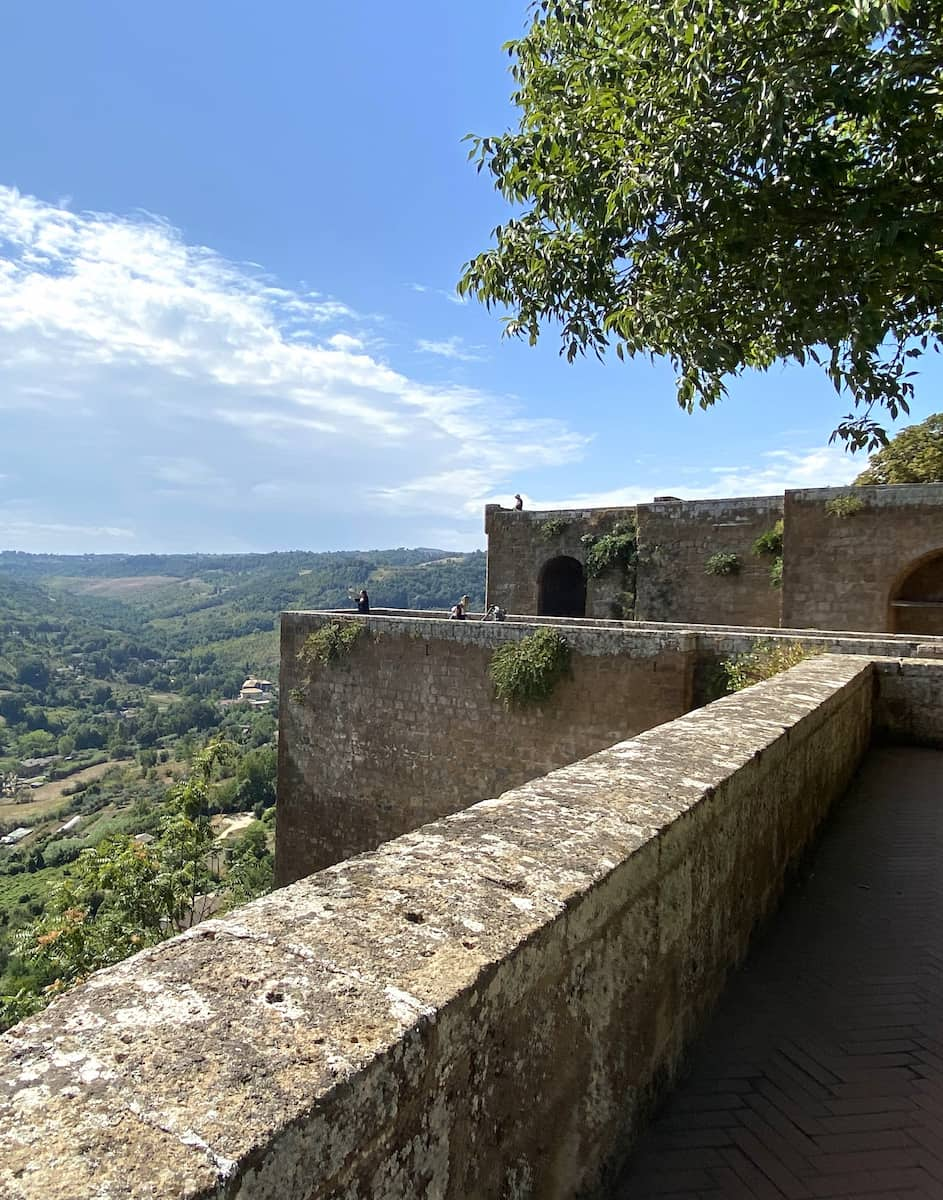
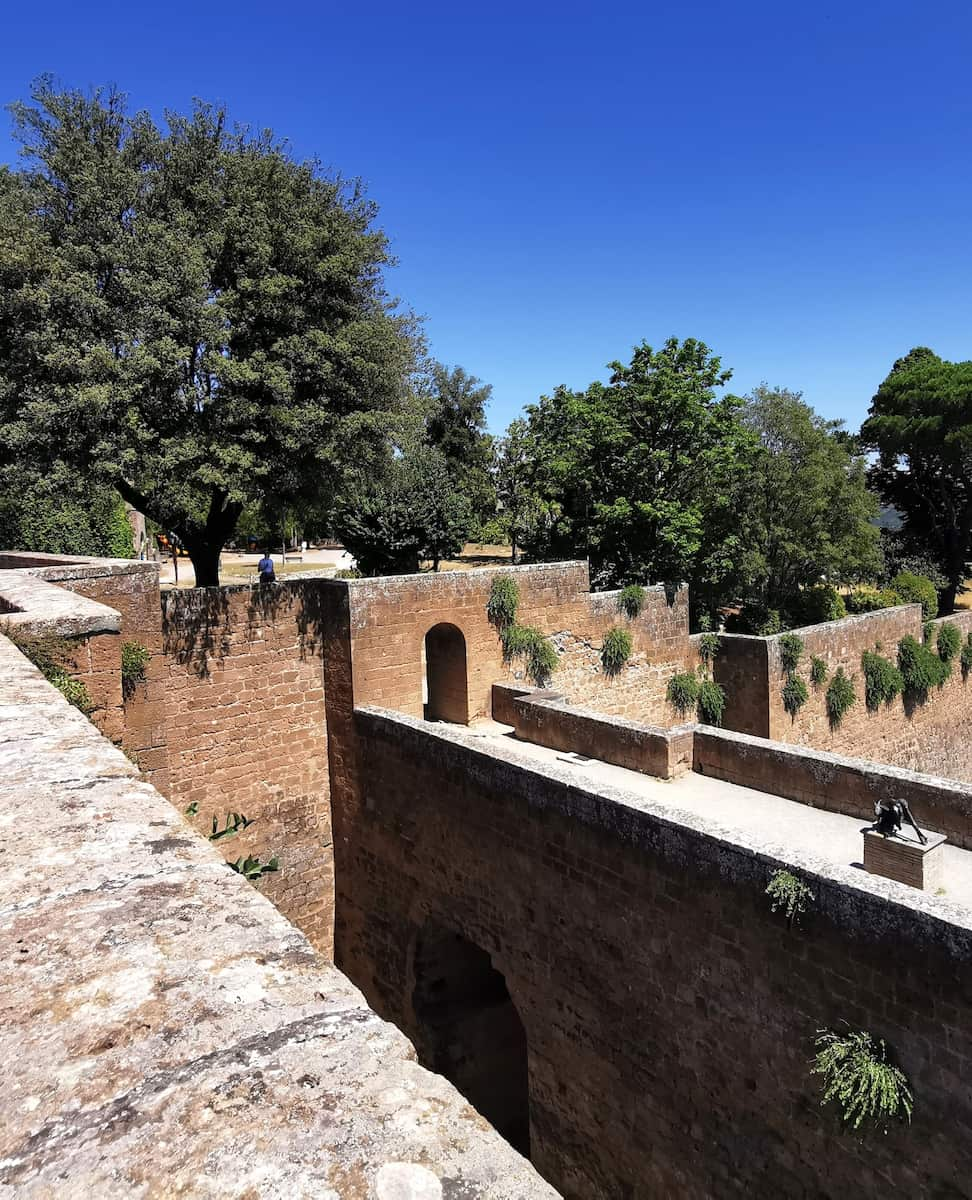
Complete circuit. The full circuit extends about 3 kilometers around the city. I broke this into sections over several days, but fit walkers could complete the entire route in about 2 hours. The western section offers the most dramatic views across the valley.
Defensive features. Along the walls, I discovered several well-preserved defensive elements including guard towers, arrow slits, and the remains of drawbridge mechanisms at the main gates. These details brought to life Orvieto’s strategic importance throughout history.
Walking tips. The path varies from paved sections to gravel tracks. Comfortable shoes are essential, and carrying water is advisable, especially in summer. The eastern section has more shade, making it a better choice for afternoon walks during hot weather.
5. Anello della Rupe Path
Circular adventure. The Anello della Rupe (Ring of the Cliff) path completely encircles Orvieto at the base of its volcanic plateau. This 5-kilometer trail offers a unique perspective of the city rising dramatically above you while providing a peaceful nature walk.
Natural beauty. Walking this path, I was surrounded by Mediterranean vegetation including holm oaks, cypresses, and wild herbs that filled the air with fragrance. In spring, wildflowers carpet sections of the trail, while autumn brings rich colors to the deciduous trees.
Historical elements. The path passes several fascinating historical sites including Etruscan necropolis caves, medieval defensive outposts, and remnants of the ancient funicular track. Information boards explain these features, creating an outdoor museum experience.
Physical challenge. While not technically difficult, the path does include some moderate climbs and uneven terrain. I completed the full circuit in about 2.5 hours at a leisurely pace with photo stops. The trail is well-marked with red and white blazes.
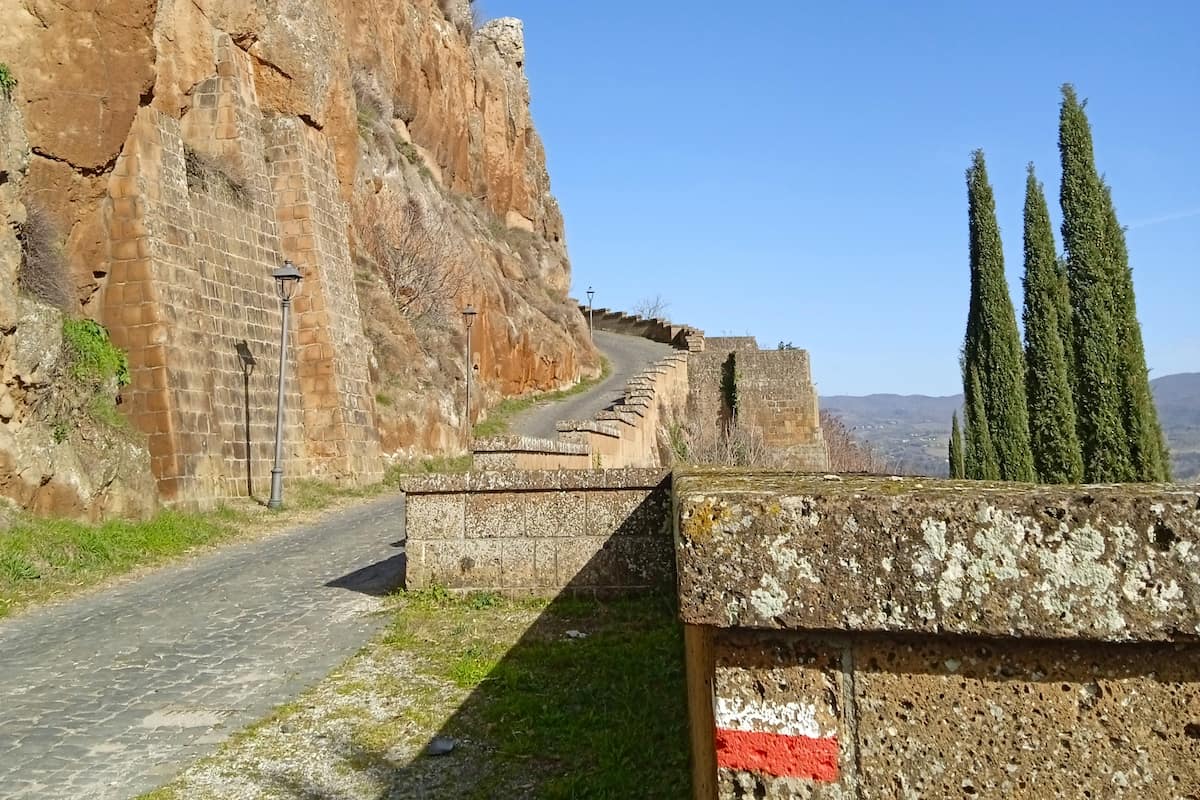
Trail sections:
- Northern section: Shadiest portion with dense woodland
- Eastern section: Passes the Etruscan necropolis
- Southern section: Best views of the cathedral
- Western section: Wildflower meadows and vineyard views
- Connecting paths: Several marked trails lead back up to the city
Seasonal Activities
Christmas in Orvieto
Festive traditions. The holiday season in Orvieto transforms the medieval city into a magical Christmas wonderland. The highlight is undoubtedly the Presepe nel Pozzo (Nativity in the Well) at Pozzo della Cava, running from December 23 to January 12. This unique nativity scene features mechanically animated life-sized figures set within an ancient Etruscan well.
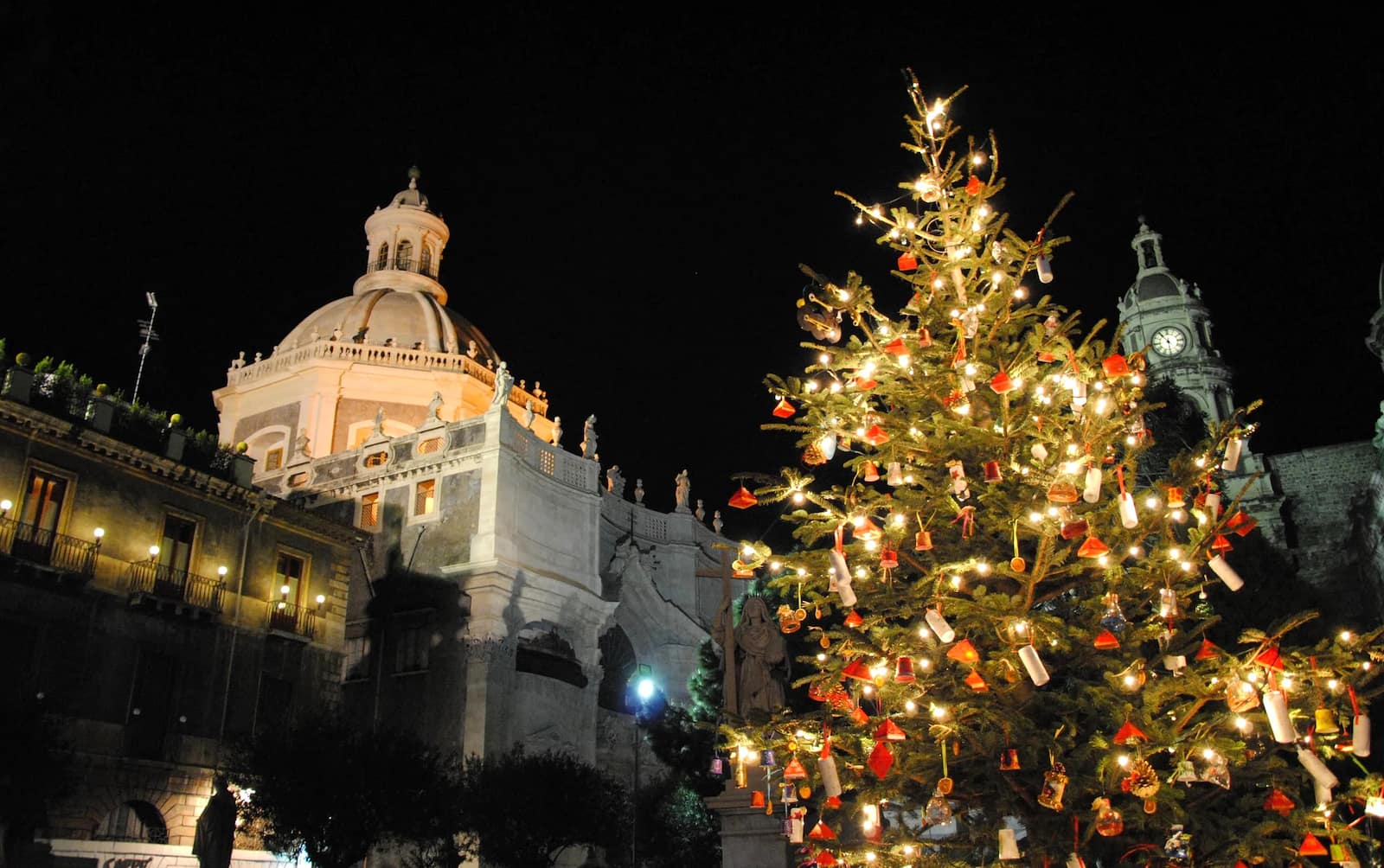
Nativity circuit. The “Circuito dei Presepi” (Nativity Scene Circuit) runs from December 23 to January 7, filling Orvieto’s churches, piazzas, and narrow streets with beautiful nativity displays. Each year brings different themes and artistic interpretations, making it worth visiting even if you’ve seen it before.
Living nativity. The atmospheric Presepe Vivente (Living Nativity) takes place in the medieval Orto di San Giovenale on December 26, January 1, and January 6 from 17:00-19:30. Local residents recreate the Bethlehem scene among ancient stone buildings, offering visitors an immersive experience with period costumes, crafts, and food.
Spring Festivals
Corpus Domini celebrations. Orvieto’s most significant religious festival takes place in late May to early June, commemorating the Miracle of Bolsena that led to the cathedral’s construction. The highlight is the Historical Procession featuring about 400 participants in medieval costumes parading through the city streets from May 31 to June 2.
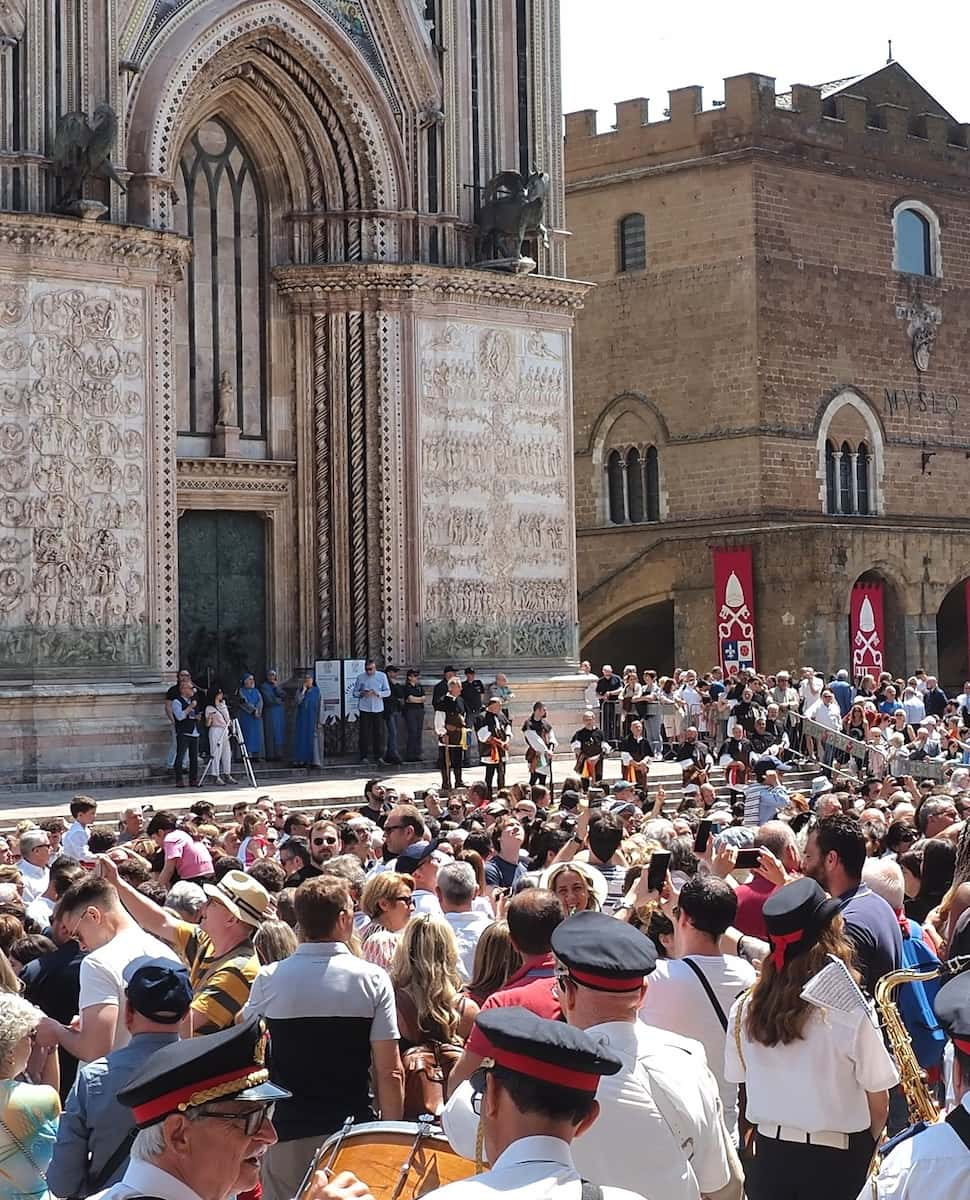
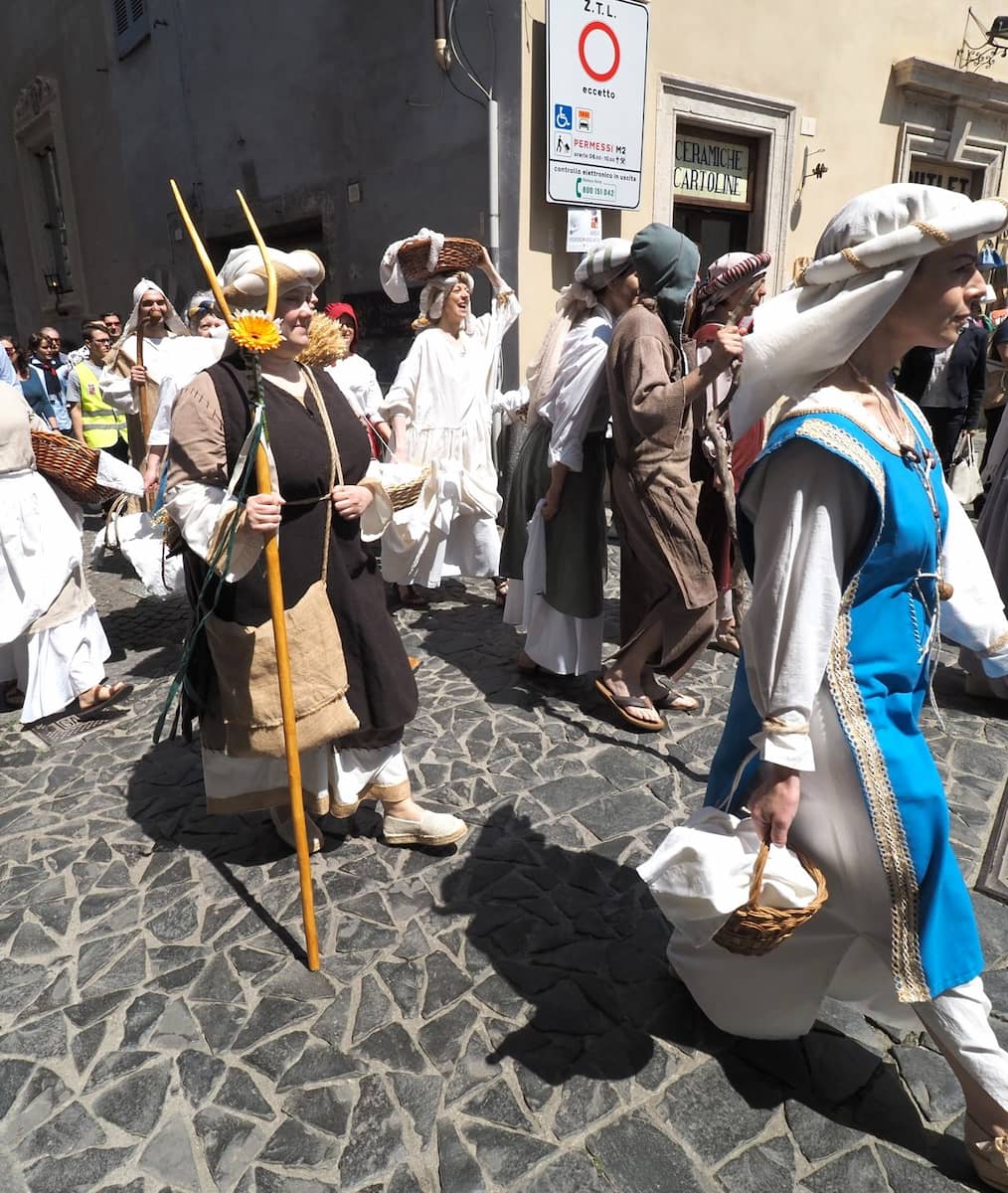
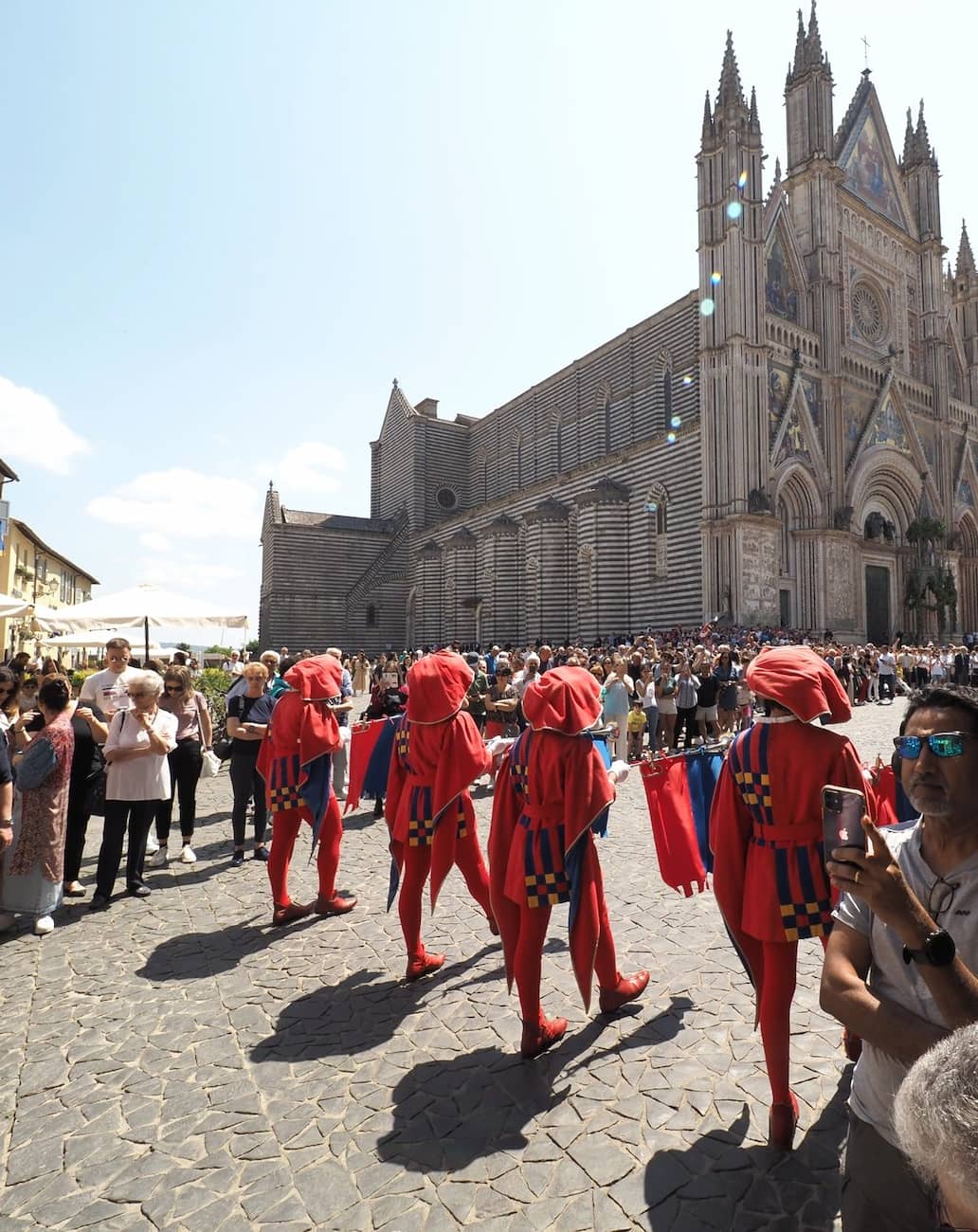
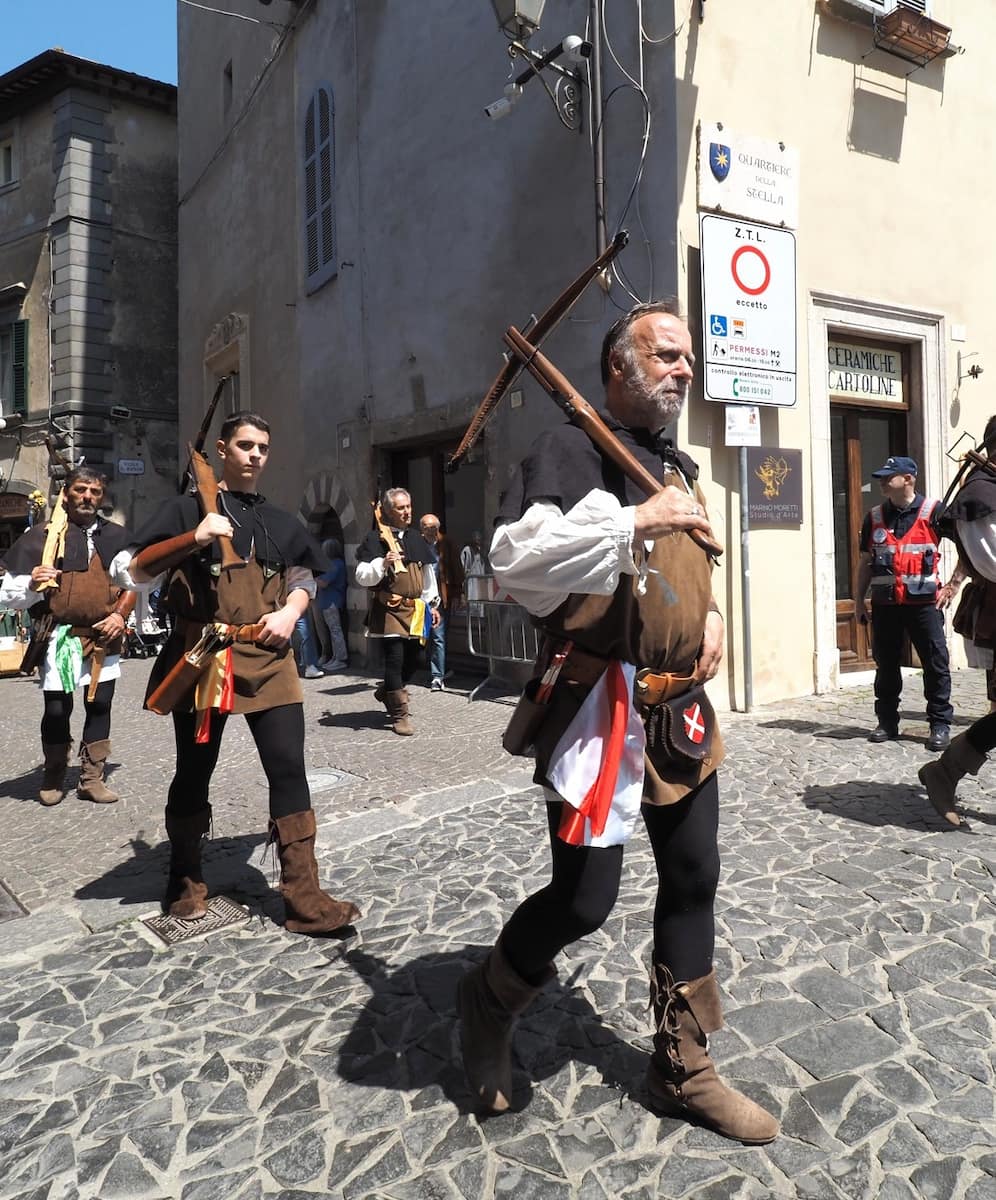
Orvieto in Fiore. Coinciding with Pentecost weekend, this “Blooming Orvieto” festival decorates the entire city with spectacular floral displays. The event transforms piazzas and medieval streets into colorful gardens, with flower markets and botanical exhibitions throughout the historic center.
Festa della Palombella. Taking place on Pentecost Day (typically in May or early June), this tradition dates back to 1404. At midday, a white dove travels along a metal cord from Via Maitani to the cathedral porch in Piazza del Duomo, symbolizing the Holy Spirit’s descent. Hundreds gather to witness this ancient ceremony.
Summer Events
Umbria Folk Festival. From August 21-26, this vibrant celebration fills Orvieto’s historic center with folk music, artisanal crafts, and regional food. Piazza del Duomo transforms into a marketplace for local products, while Piazza della Repubblica and Piazza del Popolo host artistic craftwork and traveling musicians creating a lively atmosphere.
Cronoscalata della Castellana. This vintage car race takes place from May 18-20, drawing motorsport enthusiasts to watch classic vehicles compete on the winding road from San Giorgio to Colonnetta di Prodo. The event combines sporting excitement with the beauty of Umbrian countryside.
Taverna Folk. During the Folk Festival, this open-air dining experience in Piazza del Popolo serves traditional Umbrian dishes from 19:00 until late night. Enjoying local specialties while listening to folk music under the stars creates an unforgettable summer evening.
Winter Celebrations
Umbria Jazz Winter. From December 28 to January 1, this prestigious jazz festival transforms Orvieto into a musical haven. Concerts take place in historic venues including Palazzo del Popolo, Teatro Mancinelli, and even the Cathedral for gospel performances. The festival culminates in New Year’s celebrations throughout the city.
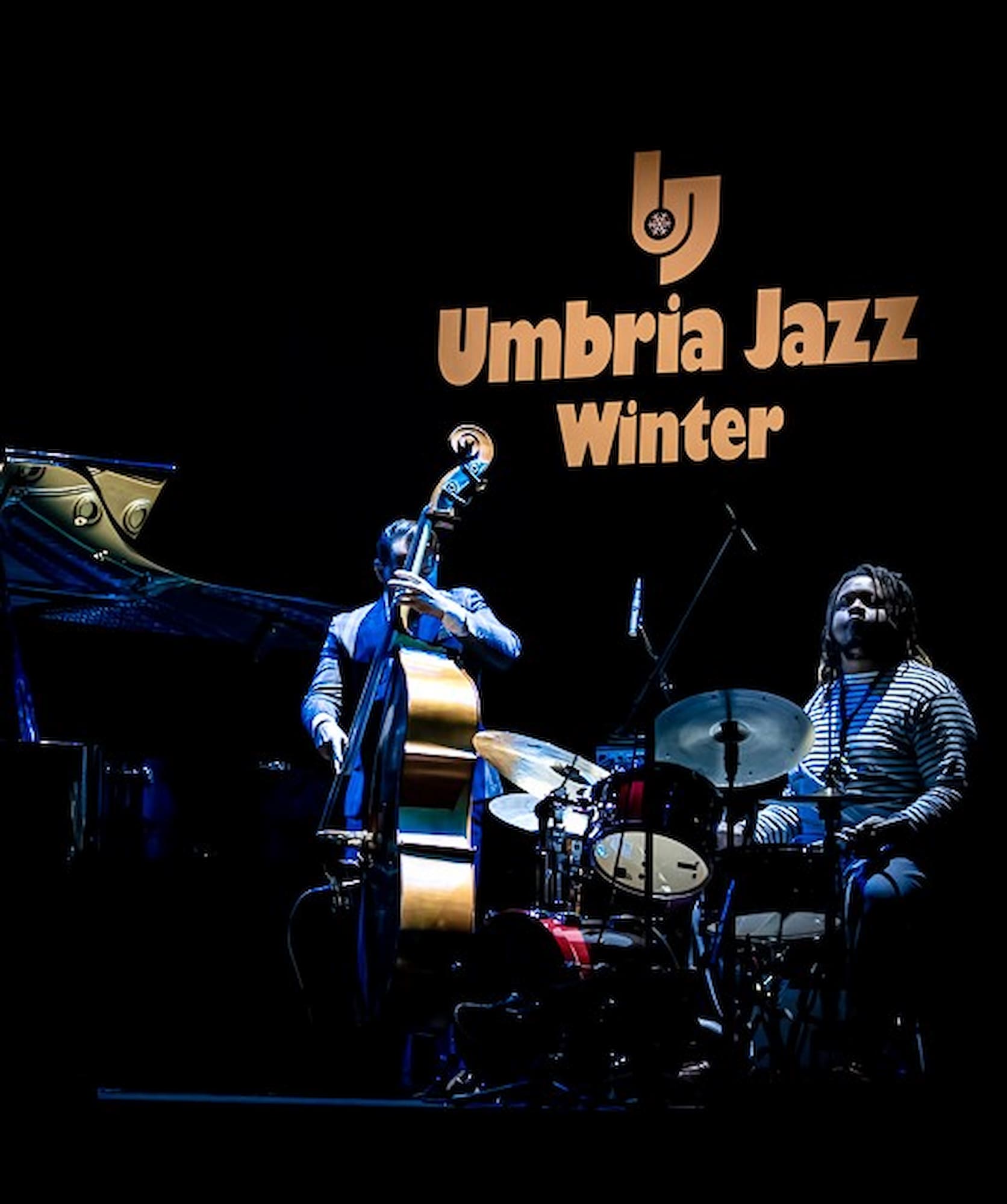
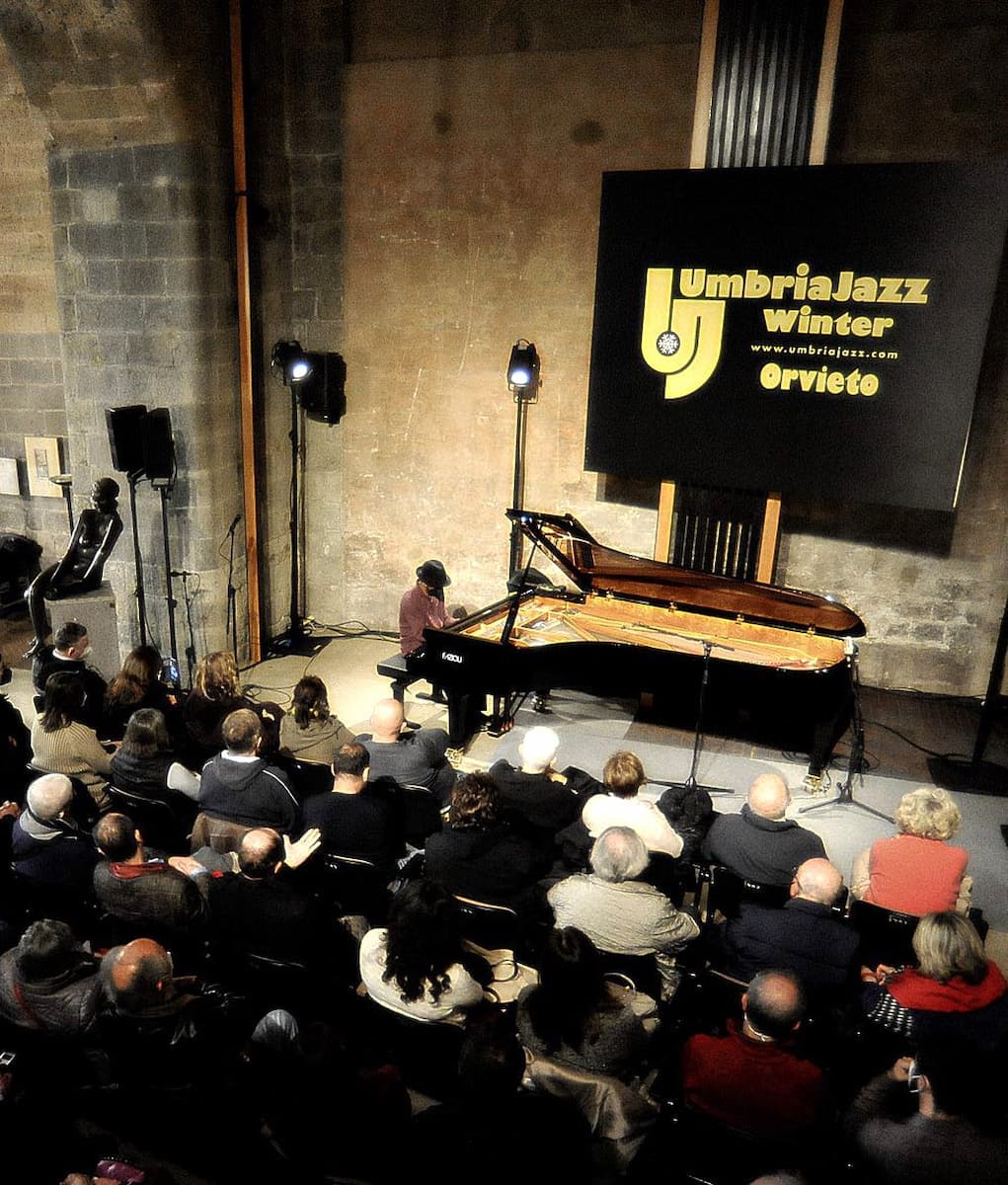
New Year’s atmosphere. Beyond the jazz performances, Orvieto offers a magical setting for welcoming the new year. The medieval streets fill with revelers, restaurants offer special menus, and the city’s intimate scale creates a festive yet refined atmosphere unlike larger city celebrations.
Day Trips from Orvieto
1. Civita di Bagnoregio
Medieval wonder. Civita di Bagnoregio is one of the most extraordinary day trips from Orvieto, just 25 km away. This stunning “dying city” perches dramatically on a crumbling tufa rock plateau, accessible only by a 300-meter pedestrian bridge that spans the valley below.
Getting there. The easiest way to reach Civita is by car – take the A1 motorway from Orvieto and exit at Orvieto, then continue towards Bagnoregio (about 30 minutes). If you don’t have a car, several tour companies offer guided day trips from Orvieto that include transportation.
What to see. Once you cross the bridge, you’ll enter a perfectly preserved medieval village with charming cobbled alleys, flower-adorned balconies, and stunning panoramic views. Don’t miss the Church of San Donato on the main square, the Etruscan grottoes (Antica Civitas), and the Geological Museum of Landslides to understand the town’s precarious situation.
Practical tips. The town has only 11 permanent residents but receives many visitors. Arrive early to avoid crowds, especially in summer. The bridge requires a moderate uphill walk, so wear comfortable shoes. Entry to Civita costs €5, and most attractions are open daily from 9:00-20:00.
⭐ Best Activities
- E-Bike Experience from Orvieto to Civita – Enjoy an electric bike adventure from Orvieto to the stunning “dying town” of Civita di Bagnoregio, cycling through beautiful Umbrian countryside with minimal effort.
2. Lake Bolsena
Natural beauty. Lake Bolsena, Europe’s largest volcanic lake, offers a refreshing contrast to Orvieto’s medieval architecture. Just 20 km west of Orvieto, its crystal-clear waters and charming lakeside towns make for a perfect day trip, especially during summer months.
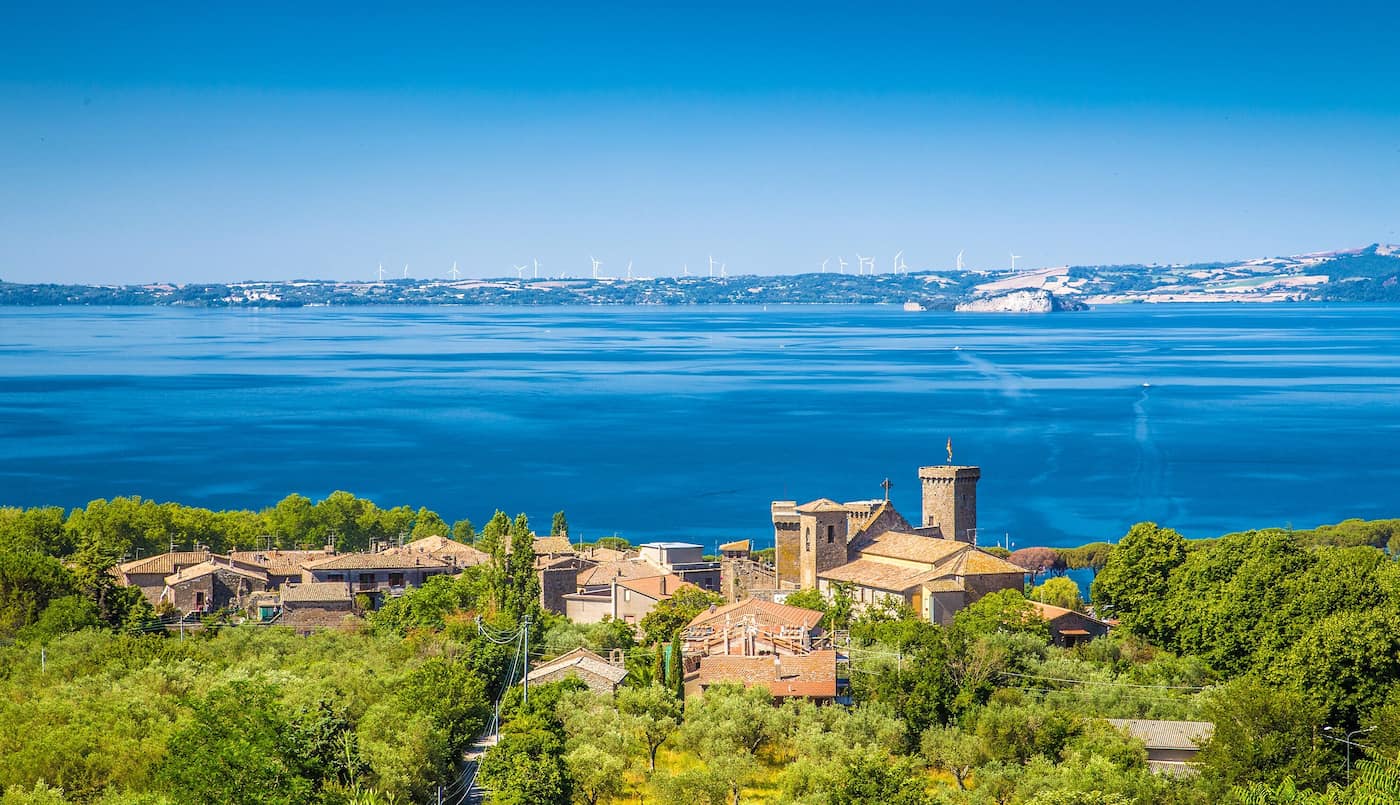
Activities. The lake is ideal for swimming, sailing, and windsurfing, with several beaches around its perimeter. Nature lovers can explore hiking trails along the Via Francigena pilgrimage route or visit Lago di Mezzano for a more secluded experience. Adventure seekers can try motorboating or water skiing on the lake’s calm waters.
Towns to visit. Bolsena itself is worth exploring, with its medieval center and lakefront promenade. Capodimonte on the southern shore is perfect for sailing enthusiasts. After activities, you can enjoy fresh lake fish at waterfront restaurants in any of the small towns circling the lake.
Getting there. The easiest route is by car – take the SR71 from Orvieto toward Montefiascone, then branch off to Bolsena on SR13. The drive takes about 30 minutes and offers spectacular views as you suddenly crest the volcanic crater and see the lake spread out below you.
⭐ Best Activities
- Lake Bolsena and the Via Francigena eBike Tour – Join us in a gentle ride among the enchanting vineyards and the historical olive grows along the countryside roads of Lake Bolsena – the biggest volcanic lake in Europe.
3. Todi
Hilltop gem. Todi is a perfectly preserved medieval town perched on a hill overlooking the Tiber Valley, about 40 km northeast of Orvieto. Its picturesque piazzas, impressive architecture, and authentic atmosphere make it an ideal day trip destination.
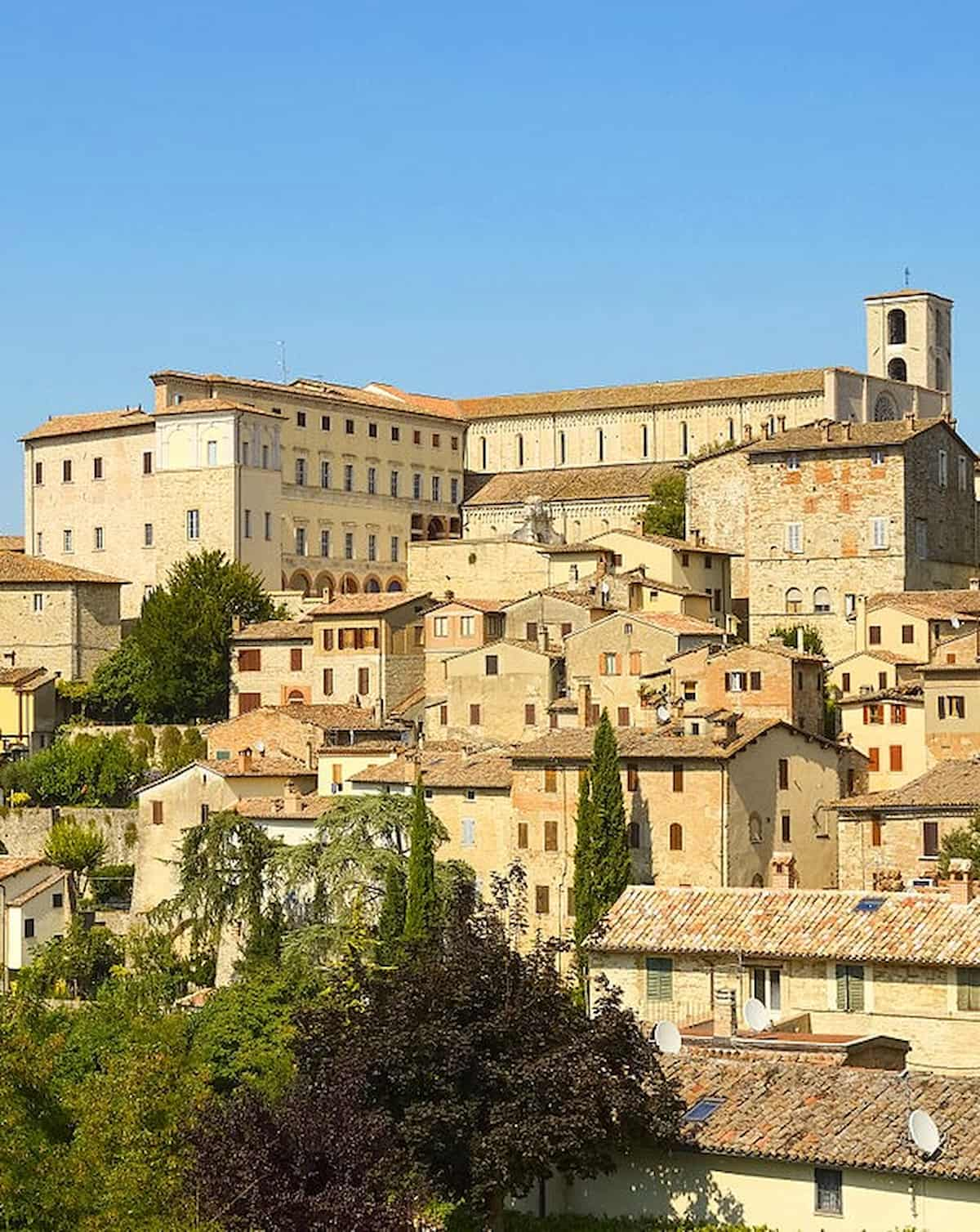
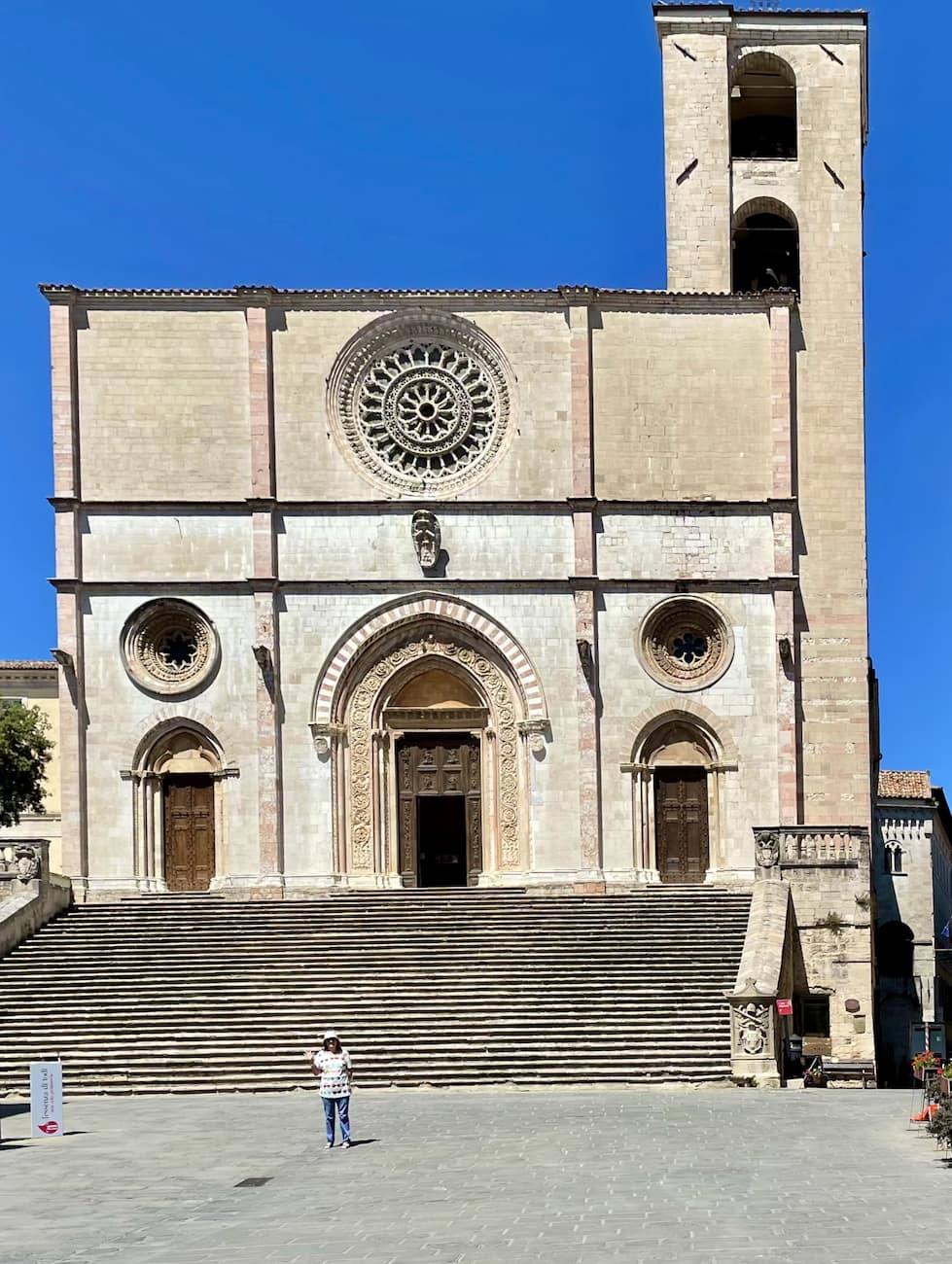
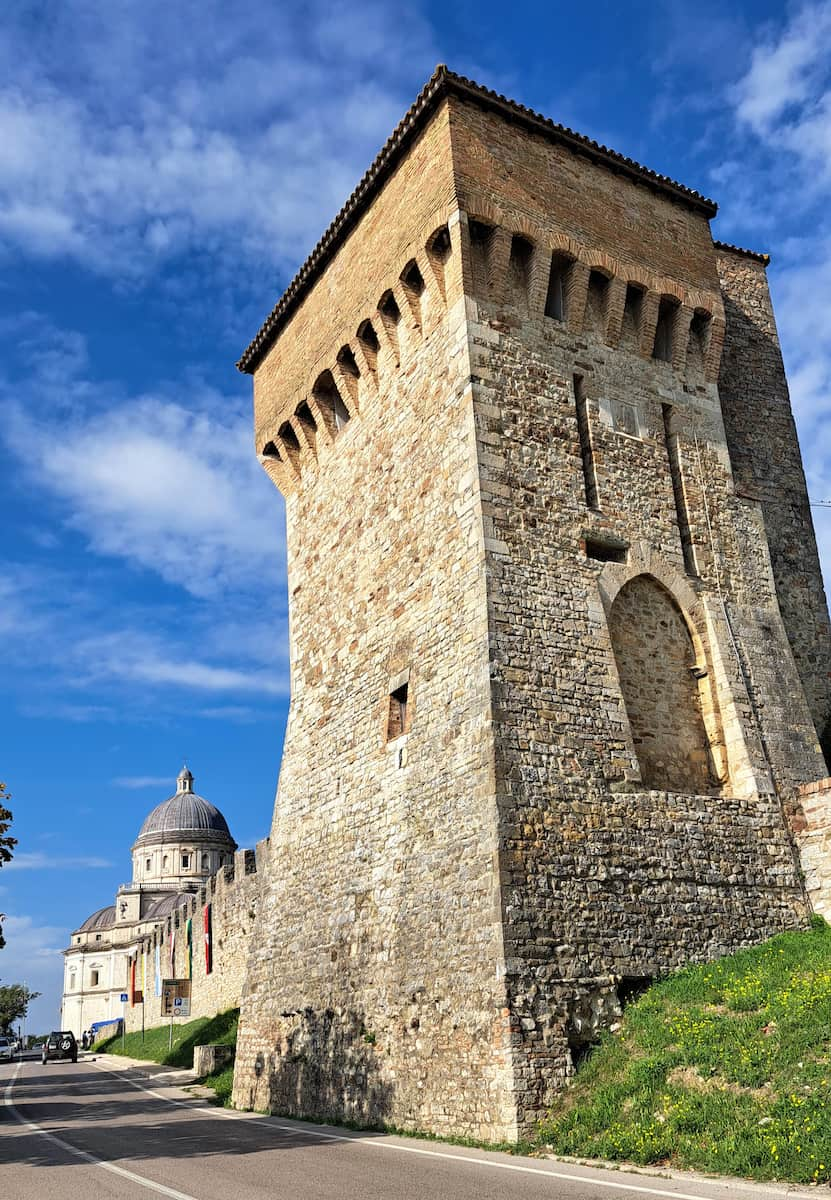
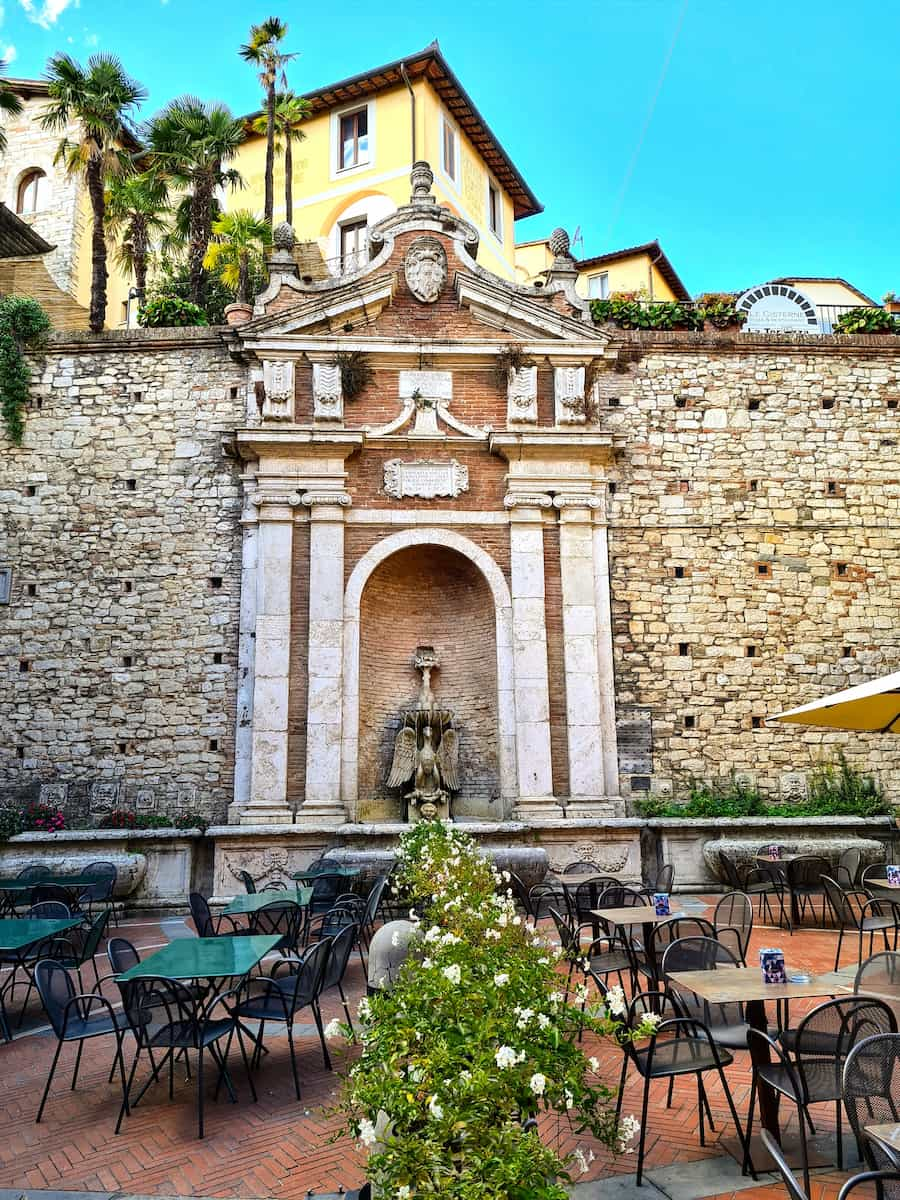
Main attractions. The heart of Todi is Piazza del Popolo, one of Italy’s most beautiful squares, surrounded by impressive medieval buildings including the 12th-century Cathedral and Palazzo del Capitano. The town also features three concentric sets of walls (Etruscan, Roman, and medieval) with various gates and defensive structures.
Local experience. Unlike some tourist-heavy towns, Todi maintains its authentic character. In the evenings, locals gather in the main square for the traditional passeggiata, creating a lively atmosphere. The town is known for excellent restaurants serving Umbrian specialties.
Transportation. The fastest way to reach Todi from Orvieto is by car, which takes about 40 minutes via direct country roads. Alternatively, there are buses from Piazza Cahen in Orvieto to Todi, though the journey takes longer (approximately 2 hours 46 minutes) and may require a transfer.
⭐ Best Activities
- Todi: 2-Hour Private Walking Tour – The historic center of Todi reflects the wealth and prosperity of this lovely town in the Middle Ages. With this tour, you will explore the city center focusing on the famous central square closed on one side by the Cathedral of Saint Mary.
4. Viterbo
Medieval capital. Viterbo, once the papal seat in the 13th century, boasts one of Italy’s best-preserved medieval quarters. Located about 45 km southwest of Orvieto, this historic city offers impressive architecture, thermal baths, and fascinating underground areas.
Historic center. The San Pellegrino quarter features perfectly preserved medieval streets and buildings. Don’t miss the impressive Palazzo dei Papi (Papal Palace), the 12th-century Cathedral of San Lorenzo, and the numerous fountains throughout the city. For a unique experience, visit Viterbo Underground to explore the tunnels beneath the city.
Beyond the center. Just outside Viterbo, Villa Lante offers one of Italy’s most beautiful Renaissance gardens. The free thermal pools at Terme Libere Piscine Carletti provide a relaxing natural spa experience in outdoor hot springs.
Getting there. The most convenient way to reach Viterbo is by bus, with services departing from Piazza d’Armi in Orvieto to Montefiascone, where you transfer to a bus to Viterbo. The entire journey takes about 1 hour 44 minutes and costs €3-5. Driving takes approximately 47 minutes.
⭐ Best Activities
- Viterbo Private City Tour including Popes Tombs Conclave Palace and Duomo – Take a tour of Viterbo with your own private guide, and discover the historic corners of the stately Lazio city. Focusing on the sights that interest you most, the private tour takes in the neighborhood of San Pellegrino and landmarks linked to the city’s papal history. You’ll visit the palace where the first recorded conclave took place, and hear fun facts about Viterbo’s numerous movie locations.
5. Assisi
Spiritual journey. Assisi, the birthplace of St. Francis, sits on the slopes of Mount Subasio about 85 km northeast of Orvieto. This UNESCO World Heritage site attracts pilgrims and tourists alike with its spiritual significance and stunning medieval architecture.
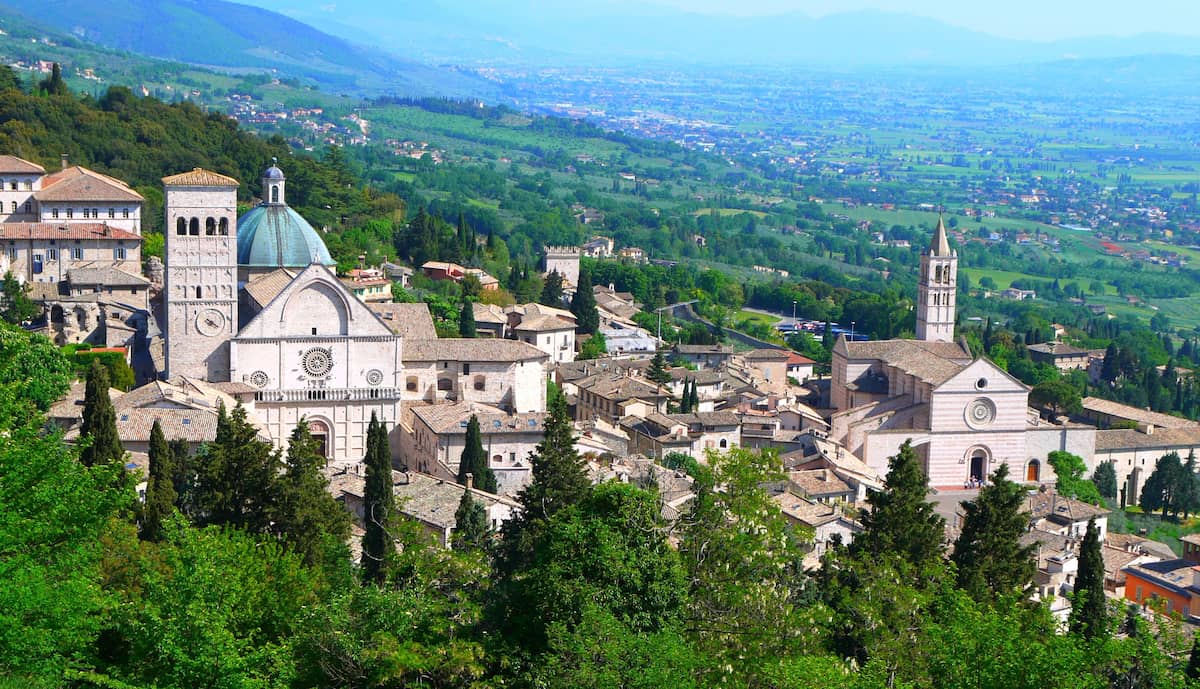
Religious sites. The Basilica of San Francesco d’Assisi is the town’s crown jewel, featuring magnificent frescoes by Giotto in its Upper and Lower Churches. Other important religious sites include the Basilica di Santa Chiara, the Church of Santa Maria degli Angeli housing the Porziuncola Chapel where St. Francis died, and the Eremo delle Carceri hermitage in the forest.
Historic center. Beyond religious sites, Assisi’s historic center offers Roman ruins, medieval squares, and panoramic viewpoints. Visit Piazza del Comune, the Roman Forum, and climb to Rocca Maggiore fortress for breathtaking views of the town and Umbrian countryside.
Transportation. While Assisi is the furthest day trip on this list, it’s still doable. The fastest option is driving, which takes about 1 hour 20 minutes. Public transportation is possible but time-consuming, requiring a train from Orvieto to Terontola-Cortona and then another to Assisi, taking approximately 4 hours in total.
⭐ Best Activities
- Assisi Private Walking Tour including St. Francis Basilica – Discover Assisi’s rich history on a private walking tour. Stroll through the charming squares and narrow streets of the old town and learn about the city’s multilayered past as you view ancient Roman ruins and medieval buildings. Pay homage to Assisi’s famous patron saint at the Basilica of St Francis, which boasts one of Italy’s finest collections of church art. Stop as often as you like and enjoy the personalized attention of a private guide.
❓ FAQ
How to get to Orvieto from Rome or Florence?
Orvieto is located in the region of Umbria, easily accessible by train or by car from both Rome (1.5 hours) and Florence (2 hours). The train station sits below the hilltop town, where you can ride the funicular up to the historic center.
Is the Orvieto Card worth purchasing for visitors?
The Orvieto Carta Unica is definitely worth purchasing as it includes entry to the Cathedral, Underground tunnels, St. Patrick’s Well, and several museums for €25. This combined ticket saves money if you’re hoping to see multiple attractions and is valid for two days, giving you plenty of time to explore the town.
What are the most popular things to do in Orvieto?
The most popular things to do include admiring the magnificent Duomo with its stunning façade, exploring the underground tunnels that date back to the Etruscans, and climbing St. Patrick’s Well with its remarkable double helix staircase. Visiting the Torre del Moro for panoramic views of the surrounding countryside is also one of the best things to experience in this Italian hilltop town.
How much time should I spend in Orvieto?
While Orvieto can be visited as a day trip, I recommend spending at least one full day in Orvieto to properly explore its attractions without rushing. If you want to see all the sites in Orvieto at a relaxed pace and enjoy the restaurants in Orvieto, consider staying overnight to experience the town when day-trippers have departed.
What is the history behind Orvieto’s underground tunnels?
Orvieto’s underground city dates back to the Etruscans who created the initial cave system, but the tunnels were expanded throughout the centuries for various purposes. Many tunnels were accidentally discovered in the 1970s, revealing a complex network used for olive oil production, water storage, and as escape routes when Pope Clement VII took refuge in Orvieto during the sack of Rome by Holy Roman Emperor Charles V.
What is the Museo Claudio Faina in Orvieto?
The Museo Claudio Faina houses an impressive collection of Etruscan artifacts gathered by the Faina family in the 19th century. Located directly across from the Cathedral in the center of Orvieto, this archaeological museum offers fascinating insights into the people of Orvieto during the Etruscan period.
How to get around the historic center of Orvieto?
The historic center of Orvieto is compact and entirely walkable, with most attractions within 10-15 minutes of each other. For those with mobility issues, there’s a convenient minibus service called the Orvieto Shuttle that circulates through the town center, while the funicular connecting the train station to the town is a great option for arriving in Orvieto.
Which restaurants in Orvieto offer authentic local cuisine?
Orvieto’s restaurants offer excellent Umbrian cuisine featuring local specialties like wild boar, truffles, and the town’s famous white wine, Orvieto Classico. Trattoria La Palomba and Ristorante Maurizio are particularly renowned for authentic dishes, while I Sette Consoli offers a more upscale dining experience featuring seasonal ingredients from the surrounding countryside.
What makes St. Patrick’s Well a must-visit attraction?
St. Patrick’s Well is a remarkable engineering feat commissioned when Pope Clement VII took refuge in Orvieto, featuring a unique double helix design with separate staircases for descending and ascending. The well reaches 53 meters deep with 248 steps, and visitors can climb all the way to the bottom to admire the ingenious 16th-century design that allowed donkeys to transport water without crossing paths.
Is visiting Orvieto worth it during a trip to Italy?
Visiting the town of Orvieto is absolutely worth it during your trip to Italy, offering a perfect blend of stunning architecture, rich history, and fewer crowds than more famous destinations. Orvieto provides an authentic Italian experience with its magnificent cathedral (one of the most beautiful churches in Italy), fascinating underground tunnels, excellent local cuisine, and breathtaking views of the Umbrian countryside.
